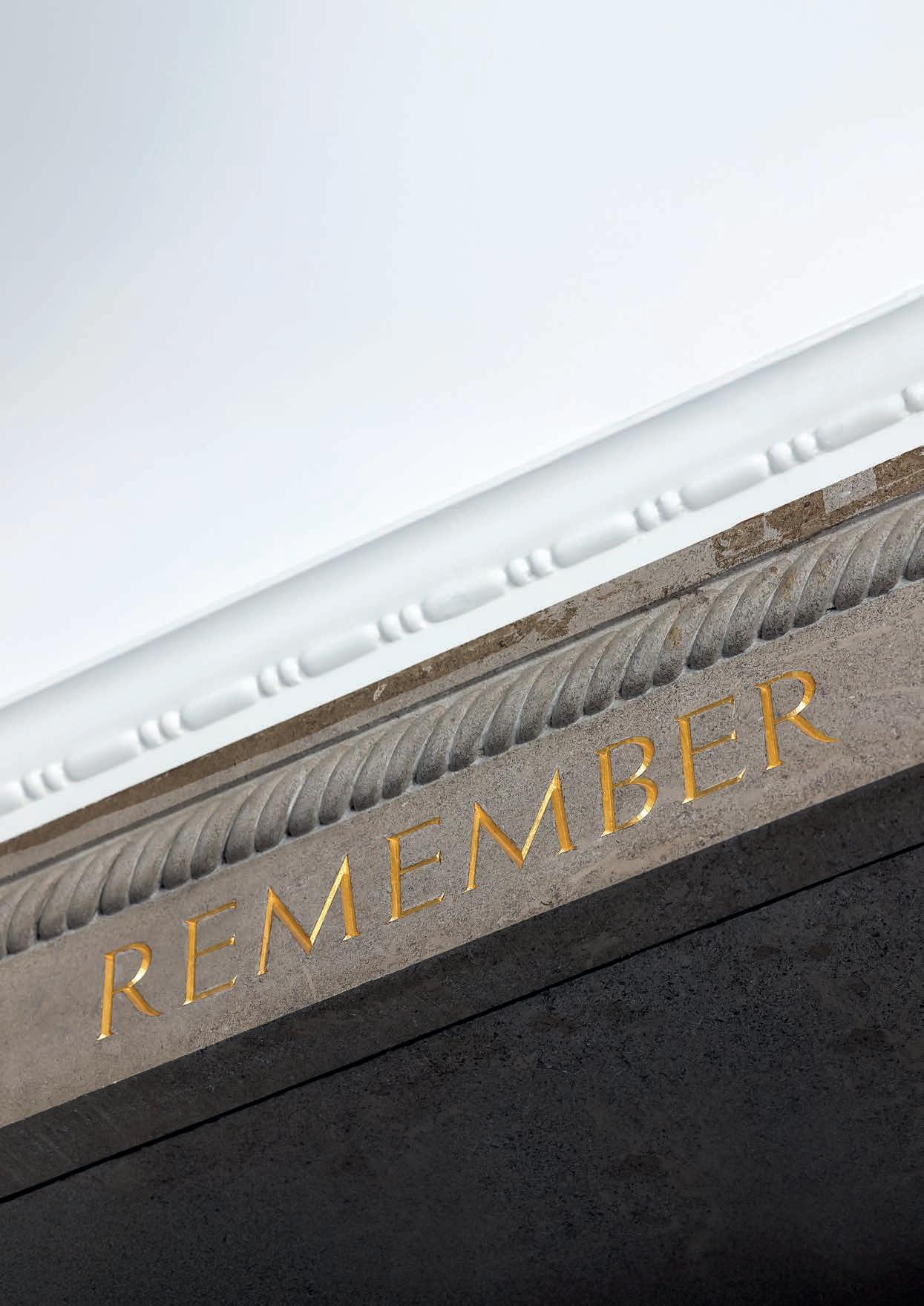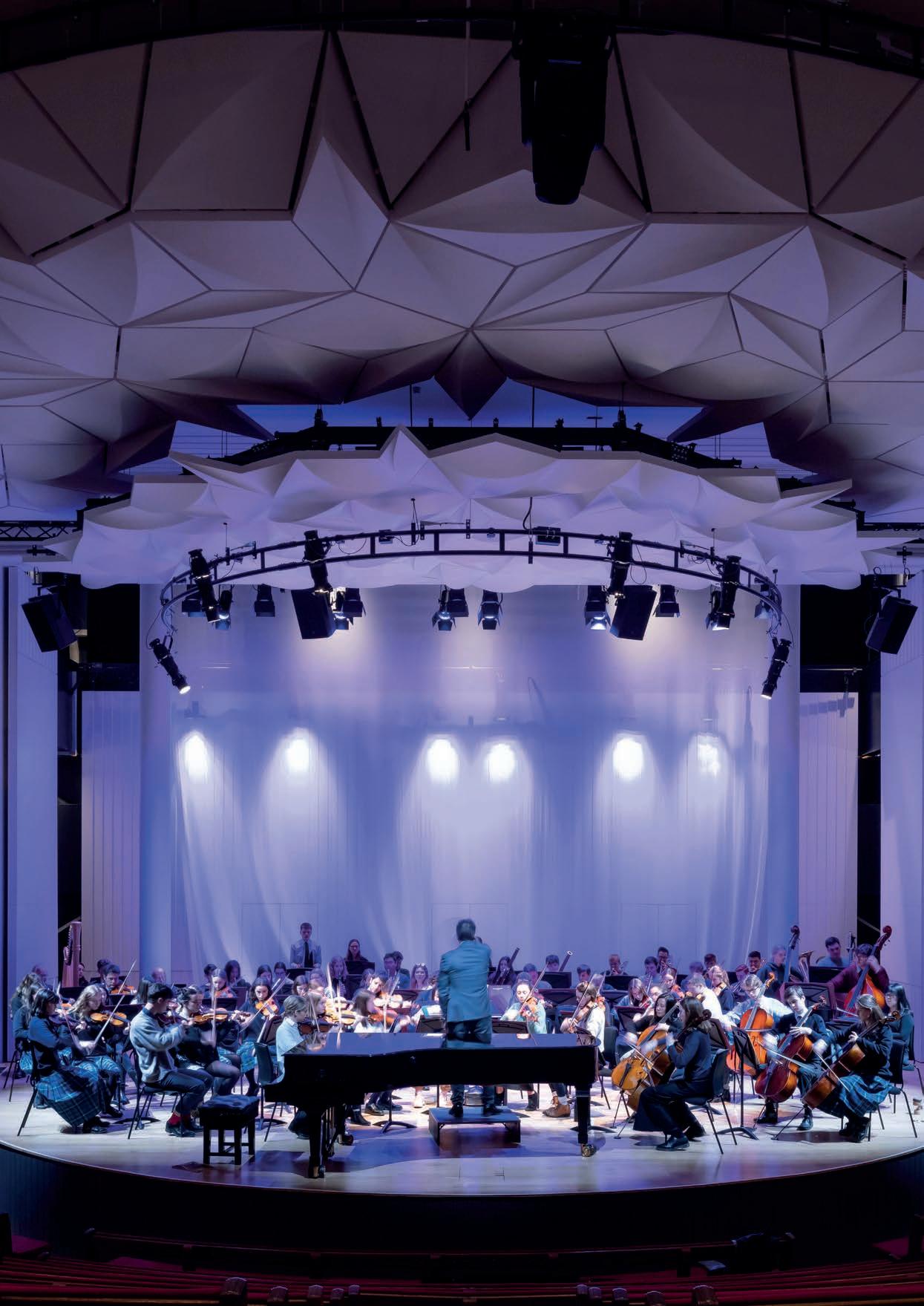
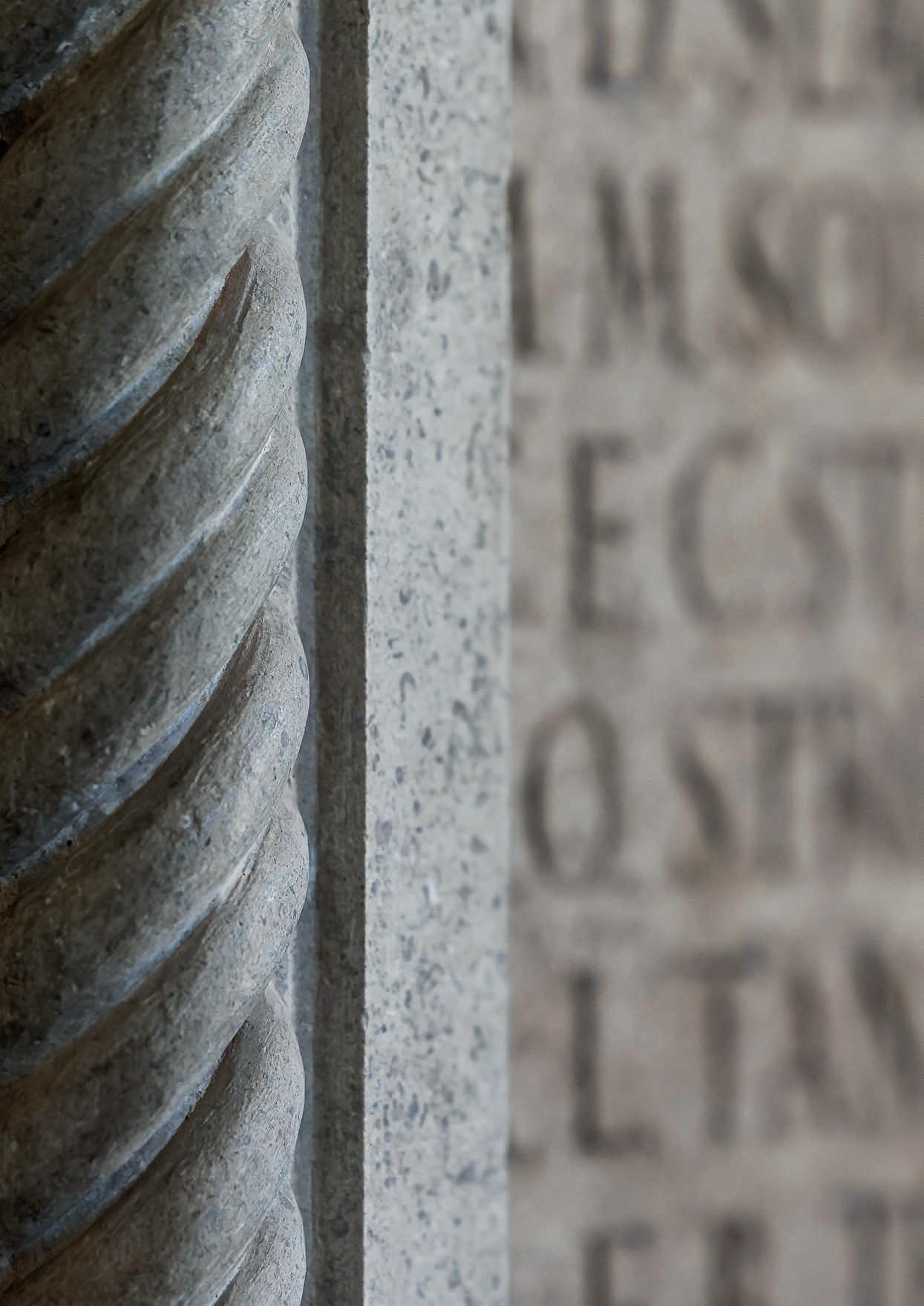
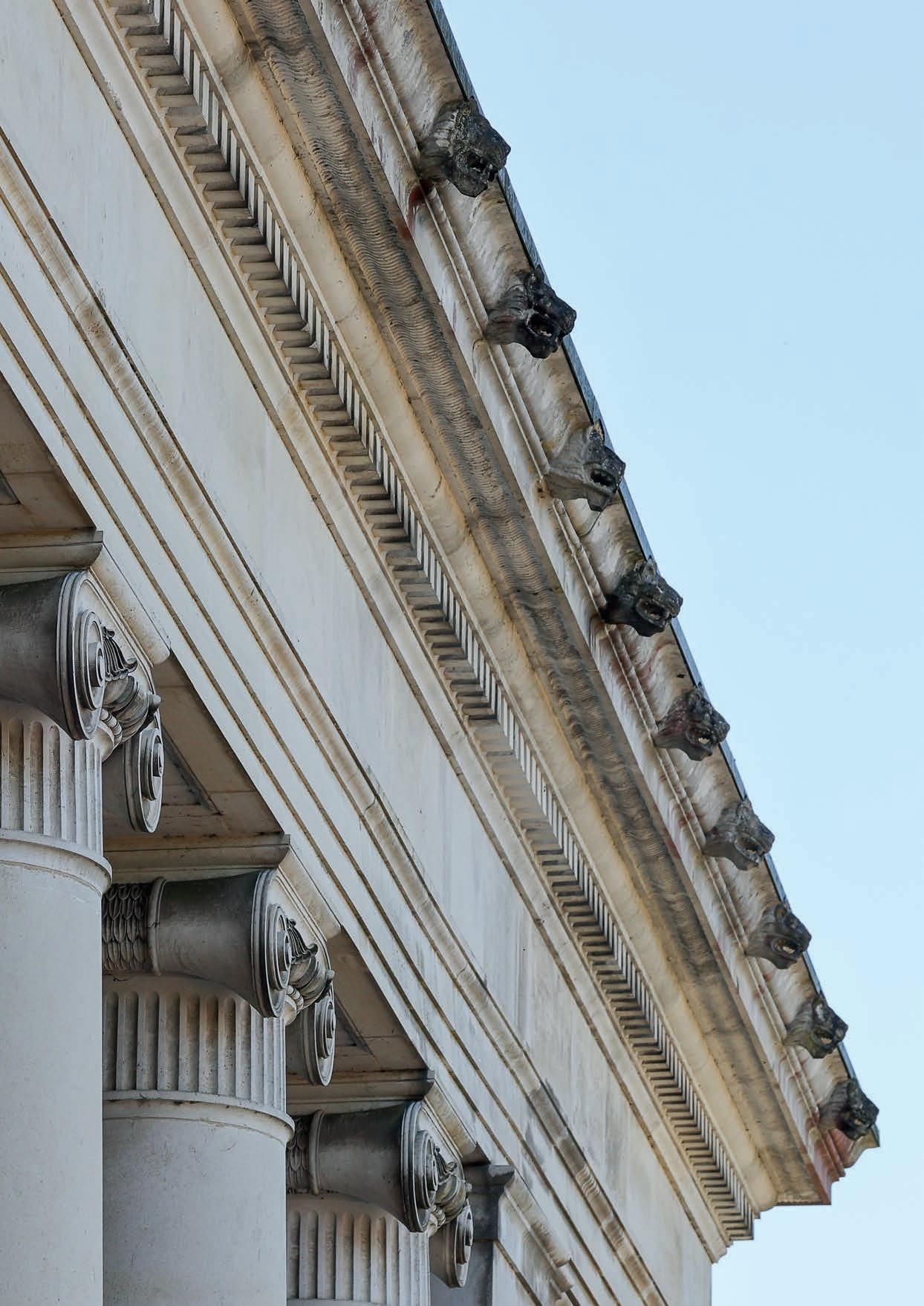




One hundred years ago Marlborough College’s Memorial Hall was completed. This book describes how the 749 former pupils and staff who lost their lives in the First World War have been remembered, and how a noble building emerged out of the grief felt by the bereaved.
The form of the building, the process of recording those who had died, and the financial difficulties presented by the scale of the work resulted in many challenges. The Memorial Hall honours the fallen but at the same time it celebrates life. It was designed to be of practical use to the school as well as a solemn reminder of the war. These pages give an account of some of the activities and events which have taken place within its walls.
The Memorial Hall reflected the ambition and strength of Marlborough’s community in the way that it underlined the importance of duty and service. It was the result of the great initiative shown by so many to honour the fallen and console a generation which had lost so much. William Newton, the Old Marlburian architect, designed a building which speaks so eloquently about the need for order and reflection in the post war years. Its reinterpretation of classicism also embraced new technology. Since the Hall’s restoration in 2018, commemorating the hundredth year of the ending of the conflict, it has come to be regarded as a world-class concert hall and auditorium.
Marlborough is so fortunate in its architectural heritage, and this building is particularly valuable because the messages which it conveyed in 1925 are still expressed today: the importance of community, ambition, service and initiative are embedded as the College’s four key values. The Memorial Hall, with its location planned so carefully by the Chapel, serves to remind everybody at Marlborough what should be learned from the past and how life should be lived today.

Louise Moelwyn-Hughes Master (2018- )
Leslie Richmond (PR 1902-05) was the first Old Marlburian to die in the First World War. His photograph in the Roll of Honour shows a fine young man in the uniform of a lieutenant in the Gordon Highlanders. We know little more about him other than that he came from Crieff in Scotland and was in the XV in 1904. He was killed in action during the retreat from Mons on 23rd August 1914 at the age of twenty-six.
There were to follow 748 more former pupils and members of staff (teaching and non-teaching) who were to ‘make the ultimate sacrifice’, as the language of the time often put it. Their names, expertly carved along the back wall of the Memorial Hall, ‘cut in Ancaster stone by Mr Lawrence Turner (C1 1877-81), and faintly tinted grey and red’ (as described by Darcy Braddell in The Architectural Review of June 1925), are the simplest of memorials. Yet behind each name lies a person and a story, some as in the case of Leslie Richmond only thinly known, others more fully lauded and remembered.

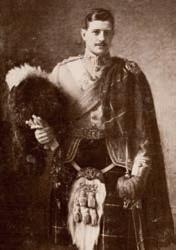
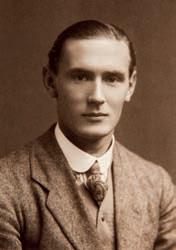
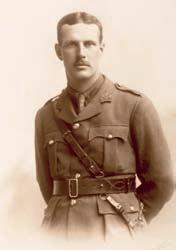
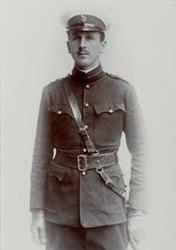
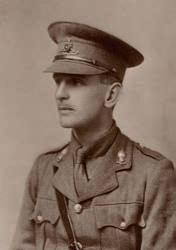
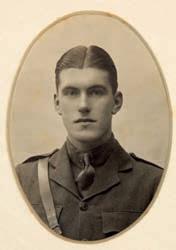
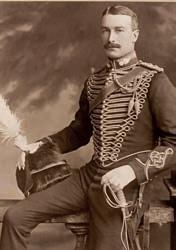
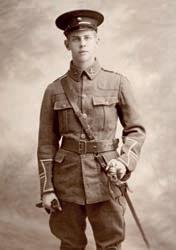
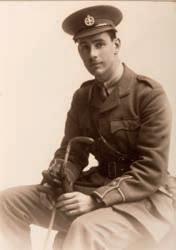
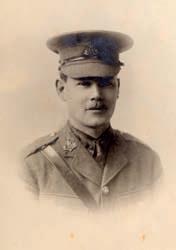
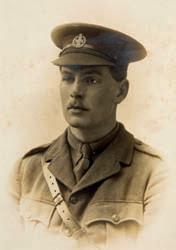
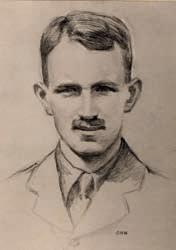
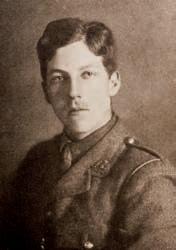
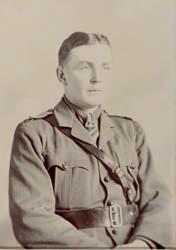

First row left to right:
Leslie Richmond (PR 1902-05)
Sidney Woodroffe (B1 1908-14)
Kenneth Woodroffe (B1 1906-12)
Second row left to right:
Leslie Woodroffe (B1 1898-1904)
Edward Bradbury (SU 1894-98)
Keith Rae (CR 1912)
Third row left to right: Freeman Atkey (CR 1908)
Harold Roseveare (B3 1908-14)
Charles Hamilton Sorley (C1 1908-13)
Fourth row left to right: Bob Giffard (CO 1898-01)
Guy Devitt (LI 1906-10)
Jack Lambert (CO 1906-08)
Sydney Giffard (CO 1903-07)
Fifth row left to right: Edmund Giffard (CO 1901-05)
Francis Dodgson (B3 1904-07)
Hugh Butterworth (C2 1899-04)
Charles Prangley (C1 1911-15)
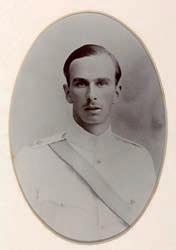

Best known perhaps are the Woodroffe brothers, three remarkable young men who served their school and then their country with considerable honour and bravery. All three were Senior Prefect, performed with great credit in all major College sports teams and in the Officers’ Training Corps (OTC), and won scholarships to Oxbridge. For his part in the fighting at Hooge on the outskirts of Ypres on 30th July 1915, Sidney (B1 1908-14) was to be posthumously awarded the Victoria Cross. In the early hours of that day the Germans pushed the British back to their second line of trenches in the
first recorded use of flame-throwers. At the heart of the British defence of this position was nineteen-year-old Second Lieutenant Sidney Woodroffe of the 8th Battalion, Rifle Brigade, in command of two platoons. After close-quarter fighting which lasted most of the morning it was only weight of numbers that forced the British to retreat.
Under intense fire Sidney succeeded in bringing what was left of his men back safely across almost 200 yards of open ground, and down a heavily shelled communication trench. He then led them back again in

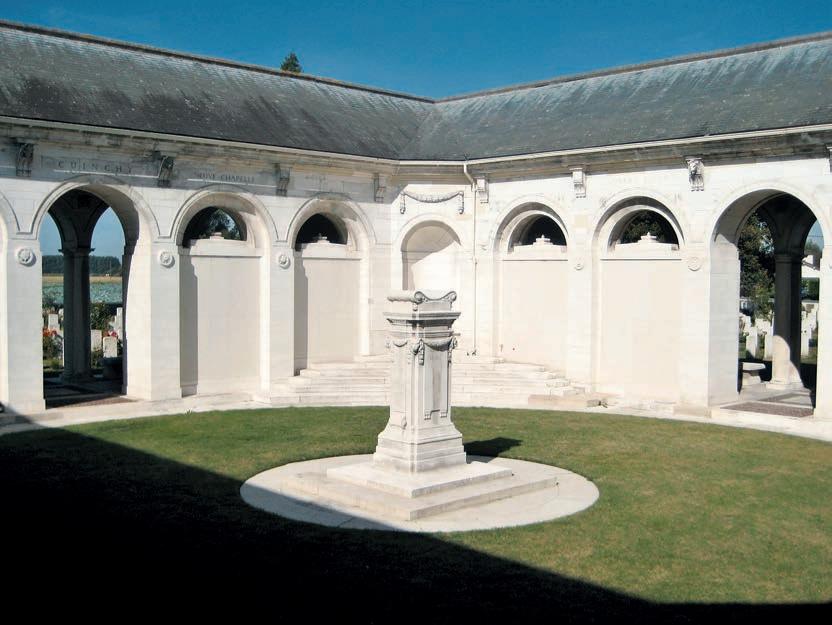
a counterattack with inadequate artillery cover and against a German position that provided the enemy with a dominant field of fire. Despite these odds Sidney managed to get some of his men to the German barbed wire in front of their trenches, only to be shot in his attempt to cut that wire to facilitate the attack. In his tribute, the Master concluded with these words: ‘A finer and more manly gentleman Marlborough has not bred, and his name will shine in letters of gold on her roll of fame.’
The eldest of the three, Leslie (B1 1898-1904), who had become a schoolmaster at Shrewsbury, was severely wounded in the same action, but returned to the front less than a year later, only to die of shell-fire wounds on 4th June 1916. Of Kenneth (B1 1906-12), the middle one of the three, who was the first to die, killed in action in the attack on Aubers Ridge in May 1915, it was said in tributes in The Marlburian that ‘Few boys combined so many gifts of scholastic ability, athletic prowess and personality. Open, genial and unassuming, yet with the power and will to assert himself in School and House, he was a great force here’. The same could have been said of both Sidney and Leslie. On the news of Leslie’s death The Marlburian reported: ‘The sympathy of the whole Marlburian world will go out to Mr and Mrs Woodroffe in this final loss; they offered all and alas! they have lost all.’
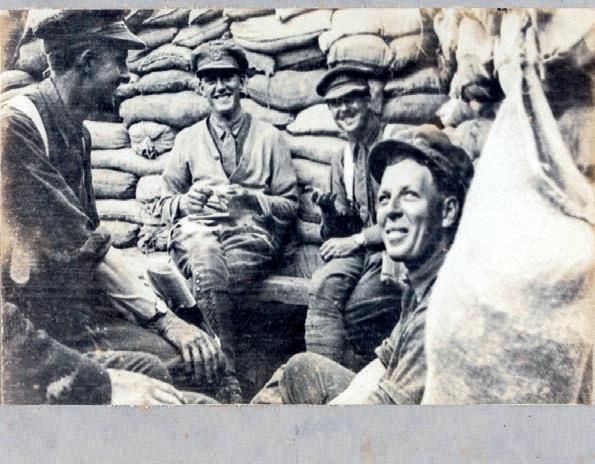
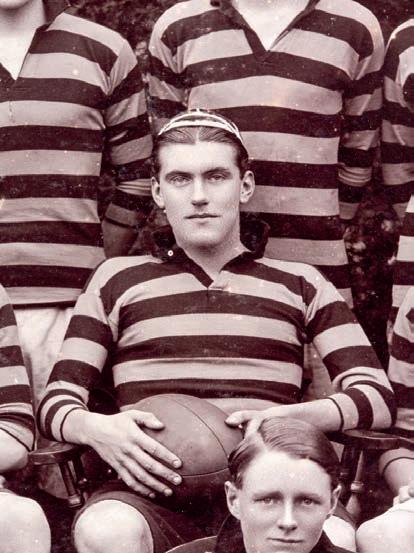
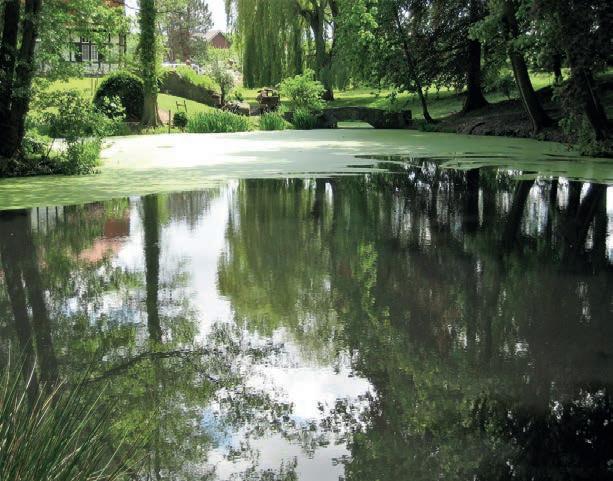
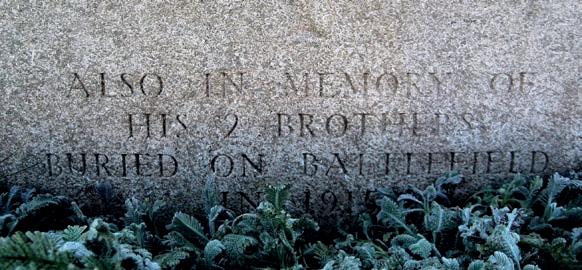
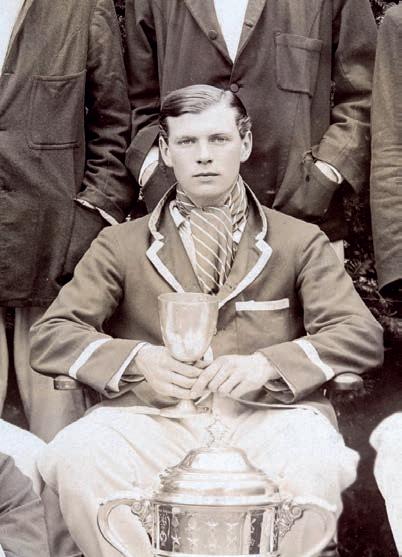
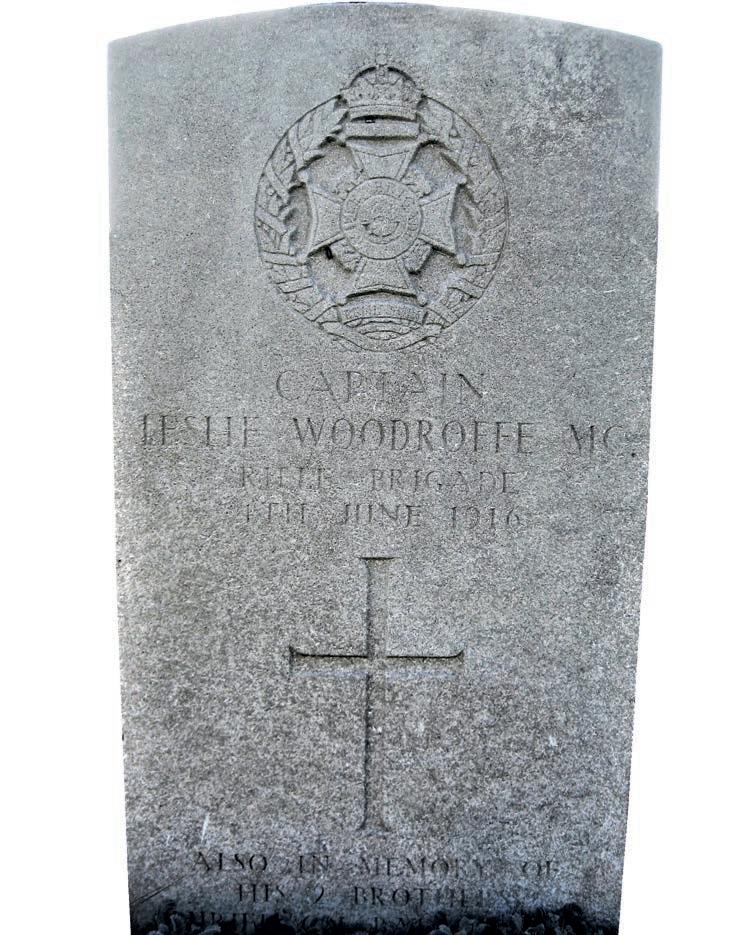
Sidney was one of three Old Marlburians to be awarded the Victoria Cross in this war. One, Charles Foss, survived the war and went on to become aide-de-camp to King George V before retiring, and then Colonel commanding the Bedfordshire Army Cadet Force (ACF) during the Second World War. The other posthumous Victoria Cross was awarded to Edward Bradbury (SU 1894-98) – the citation barely does justice to the remarkable bravery of this man: ‘for gallantry and ability in organising the defence of L Battery against heavy odds at Nery’. On 31st August 1914 the brigade to which L Battery was attached found itself heavily outnumbered against a surprise German attack. Shouting
‘Come on! Who’s for the guns?’ Bradbury led the charge out of cover into the open to bring the guns of L Battery into action. Among the men who joined Bradbury at the guns was Lieutenant Jack Giffard (CO 1898-1901). The Germans had twelve guns bombarding the village, but the fire from Bradbury’s gun (soon the sole surviving one) was so severe and accurate that soon all the German guns were ranged on that one weapon, affording the British cavalry enough respite to organise themselves for defence and counterattack. Bradbury continued firing an estimated 160 rounds before reinforcements arrived, despite losing both his legs. He died from his wounds that same day and is buried in the village cemetery at Nery.
In the same action that Sidney Woodroffe died, Keith Rae also lost his life. Keith was one of six beaks who died in the war. This twentyfive-year-old scholar of Balliol College Oxford had arrived to teach at Marlborough only two years before the outbreak of war. Imbued with a strong sense of Christian socialism, his faith clearly sustained him through the challenges he faced out on the front. In a letter he wrote to fellow member of Common Room chaplain Ernest Crosse only a couple of months before he died he describes attending to two wounded comrades ‘under a rain of shells’ as ‘the happiest moment of my life. We were all just on the brink of the next world’. A victim of the Germans’ liquid fire attack that
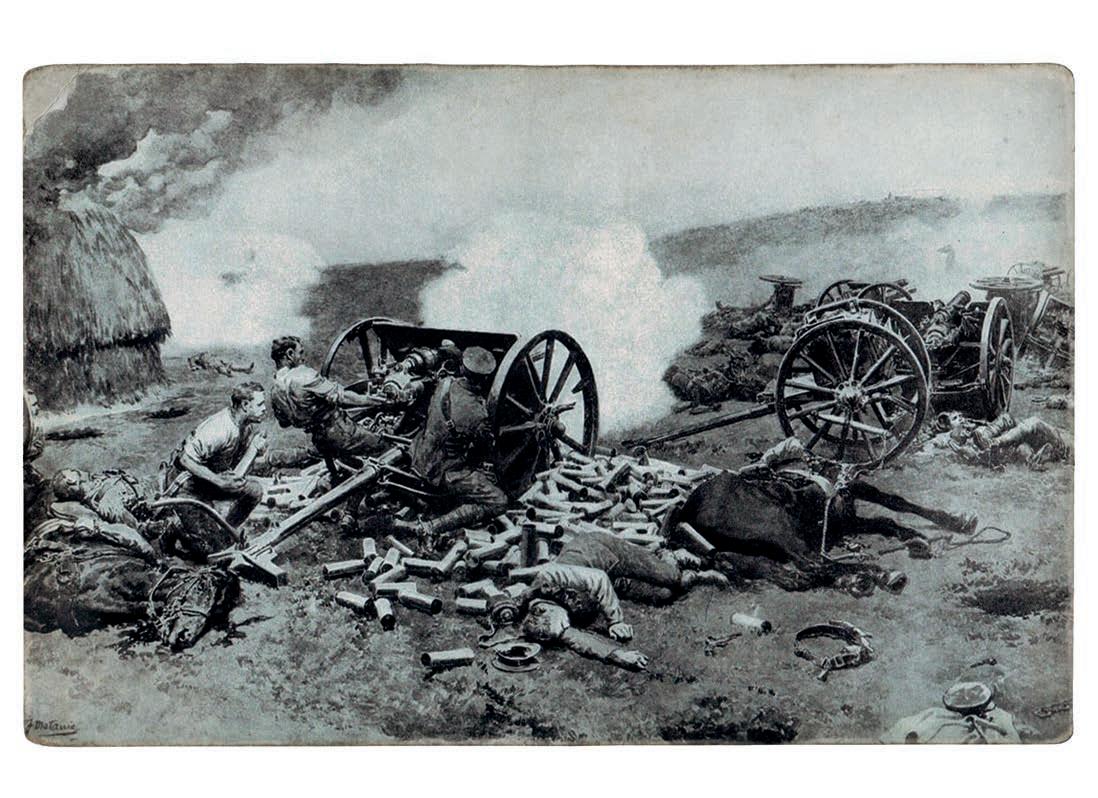
initiated the action at Hooge on 30th July 1915, a memorial to him that stands on the edge of the Sanctuary Wood cemetery describes him as ‘Christ’s faithful soldier and servant unto his life’s end’. As with so many young men, former pupils or teachers, the idealism of youth was scant protection against the horrors of the industrialised warfare they were facing in this conflict.
Another scholar on the staff, this time from Pembroke College Cambridge, was Freeman Atkey, who arrived to teach at Marlborough in 1908. Described by his old tutor as ‘the best pupil I ever had at Pembroke’, he was the first beak to recognise the genius of Charles Sorley. Freeman agonised over joining the Army in September 1914 but found contentment in the comradeship of the trenches. Like many volunteer officers, he worried about proving himself in a setting so alien to his nature, but his coolness when in danger was never in doubt. He was killed by a sniper’s bullet a few days after the start of the Battle of the Somme in July 1916 and was much mourned by those he served with: ‘his loss is regretted by every officer and man in the battalion. He was absolutely fearless’. Sorley described him as ‘the sanest, humanest man in Common Room’, yet another rich talent snuffed out in his prime.

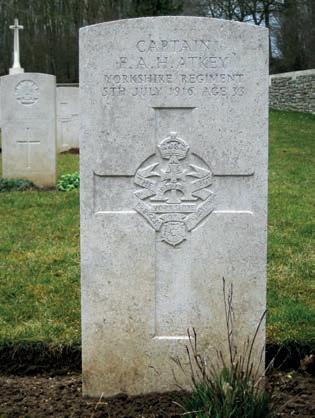
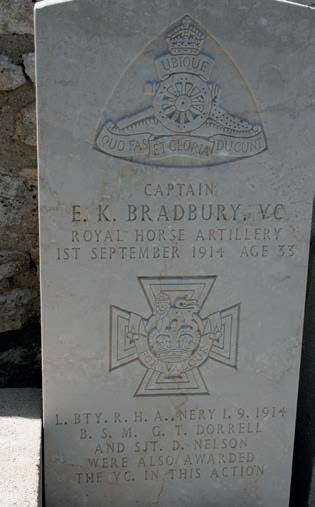
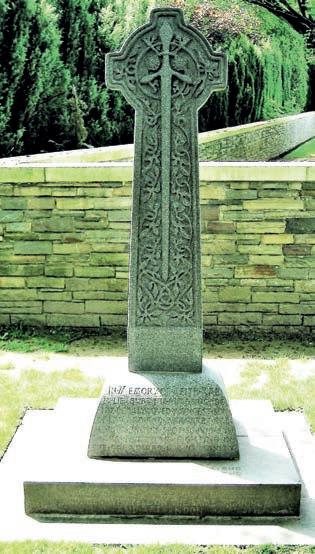
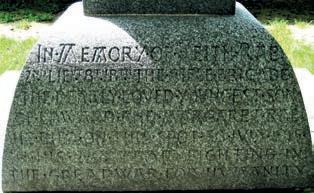
Charles Hamilton Sorley (C1 1908-13) himself had died some ten months before Atkey, killed in action on 13th October 1915 during the Battle of Loos. It is ironic that Marlborough’s greatest war poet should have died in one of the most pointless campaigns of a war whose pointlessness he had already depicted in his poetry. Lamented by Robert Graves as ‘one of the three poets of importance killed during the war’, Charles could be the awkward, maverick schoolboy genius, teasing beaks and Master, yet he mostly enjoyed idiosyncratic Edwardian Marlborough. Although he met his death aged only twenty, his letters and poems often display an extraordinarily mature judgement, alongside an innocent, youthful, impatient exuberance, as the letter he wrote to the Master of Marlborough less than a fortnight before his death shows:
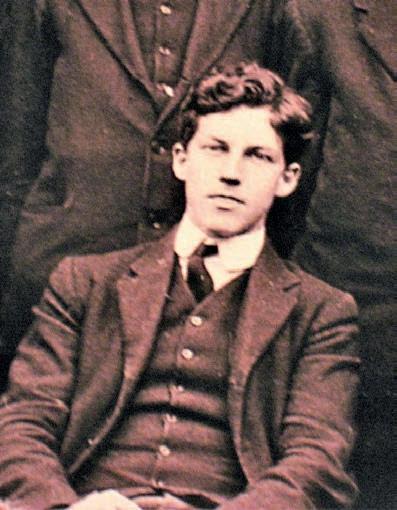
Above: Sorley in the Sixth Form
Right: Sorley after leaving College studying in Germany
Below: Sorley at Camp (seated second from right)
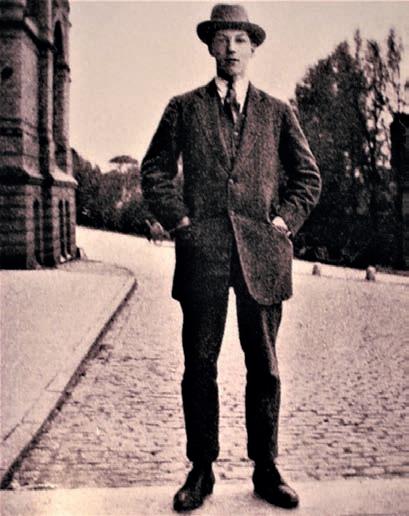
I have just time (or rather paper, for that is at present more valuable than time) enough to send a reply to your welcome letter which arrived with the bacon. The chess players are no longer waiting so infernal long between their moves. And the patient pawns are all in the movement, hourly expecting further advances – whether to be taken or reach the back lines and be queened. ‘Tis sweet, this pawn-being: there are no cares, no doubts: wherefore no regrets.
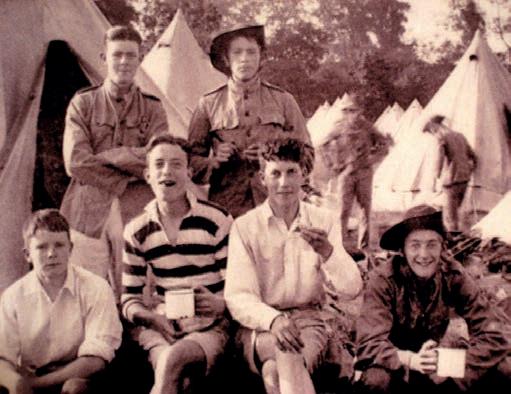
Later that month that same Master, having heard of Charles’ death leading his company in the attack, was writing in eulogistic terms of his ‘rich, glowing personality, his vivid imagination and his power of interpreting it in words, his originality, his intense human sympathy, his high ideals and his lovableness’. The pain and sorrow that those back in Marlborough must have felt as the list of names grew weekly is hard to imagine. In addition to the Master, there would be other beaks with close links to those who were now dying in increasingly greater numbers. Imagine the anguish of a Housemaster such as John
O’Regan (B3 1907-12) mourning the loss of a quarter of the boys who passed through his House during the five years of his housemastership. In a poem, To Those of My House Who Have Fallen in the War, published in The Marlburian in June 1917, he tried to come to terms with the shadows which now filled his room:
Stars that now shine high in Heaven above me, Set by God there, for you heard His call; Stars, you to the end shall light my pathway Through the night which comes to one and all.
Likewise, John Bain (CR 1878-19), Classical scholar, poet and Master in Charge of the Army Class, who penned over 100 verse tributes to all those who were killed whom he had taught or he considered close friends. They make poignant reading, such as the tribute he paid to Charles Sorley (Scholar, Downs Lover and Poet) after the latter’s death at Loos in October 1915:
Sweet, singing voice from oversea, Lover of Marlborough and her Downs, Sure now thy Spirit, wandering free, Is hovering near the Toun of Touns
There where the bents and grasses wave And winds roar round the Hoary Post –No wormy earth, no gloomy grave
Shall hold thy homing eager ghost.
And Sorley himself paid poetic tribute to the young man who had been his contemporary at Marlborough, Sidney Woodroffe, In Memoriam SCW VC :
There is no fitter end than this. No need is now to yearn nor sigh.
We know the glory that is his, A glory that can never die. Surely we knew it long before, Knew all along that he was made
For a swift radiant morning, for A sacrificing swift night-shade.
And Woodroffe also found himself mourning the death of his predecessor as Senior Prefect in a tribute paid to Harold Roseveare (B3 1908-14) published in The Marlburian:
Never shallow, always loyal, considerate and affectionate, his friendship was such as is rarely found …. In all our sorrow, we cannot but envy him. All too short though it was, his life, if any can, can truthfully be said to have touched perfection. A happier boy one cannot imagine.

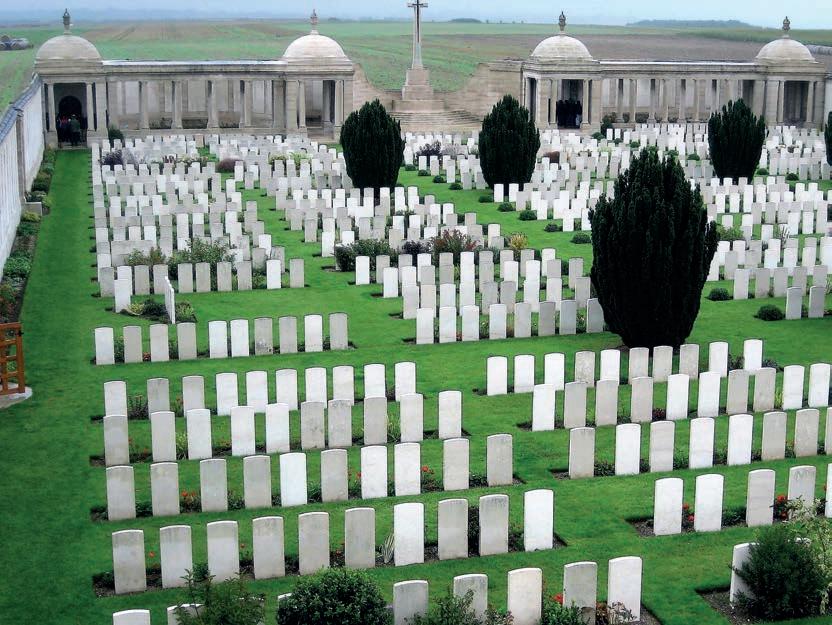
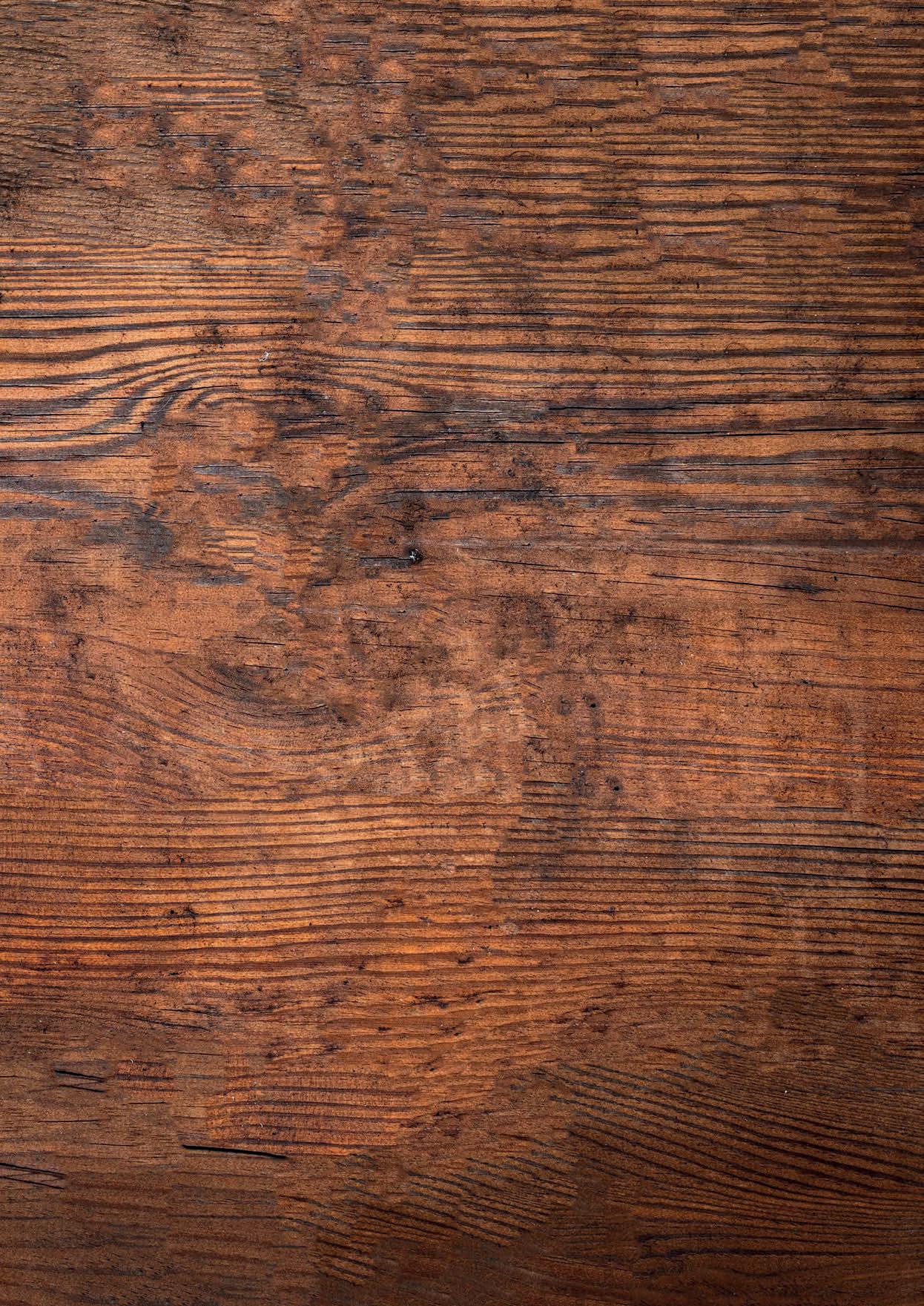

Another Marlburian family to suffer losses similar to the Woodroffes’ was the Giffard family, who lived at Lockeridge House a few miles to the west of Marlborough. Five of the six sons of Henry and Cecilia Giffard attended Marlborough College, three of whom were to die in the war. The first to be killed was field gunner Bob (CO 1898-01), serving as aide-de-camp to Major General SH Lomax, who was killed when the chateau being used as the headquarters building at Hooge was destroyed by German shellfire at the end of October 1914. It was this very ruin that was to become the focus of the fierce fighting in the summer of 1915 that was to take the lives of Sidney Woodroffe, Keith Rae, Guy Devitt (LI 1906-10) and Jack Lambert (CO 1906-08).
Bob’s younger brother Sydney (CO 1903-07) was also a gunner and took part in the Gallipoli landings in the early summer of 1915, where he found himself in charge of a battery after his commanding officer had been killed. Early in the morning of May 2nd, Sydney ‘was standing up in his dugout looking for targets and had just turned round to say that he couldn’t see any Turks, when a rifle bullet hit him in the left temple’. He was taken back to the beach, where his wound was dressed, but he died on a hospital ship that evening and is buried overlooking that same beach at the Lancashire Landing Cemetery.
The third to die, tragically only one day before the signing of the Armistice in November 1918, was Eddie (CO 1901-05). He also trained as a field gunner and served as a major in command of a battery for two years almost continuously, until dying of wounds on 10th November 1918. Shortly before his death, Eddie had noted in his diary that he thought the Germans were giving up the fight. One of his friends wrote memorably of his service that it exemplified ‘the spirit of willing endurance’. There is a rather heartening postscript to this Giffard story in that the youngest brother, Walter, who was unable to serve alongside his brothers, having lost the lower part of his left leg in a shooting accident as a boy, became a balloon observer in the Royal Flying Corps so that he could be useful to his brother gunners.
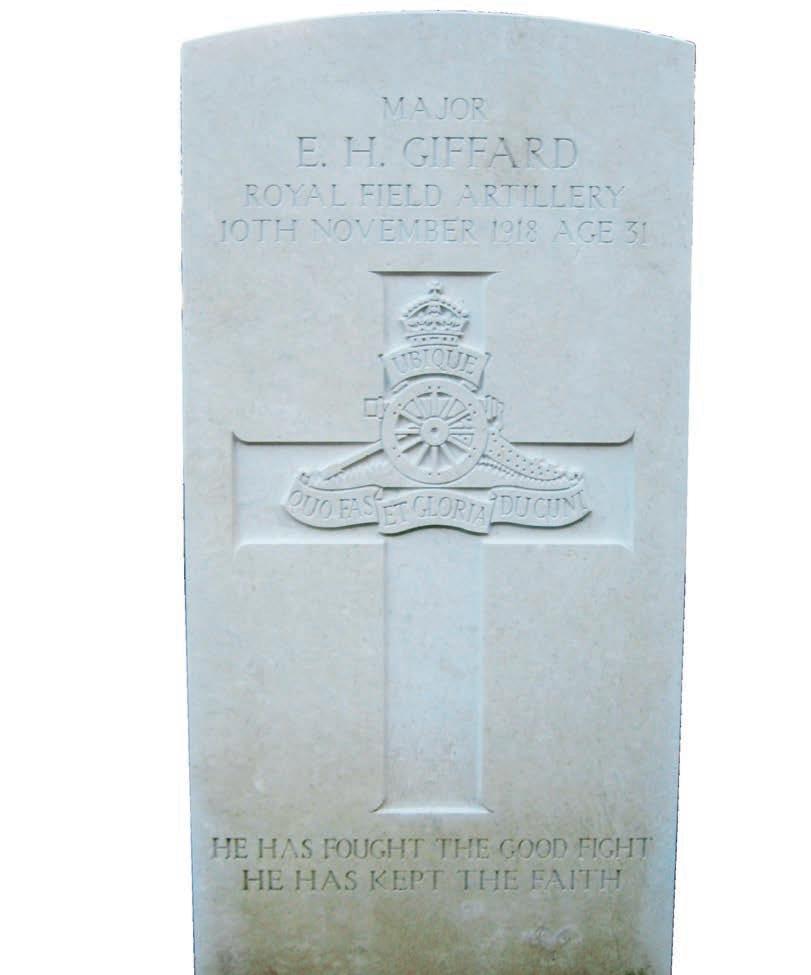
Like Keith Rae, who has his own individual memorial on the edge of the Sanctuary Wood cemetery outside Ypres, Francis (known as Toby) Dodgson (B3 1904-07) also has his own memorial in the middle of a cornfield on the edge of the village of Contalmaison. It marks the spot where Toby died during the early days of the Battle of the Somme. Toby had just got engaged to Marjorie, the sister of his great friend Humphrey Secretan, and their letters are full of plans for their wedding. Toby is first reported as missing, but later that month Marjorie’s worst fears were confirmed in a letter from the Battalion’s commanding officer. The story does not quite end there, however. Another Marlburian contemporary of Toby and Humphrey, Charles Fair, meets and falls in love with Marjorie. They marry on 18th September 1917, and shortly afterwards the story comes full circle. By the end of the year Charles is back at the front
line and on 4th December writes to Marjorie: ‘I forgot to tell you that, in my wild chase after the Battalion, I passed within half a mile of Toby’s grave. It may have been a little fanciful but, as I passed the village, I raised my hand in salute because I owe him you, darling, and nothing can ever repay that debt to his memory.’
Young men dying in the prime of life is the common factor in so many of the stories that lie behind the names along the back wall of the Memorial Hall, none perhaps more so than the story of Hugh Butterworth (C2 1899-04). ‘I, H M Butterworth, a man of peace, possessed of few virtues, but rather a good off-drive, am sitting in a very narrow packed trench, about to take part in one of the biggest battles in History.’ So wrote Hugh on 16th June 1915, in one of his many letters to his great friend John Allen. This particular battle may not have turned out to be ‘the big one’ for Hugh, but there is no doubt that he was correct in his
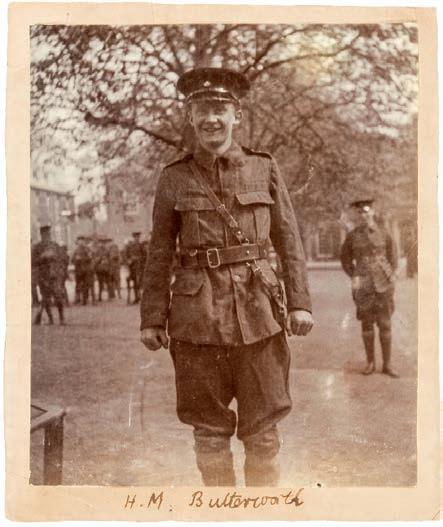
estimation of his sporting skills. He represented both Marlborough and Oxford University at cricket, racquets, football and hockey and was a brilliant athlete. An injury prevented him from fulfilling his potential, but when family circumstances took him to New Zealand he turned to coaching all sports to the young pupils at the Collegiate School, Wanganui. When war broke out, he returned to England out of a sense of duty to play his part.
The Battle of Bellewaarde Ridge raged for most of the summer of 1915, into the autumn and beyond. It was one of those many situations around Ypres throughout 1915-1917 where both sides quite literally slogged it out against each other to no particular purpose and with few tangible results. Into this cauldron stepped Hugh, bringing with him that love of life which characterises his every word and act. On 15th September Hugh writes: ‘We expect to lose about half the battalion and practically all the officers. I put the betting on my own survival at about three to one against, but it is all luck and I’ve got a sort of habit of scrambling through things.’ Hugh died ten days later. Earlier in July he had written: ‘I’m not particularly afraid of death, but I dislike the thought of dying because I enjoy life so much. I fancy that when we warriors fetch up at the Final Enquiry they’ll say, “Where did you perform?” We shall reply: “Ypres salient.” They’ll answer, “Pass, friend,” and we shall stroll along to the sound of trumpets and sackbuts.’
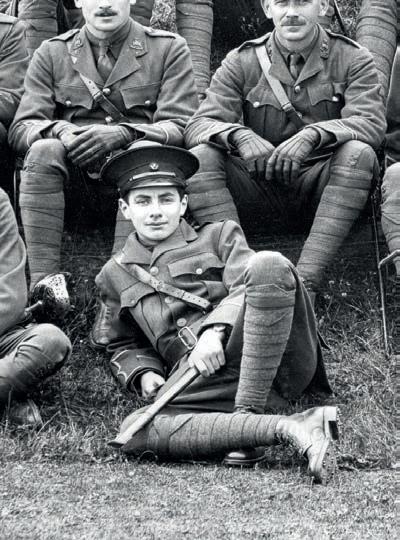

Ten years younger than Hugh and still at school when war broke out, Charles Prangley (C1 1911-15), or ‘Doox’ as he was known at school, does not appear to have had much ability in sports, but he showed an early interest in the Army, and by the time that he left in 1915 he had attained the rank of second lieutenant. He gained a commission in the Lincolnshire Regiment and was ordered to report to Tynemouth for training. His arrival in France coincided with the Battle of the Somme, and he was thrown into combat straight away. He died on Monday, 25th September 1916, on the opening day of the Battle of
Morval, one of the 174 officers and men of the Regiment lost that day, being killed instantaneously by a shell splinter. After his death, his former headmaster wrote of him:
‘I picture the boy, as I write, slight, delicate, refined, with a certain wistfulness in his eyes; in appearance, he was little more than a child, but he had a man’s soul and did a man’s deeds.’
Doox is also commemorated in a most remarkable illuminated missal, decorated in his memory by a friend of the family, who was commissioned by his father, Rector
of St Mary’s in Bexwell, Norfolk. The calligraphy is astonishing, but the real beauty lies in the decoration, which appears on every page and tells the short life of Doox. On the dedication page appear the coats of arms of Marlborough and Jesus College, the badge of the Lincolnshire Regiment and the banner of France. On subsequent pages, there follow drawings of the font at which Doox was baptised; of St Mary’s, Bexwell; of St Margaret’s, Lowestoft, which Doox would have attended from his preparatory school; of Marlborough College Chapel; of Jesus College, where he had secured a place; and entwined within ears of wheat, grapes and vines is the name Doox. The cover of the book is of wood taken from a tree in the rectory garden, and, most poignant of all, on the front cover is a gold cross formed from his mother’s wedding ring.
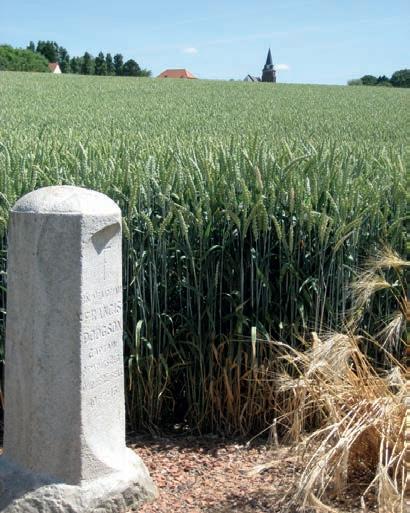
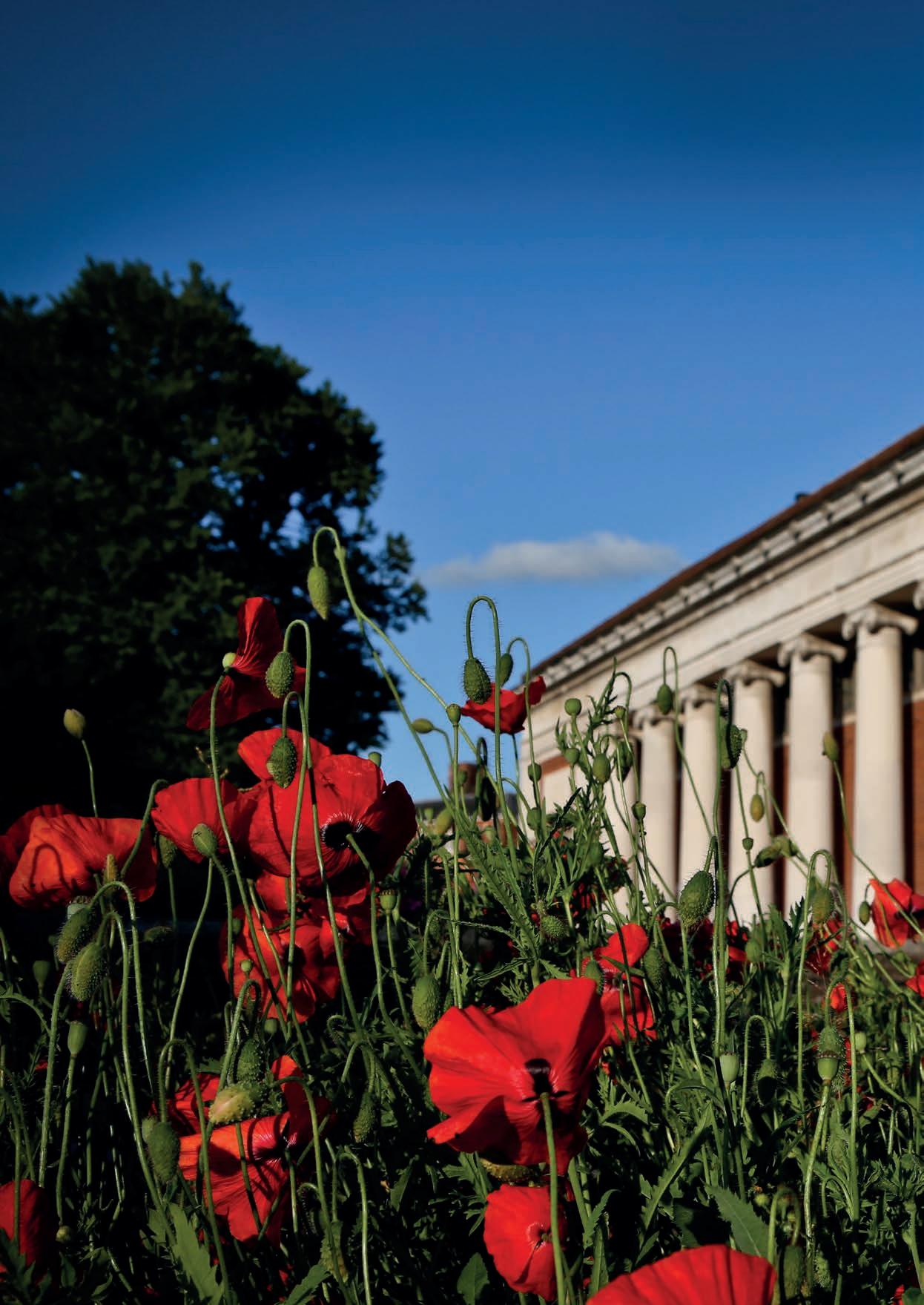
Not every one of the 749 Old Marlburians who died in the war left such a rich legacy, but each and every one is individually remembered and honoured in the hall that was built to commemorate them, and in the Roll of Honour. The inscription at the base of a white cross raised in memory of Doox on the boundary of Bexwell parish serves as an appropriate epitaph for all of them, and a message to us 100 years on:
All that we had we gave All that was ours to give Freely surrendered all That you in peace might live. In trench and field and many seas we lie We who in dying shall not ever die If only you in honour of the slain Shall surely see we did not die in vain.
David Du Croz (CR 1996-07) former Head of History
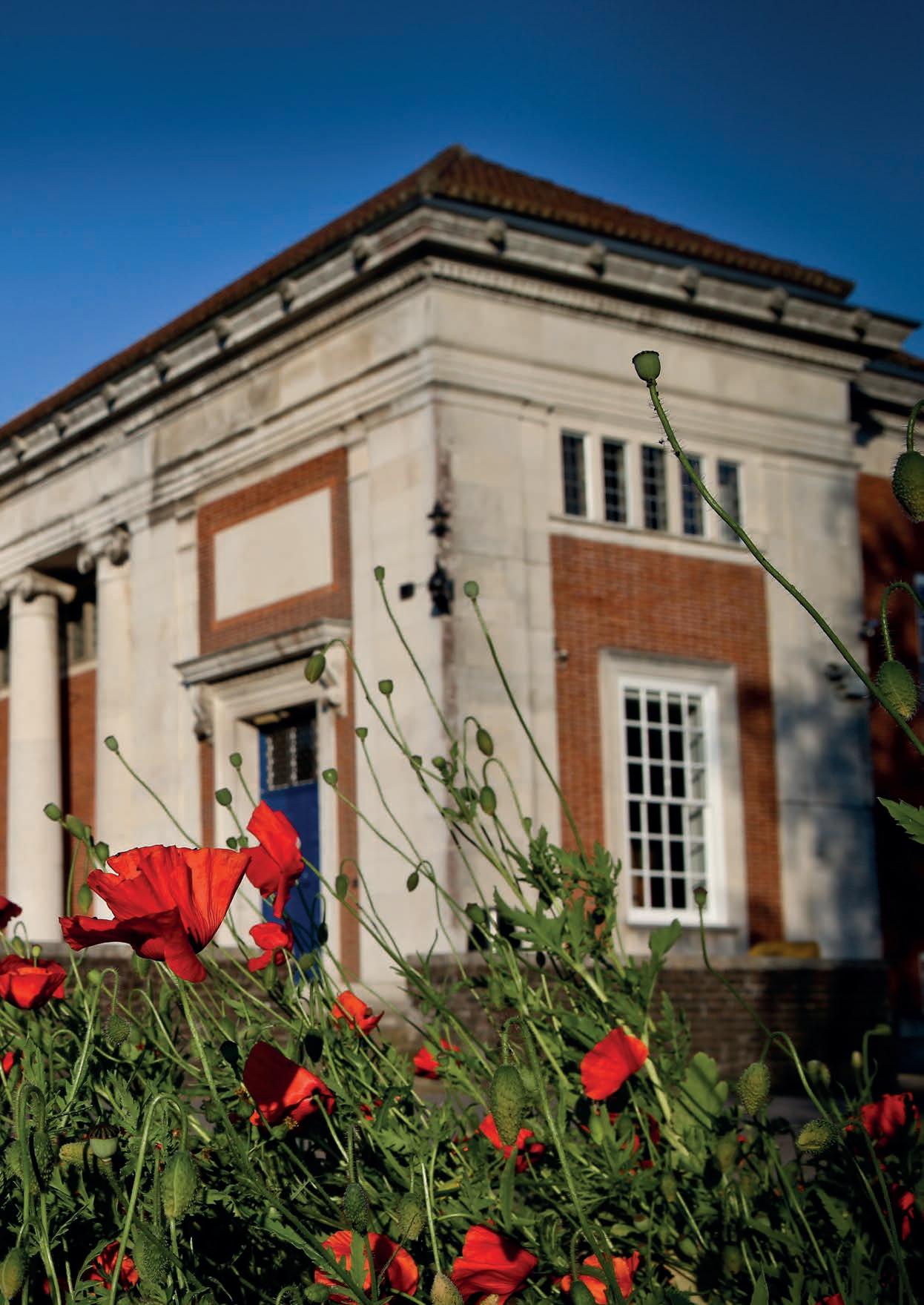

Long before the First World War came to an end, ways of commemorating the fallen were already being discussed widely. The total loss of lives in the British Empire was well over a million, and the social and psychological damage caused found a healing expression in a desire to make memorials to honour those who had died.
There were uncertainties after the war regarding both the financial outlook and the availability of construction materials, but many ambitious projects were commenced. Most other forms of building project ceased and the architectural profession, with little other work available, produced a rich array of ideas to honour the lives that had been lost. Apart from regimental and Boer War memorials, war memorials were, as Clive Aslet has observed, a previously unknown building type, and ‘with no precedent to follow, the memorials to the dead – along with the ceremonies that went with them – had to be invented afresh’.
Schools comparable to Marlborough each lost approximately the same number of former pupils as the size of their annual pupil community. Almost one in five of those who enlisted died. Across the country, innumerable crosses, gateways, obelisks, panels, plaques, statues and windows tell the story of the fallen, and some schools erected
commemorative buildings which, in addition to being important reflections of the catastrophe, are remarkable works of art and architecture. Collectively, they form an important part of the nation’s heritage, but they are not as wellknown as they should be, even although many of them were the work of the country’s most famous architects. Perhaps the finest of these memorials is Winchester College’s cloister of 1924 completed to designs by Sir Herbert Baker, the great imperial architect who had collaborated with Edwin Lutyens at New Delhi and with work for the Commonwealth war cemeteries. Baker’s fine neo-Jacobean war memorial building for Harrow was
completed in 1926, while Haileybury waited until 1932 before Baker’s great domed dining hall was finished. The largest memorial in the country was Charterhouse’s Albi Cathedral-inspired chapel, completed to designs by Giles Gilbert Scott in 1927. Numerous other fine memorial chapels were also built, for example, at Barnard Castle, Bishop’s Stortford, Bromsgrove, Dean Close, Ellesmere, Monkton Combe, Durham, Oundle, Oakham and Sutton Valence. Many existing chapels were enhanced, notably those belonging to Brighton, Epsom, Rossall, Sherborne, Tonbridge and Wellington, and above all Lancing, where the famous chapel acquired a 100-foot-long cloister to designs by Temple Moore.
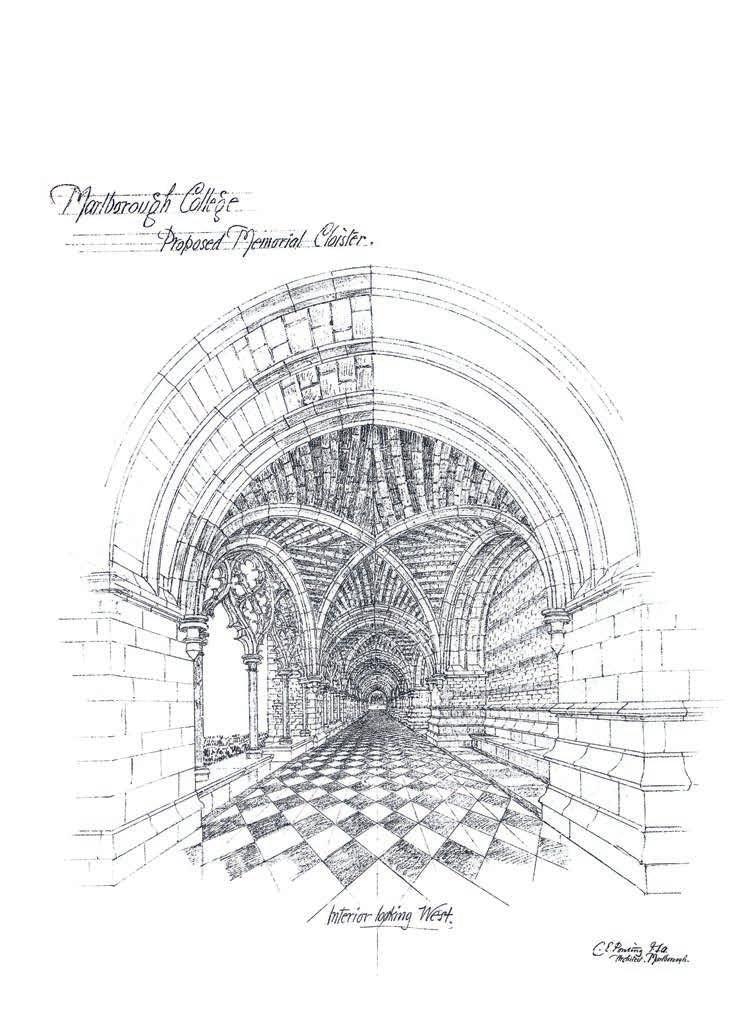

Cheltenham College and Sedbergh also built cloisters. At Rugby, Sir Charles Nicholson built an impressive vaulted memorial chapel in pale stone to stand beside the main chapel. Ernest Newton added a richly decorated octagonal memorial shrine to the chapel at Uppingham, in addition to designing the school’s fine memorial hall. Clifton and Radley erected noble memorial gateways by Charles Holden and Thomas Graham Jackson, and the beautiful library by Ernest Gimson was completed at Bedales. Eton’s memorial consisted of bursaries, a great wall of bronze plaques and the Libro d’oro in the memorial chapel, which records the 1,158 boys and masters who died.
Apart from Eton, no school suffered more casualties than Marlborough. The loss of 749 lives resulted in a sense of urgency to commemorate the fallen and, before this dreadful total was reached, in April 1917, a meeting of Old Marlburians agreed there should be a memorial building and a fund for the education of the children of Marlburians who had died in the war. Consideration was given to a cloister to designs by Charles Edwin Ponting, a distinguished local architect who had already worked for the College. This would have run along the south side of the Chapel, and it was noted that the building’s original architects, George Frederick Bodley and Thomas Garner, had considered a cloister here. There was even some discussion about establishing a clubhouse in London where Old Marlburians could meet. However, in October 1919, a committee met at the Central Hall, Westminster and voted 149-1 in favour of a speech hall. Many schools debated whether a memorial should have any function beyond remembering the dead, and

serve no utilitarian purpose at all, but the feeling at Marlborough was that any memorial should help to make the school a better place and there was a need for an assembly hall. There was ‘a strong preference for a Hall in the Amphitheatre style’, and it was felt the architecture should in some way to reflect the design of the C House, the early eighteenthcentury mansion in which the school had started in 1843. The committee also chose the site described as ‘the
water meadow below the chapel adjoining the Bath Road’. Just before the war this site had been rejected as a site for a new boarding house because of the challenges presented by building on a site with such a problematic water table, but it was felt that the difficulties presented could be solved by new developments in construction technology. Facing considerable financial uncertainties, the process of raising funds for a worthy memorial building began.


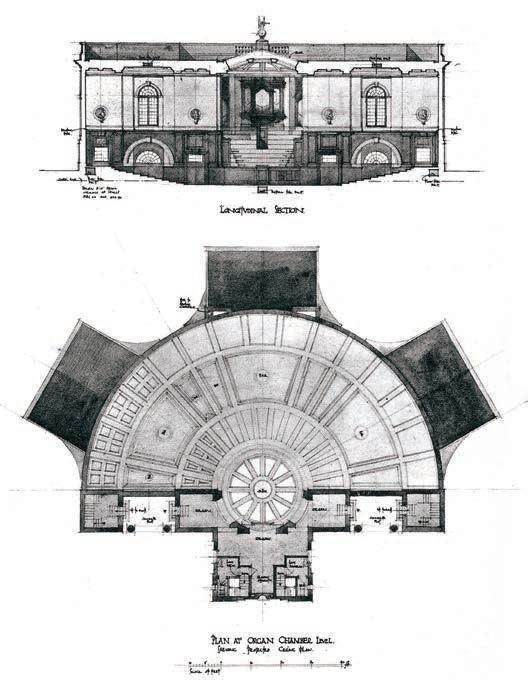
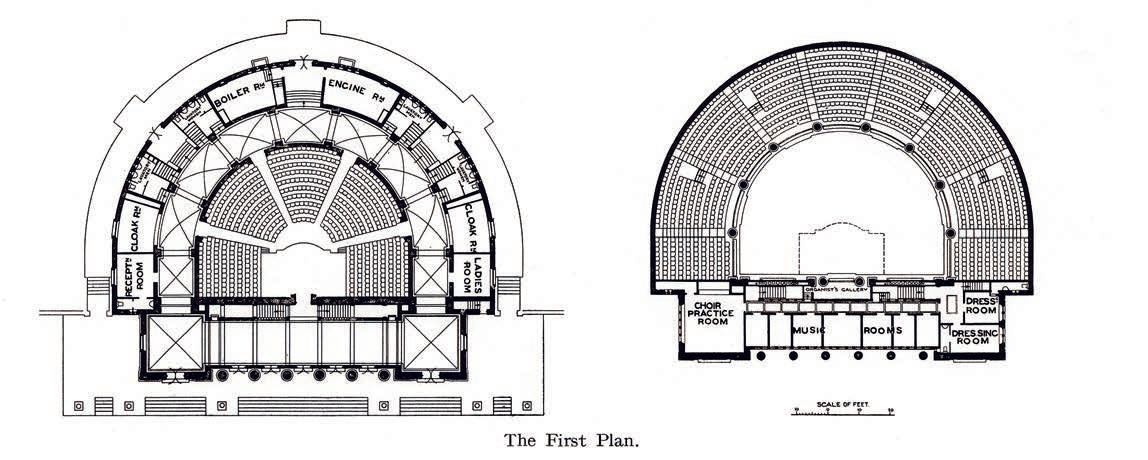
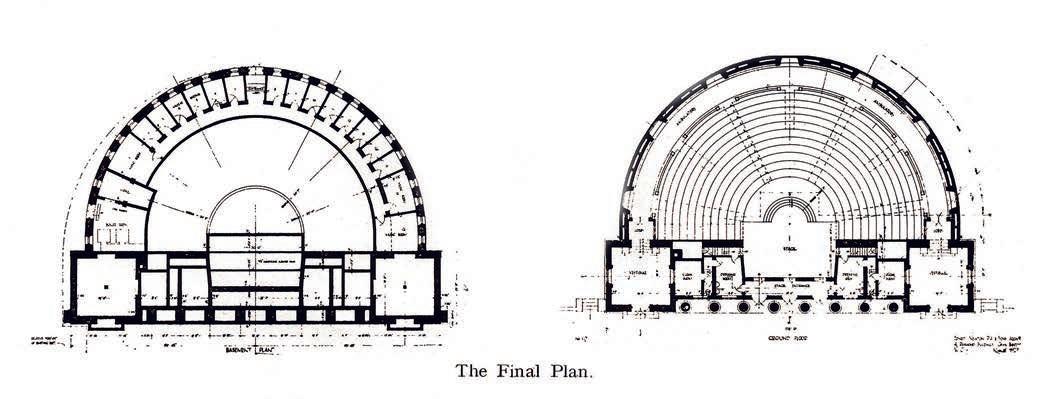
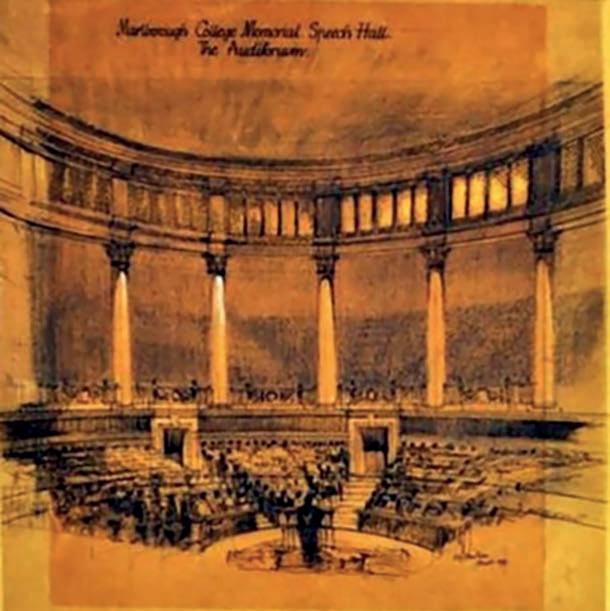
The Master, Cyril Norwood (CR 1916-25), and Ernest Burrell Baggallay (SU 1891-96), Honorary Secretary of the Marlburian Club, decided that the architect of the Hall should be an Old Marlburian, and appointed Royal Institute of British Architects President John William Simpson, future co-architect of the former Wembley Stadium, to assess the competition. To narrow the field, Simpson picked a selection of architects, who were invited to submit plans by 14th August 1920. The runner up was a design by the Manchester-based practice of Frank Dunkerley (CO 1883-85). His building was an amphitheatre with a circular stage, which was flanked by oak memorial panels and overlooked by an organ chamber. A shallow dome formed the central part of the roof and there were three radiating transepts with coffered barrel vaults. Dunkerley’s splendid design was illustrated and described in The Builder in April 1921, but the building would have been close to the Bath Road and blocked the view to the west from the Chapel, and it was felt that this vista should be preserved. Among the other designs
considered in the competition, one had a semicircular frontage towards the road, and another had a low-proportioned dome. The committee had no doubt favoured the amphitheatre form because of its suitability for speeches and assemblies and because of its associations with the Classical world, which was so prominent in the school’s curriculum. There are two interesting examples of this building type in other schools: The Speech Room of 1871 at Harrow, a fine semi-circular hall designed by the great Victorian architect William Burges, which combines Classical theatre with the romantic language of the Gothic revival; and the outdoor theatre at Bradfield known as the ‘Greeker’ – inspired by Frank Benson’s June 1880 Oxford production of the Agamemnon of Aeschylus – which was built in a disused chalk pit in 1890 as the result of an initiative of the headmaster, Herbert Gray.
The winner of the competition for the Hall, chosen in December 1920, was William Godfrey Newton (C1 1899-04), the son of the
celebrated Arts and Crafts architect Ernest Newton. To begin with, the designs for the Hall were under the name of Ernest’s practice. In many ways William was the ideal architect for Marlborough. He had helped with the memorial building work at Uppingham which his father had commenced in the last years of his life, and he completed the work there after his father died in January 1922. He was an architect who had experienced the war, having served in the Artists Rifles and been awarded the Military Cross. Like his father, he valued teamwork and the importance of careful attention to detail, and he enjoyed a distinguished career producing fine buildings for schools such as Aldenham, Bradfield, Radley and, above all, Merchant Taylors’ School, which moved to a new site at Northwood in 1933. He also became a well-known writer because of his work as editor of The Architectural Review, and he befriended some well-known artists during his professorship at the Royal College of Art, notably Eric Ravilious, who helped with the work at Merchant Taylors’.
For the Marlborough work, Newton gathered a group of craftsmen and builders, including the Old Marlburians Ambrose Heal (LSch 1885-87), Laurence Turner (C1 1877-81) and Esmond Burton (C3 1899-01). Heal was the distinguished early-twentiethcentury furniture maker whose family founded the eponymous store, and Turner was a celebrated mason and restorer of country houses who became president of the Art Workers’ Guild. Burton, another member of this famous guild, had learned his considerable skills as a stonemason from Turner. On the western wall of the Hall there is a tablet with the inscribed names of those who were involved in executing Newton’s building: all were deemed equal. Heal is described simply as a draper and Turner and Burton as carvers.
Newton’s first design for the speech hall was very ambitious, with seating for 1,500, a great columned ambulatory, a Baroque-inspired screen above the stage and a band of high clerestory windows above the auditorium. There was no proscenium arch because the building was not intended for theatrical performances. The ambulatory’s projecting walls framed the building’s northern façade with its six great columns, and a parapet which marked the level of the clerestory windows arose above the tiled roof. The Hall’s Classicism and its entrance front, set well back from the Bath Road, were designed to contrast with and complement the Gothic Chapel, which stands on the raised site above the Hall. To tackle the problems presented by the watery site and the construction of the concrete raft that the building required, Newton worked with Oscar Faber, the influential pioneering structural engineer, and his own elder brother, Harold Newton (C1 1896-00), a civil engineer.
Initially, the total cost of the work was estimated at £100,000, but it was believed that building costs would fall and the appeal for funds was delayed by a year. However, the costs did not fall as much as anticipated, with the re-estimated cost of the scheme being £70,000. It became clear that a simpler design
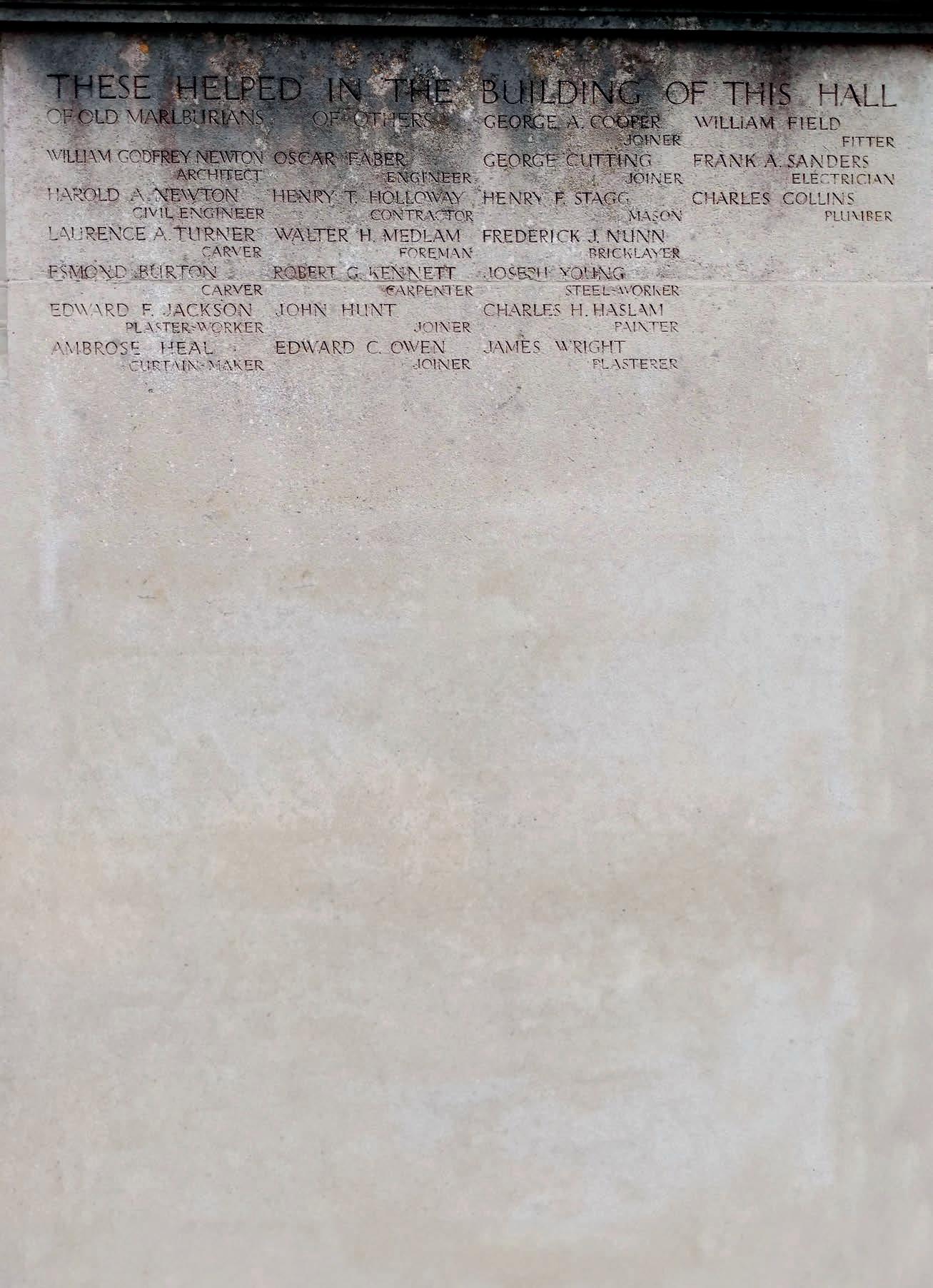
was necessary, but rather than commencing afresh, the plans were whittled down with great skill, so that in the finished building there was, as a critic observed, no trace to be seen of the pruning knife. Newton faced considerable challenges and disappointments as he worked on plans for the smaller building. He also had to manage an extended brief. As well as being a speech hall and a concert hall with rehearsal rooms, the building now had to be suitable for theatrical productions. A second design was replaced by a third, but the backstage arrangements remained awkward. It was hoped that the new building would seat 1,150, and there were discussions about whether the average boy required a 14-inch or 16-inch sitting space. In the end, when packed, the Hall could seat just over 1,000.
At Prize Day in 1922, Norwood declared that the cost of the building would be in the region of £40,000, although only £30,000 had been raised by that time. Regardless of the considerable worries about funding, work proceeded, and Norwood declared that the community was building ‘in faith’. In the end, this revised building cost £53,000. Today, the changes of course and the risks taken in the Hall’s construction seem remarkable, but they underline the great sense of urgency which drove
this work. The Memorial Hall was supposed to be opened in the autumn of 1924, and several celebrities were asked to be at the ceremony, including Marshal Foch. However, on 21st July, just two months before the great day, the committee responsible for building the Hall was alerted by Newton that the building appeared to be sinking, and cracks had appeared in some walls. When the design was changed it had been supposed that the lighter building would be secure on the foundations that had been intended for the grander first design, even though the weight distribution differed. The new design had been inspected and all was deemed to be well but now, to avert disaster, piles had to be sunk quickly on the southern side of the building and horizontal girders were inserted beneath it to assist the concrete raft on which the building rested, adding another £2,600 to the cost. Somehow, most of this sum was recovered by through making economies and Newton charged no fees for his work. The construction of the Hall must have tested the expertise of the distinguished contactors, Holloway Bothers of London, a leading company specialising in large-scale building and heavy civil engineering work, which was responsible for many important projects, such as the rebuilding of the Old Bailey and the Bank of England.
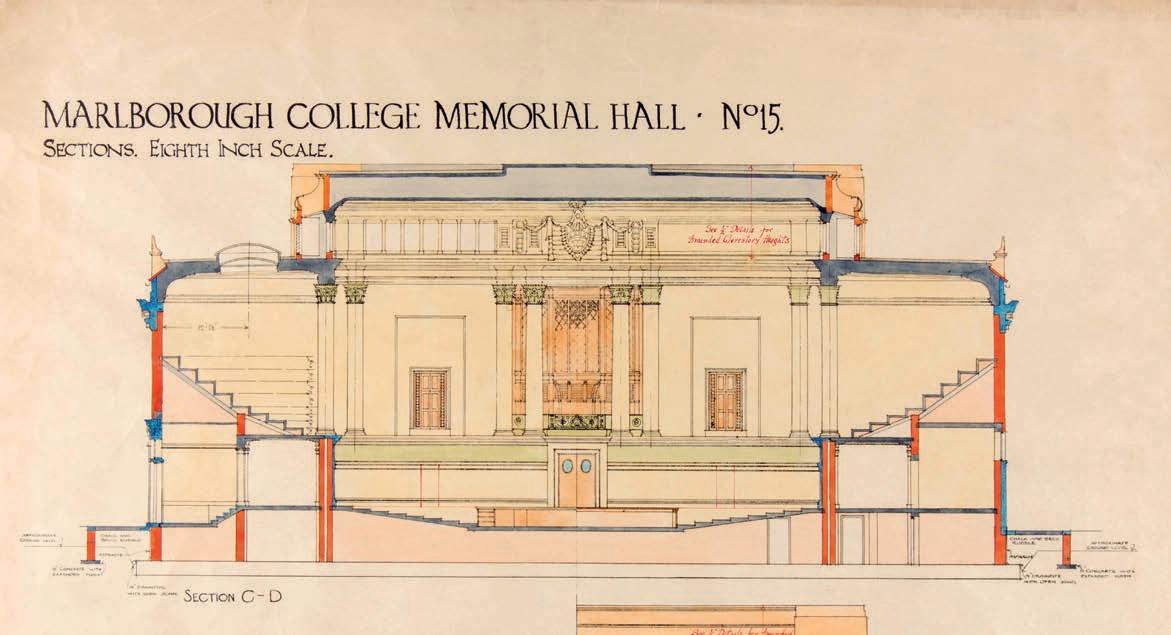
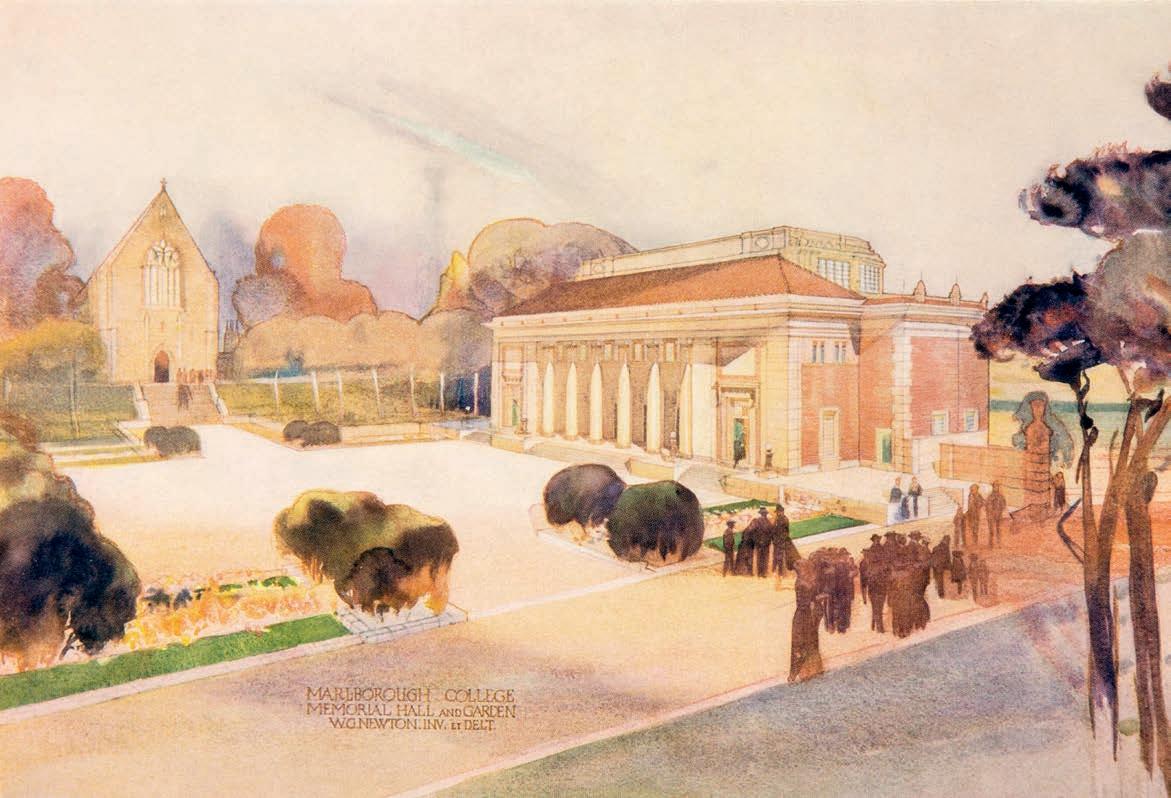
At last, the work was completed, and on 23rd May 1925 the Hall was opened by the Duke of Connaught and Strathearn. The legacy of the altered design and some of the original plans have lingered on in Marlborough’s oral history. Even in recent times, Old Marlburians have expressed a belief that the original plan was for a circular building, and the story of the building sinking was once well known. The occasional flooding of the basement has reminded the school that water is an important feature of the ancient site surrounding the neighbouring Neolithic Mound.
At the opening of the Hall, Norwood commented that words had been used sparingly in the decoration because it was felt that the language of inscriptions was bound to become out of date. Therefore, it had been decided there should be just one word, ‘Remember’, over the lintel of the entrance doors. He praised the simplicity and beauty of the scheme and explained the unified nature of the work with its numerous components:
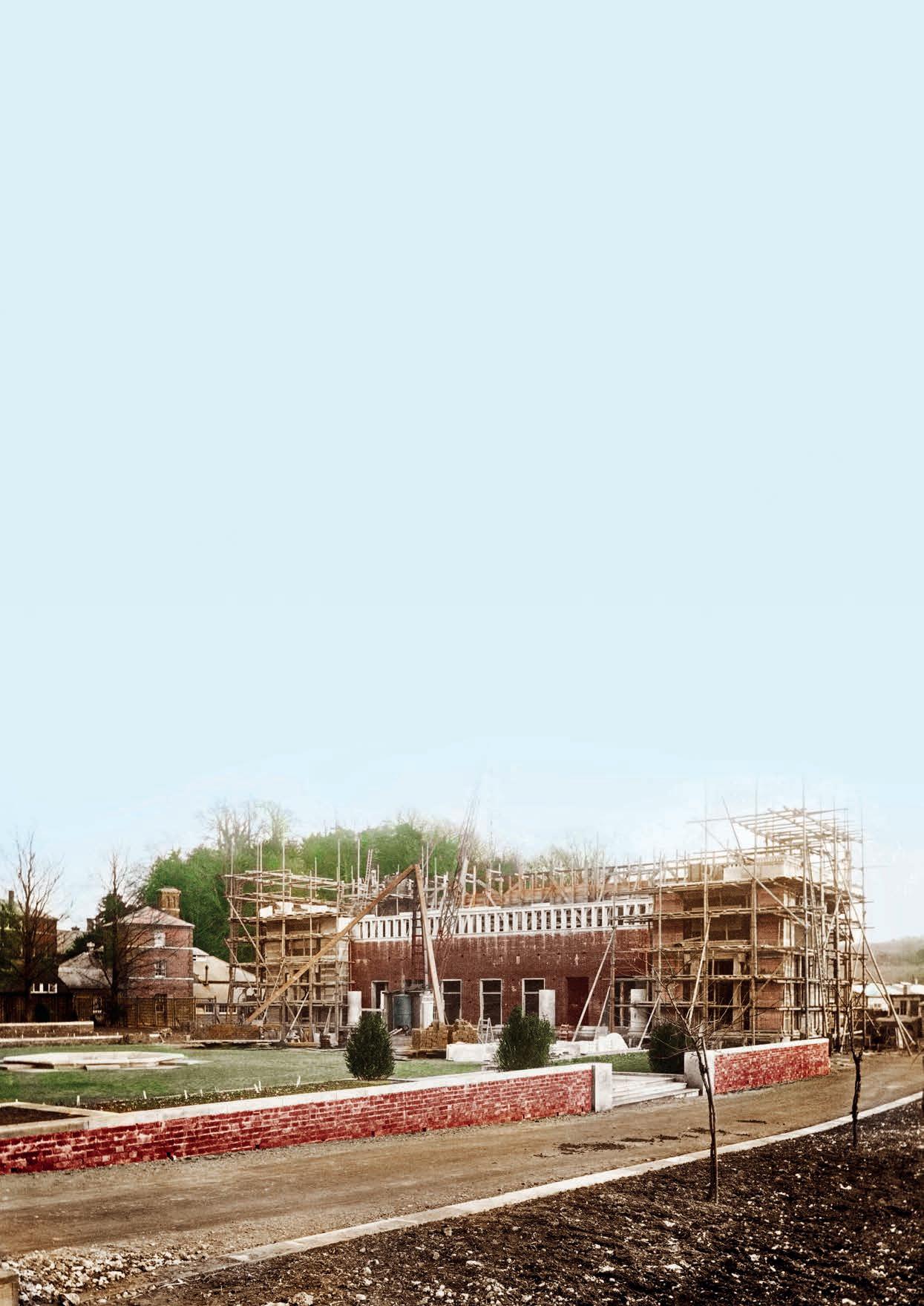
Our Memorial begins immediately as you step through the great West door of the chapel, and its ideal is carved on the stone of Remembrance at your feet, ‘Let us make earth a garden in which the deeds of the valiant may blossom and bear fruit.’ You stand there and you look to the west and the setting sun … and you have the whole, the great steps, the forecourt, the terrace, the hall itself and the garden beneath your feet, a hallowed acre, over which the chapel presides, and of which it is an integral part. It was in order that our most sacred building might be exactly there that we undertook the great labour of raising this hall on a site which was difficult and insecure: now that by the skill of our architect and the engineers we have succeeded, it seems to have been well worth doing.
The original ‘stone of remembrance’ described by Norwood eroded, partly because palm crosses used to be burnt on top of it in preparation for use at Ash Wednesday in the following year. It was replaced in 1991 by wall-mounted roundels at the top of the Chapel steps, close to the site of the old stone.
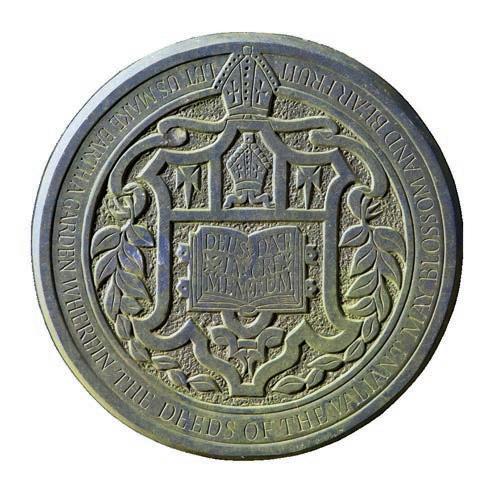
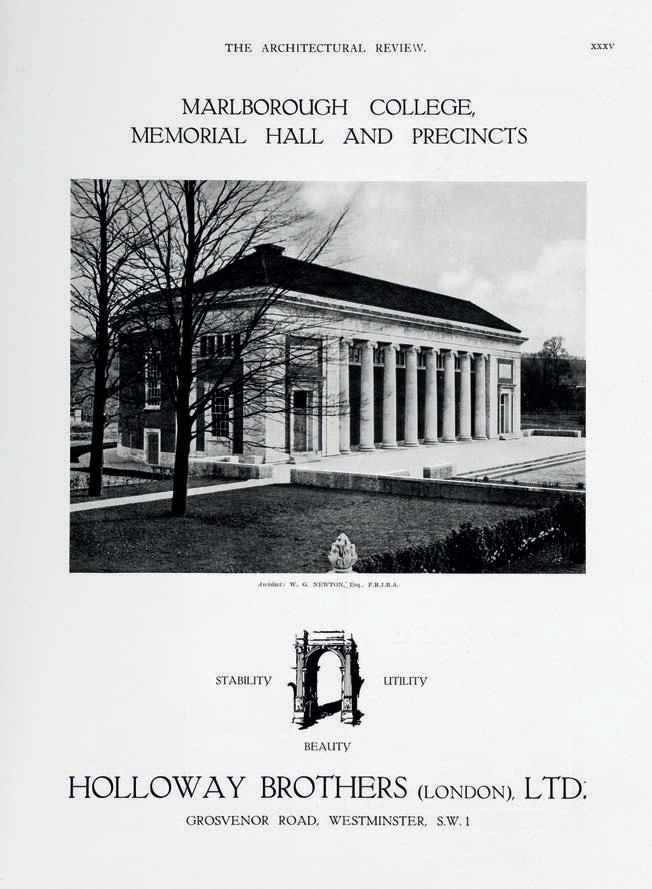
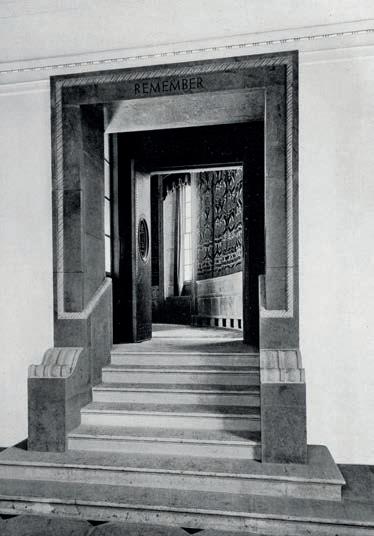
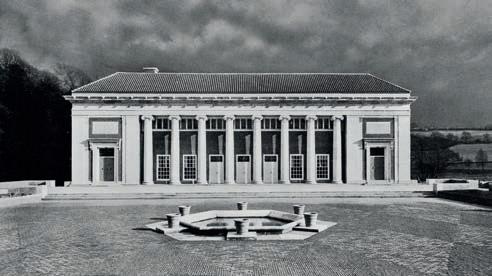
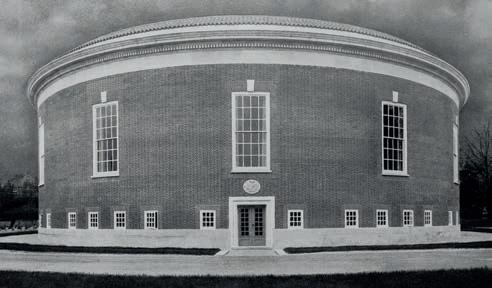
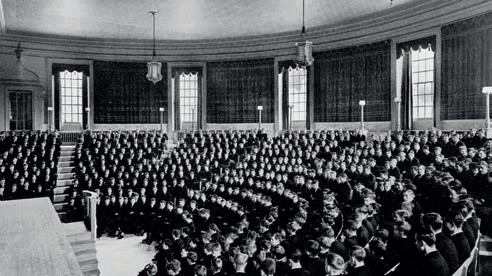
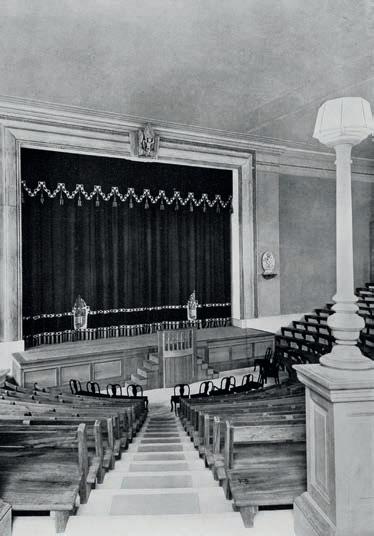
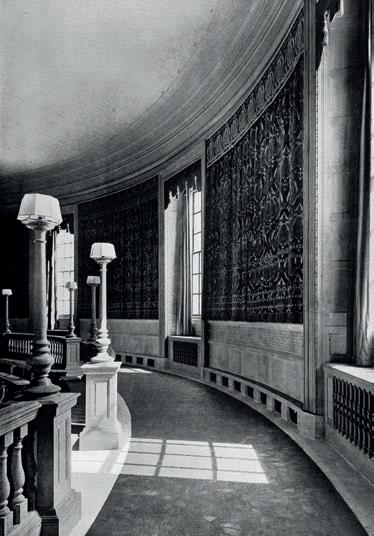
The Hall, as built, may be less spectacular than the first design, but it is an impressive building in a form of stripped Classicism, a style which became popular in the years between the wars. This architecture rejected overblown turn-of-the-century taste and reflected the desire for order and stability in the inter-war years. At its best it can be an imaginative, refined and pared-down reinvention of Classicism, but it was also appropriated by totalitarian regimes in the 1930s, with overpowering results. Newton’s interpretation of Classical grammar presents a striking spectacle to travellers passing by the College on the A4, but although it is imposing, the Hall also speaks of restraint. The north front is red brick with stone dressings, with closed end bays, which were deliberately left free of ornament or inscriptions. These frame a loggia of eight giant plain Portland stone columns (replacing the six of the original design) with fluted Ionic capitals surmounted by a parapet, with a cornice which reflects Newton’s understanding of the language of Classicism. The fine two-inch bricks used by Newton result in rich wall surfaces that accentuate the use of stone in the building. The semicircular southern wall of brick is punctuated by the seven tall windows of the auditorium, the square windows of the basement and a southern entrance, which was later given a second entrance reached by twin staircases. At their summit the stairs are adorned by an oval panel of stone carved musical instruments, which was once placed in the wall immediately above the south door.
The Hall can be entered through three central doorways, which lead to the area behind the stage, but the main entrances are through the stone-walled foyers with shallow saucer-domed ceilings to the east and west, followed by glazed wooden gazebo-like lobbies, with the western one containing the cabinet which
holds the Roll of Honour. This western foyer also contains the names of those who lost their lives in more recent wars. The auditorium, based on the plan of a Roman theatre, contains seating in Indian Silver Greywood (cushioned and upholstered in recent times), which radiates upwards and away from the stage. The audience is embraced by the surrounding semicircular ambulatory, which has the names of the fallen inscribed alphabetically, tinted in grey and red, on its Ancaster stone dado wall. This fine work was undertaken by Laurence Turner, who had once worked for G F Bodley, the Chapel’s architect. His other Marlborough-related work is the gravestone at Kelmscott for William Morris (Aa 1848-51). A cork floor served to silence footsteps and make this area a place for quiet meditation. The stage and the flanking white walls were austere and plain, apart from the contrast provided by the relatively small Art Deco figures made by Phoebe Stabler which adorned the gold uplighters.
Stabler became well known for her ceramic figures, although she also used metalwork, enamel and wood. Her contributions to the British Empire Exhibition at Wembley in 1924 were particularly well received. These two lights, with their stylised depictions of a faun and a boy, added a theatrical touch to the interior, but they seemed at odds with the architecture and were removed when the Hall was remodelled in 2018, as were the stage curtains and arras wall hangings that used to adorn the walls and windows of the ambulatory. The keystone of the original proscenium arch, made by Esmond Burton (C3 1899-01), took the form of a plaster cherub presenting the arms of the College. This was concealed when the stage area was rearranged.
Newton’s original gilded wood pendant lanterns above the auditorium, which provided an almost oriental accent, also helped to relieve the plainness of the interior. In a lavish seventeen-page review in The Architectural Review of June
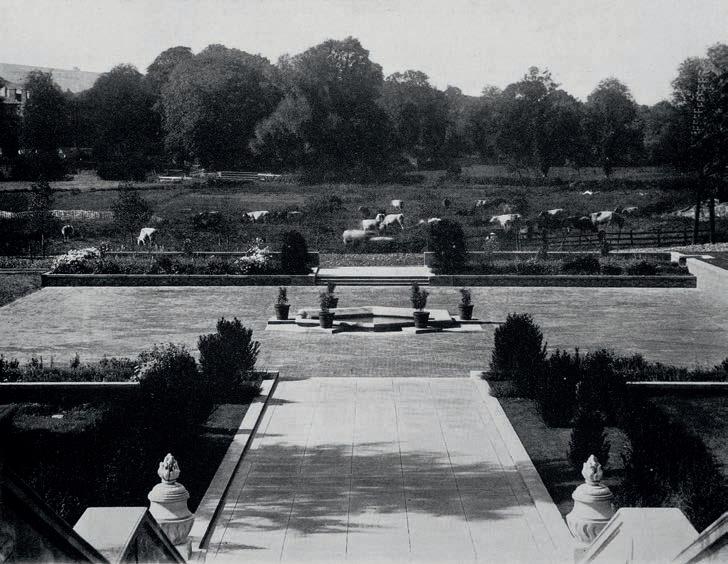
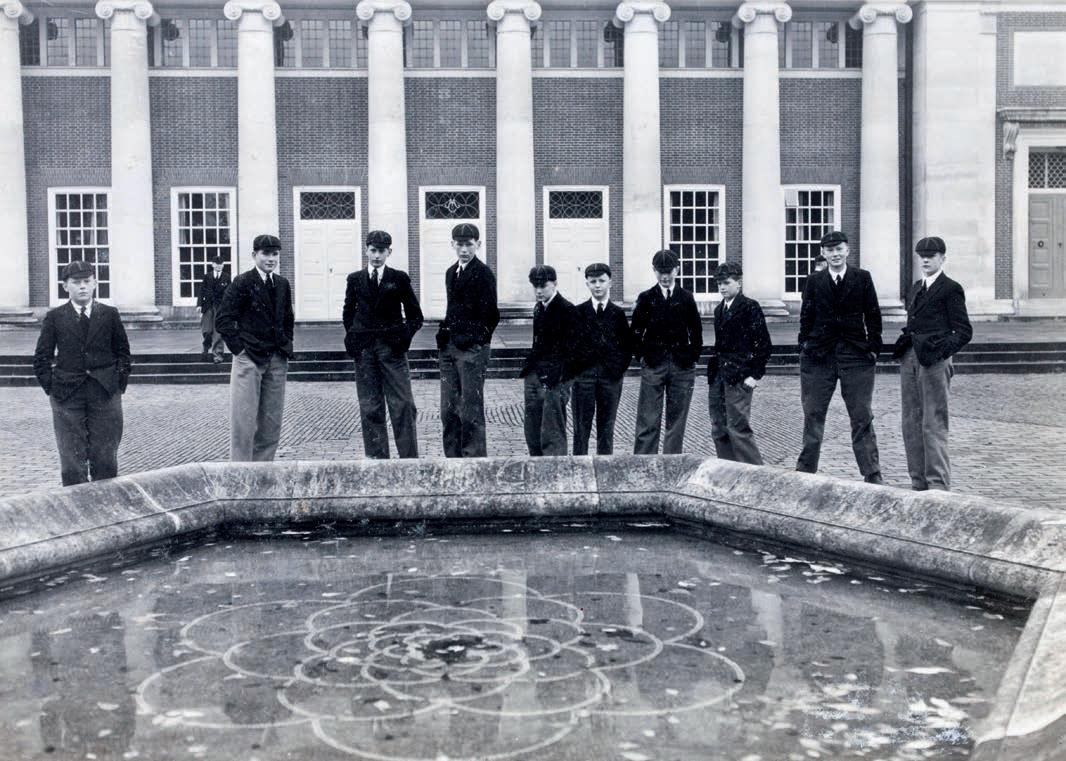
1925, the architect Darcy Braddell wrote that these lanterns were complemented by a line of standard lamps with small shades, which in his eyes represented the ‘ghost’ of the previous plan’s great columns. It was observed that the seven tall windows admitted the changing light in the auditorium ‘like some great sundial throughout the day’. To the north of the Hall, the evening light of the setting sun would be reflected in the hexagonal blue and gold mosaic floored pool which once existed at the centre of the sunken diamond patterned brick paved plaza, at the point where the axis-lines of the Hall and the Chapel meet. Unfortunately, the pool and its fountain proved to be problematic, and it is now a flower bed surrounded by six large planters, which mark the six-year period between the outbreak of the war and the Treaty of Versailles.
Gavin Stamp has described how during the years between the wars
many architects were influenced by developments in the United States, where Classical architecture had become increasingly sophisticated and refined because many Americans had been trained rigorously at the École des Beaux-Arts in Paris and given a structured form of education which did not exist in England. This expertise presented an enticing world to the profession in Britain. Leading figures became fascinated by how buildings were created on the other side of the Atlantic, with the understanding shown there regarding the language of the Classicism, steel-frame construction, and the panache of Art Deco. Newton’s experience as editor of The Architectural Review made him aware of what was being undertaken in America and his own work was influenced by this knowledge. The architectural historian Nikolaus Pevsner commented that the Memorial Hall comes as near to the American campus style of the same
years as anything this side of the Atlantic. Charles Saumarez Smith (C1 1967-71), former Director of the National Gallery and Chief Executive of the Royal Academy of Art, observed that Newton was able to use the language of Classicism ‘with confidence, not in a doctrinaire way, but as a natural part of a tradition in exactly the way as the architects of equivalent buildings and schools and universities in the United States, as at Harvard, where the Fogg Art Museum, where I later studied, is identical in style and date’.
The Fogg Art Museum building was also completed in 1925, in an elegant Georgian style resembling Newton’s work, by Coolidge, Shepley, Bulfinch and Abbott. It is an extraordinary coincidence that the earlier lecture hall at the museum of 1892-95, by the well-known architect Richard Morris Hunt, was so similar in plan to Newton’s Marlborough work, although it had a domed roof which
resulted in problems. This building became infamous for its untameable resonance, and the research undertaken on sound in this room by Wallace Clement Sabine in the final years of the nineteenth century provided the foundation for the science of room acoustics. Improvements were made in the lecture hall, but eventually it was demolished in 1973. Sabine’s work influenced Newton’s design at Marlborough, resulting in the relative lowness and flatness of the roof and the flexible acoustic arrangements facilitated by Ambrose Heal’s wall hangings. Complex studies by Sabine of the Hunt building’s sound problems attracted the attention of Jack Diamond, the architect who was responsible for restoring the Memorial Hall in 2018 and improving the way sound carries in the comparable but acoustically less problematic semicircular auditorium. Newton is one of the relatively unsung architectural talents of the years between the wars who could work in numerous styles and adopt new building techniques. Pevsner appreciated the telling contrast between the refined Classicism of Newton’s Hall and his pioneering Modern Movement shuttered concrete and Crittall-windowed science laboratories built less than ten years later, right next door to the Hall. In Bridget Cherry and
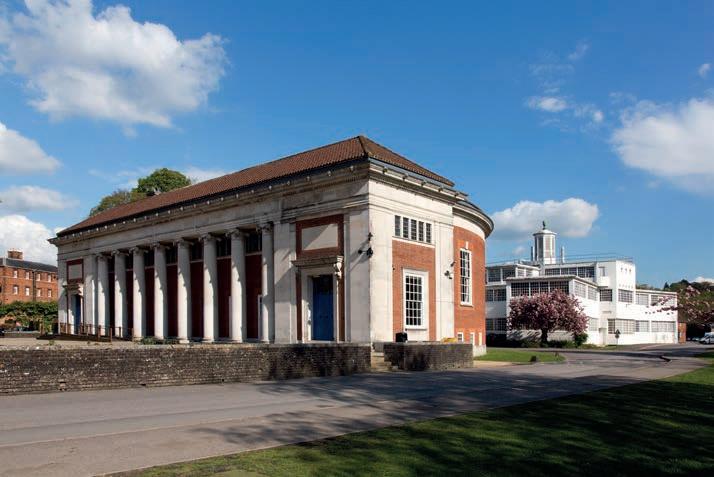
John Newman’s book entitled Nikolaus Pevsner. The Best Buildings of England (1986), an anthology of 101 of Pevsner’s most illuminating architectural descriptions, Newton’s buildings at Marlborough are chosen to introduce the section on the 1930s.
As Norwood had explained in 1925, the memorial to the fallen extends beyond the Hall, embracing the court in front of the building, the Chapel and the garden to the east. A Celtic cross was erected to the north of the Chapel’s east end in memory of the nine members of staff who had lost their lives in the war, and an orchard of cherry trees was planted to the south of the Hall, but with the construction of the science laboratories, only one tree survives.
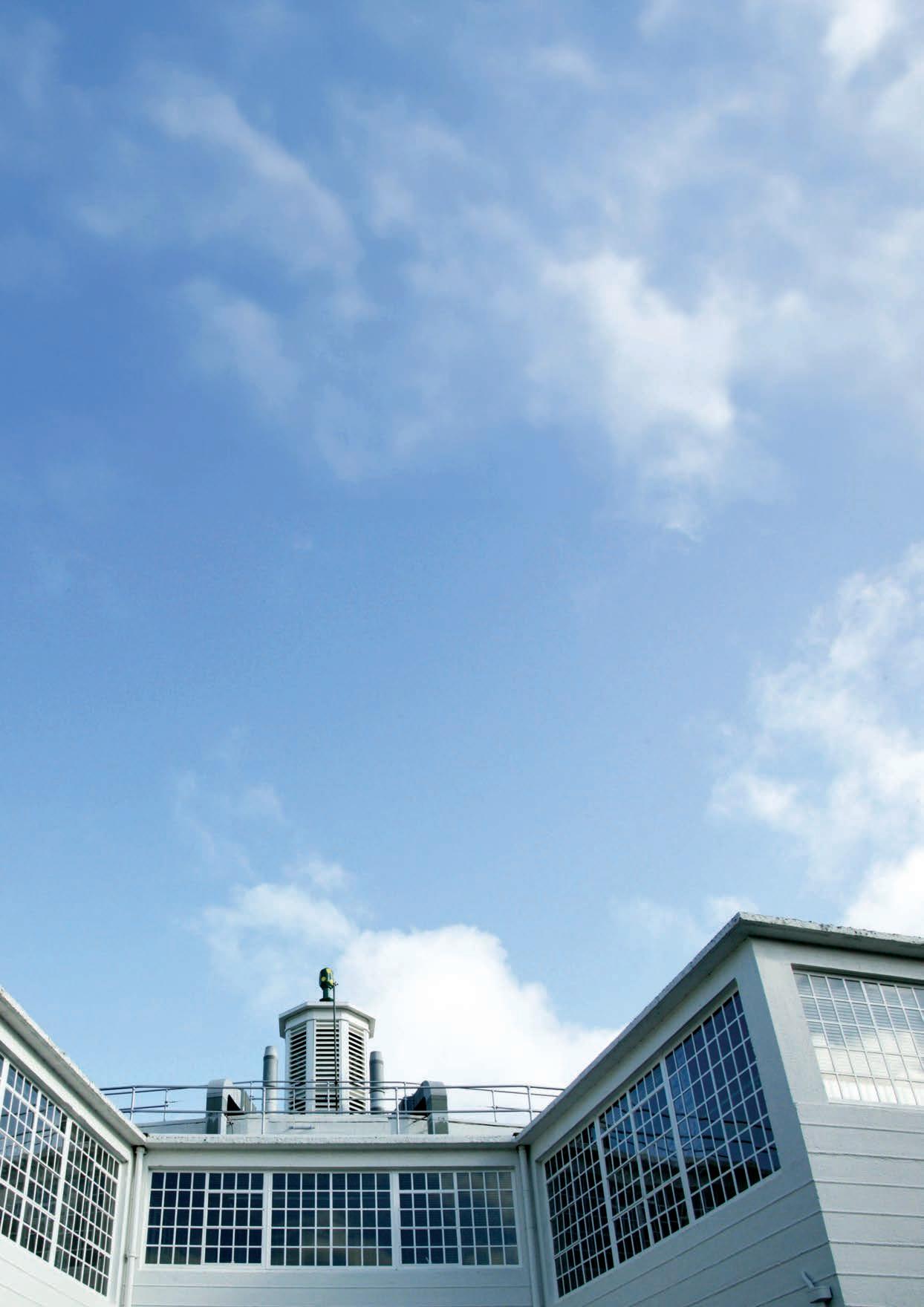
The design of the Memorial Garden itself was proposed by Newton along with his designs for the Hall, with the former providing a sacred way to the Hall. The work was funded by Herbert Leaf, a member of Common Room between 1877 and 1907, who returned to teach in the last two years of the war when staffing shortages caused such difficulties. He was one of the school’s greatest benefactors, donating over £30,000, providing both the college and the town of Marlborough with electricity, and a substantial sum to help with the construction of the Hall. He wished the garden to be a quiet place where
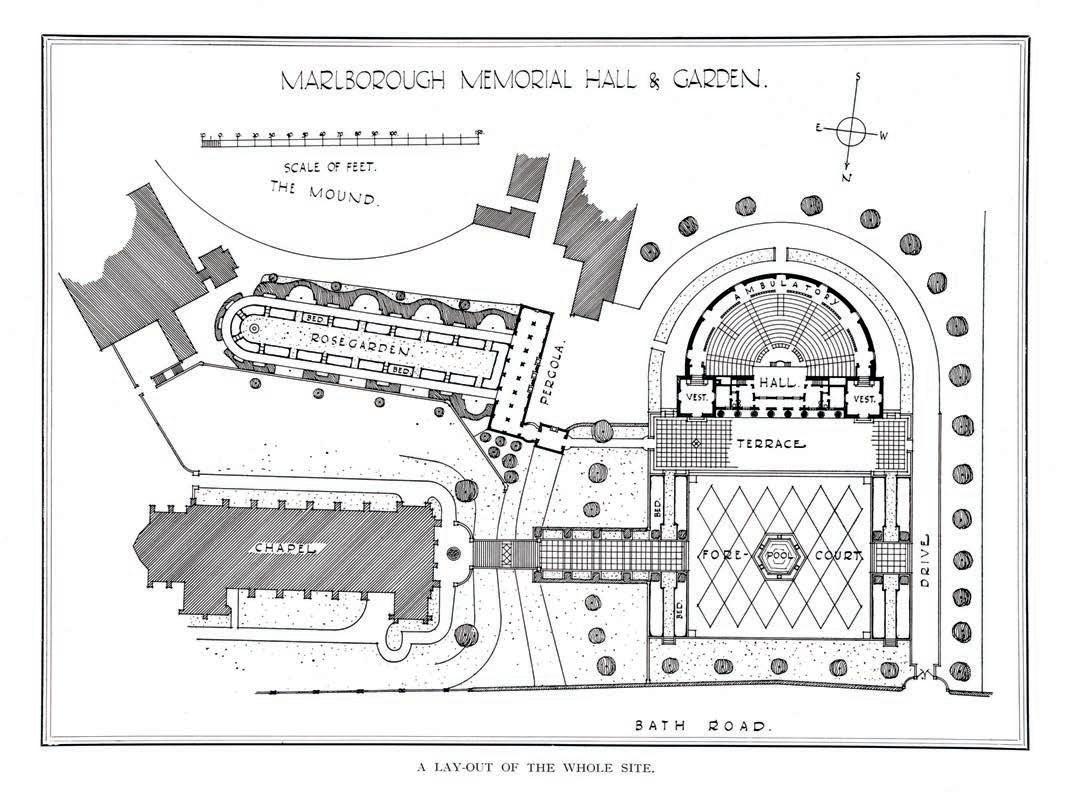
fallen Old Marlburians could be remembered, but he also wanted it to be a memorial to his wife, Rose, who had died in 1922. She is also remembered by a plaque in the Hall, where the music rehearsal rooms were dedicated to her. There were plans for more gardens to the west of the Hall, where ‘a benefactor (had) presented the water meadow on the far side of the Hall so that one day a winter garden may be carried out’.
Newton designed the Rose Garden, together with a pergola and a gatehouse on the site of what had previously been the home of the

former laundry of 1847 and a stable block. Because of the shortages of building materials, bricks and timber from the buildings on the site were recycled, and Newton wrote that ‘practically the only materials required are tiles for the roof of the Gate House’. The foundations of the western half of the laundry became the foundations and floor of the pergola. Newton’s design shows the 150-foot-long and 15-foot-wide lawn, surrounded by seven pairs of rose beds and a pathway. The whole is surrounded by architecturally shaped yew hedges, with spaces for borders and wooden benches. The small lead figure on its stone base at the east
end is shown in the final plan of May 1924. Newton also devised the planting scheme with the help of fellow Old Marlburian Arthur William Hill (HB 1890-94)), Director of the Royal Botanic Gardens at Kew. Moving eastwards from the pergola, in paired beds the roses changed from white to cream, lemon, soft orange, yellow blush, apricot and pink, culminating in red roses around the small statue. The borders within the hedges were planted with pinks, lavender and lilies. Wisteria, clematis, jasmine and hydrangea climbed the pergola at the west end of the garden.
One of the approaches into this garden used to be through the gatehouse, which bears a fine inscription in Greek: this elegiac couplet translates to ‘We lie all over the world, but in this garden we walk again as fellow pupils with those who remember the fallen’.
Fred Kottler (C2 2016-20), a recent Senior Prefect, wrote an essay on the ‘reception’ of Classics in the thought and literature of the First World War. He asked an Oxford don who specialises in lyric poetry his opinion about this inscription. He felt it was not by Pindar, as had been thought, or indeed by any Classical Greek writer, but he believed it may have been the work of a beak. It was, in fact, Howard Brentnall (CR 1903-44), who did so much work exploring the site of the royal castle which once occupied the site on and around the great Neolithic Mound to the south of the garden. The inscription was intended to give consolation to those who lost friends and family in the war. The impossibility of recovering bodies from the battlefields is, to a degree, assuaged by the thought that they are still present with the living ‘in this garden’ and with their school friends who had survived; they relive their life at Marlborough once again.
Of particular interest is the word ΣΥΜΦΟΙΤΩΜΕΝ, which means we walk together as pupils. There is a sense of walking side-by-side in learning, conversation and companionship. ΚΕΙΜΕΘΑ, ‘we lie’, evokes precisely the language of fallen heroes in the Iliad; great, noble men who have nobly fallen.

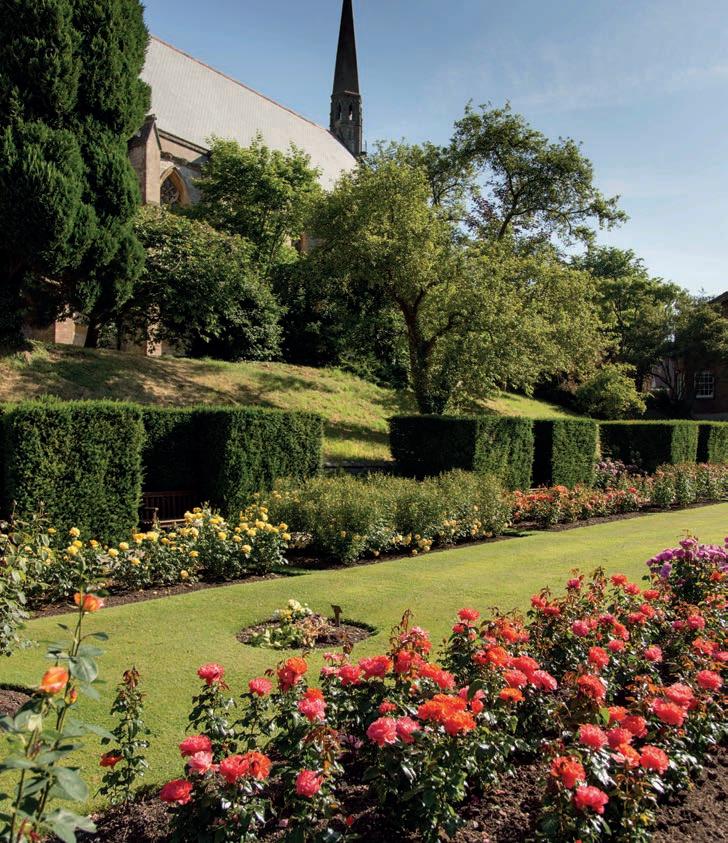
The gatehouse was designed to form a link with the axis of the terrace in front of the Hall and the Rose Garden. It constitutes a form of propylaeum, a building which marks the transition from a secular to a religious area. In addition to being a war memorial, it is now a museum dedicated to the history of the Mound, which might have been erected as a form of memorial 4,000 years ago. It is fitting that this building, with its inscription by Brentnall, now reaches out across many centuries and helps to explain the great and enduring mystery of the garden’s other immediate neighbour.
The change of architectural gears presented by Newton’s Memorial Hall and his Modern Movement
laboratories is matched by the dramatic contrast between the Hall, the Neolithic Mound and Bodley and Garner’s soaring Gothic Chapel, reached by the sweeping flight of steps. With their decorative ornamental lion heads, urns with flaming finials and flanking clipped box hedges, Newton’s steps provide an almost Hollywood-like note to this symbolic link between the secular and the spiritual worlds represented by these buildings. The Hall and its surroundings speak of the importance of duty, sacrifice, service, love and remembrance. They also reflect the great determination and vision of those who had survived the conflict to make sure that the 749 who died were never forgotten. In his 1925 article in The Architectural Review,
Darcy Braddell concluded: ‘Here in fact is a holy precinct. The chapel on its mound, the quiet garden, the empty space of the great brick forecourt, the memorial hall itself, all combine for one purpose. They are monuments to youth not death.’ The complexity of the whole site, with all its orchestrated messages, architectural diversity and history, make it a special place and one which all visitors and members of the Marlborough community should learn from, revere and treasure.
Dr Niall Hamilton (CR 1985- ) former Head of History of Art, former Director of Admissions
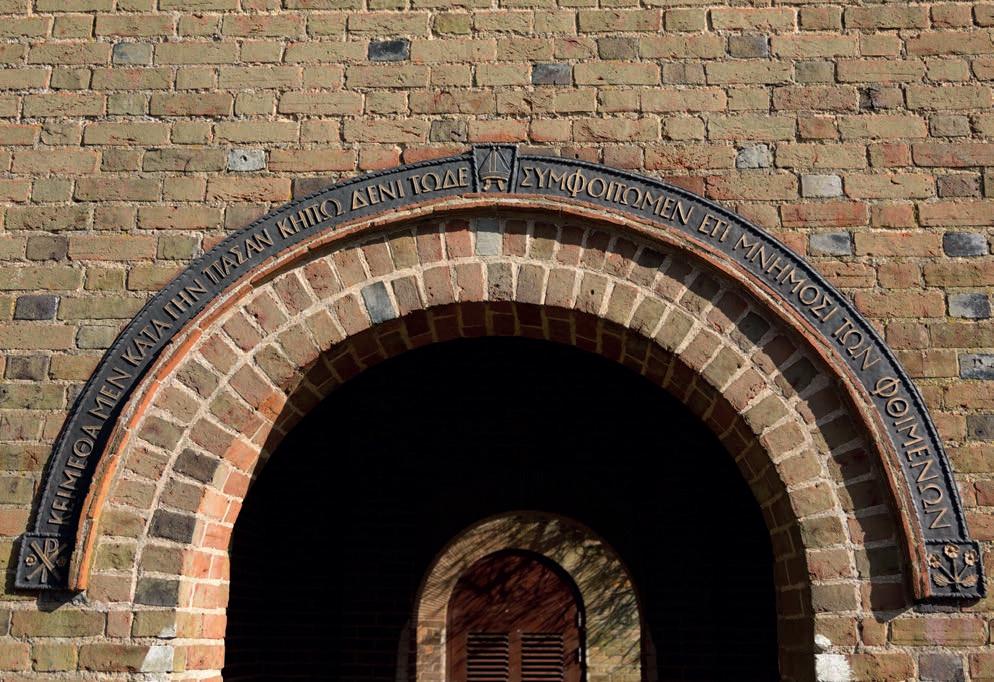
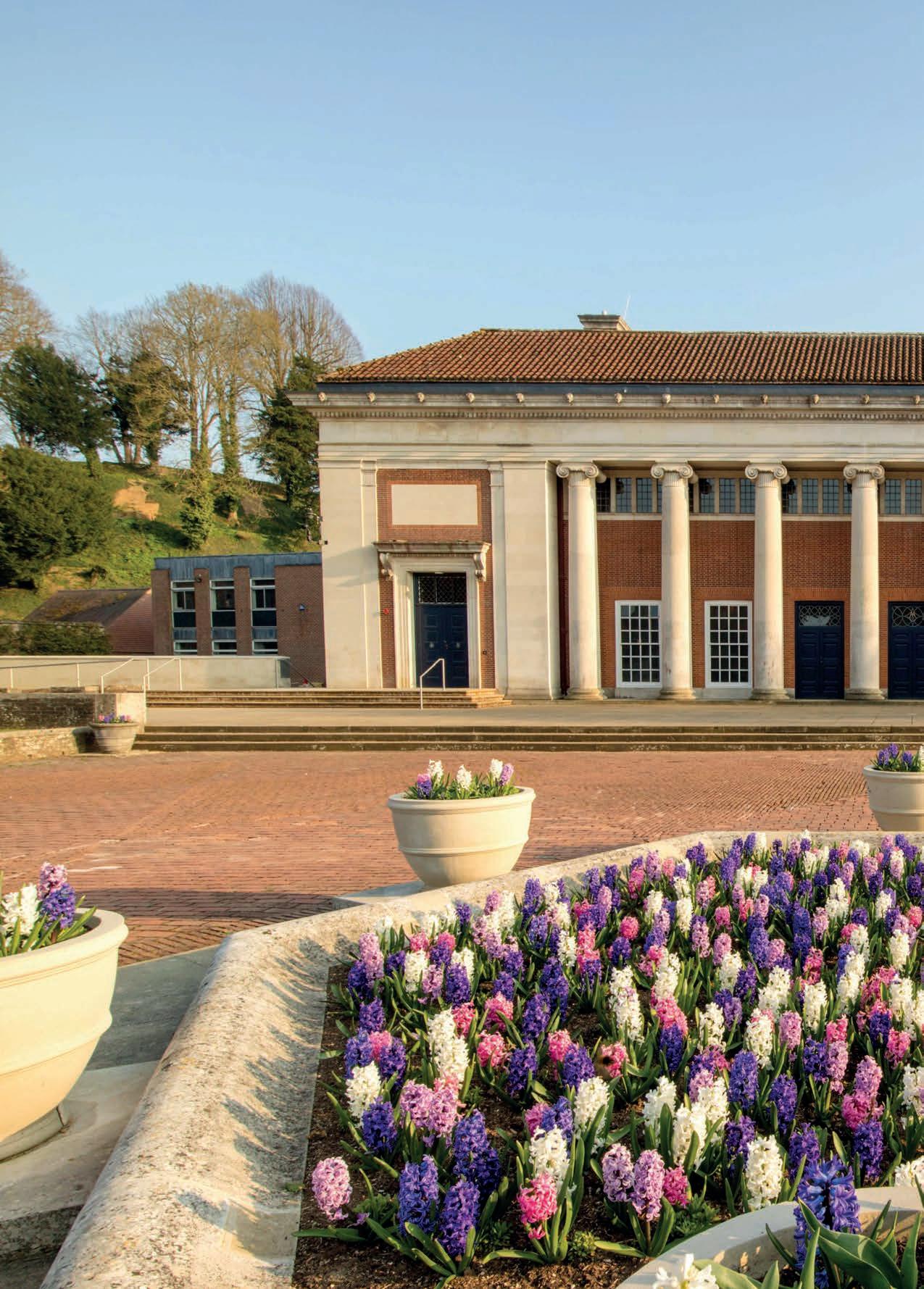
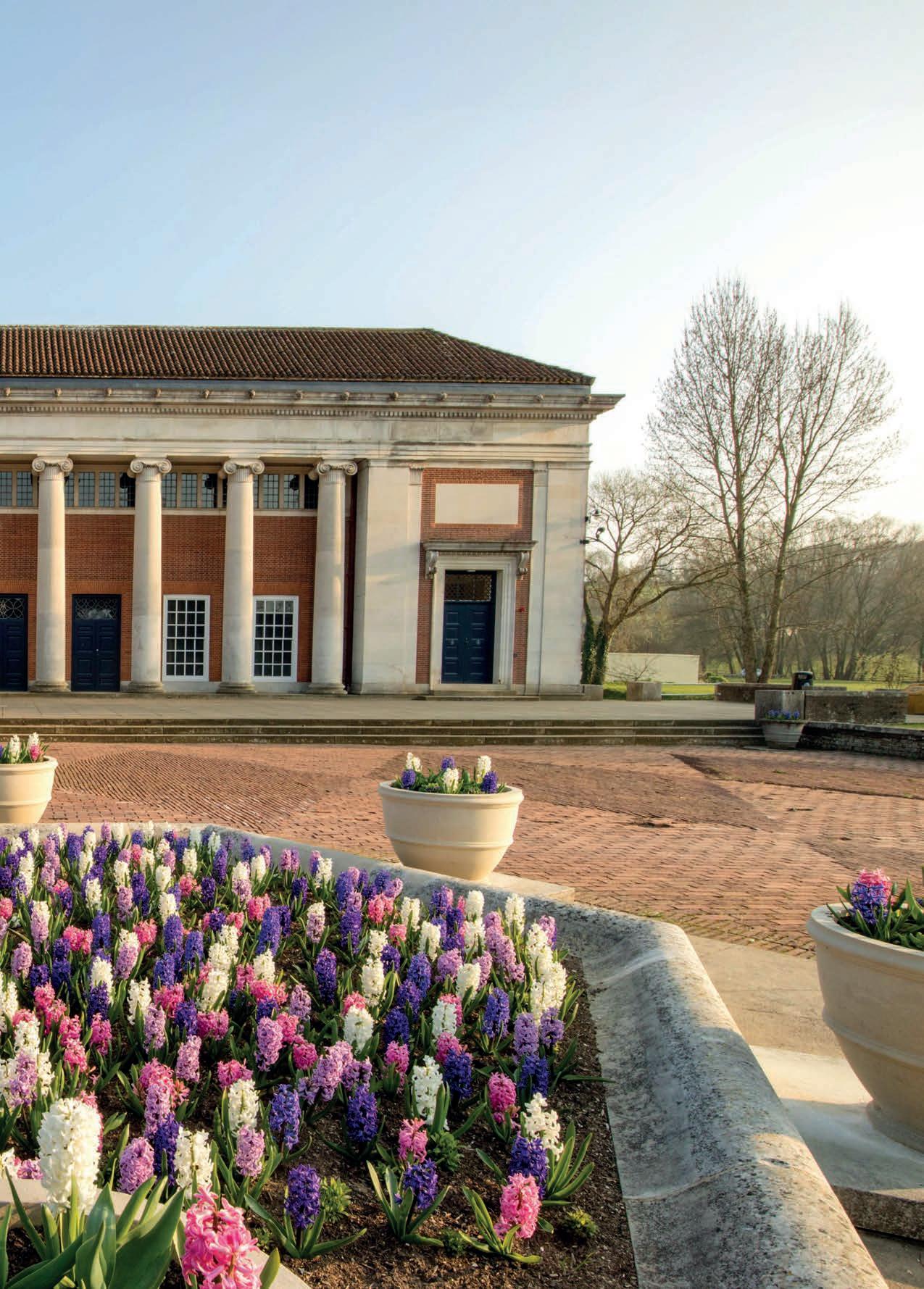

Field Marshal Sir Henry Wilson, 1st Baronet, GCB, DSO (LI 1877-80) remains the most eminent soldier to have attended Marlborough.
A veteran of several of Victoria’s colonial wars, and an officer during the Boer War, Wilson became Chief of the Imperial General Staff in 1918 – effectively head of the British Army – and in 1919, Field Marshal. He played a major part in the First World War, organizing the British Expeditionary Force in 1914, acting as chief liaison officer with the French Army throughout the war (he was a fluent French-speaker), and heading the Eastern Command from 1917. In addition, Sir Henry served as Commandant of the Staff College, chief military advisor to the Prime Minister, David Lloyd George, and was awarded the Knight Grand Cross of the Order of the Bath, and Grand Cross of the Légion d’Honneur, among many other decorations. Yet, despite his public and military duties, Sir Henry remained devoted to his old school, and stepped forward to chair the committee that devised and planned the College’s Memorial Hall, presiding over its inaugural meeting at Westminster Central Hall in October 1919. In the following year, Sir Henry assumed the Presidency of the Old Marlburian Club, and once slipped away from an international summit at Chequers to attend Old Marlburian Day.
In the spring of 1922, the College invited Sir Henry to unveil Marlborough’s Roll of Honour. This was set for Old Marlburian Day, Saturday 8th July; however, two weeks before he was due to visit, Sir Henry was assassinated on the doorstep of his home in Belgravia. He had just returned by public transport from unveiling the war memorial at Liverpool Street Station, and was easily identifiable in his field marshal’s uniform to the two IRA gunmen waiting for him on the street outside. Sir Henry, a proud Ulsterman, had been recently elected as a Unionist MP in the government of Northern Ireland, sufficient grounds to make him a target for Republican violence. His assassination was greeted with utter disbelief: this was the most high-profile political assassination since that of Prime Minister Spencer
Perceval in 1812. It also had farreaching consequences: Sir Henry’s murder set in motion events leading to the outbreak of the Irish Civil War six days later, prompting some historians to dub Sir Henry’s killing as ‘Ireland’s Sarajevo’. Sir Henry was granted a state funeral, and thousands lined the rainy streets of London on Monday 1st July to witness the cortege bearing his body on a gun carriage to St Paul’s Cathedral for burial with full military honours.
The sense of loss at Marlborough was particularly acute, and members of the Old Marlburian Club moved quickly to gather funds for a posthumous portrait of their former President with the intention that it should be donated to the College for display in the new Memorial Hall. The portrait was unveiled on Old Marlburian Day, Saturday 27th October 1923 by Sir Henry’s widow, Lady Wilson, in a ceremony held in the Memorial Library’s Reading Room. After speeches from Sir Humphry Rolleston and the Master, Lady Wilson laid a framed set of ribbons from her husband’s medals at the foot of the portrait. It was intended that both portrait and ribbons should be transferred over to the Hall on the building’s completion.
To carry out the commission, the Club approached the rising star of British portrait painting, Oswald Birley (1880-1952), a man with his own distinguished war record as recipient of the Military Cross. In stylistic descent from John Singer Sargent, William Orpen, and John Lavery, Birley became the leading society portrait painter of the inter war years, and, in 1949, like Orpen and Lavery before him, he was knighted for his services. Birley regularly painted official and private portraits of the Royal Family, including George V, Queen Mary, George VI, Elizabeth, the Queen Mother, Elizabeth II, Prince Philip, and the Earl Mountbatten; he also painted Prime Ministers Baldwin, Chamberlain, Attlee, and Churchill
– the latter in several portraits – and figures in the armed forces, Church, and judiciary. Prominent men and women from many quarters, from mayors to marchionesses, company directors to debutantes, sat for Birley in the next decades, even after he lost an eye in a training accident with the Home Guard in 1941. His reputation stood high in the United States, and Birley painted numerous American tycoons and their families, among them Andrew Mellon, J P Morgan and Henry Huntingdon, as well as world leaders, such as Dwight D Eisenhower and Mahatma Gandhi – his portrait of the latter still hangs in the Indian Parliament.
In his commission for the Old Marlburian Club, Birley presents Sir Henry seated side-on to the viewer, perched cross-legged on a stone ledge, and looking down with an expression between the stern and the avuncular. He is in uniform with his field marshal’s insignia on his shoulder, ‘walking out’ stick under
his arm, and cap on the ledge behind him. With tact, Birley casts the right side of the face in shadow, masking the disfigurement Sir Henry suffered from a wound to the eye sustained in Burma in the 1880s. It is testament to Birley’s skill that he achieves such a living presence based only on photographs and his own professional judgement. But the process was not straightforward: Birley trialled his ideas in two full-sized, highly finished oil sketches. One of these is today held at the Defence Academy in Shrivenham, the modern-day counterpart of the Staff College that Sir Henry headed as Commandant. The other was presented by Marlborough College to Belfast Corporation in 1931, and today hangs in the Lord Mayor’s Corridor at Belfast City Hall.
Dr Simon McKeown (CR 2009- ) Head of History of Art (2011- )
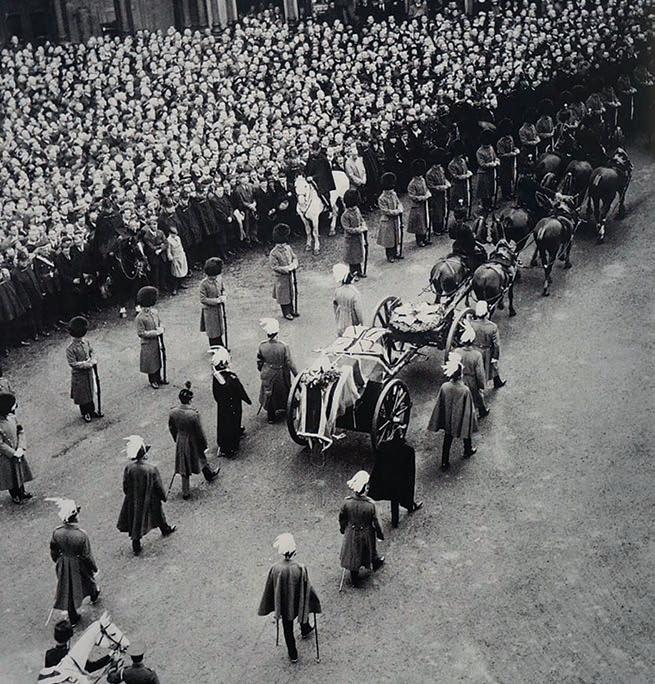
The Marlborough College Roll of Honour holds a uniquely important place within the Memorial Hall. It records the names and photographs of Old Marlburians and Assistant Masters who perished in the First and Second World Wars, and so great was the College’s loss that the roll runs to eleven large folio volumes: ten for the Great War, and one for the 1939-1945 conflict. Nine of the volumes are organised by College houses – C1, C2, C3, B1, B2, B3, Cotton, Littlefield and Preshute – with another for Summerfield, the Junior Houses and Assistant Masters.
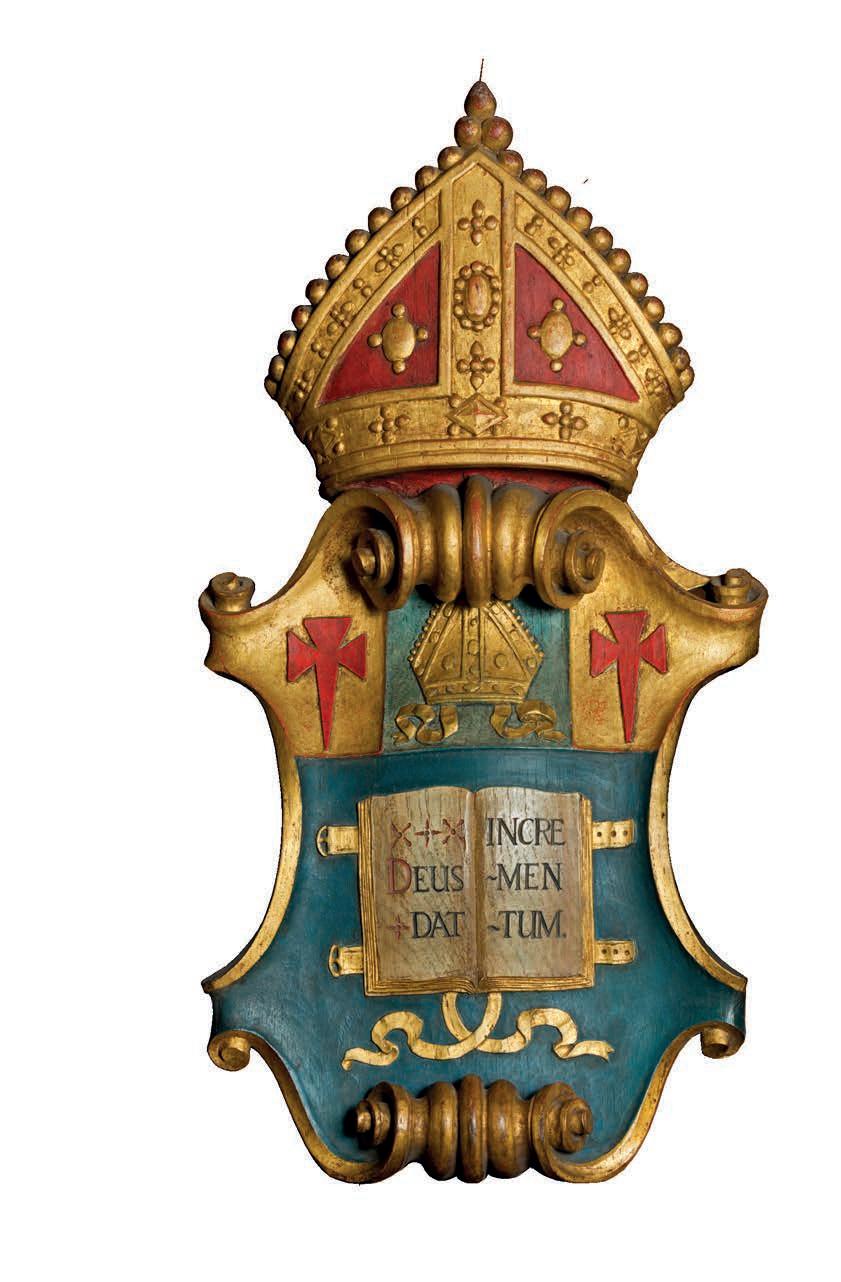
A further volume listing names from the Second World War was added to the Roll in 1951. Each of the volumes is enclosed within a buckram clam-case and bound in blindstamped blue morocco with the house name and College arms impressed in gold on the upper board. The inner boards are lined with ivory moire, or watered silk, framed by rich gold tooling. Inside the volume, the Roll presents the names of the dead with a short entry detailing their service and circumstances of death. In most cases, the names are accompanied by a photograph of the deceased, usually in military uniform. The names are ordered by date of enrolment into the College, and all texts are calligraphed in an elegant copperplate script.
The motive force behind this great enterprise was Freke D Williams (C3 1871-73), partner in the legal firm of Fladgate and Coy, the College’s London solicitors. In the foreword to each volume, Williams states that he was moved to perpetuate the memory of ‘Marlburians who served in the Great War by sea, by land, and in the air, and, with the single object of helping the British Empire in its hour of need, gave their lives for their country’. He relates how he had
begun to collate his information in the autumn of 1914 by approaching ‘parents, widows, or other near relations’ for details of their loved ones’ war service. Doubtless Williams’s research was facilitated by reference to the ‘Roll of Honour’ that appeared in each issue of The Marlburian magazine throughout the war years, and which was subsequently published under separate cover in 1919 and 1920. He would also have benefited from the work of George Bell Routledge (C2 1877-80), editor of the Marlborough College Register, who appealed for information concerning military service for inclusion in the Register ’s seventh edition of 1920. Disappointingly, Williams does not record the name of the calligrapher he engaged to indite the entries with unerring skill; nor does he document the craftsmen responsible for collating and binding the volumes themselves.
The ten volumes of the Roll are kept within a handsome cabinet that stands in the western lobby of the Memorial Hall. There, behind glazed double doors fitted with high-lustre brass escutcheons, the individual volumes rest in their clam-cases on open-fronted drawers, while the
eleventh volume, that for the 19391945 names, lies within an enclosed recess below. The cabinet itself is in the Baroque style and is surmounted by a broken pediment terminating in elaborate scroll volutes. Within the pediment nestles the College arms tinctured and crested by the bishop’s mitre accoutred with particularly animated ribbons, or lappets. We know that the cabinet was designed by William Newton (C1 1899-04), but it remains unclear who executed his plans. The most probable candidate is Laurence Turner (C1 1877-81), carver of the names in stone along the rear wall of the Hall. Turner was also a proficient worker in wood, and we know that he provided the cabinet with its carved crest and incised inscriptions; it was Turner, too, who took charge of arranging the display of the cabinet when it was delivered to the College in 1922. The cabinet was subsequently altered in 1950-1951 with repairs carried out on water damage to the lower case, the fitting of new ironmongery, and a partial rebuild of the waist to accommodate the 1939-1945 Roll. The renovation was carried out by the London architect and furniture designer, Roderick Eustace Enthoven (1900-1985).
The Roll of Honour was completed almost three years before the opening of the Memorial Hall, and the College authorities pondered over where it should be housed until the Hall was ready to receive it.
The Bursar, Major John Archibald Davenport, elected for the Bradleian, a choice that stirred Turner to protest that the Roll would ‘look very much lost there’, and that the cabinet’s style would jar with the room’s ‘chimneypieces [which are] coarse in detail and rather gross in character.’ Turner’s arguments did not prevail, and it was in the Bradleian that the College Roll of Honour was unveiled in a ceremony staged on Old Marlburian Day, Saturday 8th July 1922 – also the occasion when the newly completed Rose Garden was officially opened. Alas, it turned
out to be a more sombre occasion than anticipated. For one thing, the weather played havoc with the programme, rendering the formal opening of the Garden a total washout. Instead of the Bishop of London, Arthur Winnington-Ingram (B1 1871-76), dedicating the Garden from a platform ‘gaily bedecked with flags’, he was forced to keep within the shelter of the Chapel while the rain lashed the windows. But also overshadowing the mood of the day was a keen awareness that a dignitary was absent from the programme. Sir Henry Wilson (LI 1877-80) had been asked to dedicate both the Garden and Roll of Honour: now, just a week after his funeral in London, his place was taken by Paul, 3rd Baron Methuen, a member of Council.
Understandably, Lord Methuen’s speech, delivered inside the Bradleian, was much preoccupied with the loss of Sir Henry, who ‘like Wolfe, like Nelson, like Gordon, and like Kitchener, died in the uniform to which he did so much honour.’ But Lord Methuen also acknowledged the dead listed in the Roll before him, assigning their courage to the values they had learned at Marlborough, construing that ‘public schools produced that chivalry which we had in the war, and which our enemy had not. When we went to our public schools we learnt to obey, and when we left our public schools we knew how to command.’ With that, Lord Methuen concluded ‘I now unveil this memorial to the seven hundred men who have carried the honour of Marlborough throughout this war,

and God be with them!’ After a word of thanks, the Master, Dr Norwood (CR 1916-25), invited Old Marlburian, Sir Edward Thackeray (B1 1845-50), cousin of the novelist, to give a brief salutation. Sir Edward, recipient of the Victoria Cross for valour under ‘heavy musketry’ during the 1857 Indian Mutiny, had been witness to a truly different age of warfare.
The cabinet containing the Roll of Honour was subsequently moved from the Bradleian to the Memorial Hall ahead of the grand opening by the Duke of Connaught in May 1925. It was for many years placed in the Hall’s ambulatory amid the names of the 749, before taking up its current place in the western lobby in 1951. In 2014, the College published online a digitised edition of the Roll of Honour to observe the centenary of the outbreak of the First World War. Thus, through modern means, the College seeks to stand by its promise to ‘Remember’ the names of those inscribed within the Roll of Honour. They can be viewed at: https://archive.marlboroughcollege.org.
Dr Simon McKeown (CR 2009- )
Head of History of Art (2011- )
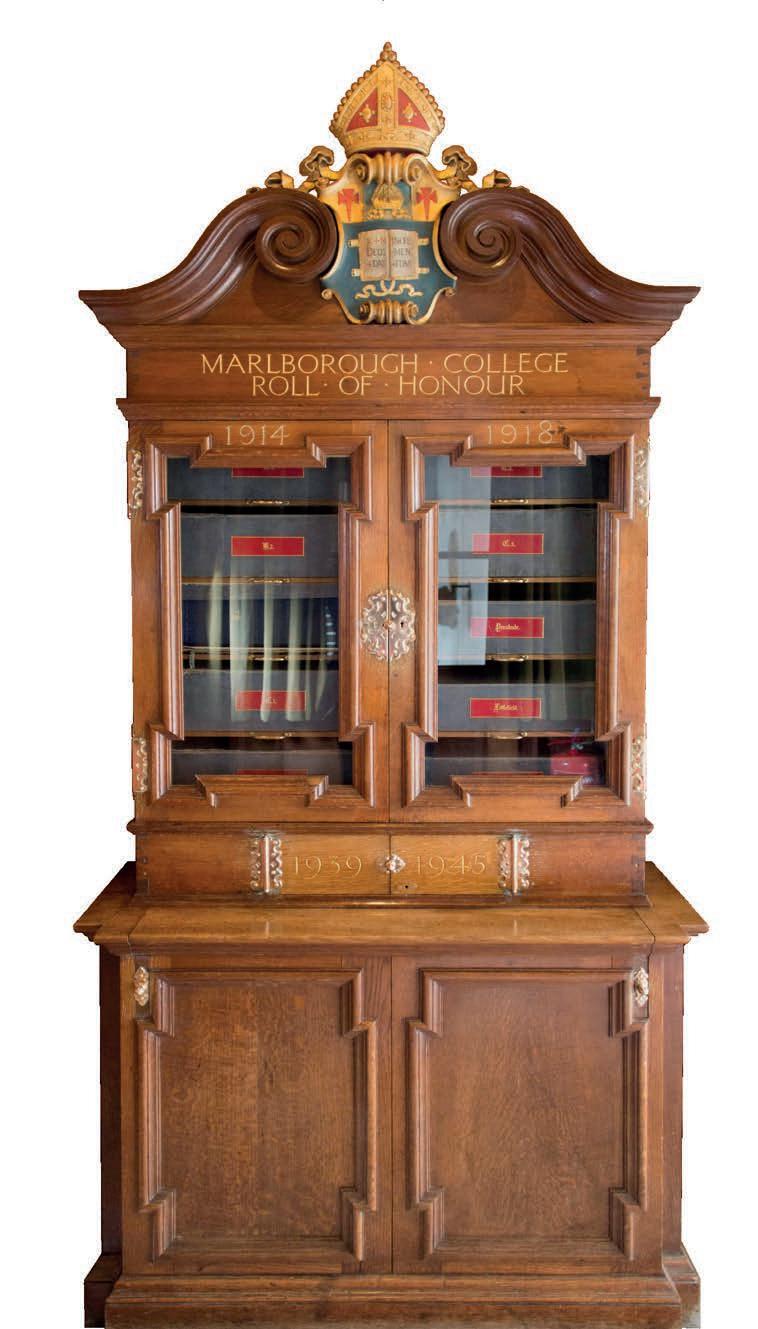
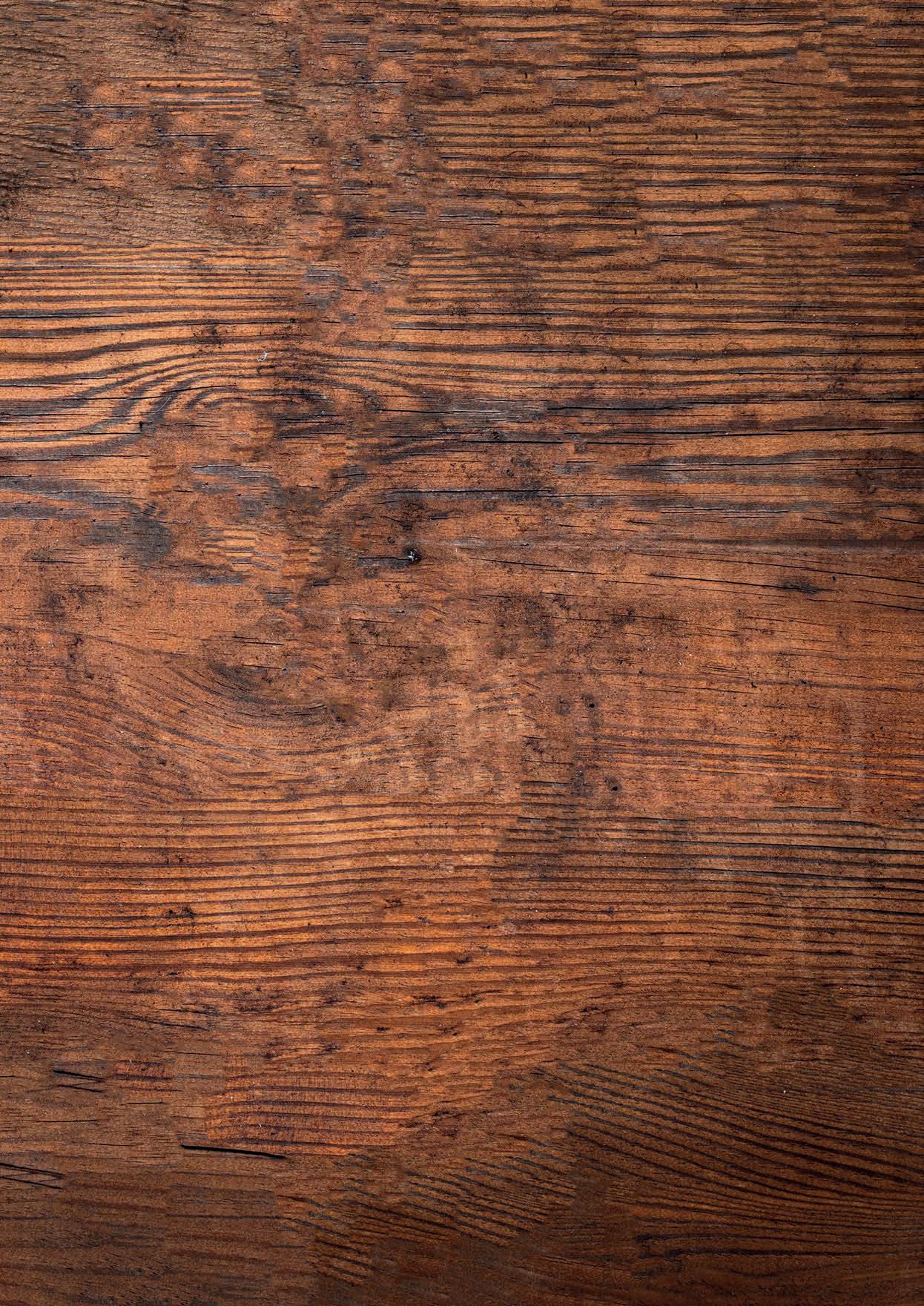
The College is part of an extraordinary tradition of writers, including celebrated war poets who are remembered as much for the skill of their poetry as for their shocking depiction of the conflict, which was at odds with what patriotic supporters of the First World War believed it should be.
There are three names carved into the wall of the ambulatory of the Memorial Hall which offer a poignant insight into the poetry of the First World War and the profoundly significant contribution of Old Marlburian writers on the literature that the conflict inspired: C H Sorley (C1 1908-13), A C V De Candole (C3 1911-16) and H W Sassoon (CO 1902-04).
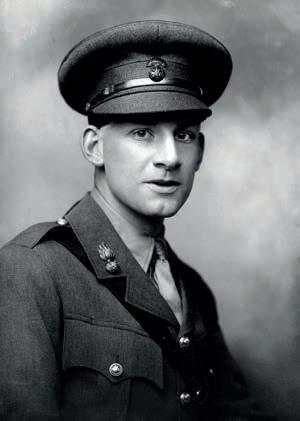
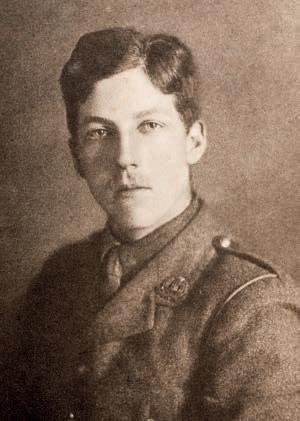

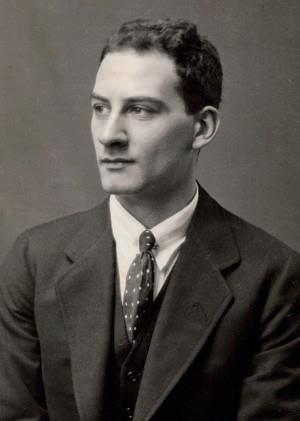
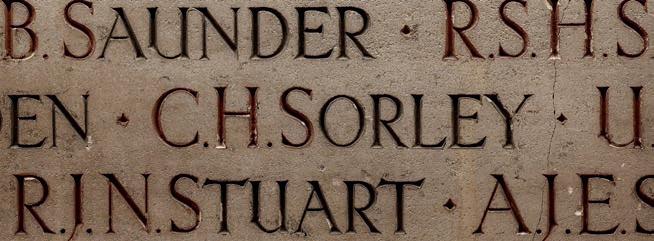
Few deaths illustrate the loss of creative and literary potential as demonstrably as that of Charles Hamilton Sorley, shot dead by a sniper at the Battle of Loos in October 1915. Fellow war poet Robert Graves, who was also involved in the battle, emphasised Sorley’s talent, and the significance of the loss, in his autobiography, Goodbye to All That : ‘it had been another dud show chiefly notorious for the death of Charles Sorley, a twenty-year-old captain in the Suffolks, one of the three poets of importance killed during the war’ (the other two were Isaac Rosenberg and Wilfred Owen).
Described posthumously by the Master of Marlborough, with whom he corresponded from the trenches, as with a ‘rich, glowing personality, his vivid imagination and his power of interpreting it in words, his originality, his intense human sympathy, his high ideals and his lovableness’, Sorley was, ironically, a great admirer of Germany and was on holiday in the country, exploring German culture and literature, when war broke out. He was a reluctant but popular and well-regarded soldier who wrote affectionately about his alma mater from the front, particularly in correspondence with his former teacher, the legendary John Bain (CR 1879-19). There is a sense of nostalgic yearning for his old school and the peaceful days of academia when he writes in July 1915 ‘I have not brought my Odyssey with me here across the sea’, which finishes as below:
This from the battered trenches—rough, Jingling and tedious enough.
And so I sign myself to you:
One, who some crooked pathways knew Round Bedwyn: who could scarcely leave
The Downs on a December eve: Was at his happiest in shorts,
And got—not many good reports!
Small skill of rhyming in his hand—
But you’ll forgive—you’ll understand.
We can forgive the youthful sentimentality in Sorley’s early poetry when it blossoms into the power and poignancy of his more mature work; inspired by the frustrations and suffering he witnessed in the trenches and on the battlefields. His work is never as nihilistic as that of some of his contemporaries, but he explores the contradictions of the war with a deft lyricism, as seen in the sonnet below.
Such, such is Death: no triumph: no defeat: Only an empty pail, a slate rubbed clean, A merciful putting away of what has been.
And this we know: Death is not Life, effete, Life crushed, the broken pail. We who have seen So marvellous things know well the end not yet.
Victor and vanquished are a-one in death: Coward and brave: friend, foe. Ghosts do not say, “Come, what was your record when you drew breath?”
But a big blot has hid each yesterday So poor, so manifestly incomplete.
And your bright Promise, withered long and sped, Is touched, stirs, rises, opens and grows sweet And blossoms and is you, when you are dead.
His brilliant and shocking poem When You See Millions of the Mouthless Dead , found in his kitbag when they recovered his body from the bleak battlefield, anticipates the modernist response to the horrors and chaos of the war with its unremembered ‘spook’ – anticipating Eliot’s ghostly figures marching across London Bridge in the opening of The Waste Land .
When you see millions of the mouthless dead
Across your dreams in pale battalions go,
Say not soft things as other men have said, That you’ll remember. For you need not so.
Give them not praise. For, deaf, how should they know It is not curses heaped on each gashed head?
Nor tears. Their blind eyes see not your tears flow. Nor honour. It is easy to be dead.
Say only this, “They are dead.” Then add thereto, “Yet many a better one has died before.”
Then, scanning all the o’ercrowded mass, should you
Perceive one face that you loved heretofore, It is a spook. None wears the face you knew.
Great death has made all his for evermore.
Sorley, along with other poets of the war, ensured that the young dead did not remain ‘mouthless’. It is the portrayal of the suffering and futility of the Great War from the poets such as Sorley that is foremost in the popular consciousness over one hundred years later.

The least well-known of Marlborough’s war poets is Alec de Candole, a prize-winning scholar, he intended to study Theology at Cambridge before taking Holy Orders, but with war raging in Europe, he enlisted with the 4th Wiltshire Regiment in 1916. De Candole was only twenty-one when he met his death in France during a bombing raid on 3rd September 1918, a few weeks short of the Armistice.
His poems were first brought to public attention through small publications sponsored by his devoted parents in his honour. De Candole also wrote a small book entitled The Faith of a Subaltern, which was published posthumously by the Cambridge University Press.
In 2020, a Shell pupil – by happy coincidence also a C3 boy – working on a research task in the Memorial Library unearthed an unpublished manuscript poem by de Candole tucked into the personal copy of his poems that once belonged to his mother. It is written on tissue-thin paper, seemingly transcribed in his mother’s hand and dated 1916. De Candole’s grieving parents attended the opening of the Memorial Hall in 1925 and continued to publish his works long after his death.
The original manuscript of the poem is shown on page 46.

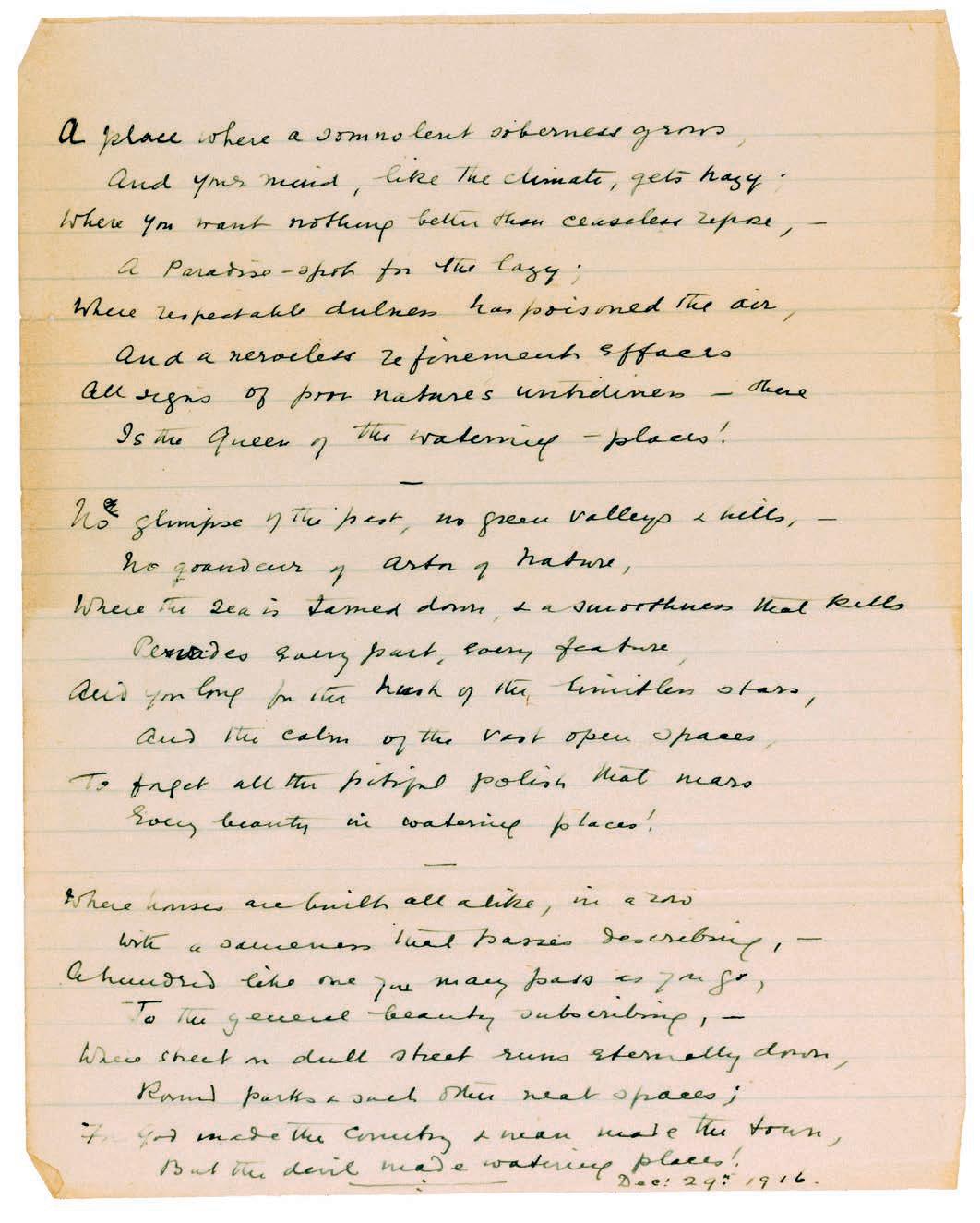
The original unpublished manuscript of a poem

The name Sassoon echoes across the decades in terms of Marlborough College and the First World War. It is not Siegfried (CO 1902-04) who is commemorated in the Memorial Hall, he survived the war, but his brother Hamo. It is through Hamo that we can see the distinct sides of the famous poet, his younger brother. At the outbreak of the war, Siegfried enthusiastically joined the Sussex Yeomanry (and later the Royal Welch Fusiliers) and followed his beloved brother to the front. However, Hamo was killed during the action at Gallipoli shortly before Siegfried arrived in France. Siegfried’s early war poetry reflects a stoic and patriotic response to Hamo’s death, but this respectful tone towards the sacrifices of the war would not last:
Give me your hand, my brother, search my face: Look in these eyes lest I should think of shame;
For we have made an end of all things base.
Siegfried Sassoon was an extraordinarily brave soldier who was loved by his men; he won the Military Cross for bringing back a wounded comrade under heavy fire and was even recommended for the Victoria Cross for capturing a German trench single-handed. He was dubbed ‘Mad Jack’ for his reckless disregard for his own safety, which may well have been a response to his brother’s death.
However, as with Sorley, and despite being such a well-regarded and decorated soldier, Sassoon went on to write vivid and terrifying portrayals of life in the trenches. Sassoon’s war diaries – written from the front lines – included his detailed observation of the first days of the Battle of the Somme in 1916.
July 1st 1916:
7.30: Last night was cloudless & starry & still – the bombardment went on steadily. We had breakfast at 6 – the morning is brilliantly fine – after a mist early. Since 6.30 there has been hell let loose. The air vibrates with the incessant din – the whole earth shakes & rocks & throbs – It is one continuous roar – machine-guns tap & rattle – bullets whistling over head – small fry quite outdone by the gangs of hooligan-shells that dash over to rend the German lines with their demolition parties.
7.45: Our men advancing steadily to the 1st line. A haze of smoke drifting across the landscape – brilliant sunshine. Some Yorkshires on our left watching the show and cheering as if at a football match. The noise as bad as ever.
9.30: Came back to dug-out and had a shave. Just been out to have another look. The 21st Division are still going across the open on the left, apparently with no casualties. The sun flashes on bayonets and the tiny figures advance steadily and disappear behind the mounds of trench debris.
9.50: The smoke drifts across our front on a south-east wind, just a breeze. The birds seem bewildered: I saw a lark start to go up, and flutter along as if he thought better of it. Others were fluttering above the trench with querulous cries, weak on the wing.
10.05: I am looking at a sunlit picture of Hell. And still the haze shakes the yellow charlock, and the poppies glow below Crawley ridge where a few Hun shells have fallen lately. Manchesters are sending forward a few scouts. A bayonet glitters.
From about 1916, Sassoon’s opinions about the war changed and he began to see it as pointless and futile. This is reflected in his satirical poem The General, which was probably written with his commander – MajorGeneral Sir Reginald Pinney, whom Sassoon did not approve of – in mind.
“Good-morning, good-morning!” the General said When we met him last week on our way to the line. Now the soldiers he smiled at are most of ‘em dead, And we’re cursing his staff for incompetent swine.
“He’s a cheery old card,” grunted Harry to Jack As they slogged up to Arras with rifle and pack. But he did for them both by his plan of attack.
At a more serious level, when home on leave, Sassoon wrote a protest pamphlet that came to wide public attention when it was read out in Parliament and published in The Times on 31st July 1917, the same day that the British began the Battle of Passchendaele.
Finished with the War: A Soldier’s Declaration
I am making this statement as an act of wilful defiance of military authority, because I believe that the War is being deliberately prolonged by those who have the power to end it. I am a soldier, convinced that I am acting on behalf of soldiers. I believe that this War, on which I entered as a war of defence and liberation, has now become a war of aggression and conquest. I believe that the purpose for which I and my fellow soldiers entered upon this war should have been so clearly stated as to have made it impossible to change them, and that, had this been done, the objects which actuated us would now be attainable by negotiation.
I have seen and endured the sufferings of the troops, and I can no longer be a party to prolong these sufferings for ends which I believe to be evil and unjust.
I am not protesting against the conduct of the war, but against the political errors and insincerities for which the fighting men are being sacrificed. On behalf of those who are suffering now I make this protest against the deception which is being practised on them;
https://net.lib.byu.edu/english/wwi/influence/ssprotest.html
This protest caused significant public embarrassment for the government and supporters of the war, which at that time was the vast majority. Not supporting the war was considered unpatriotic at best, treacherous at worst. Sassoon’s background and war record made him a very influential figure and troublesome. In order to hide him away from publicity, he was invalided out of the army, supposedly as a victim of shell shock. He was hidden away and forced to be treated at Craiglockhart Hospital in Edinburgh where he met another poet, the young Wilfred Owen, on whom he would have a profound impact in terms of attitudes to both the war and poetry.
Sassoon wrote many powerful poems illustrating the suffering and futility of the war. This is epitomised in Attack, a staple of British classrooms, which was first published in his 1918 collection Counter-Attack and Other Poems. The poem offers a bleak and unflinching look at the horrors of combat, making no attempt to mythologise its subject or create a sense of heroism. The final image of the struggling figure of hope floundering in the mud of the trenches descends into a desperate, unpoetic plea for a cessation of the destruction and chaos.
At dawn the ridge emerges massed and dun
In the wild purple of the glow’ring sun, Smouldering through spouts of drifting smoke that shroud
The menacing scarred slope; and, one by one, Tanks creep and topple forward to the wire. The barrage roars and lifts. Then, clumsily bowed With bombs and guns and shovels and battle-gear, Men jostle and climb to meet the bristling fire.
Lines of grey, muttering faces, masked with fear, They leave their trenches, going over the top, While time ticks blank and busy on their wrists, And hope, with furtive eyes and grappling fists, Flounders in mud. O Jesus, make it stop!
Sassoon returned to the front lines, even though he had stopped believing in the validity and point of the war. He was torn by dilemma and guilt, but he felt he had to return to his brothers-in-arms, even though he had publicly spoken out against a war that he believed was futile. He was eventually invalided out of the war –as he states in his war diary, he ‘got a sniper’s bullet through the shoulder’.
Along with other war poets, Sassoon’s poems were not widely known in the immediate aftermath of the war and there was a lack of public appetite for the true horrors of the trenches. However, from the 1920s onwards the war poets have been regarded as the authentic voice of the fighting solider of the First World War. Sassoon went on to enjoy success as a writer of prose works, and lived in rural Wiltshire, much engaged with hunting and other country pursuits. He survived, but many others, including Sorley, de Candole and Wilfred Owen, did not and died as young men with their potential unfulfilled.
In the absence of photographic or cinematic evidence, it is to the war poets that many turn for honest depictions of the conflict, however brutal and unsettling they may be to read. We see films now recreating the conditions in the trenches of France and Belgium, and the current accepted opinion is that it was a terrible war. And it was – the first mechanised war with killing on an industrial scale; tanks, machine guns, gas and other developments – not least tinned food, which meant an army could stay in the field permanently, however pointlessly. The war poets witnessed this first hand and wrote so profoundly and powerfully that it is their versions, their vision, that has entered the public consciousness and informed directly our understanding of the horror and suffering of the First World War. As we celebrate the building of the Memorial Hall, we should recognise and applaud the significance of the College’s poets in creating such moving evocations of the Great War and their significance in driving the notion that this should have been the ‘war to end all wars’.
Nick Gordon (CR 2007- ) Head of English (2017- )

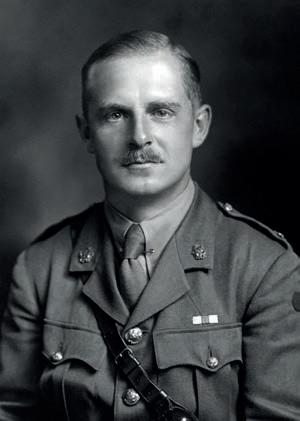
In seeking an architectural idiom for the Memorial Hall, William Newton (C1 1899-04) looked to the ancient world and to the stately elegance of the Ionic order, a style more dignified than the Doric, yet less inflated than the Corinthian.
Its moderation and restraint spoke of timeless values, of a moral purpose undeflected by the passions of the present – of rectitude, principle and gravity. Yet danger lay in pursuing the Classical template too thoroughly, the risk of delivering up a mausoleum rather than a place of remembrance. Stony austerity was thus softened by elements that acknowledged the old Castle Inn, the Queen Anne house that had served as the foundational core of the school. With neat synthesis of Ionic elegance and muted British Baroque, Newton achieved a just balance: a building that solemnly commemorated the dead while providing the living with a venue in which to exercise their youthful vitality and optimism.
These twin aesthetic forces – Classicism and Baroque – were artistic values much in vogue in the early 1920s. The cataclysmic destructiveness of the Great War had so traumatised Europe that there was a general retreat from those artistic movements that had challenged convention, such as Cubism, Fauvism and Futurism. Such hubris now seemed distasteful, and artists and patrons turned to the familiar and re-assuring, a move from the avant-garde to the arrière-garde. In 1919, the Cubist painter André Lhote called for ‘a return to order’, a term later amplified by Jean Cocteau; and so the inter-war period saw such former enfants terribles as Picasso, Braque, and Severini embracing Classicism with its civilizing balance, order, and harmony, correctives to the frightening forces of the machine age.
If Classicism provided the Memorial Hall with its overall tone, Baroque brought playfulness to its interior embellishments. We can see this in the remarkable ambulatory lobbies that give access to the Hall at its east and west ends. Built of English oak, these kiosk-like structures with their double leather-padded doors, continue to insulate the Hall’s interior from extraneous sound. But Newton went beyond the functional in his design, capping the Baroque lobbies with cupolas roofed with fish-scale wooden shingles, an inversion of the pattern deployed elsewhere in the Hall
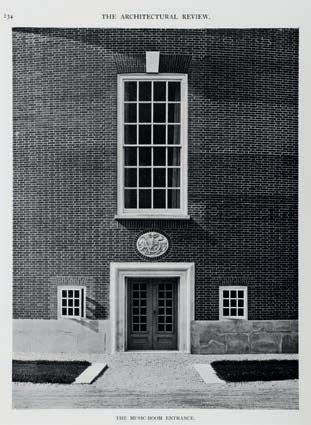
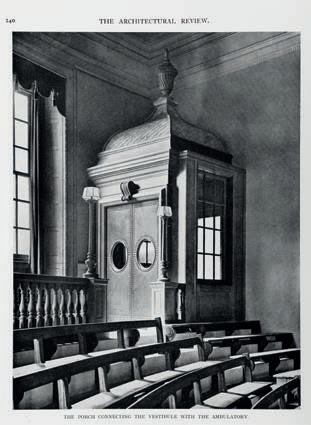
for ventilation grilles and transom lights. High over all, the cupolas terminated in flaming urn finials, details with significant symbolic freight. Long used in the iconography of funerary monuments, urns notionally held the sacred ashes of the dead, and with flames issuing from their lids, attested to their immortal memory – just as we find at the Arc de Triomphe with its Eternal Flame by the grave of the Unknown Warrior. Far from acting as general scenography within the Hall, Newton’s urns formed part of his wider memorial programme, linking with the massive urns flanking the ceremonial steps leading up to the Chapel, a connection underlined by their shared formal features and spiral fluting.
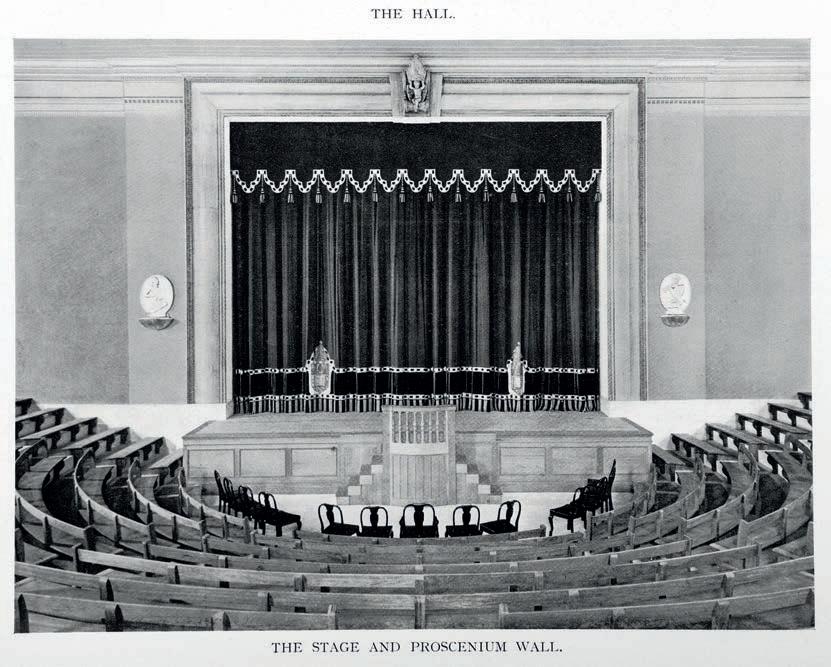

To execute the urns, Newton called upon the expertise of a fellow Old Marlburian, Esmond Burton (C3 1899-01), sculptor in wood, stone, and plaster. Burton was probably recommended for the task by Laurence Turner (C1 1877-81), who had taught him these skills, and who had been engaged by Newton to incise the names of
the 749 Old Marlburians who perished in the Great War, along the ambulatory’s dado. Burton was later to win acclaim for prestigious projects at Ripon Cathedral, several Oxford colleges, and for striking tympanum friezes at St Anne’s Cathedral, Belfast. By 1924, he had already gained experience with war memorials at churches in Buckinghamshire and Surrey. At Marlborough, Newton delegated to Burton much of the Hall’s sculptural detail, notably the keystone to the proscenium framing the stage. For this, Burton provided a Baroque winged putto perched on the scroll of a console. Sporting an athlete’s headband, the putto levers the College mitre above his head. This playful figure, approached by courses of decorative stucco moulded by Edward F Jackson (C2 1884-87), another Old Marlburian, still watches over the Hall, although his view is now impeded by the lighting rig and acoustic reflector introduced during refurbishment work in 2018.
Burton supplied Newton with two further decorative elements, both connected to the music rooms radiating off the corridor in the Hall’s basement and accessed by the south door. Displayed over the lintel was an oval Baroque-style trophy group carved in stone and consisting of a classical lyre, ancient horns, pan pipes, cymbals, drum-beaters, triangle and score, all suspended from a decorative ribbon. The relief carving was removed from the south wall and mounted over the swept stairs added in the early 1960s. Once into the basement area, pupils were reminded that the rehearsal facilities had been provided by the munificence of Herbert Leaf in memory of his wife, Rose, who had died in 1922. To direct young musicians down the corridors, Burton fashioned small parcel-gilt plaquettes showing putti signalling the direction of the rooms by puffing upon bannered trumpets.
The Baroque aesthetic appears again in three extraordinary lanterns formerly suspended from the ceiling over the body of the Hall. Sometimes assigned to Burton, but in fact personally designed by Newton, these great lights, reminiscent of lanterns hanging from the stern of a seventeenthcentury galleon, were illumined

by a cluster of small bulbs enclosed behind sandblasted glass. Ornament was supplied by recurring Classical rams’ head motifs and floral swags, and extravagant Baroque tassels draped over the suspension loops. These mighty lanterns of gilded pine and lead were made to Newton’s exact specifications by Wenham & Fowler of Croydon. Although preserved, they were not returned to the ceiling after the refurbishment.
For the Hall’s textiles, Newton turned to the most fashionable furnishing company in the country, Heal & Son, then as now based in their premises on the Tottenham Court Road. The chairman, Ambrose Heal (LSch 1885-87), grandson of the company founder, was another Old Marlburian, and a disciple of the Arts and Crafts Movement initiated by William Morris (Aa 1848-51). His company provided arras hangings in turquoise and silver for the spaces between the windows along the rear wall, an arrangement that concealed
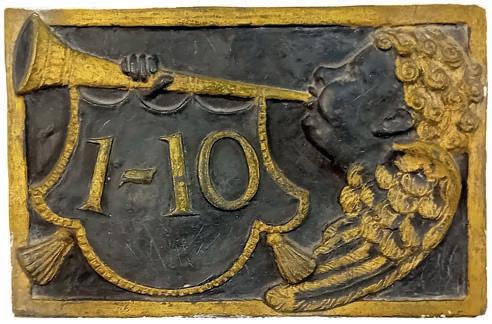
featureless expanses of rendering and helped dampen the Hall’s acoustics. However, most eyes were directed towards the massive stage curtains, heavy hangings predominantly in College blue with black and gold vertical candystripes along the hem, and black and ivory horizontal banding across their width. Each curtain bore a large representation of the College arms embroidered in silk. Early photographs show just how modish these curtains once looked, topped by a valance with rais-de-coeur scalloping and black and ivory tassels. Neither Classical nor Baroque, the curtains introduced to the Hall an unmistakable note of Art Deco. Through such eclecticism, Newton succeeded in showing his respect for tradition and openness to innovation, creating a building that looks both to the past and to the future.
Dr Simon McKeown (CR 2009- ) Head of History of Art (2011- )
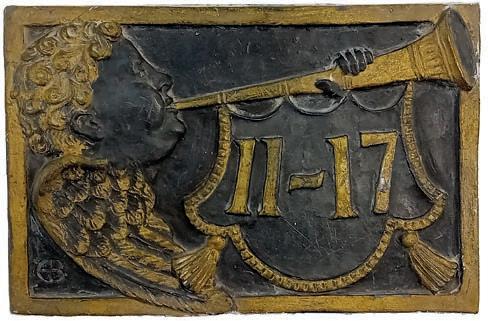

pioneer of British Art Deco and her work for Marlborough
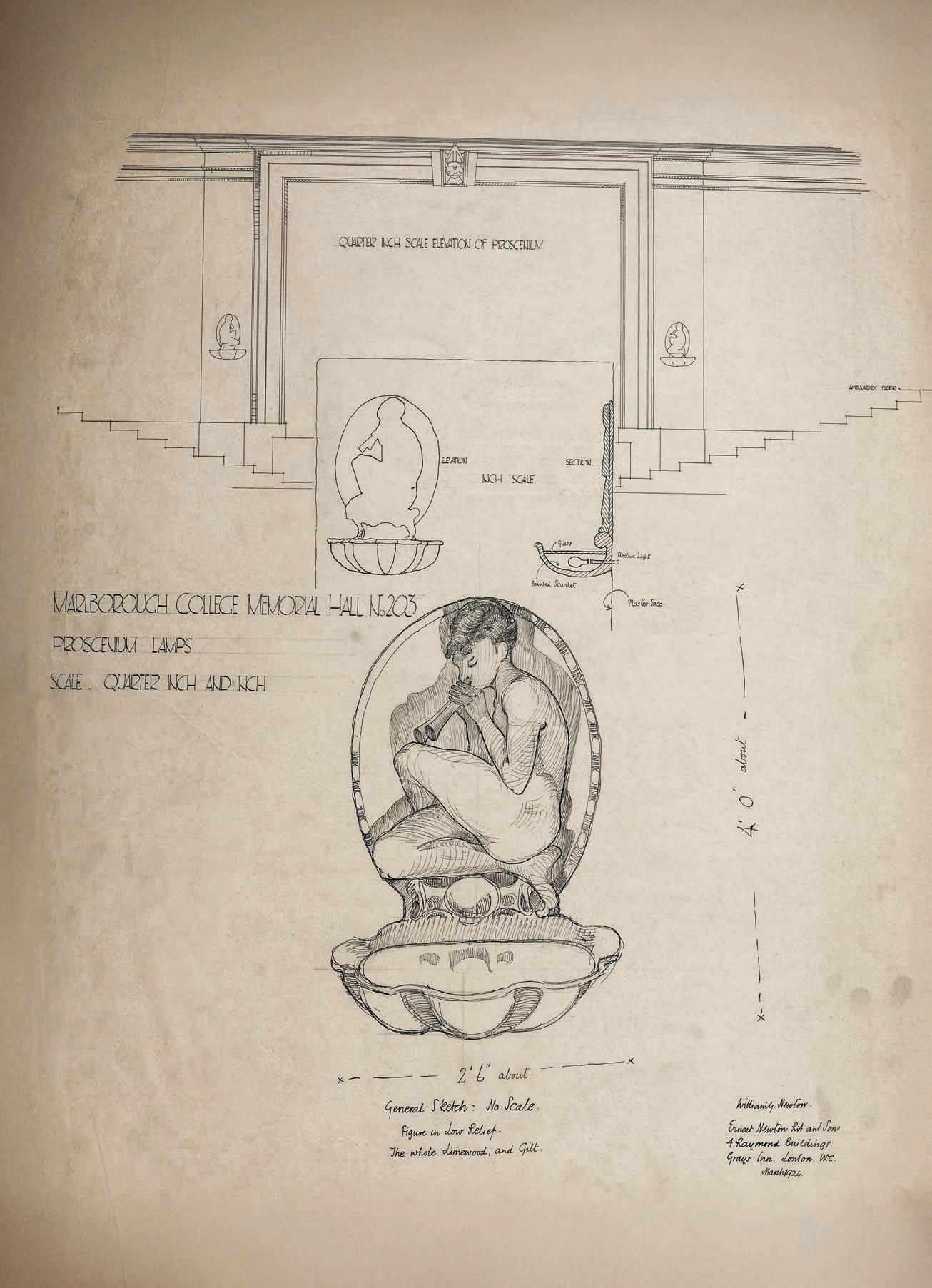
Among the most remarkable decorative elements that William Newton (C1 1899-04) conceived for the interior of the Memorial Hall were two lights for the walls flanking the stage. These so-called ‘proscenium lamps’ were to consist of concealed bulbs within glass-lidded basins set below gilded sconces. According to a drawing dated March 1924, the basins and sconces were to take the form of low-relief plaques carved in limewood and gilded for added lustre. The sconce to the left was to show a kneeling boy with his hands raised in rapture, while the one to the right was to feature a woolly-legged faun playing upon an aulos, or double-flute. In his design notes, Newton stipulated that the interior of the basins should be painted scarlet, so that when the houselights were dimmed, hidden bulbs would uplight the golden sconces with a roseate glow. Photographs from the 1930s confirm how striking this effect was to appear from the seats of the darkened auditorium.
The task of making the plaques was entrusted to an overlooked figure in the history of Marlborough’s artistic inheritance. Phoebe Stabler (1879-1955), née McLeish, was one of three sisters trained at the Liverpool School of Applied Arts and Architecture under the tuition of Augustus John, and Frances and Herbert McNair, close associates of Charles Rennie Mackintosh at the Glasgow School of Art. Under their encouragement, Phoebe showed early interest in European styles of Art Nouveau and Viennese Secessionism, developing an eye for strong design that characterised her later work. Phoebe was adept in all kinds of three-dimensional media – clay, stone, wood, bronze, gypsum, metalwork, enamel and more. Her engagement to carry out the sconces at Marlborough may have come about through intricate networks of artistic contacts. Phoebe’s husband, Harold Stabler, whom she had married in 1906, was a friend and business associate of Ambrose Heal (LSch 1885-87), and both men were prominent in the governance of the Design and Industries Association. In addition, Heal had some years earlier commissioned work from Phoebe’s older sister, Minnie, a textile designer. Aside from this, the Stablers had set up home in the Arts and Crafts enclave of Hammersmith Terrace, where, four doors down, lived the younger of William Morris’s daughters, the redoubtable May Morris, champion of art and handicraft, and passionate educator. May Morris was fully apprised of the new building taking shape at her father’s former school, and indeed in November 1925 was one of the first speakers invited to address pupils from its stage.
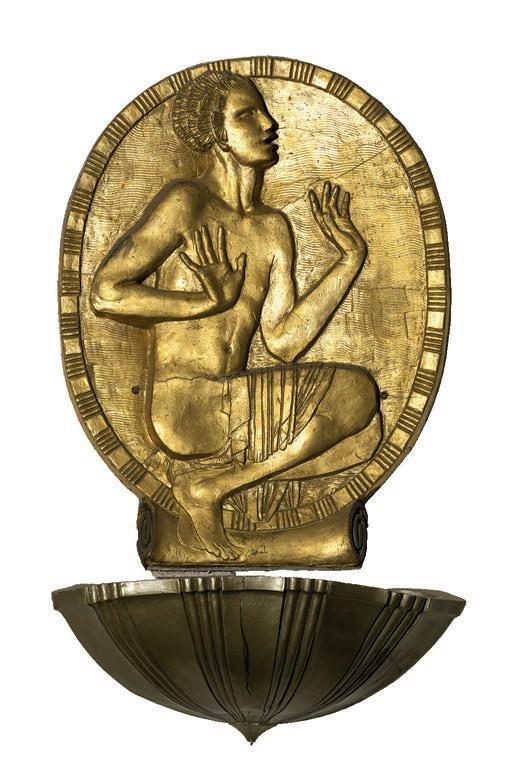
By the early 1920s, Phoebe Stabler had become recognised nationally for the decorative sculpture she created at her Hammersmith studio which she disseminated through leading porcelain and ceramics companies, such as Royal Doulton, Royal Worcester, and the Poole Pottery. She was also in demand for her garden sculpture, and it was natural that Newton should ask Stabler to provide the statue that still stands at the Court-end of the Rose Garden, and which was in situ the Garden was formally opened by Lord Methuen on Saturday 8th July 1922. The statue of an infant stepping through a garland and entitled Boy with Fruit had been cast in lead, and was deemed such a success that Stabler exhibited a second edition of it at the ‘Palace of Arts’ in the British Empire Exhibition at Wembley in 1924. That same year, Stabler sat on the committee of the Arts Council, one of only four women – another was Dame Laura Knight – among 111 men.
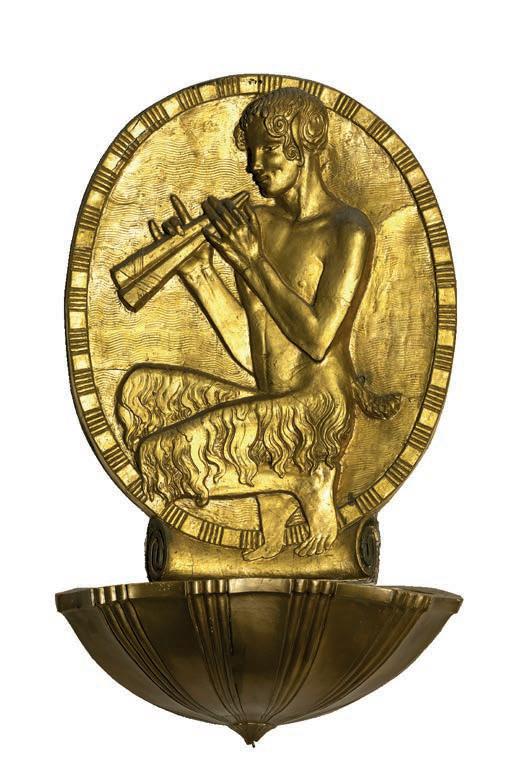
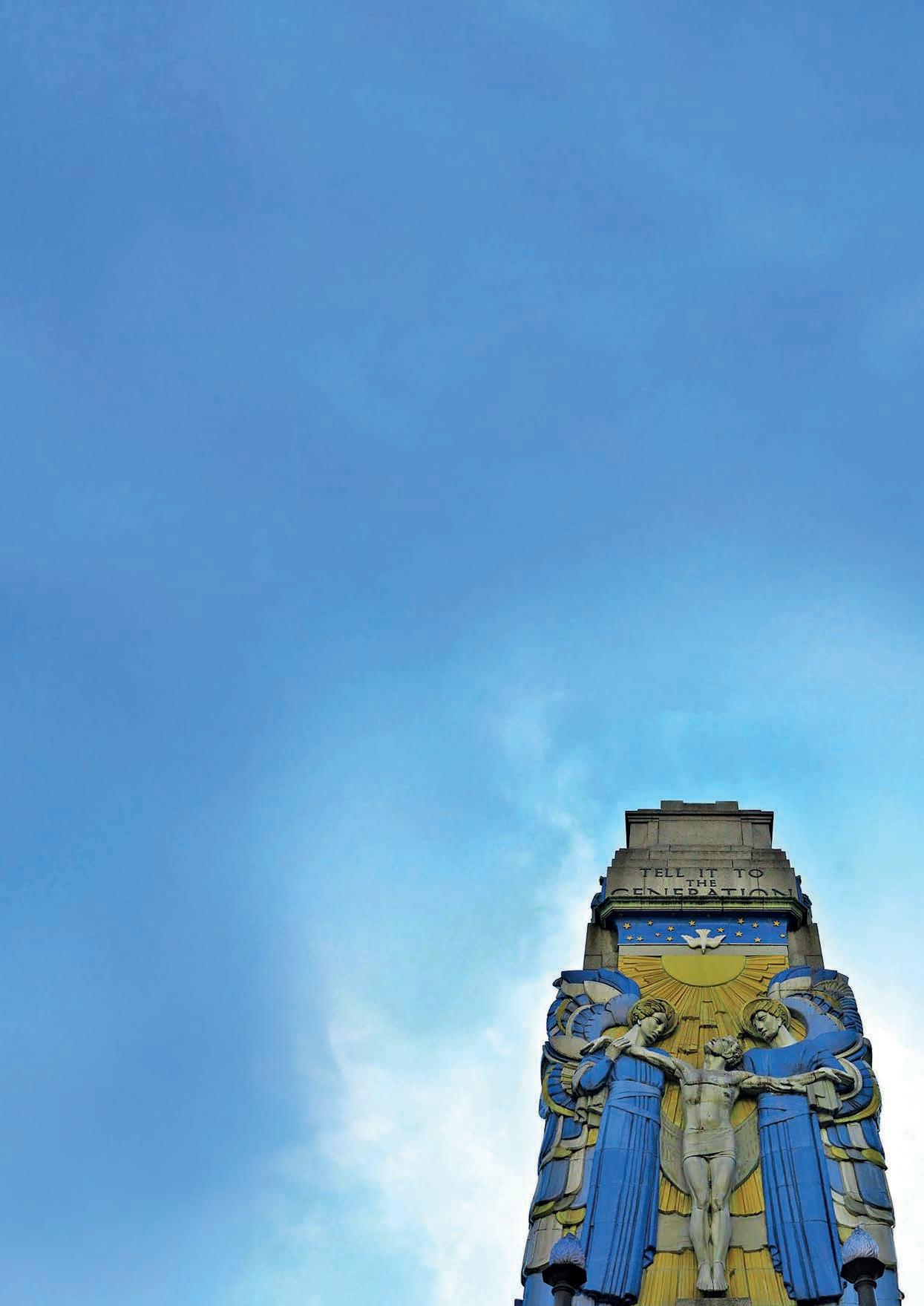
Perhaps what Newton had in mind for the Memorial Hall from Stabler’s repertoire was something in line with one of her best-known pieces, a garden plaque dating from 1914 known as ‘The Piping Faun’. It presented a blithe and mischievous figure tootling upon a flute while tripping through fields, all held within a floral garland. However, Stabler’s style had evolved in the intervening years, so the creature and his companion which she created for Newton spoke with a new artistic language. For one thing, she eschewed Newton’s limewood, modelling the sconces and basins in gypsum to which she applied gilding. Partly inspired by Antoine Bourdelle’s bas-reliefs on the façade of the Théâtre des ChampsÉlysées, Paris, and with something of the flat linearity of Eric Gill, Stabler’s work perhaps most closely resembles the gilded bronzes emerging from the studio of Joé Descomps-Cormier exactly contemporaneously.
Whatever her inspiration, the results were radically modern, and must be counted among the earliest examples of British Art Deco avant la lettre. The boy’s electrically charged hair, the wavy striations of the background, and the stiff poses reminiscent of Egyptian art – soon to become fashionable with Howard Carter’s archaeological discoveries – closely accord in style with the decorated friezes of the new aesthetic. For the next few years, Stabler explored the dynamic lines of Art Deco, and indeed exhibited at the famous Exposition Internationale des Arts Décoratifs in Paris that was to give the movement its name. Her boldest statement in the Art Deco idiom is to be found in South Africa at Durban’s First World War Cenotaph. This towering monument is adorned with Stabler’s huge sculptural group of two angels bearing up the body of a soldier, all glazed in faïence and extensively gilded. Although over four metres high and made from 14 tonnes of
clay, the Durban figures are stylistically akin to the earlier Marlborough sconces. Perhaps better known in this country is the fabulously sleek Wakefield Trophy in the National Motor Museum, Beaulieu awarded to Sir Henry Seagrave for the land-speed record in 1929. The stylised hair of the ‘God of Speed’ figured in the trophy resembles that of the boy in the sconces, a trope Stabler deployed again on a ceramic bust made for the Ashstead Pottery around the same date. Stabler was to win further acclaim at the Ideal Home Exhibition of 1930 with a piece developed conceptually from the Marlborough sconces: a gilded gypsum mask with a concealed light, part of a bathroom exhibit sponsored by the General Electric Company and the Daily Mail
In her work for Marlborough, Stabler was offering the College community a glimpse of Art Deco’s new aesthetic language, but it is not clear that her contribution was suitably acknowledged at the time. Newton famously set up a stone tablet facing the Water Meadows listing those who had assisted him in the building and furnishing of the Hall. Phoebe Stabler’s name is not among them, despite her national profile; if it were, it would be the only woman’s name on the list.
In a sense, the presence of Stabler’s faun and boy was consonant with the Hellenist vocabulary of the Memorial Hall’s wider architecture, but their verve and panache made these figures from mythology more Jazz Age than Golden Age. It was characteristic of the ‘return to order’ that artists re-engaged with the literature of antiquity, not least with its pagan gods
and goddesses, with satyrs, nymphs, sirens, tritons, centaurs, and fauns. Such figures featured prominently in the decorative schemes provided for grand houses, modish apartments, and up-market hotels in the Art Deco period. There was also a vogue for pairing figures together: the goddess Diana and a deer, Europa and the bull, a faun with a nymph. Fauns proved particularly popular, sprightly denizens of Arcadian forests and pasture, juvenile forces of nature, more mischievous than malicious, capricious, spontaneous, and gifted in music and poetry. It was this association with nature and the arts that is chiefly invoked in Stabler’s charming pairing of Marlborough’s faun and attentive boy. The theme belonged within Newton’s conception of the classical world that inspired the wider architecture of the Hall, the ‘hallowed precinct’ of the forecourt, and the floral grove of the Rose Garden approached through a pavilion inscribed with lines in imitation of Pindar. This quietly insistent Hellenism reminds us that with the exception of the bishop’s mitre held by Burton’s putto, the
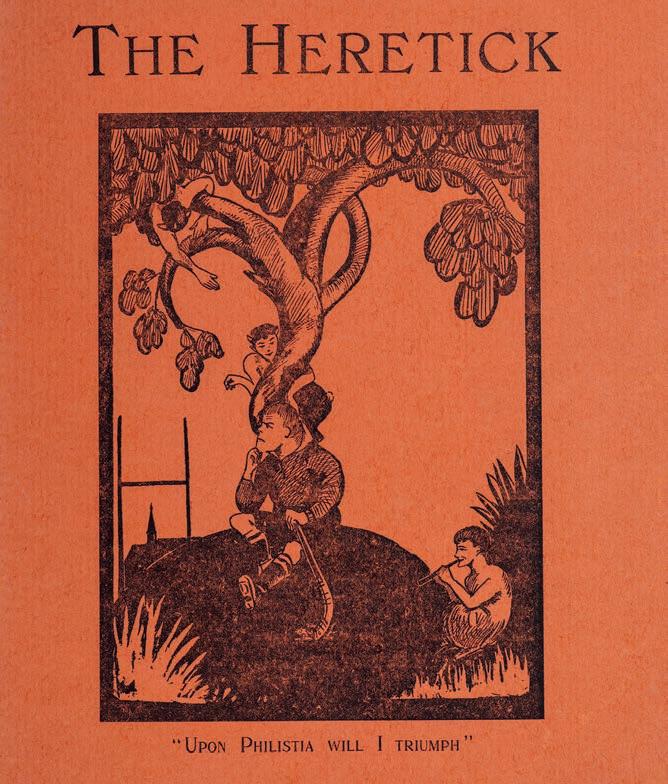
whole programme was determinedly secular. An early commentator, Darcy Braddell, fashionably hostile to all things Victorian, remarked how the Hall eschewed the ‘frightful “Onward-Christian-Soldiers” spirit that so permeated nineteenth-century scholastic architecture’. With rebellious relish, he concluded, ‘[here] a gilded faun takes the place of St George, a fat, bare cherub holds the mitre of the school arms, and lastly there are no texts from Ezekial painted anywhere’.
Despite his overheated tone, Braddell was correct to sense change in the air. In March 1924, the same month that Newton sketched his proscenium lamps, the first issue of The Heretick appeared with tacit approval of the Master, Cyril Norwood (CR 1916-25). This subversive magazine, famous in the lore of the College despite running to only two issues, was
largely the work of a cluster of self-styled ‘Aesthetes’, notably John Betjeman, (B2 1920-25), Anthony Blunt (C3 1921-26), and Matthew Wordsworth (B2 1920-24), son of the Bishop of Salisbury and great-nephew of the poet. The magazine bore an editorial elliptically critical of the College’s perceived championing of Athleticism, and included a precocious essay by Blunt entitled ‘Some Aspects of Modern Art’. But it was the image on the cover of The Heretick that caused most comment, a ‘deliciously cruel’ cartoon by John Bowle, future Fellow of Wadham College and prolific historian. Bowle showed a lumpen sportsman, or ‘Blood’, perched on a hill, baffled by teasing fauns –a cipher for the College’s hearty sportsmen outwitted by puckish aesthetes. One of the sylvan figures, seen in profile to the right, closely resembles Phoebe Stabler’s faun for
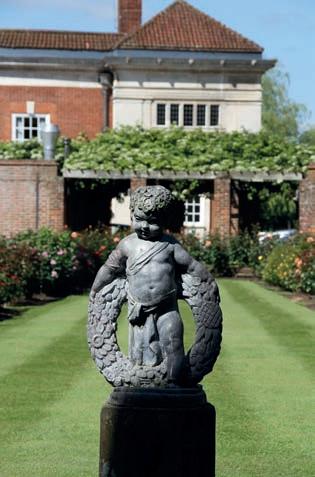
the Memorial Hall, replete with hairy haunches and aulos. From the long perspective of a century, it is hard to be certain which mischievous creature enjoyed precedence. It is an easier task to see how they diverged. For the fleet-minded young cynics of The Heretick, the faun stood for the provocateur, the prankster, a projection of their own impudent spirit. For Newton and Stabler, the faun embodied more positive values, ideals the College subscribes to still: the joy of learning, a delight in myth and the imagination, and the transformative power of art to awaken higher instincts within young minds.
Dr Simon McKeown (CR 2009- ) Head of History of Art (2011- )
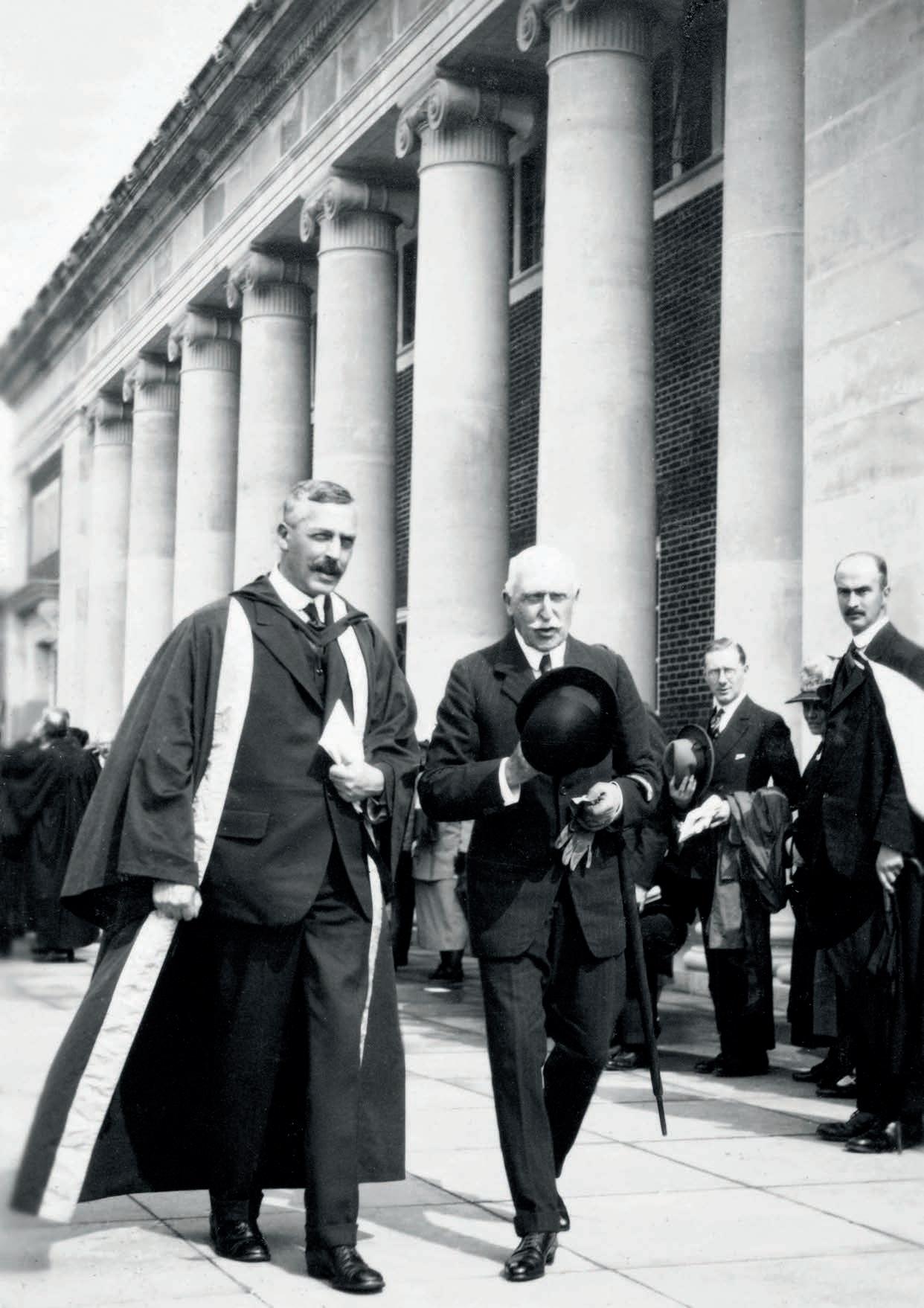
Saturday 23rd May 1925
On 29th May 1924 the ‘Notes on News’ column of The Marlburian magazine announced that the Memorial Hall was to be opened on Saturday 27th September. Alas, one month later, the editors regretted to inform readers that the date had been put back to the following year due to ‘unavoidable causes.’ These, we know, were the structural issues affecting the Hall’s foundations, but also included industrial strike action called by the contractors, a reminder of the country’s wider economic miseries. It was a relief to all when the new date of Saturday 23rd May 1925 was announced, and this time there was to be no further postponement.
The delay allowed the College authorities time to develop careful plans for the grand opening, not least provision for the comfort and convenience of the guest of honour, His Royal Highness Prince Arthur, Duke of Connaught and Strathearn, the youngest, and reputedly favourite, son of Queen Victoria. It was to be the duke’s second visit to Marlborough; his first, in 1872, had been in connection with his role as a young officer in the Rifle Brigade. Since then, Arthur had accrued over half a century of insuperable military authority, and was, moreover, a great champion of the young, as evidenced by his support for Baden-Powell and the Scout movement. Overtures to secure the duke’s attendance for the Hall’s opening were initiated by Lady Cecil Mary Wilson, widow of Sir Henry Wilson. It was probably not difficult for Lady Wilson to persuade the duke to lend support to her husband’s old school; the duke, one-time comrade of Sir Henry’s in Ireland, considered him as ‘one of my best and closest friends’.
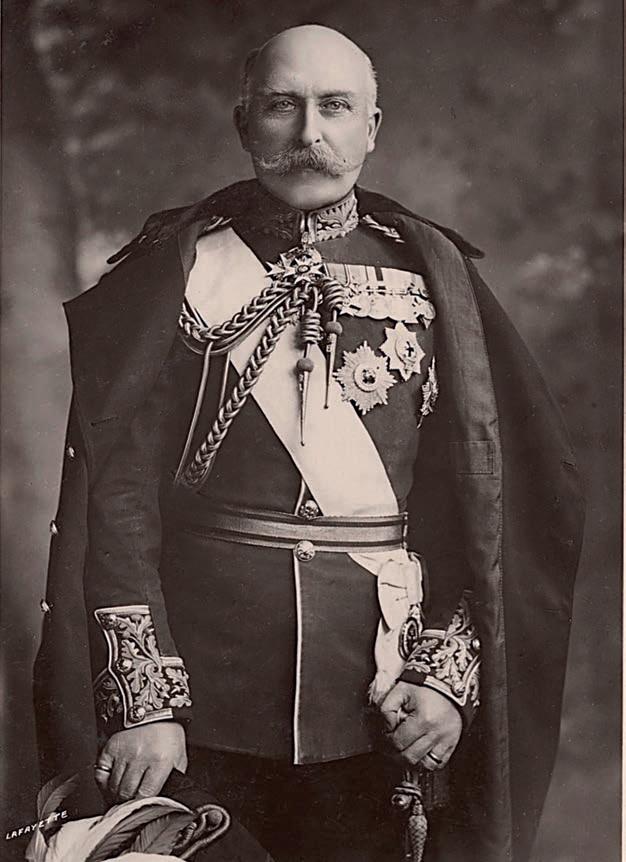
Early in 1924, discussions got underway between the College and Clarence House concerning the opening of the Hall and the duke’s role in it. They were led by the Bursar, Major Davenport, and members of Council Sir Humphry Rolleston and Ernest Burrell Baggallay, with the duke’s interests represented by the royal equerry Sir Malcolm Murray, comptroller to the ducal household. It was agreed that he would prefer an afternoon ceremony, but would not stay overnight since duties compelled his return to London. Rail was
the most efficient means to reach Marlborough, so it was decided that the duke would travel to Savernake Station, taking luncheon en route in a royal carriage joined to the regular service. Once at Savernake, he was to be met by a driver who would bring him to the College gates to be received by the Master and representatives of Council. Sir Malcolm let it be known that the duke expressed a preference for informality, and would in consequence wear ‘plain dress’, that is, a bowler hat and suit rather than top hat and frock coat.
The arrangements on the day flowed as smoothly as Major Davenport could have wished. Some hours before the royal train left London, another ‘Special Train’ chartered by the College from the Great Western Railway conveyed invited guests from Paddington to Marlborough. There they joined the Chaplain, the Rev JM Lupton, and the wider school community in Chapel for a brief service of thanksgiving (only ‘ten minutes’ a typed memorandum urged). As the Chapel echoed to the recessional anthem of the ‘Hallelujah Chorus’, the guests filed out by the west door and made their way down Newton’s ceremonial stairs to their seats inside the Memorial Hall. The pupils, meanwhile, were lined up on three sides of the new forecourt, while the fourth side, the terrace outside the Hall, was taken up by a 100-strong guard of honour drawn from the College Corps. With seamless choreography, the duke’s car drew up at the gates, and he emerged to be greeted by the Master, Dr Norwood (CR 1916-25). After introductions, he was led around the north side of the Chapel and to the head of the grand steps. On his appearance, the boys let out a hearty ‘three cheers’, whereupon he descended and inspected the Corps attended by Major C L F Boughey.
It was then the duke’s task to unlock the central door of the Hall with a key presented to him by the Master and to pronounce the building ‘open’, a feat heralded by trumpeters drafted in from a lancer brigade at Tidworth and drawn up opposite. As the royal party passed within, the pupils were ushered into the ambulatory at the back of the Hall where they were to remain standing throughout the speeches that followed.
According to The Marlburian, the emergence of the duke onto the stage of the Hall prompted ‘a storm of cheering that lasted a considerable time’ and only abated when Sir Humphry Rolleston stood up to ask
that order be restored. It was Sir Humphry’s role to thank the duke for his attendance and invite him to survey the Hall ‘that now awaits your approval’. The duke was ‘received with loud and prolonged cheers’ before delivering a concise speech concerning the exceptional sacrifice of the College, exemplified by the military honours won by former pupils, members of Common Room, and auxiliary staff alike. He paid personal tribute to Sir Henry Wilson (LI 1877-80), and acknowledged the presence of Lady Wilson among the guests. With some skill, the duke then switched the mood from reflection to rejoicing by asking the Master to grant an extra week’s holiday at the end of term, in

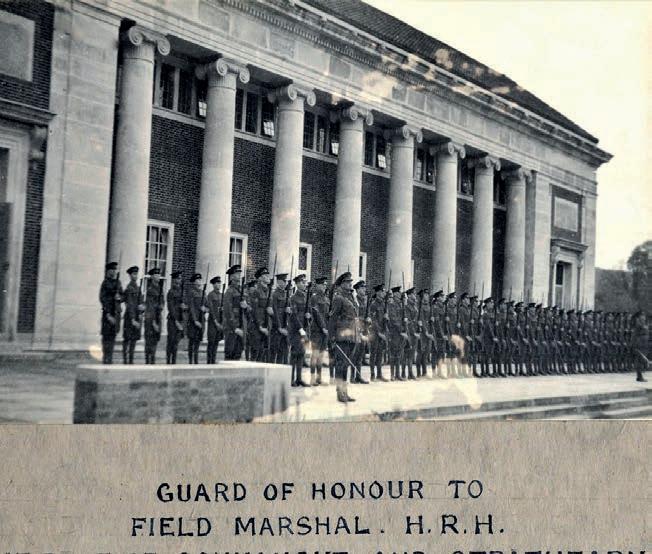
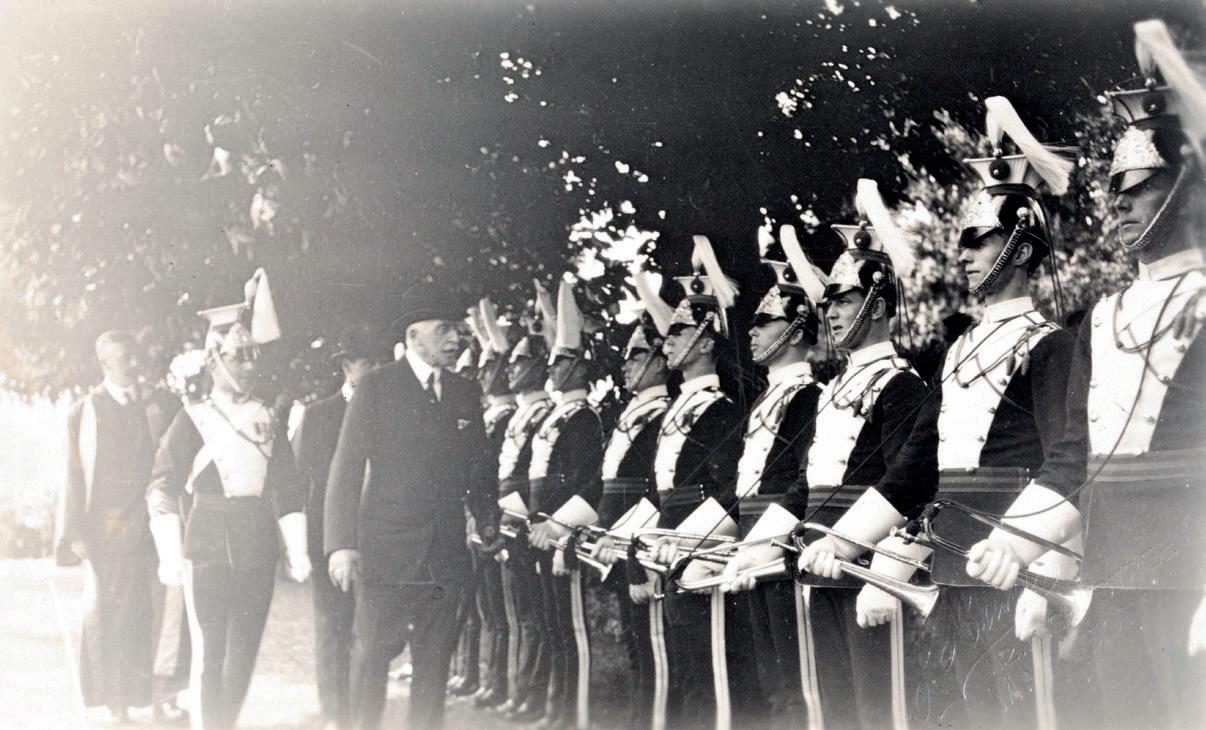

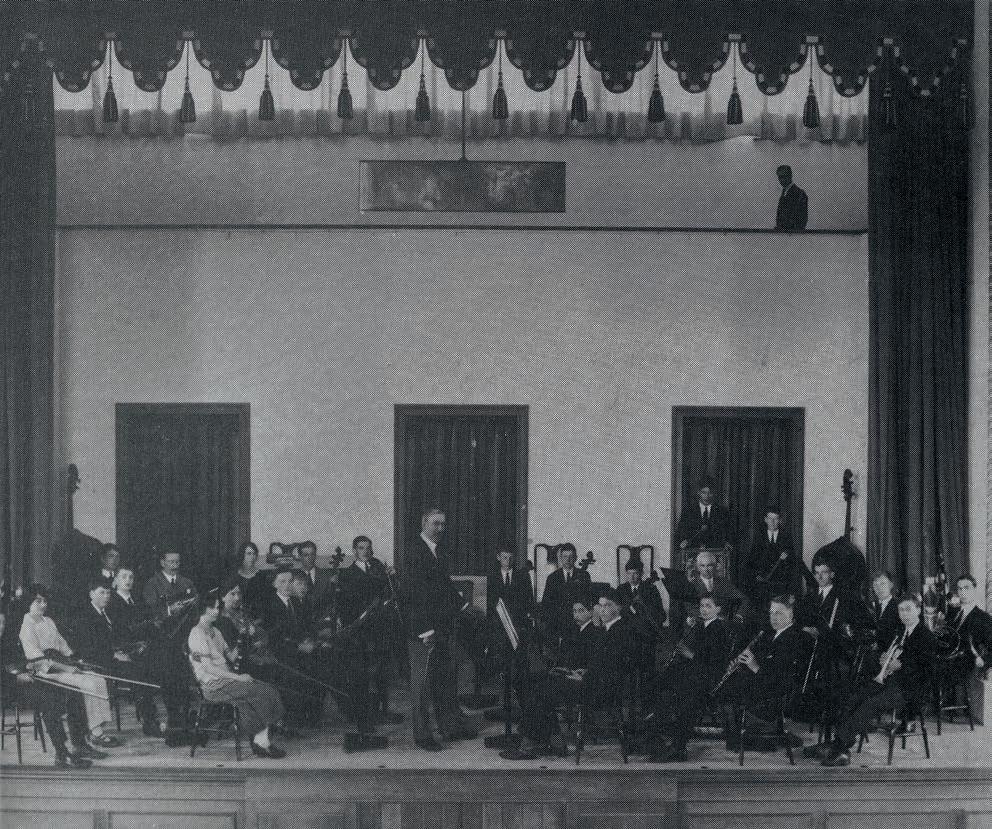
response to which Dr Norwood gave ‘nodding assent’. Next to the podium was John Wordsworth, Bishop of Salisbury, who spoke of the ‘mighty moral force’ of public schools within the country, and of his pride at the excellent ‘tone’ of Marlborough and its effect upon academic prowess. Finally, it was the turn of the Master to rise and praise the Marlborough family for its determination to build the Hall, and to thank those who had ‘given to the limit of their ability’ to ensure that an appropriate memorial now stood at the heart of the school. He paid particular tribute to William Newton (C1 1899-04), who ‘with so much skill, such unerring good taste, so nice a sympathy, has transformed into reality the vague ideal of a memorial, which though it floated in our
minds, we could not have realised ourselves’. He closed by addressing the boys lined along the ambulatory, exhorting them to ‘use your lives … that it never may be said that you were unworthy of those commemorated here, who failed neither their parents nor their school nor their country.’ Proceedings ended with the singing of the National Anthem, whereupon the duke ‘left the Hall and without delay entered his car’. He was ‘given a most hearty send-off, cheer after cheer being given for him, as he passed through the crowd gathered near the Gates’. The whole ceremony had lasted little more than an hour.
One boy ‘crammed into the ambulatory’, the future poet Louis MacNeice (C3 1921-26), informed
his father in a letter of 3rd June that the speeches seemed ‘a little dull, but we had a very good concert in the evening’. But almost everyone else regarded the opening as an unalloyed triumph, a whole College occasion carried off with due solemnity and a little panache. It was the fulfilment of much meticulous planning, and the pupils, elated by the heightened emotions of the day, undoubtedly felt an increase of pride in those who had given their lives for their country, and for the school that had nurtured them.
Dr Simon McKeown (CR 2009- ) Head of History of Art (2011- )
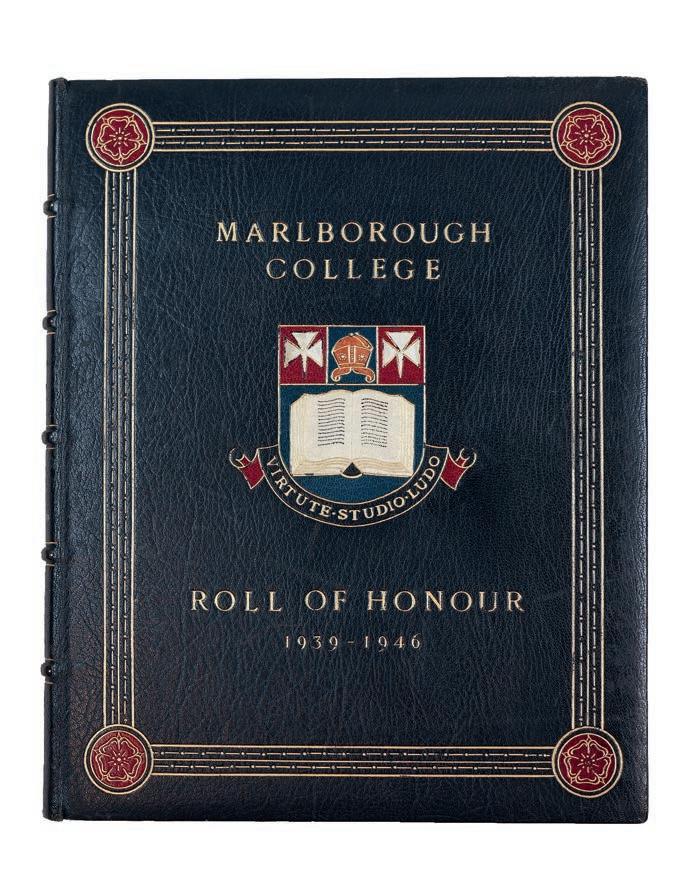
The first Old Marlburian to die in the Second World War was Nigel Burnay (B1 1929-34). A lieutenant in the Gloucestershire Regiment, he was killed on active service in France on 17th December 1939, aged twenty-three. In announcing his death, The Marlburian records a story about Nigel and his grandfather, who was Librarian at The Bodleian. In 1919 he had invited Burnay and some friends into the quadrangle of the library to watch a procession of heroes of the First World War, including Field Marshal Haig and Admiral Beatty. Apparently, so enthusiastic was the cheering from the Burnay contingent that Haig and Beatty stopped and laughingly acknowledged their greetings. As The Marlburian concludes, ‘Little did they know that they were stopping to salute one of the first victims of a new war on the Western Front.’
As it happens this was one of the few such announcements to appear in The Marlburian, for a decision was made early on not to provide the sort of extensive In Memoriam notices that had appeared during the First World War. The following was announced in 1940: ‘We regret that it would be impossible for us to publish obituaries of all those killed in War Service, and it is equally impossible for us to make any discrimination. It has therefore been decided to give detailed notices only of those whose names are well known either in public life or in connection with the School.’
The result is a much thinner record of the Old Marlburians who died between 1939 and 1945, similarly reflected in the Roll of Honour for the Second World War. Whereas for the First World War there is a Roll of Honour for each House, containing wherever possible a photograph and substantial biographical information of each individual, for the Second World War the Roll of Honour is a thin single volume recording in no more than three lines the bare facts of each of each Old Marlburian who died. Four hundred and fifteen names are recorded in that book and are inscribed on either side of the doorway in the west portico of the Memorial Hall.
Those 415 young men served all over the globe and in the full range of the armed services of that time. Five of that number, for example, were amongst the thirteen who fought in the Battle of Britain, the youngest of whom was David Jenkins (B2 1933-1937) who was 21 when shot down on 30 Aug 1940. At least twelve of that number died whilst taking part in the battle for Normandy following the D-Day landings, the first to fall being Hugh Herdon (C3 1919-1923) Commanding Officer of the 2nd Battalion of the Royal Warwickshire Regiment who landed on Sword beach near Lion-sur-Mer. Hugh died on June 7th.
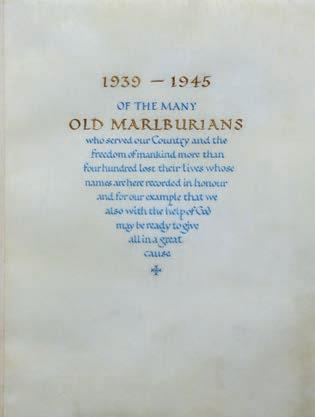
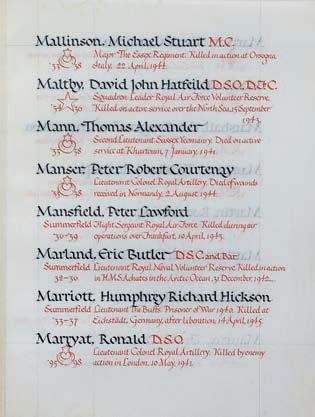
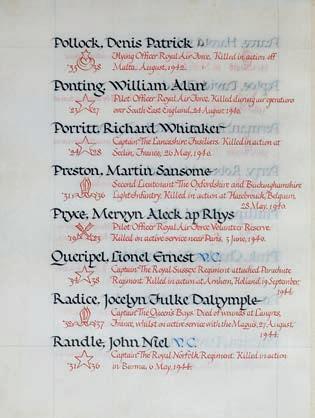
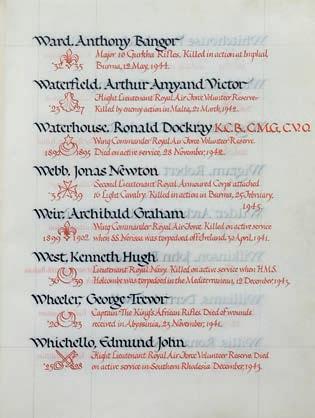
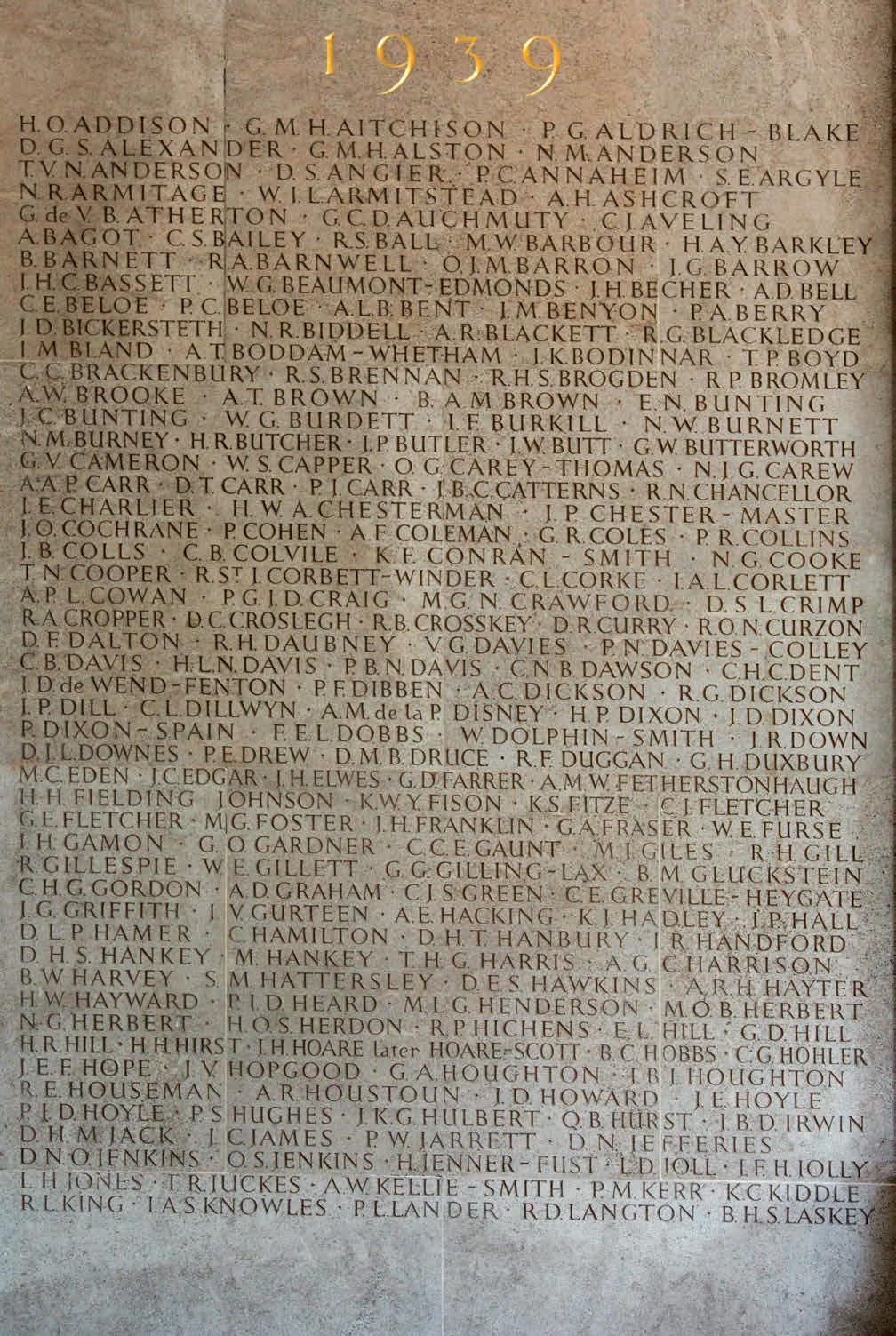

As in that earlier war, so in the Second World War three Old Marlburians were awarded the Victoria Cross, two of them posthumously. Eric Wilson’s Victoria Cross for conspicuous bravery in Somaliland in August 1940 initially appeared as a posthumous award also, but he was later found to have survived and taken prisoner. John (‘Jack’) Randle (B3 1931-36) was a captain in the Royal Norfolk Regiment in the Battle of Kohima in May 1944. In the previous month Kohima was besieged by a Japanese division spearheading what they hoped would be the invasion of India. The defenders held out for two weeks until relieved by their comrades of the 2nd British Division. The ensuing battle, fought extremely hard at close quarters for more than two months, was a vital defeat of the Japanese by the British and Indian armies and a turning point in the war in Asia. It was in such close-quarter fighting that Jack Randle was killed, on 6th May, having single-handedly taken out a Japanese machine-gun bunker by throwing a grenade through the bunker slit and then flinging his body across the slit so that the aperture should be completely sealed. His citation records that ‘The bravery shown by this officer could not have been surpassed … and enabled not only his own Company but the whole Battalion to gain its objective and win a decisive victory’.
Four months later, in the Battle of Arnhem, Randle’s housemate Lionel Queripel (B3 1934-38) won the Victoria Cross for displaying ‘the highest standard of gallantry under most difficult and trying circumstances’ during a period of ‘nine hours of confused and bitter fighting’. Advancing along a road on an embankment towards Arnhem on 19th September 1944, Captain Queripel’s Company came under intense machine-gun fire, resulting in heavy losses. Having reorganised
his force, Queripel led an attack on the enemy’s strong point and succeeded in killing the crews of two machine guns and recapturing a British anti-tank gun. The advance was able to continue, but later in the day he and a small party of men were cut off and unable to resist the enemy’s fire. By this time he was severely wounded. Realising that it was impossible to hold the position, he ordered his men to withdraw. Queripel insisted on remaining behind and died covering the withdrawal with only his pistol and a few remaining hand grenades.
Another posthumous award was that of the George Cross to Old Marlburian Arthur Nicholls (C3 1924-29) ‘in recognition of most conspicuous gallantry in carrying out hazardous work in a very brave manner’. In October 1943, Brigadier Nicholls was parachuted into Albania to assist with resistance activities against the German occupying forces. Following an attack on the resistance group by the German forces in December 1943, he was forced to flee into the mountains. During the harsh winter conditions, he developed frostbite in his legs, which became so severe that he ordered that both his legs be amputated. After the operation, he was dragged by two members of his group as he wished to impart essential information to the Allied authorities. However, the weather conditions and Brigadier Nicholls’ medical condition deteriorated, and he died on 11th February 1944, aged thirty-three.
Another who died behind enemy lines was Thomas Mellows (SU 1933-38), who was parachuted into France in August 1944 to help the French Resistance in the southwest. It was the most difficult drop any of the team had experienced and, landing on very rough ground, Mellows incurred a fresh injury to an already damaged foot. After
combining with some local groups, they succeeded in defeating a large troop of German soldiers and liberating a local town. Advancing to a neighbouring town they were then met with a heavily armed German counter-attack. Further wounded, Mellows refused to be evacuated and, along with others, was taken prisoner. His murdered body was found the next day.
Two Old Marlburians took part in the Dambuster raid (Operation Chastise) of May 1943. John Hopgood (C1 1935-39) was selected by Guy Gibson as his deputy for the attack on the Möhne Dam. With his aircraft already damaged by flak en route to the dam, Hopgood followed Gibson on his bombing run but their bomb bounced over the dam. The aircraft was further damaged by anti-aircraft fire and the starboard wing caught fire, but Hopgood managed to climb to gain height, enabling two of his crew to bail out. Despite this, the plane crashed in a field nearby, killing Hopgood and the four remaining members of his crew. David Maltby (B3 1934-36) was also in the first wave to attack the Möhne Dam, which his bomb succeeded in breaching – his Lancaster being the first to land back at RAF Scampton. Four months later, on 15th September, Maltby was on another raid, to bomb the Dortmund-Ems Canal, which was cancelled due to fog. Returning to RAF Coningsby in poor visibility it is assumed that his plane suffered a mid-air collision with a Mosquito returning from another mission over the North Sea. His body was the only one recovered from the crash site.
The most highly decorated Royal Naval Volunteer Reserve (RNVR) officer of the war was Lieutenant Commander Robert Hichens (B3 1922-27). After completing his war training in just six weeks in October 1939, he served in
minesweepers and, in May 1940, his ship was sent to Dunkirk. During the evacuation, Hitchens went ashore several times to organise the transfer of troops into small boats, for which he was awarded the Distinguished Service Order (DSO). He later transferred to the command of a motor gun boat in Coastal Forces at Felixstowe and, in September 1941, was given command of 6th MGB Flotilla, becoming the first RNVR officer to achieve this level of command. His flotilla was regularly involved in high-speed actions with German ships off the Dutch and French coasts, sinking several of them. Hichens was awarded a total of two DSOs, three Distinguished Service Crosses and two Mentions in Dispatches, before he was killed on the night of 12th April 1943 in another Channel engagement.
Three names on the Roll of Honour for 1939-1945 match those for the First World War, sons of former Old Marlburian heroes. John Dill (A 1930), whose father, Robert, was killed at Neuve Chapelle in April 1915, died in the German airborne invasion of Crete on 2nd June 1941. Leslie Richmond (PR 1928-33), named after his father, the first Old Marlburian to die in the First World War, was killed on 7th May 1940, when his tank was hit while trying to cross the Somme near Amiens. William Burdett (B1 1922-24), whose father died on active service in 1916, was himself killed in action at sea while being evacuated from the Norway campaign.
Alongside all these names engraved on the wall in the west portico of the Memorial Hall are the names of those Old Marlburians who died in more recent conflicts. Ten names grace this panel – including two who died in Palestine in the immediate post-war period, five who died in Korea, one in Malaya and one in Cyprus. The most recent Old Marlburian to be thus honoured is Herbert Richard Westmacott (B3 1965-69), who, as an officer in the Grenadier Guards on extra regimental deployment to the SAS, died in an encounter with the Provisional IRA on 2nd May 1980. He led his men in an attack on a building known to house a notorious IRA unit nicknamed ‘the M60 gang’ but was killed by their machine-gun fire. He was posthumously awarded the Military Cross for gallantry in Northern Ireland.
So, 1,174 Old Marlburians in total are remembered for their sacrifice in the building designed by William Newton and opened on 23rd May 1925 by the Duke of Connaught, their names engraved on the walls of that building brought to life by their stories.
David Du Croz (CR 1996-07)
former Head of History
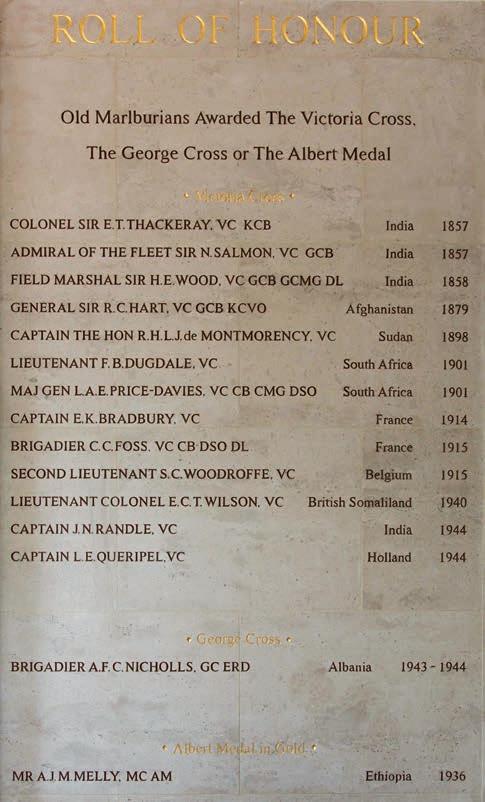
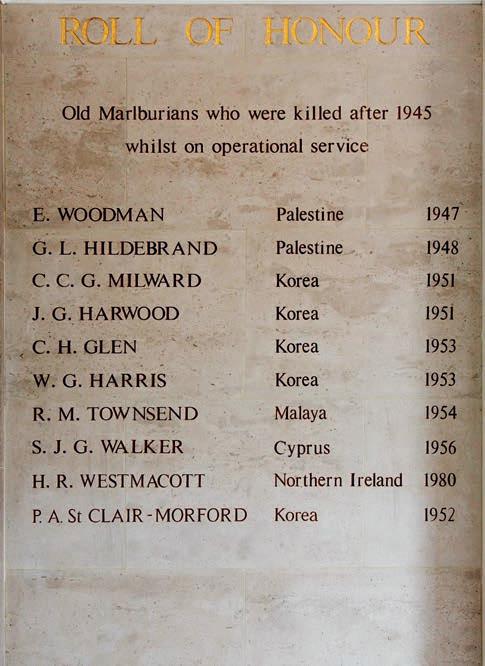
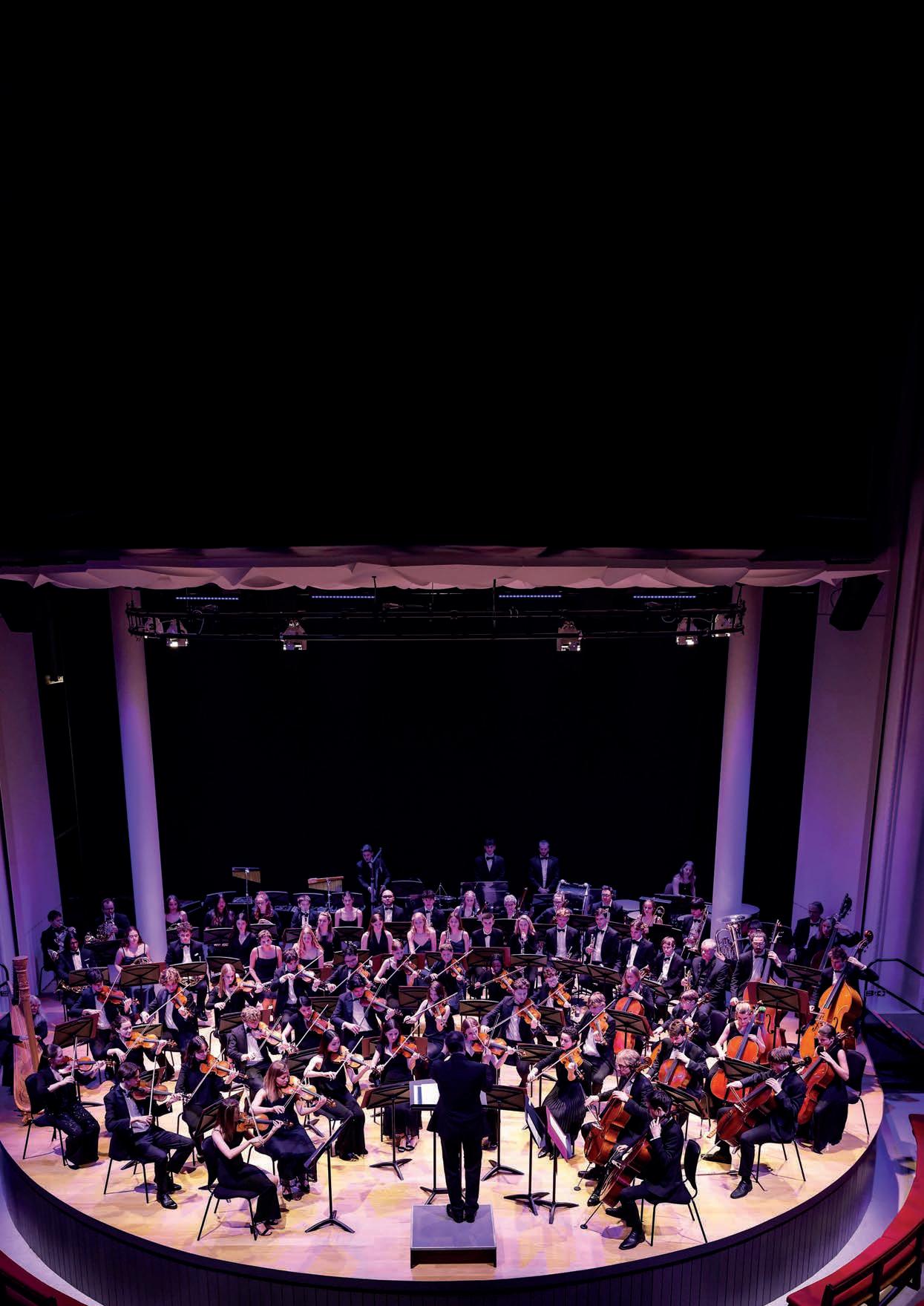
Together with Chapel and the Norwood Hall, the Memorial Hall is one of those College buildings of which every Marlburian, every member of Common Room and many members of the support staff, not to mention visitors, friends of the College and local residents, will undoubtedly have special and particular memories. It is very likely – indeed it almost goes without saying – that many of those memories will be musical.
Despite the difficulties encountered in the design and construction of the Hall, the College has been blessed since 1925 with an exceptionally fine venue for musical performance. As we now celebrate the Hall’s centenary, some of those who have been centrally involved in its musical life reflect on many years of outstanding musicmaking in a most special space. My warmest thanks go to all the contributors for their generous recollection of musical memories of the Memorial Hall.
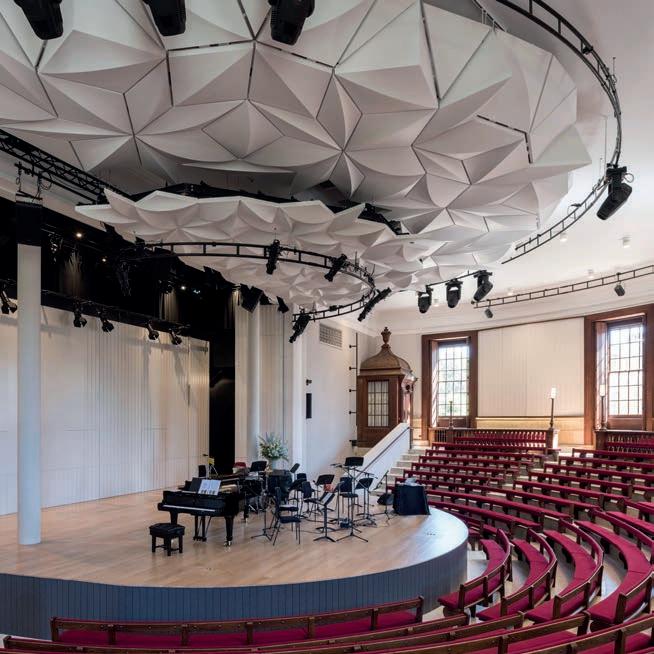
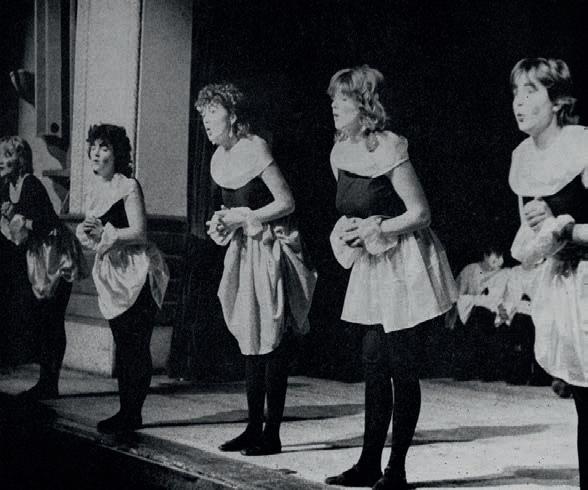
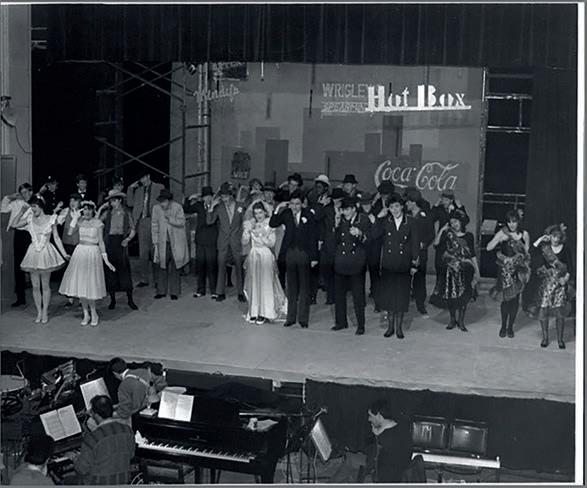
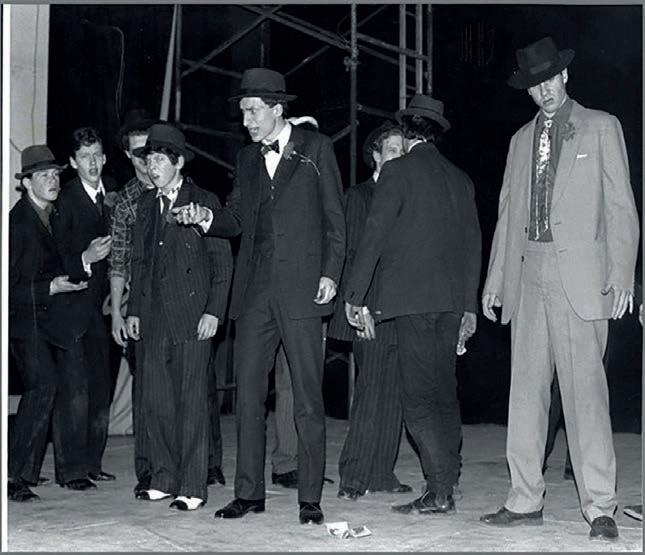
The Memorial Hall has always been an important place for the rehearsal and performance of music at Marlborough.
Robin Nelson, Director of Music (1982-03) reflects on the Hall and its role in bringing together his department and providing a most versatile home and central showcase for music.
When I arrived in 1982, the Memorial Hall had long been notorious for its spartan furnishings.
The stone flooring and wooden seating were fine for short assemblies but not ideal for the series of professional subscription concerts held there on Sunday evenings during the winter months. In those days, audience members in the know would routinely bring their own cushions to concerts! There was therefore much rejoicing in 1993 when the benches were finally upholstered, a gesture from new Master, Edward Gould (CR 1993-04). Upstairs, the East Room was used for class music lessons. On the opposite side, the West Room was a teaching room and was graced with a piano said to have been played by Liszt. Under the Hall, the Leaf Music Rooms accommodated the Head of Strings and the team of string tutors.
In the auditorium itself, visiting artists often commented favourably
about the venue, including singer Emma Kirkby who found the central “sweet spot” on the stage, and local conductor Roger Norrington who attended a concert and thought it a lovely room with an intimate feeling.
It wasn’t always easy maintaining a professional appearance in what was, after all, a school hall. Careful preparation before concerts was essential. All seemed set fair when, in September 1985, college organist Chris Rathbone (CR 1973-96) and I sat looking up to the stage on the Friday before the appearance of the very temperamental Russian virtuoso pianist Shura Cherkassky: flowers were in place, tear in curtain mended, stage swept, the Steinway piano in position. ‘What could possibly go wrong?’ I asked myself, but Chris’s gaze appeared to be focused above the piano, where two bats were circling in the fading light. The Estate Department thought it
highly amusing – ‘bats are protected species, you know’ – but they sent someone down to investigate. He worked out that the escape route for the bats was a hole in the cupola on the east side and, once darkness fell, stuffed a large piece of hessian into it. Thankfully the bats did not return.
Perhaps the most delightful incident when the Hall’s wildlife threatened to upstage a concert performance was a recital given by the great cellist Paul Tortelier. This was the famous butterfly concert in November 1981, before my time at the College. See page 87, where Tortelier himself recounts this magical evening in his own words.
For the Director of Music, simply keeping artists happy could be a challenge: the Pékinel Sisters piano duo wanted two dressing rooms with mirrors and a second grand piano; Jacques Loussier asked in advance for two bottles of Châteauneuf du Pape; and when Peter Knapp came with his Travelling Opera company, the stage apron had to be removed to accommodate his pit orchestra.
Encouraged by the Master, Roger Ellis (CR 1972-86), in 1982 I revived the House Shout, an all-school affair that had fallen into disrepute and had been axed by a previous Director of Music. With Howard Goodall judging and all houses taking part, the evening was a huge success, part of a deliberate move to remove
the stuffiness from College musicmaking and an event for which the Hall was admirably suited. Then in 1983 came the Musical Oh! What a Lovely War in collaboration with David Whiting (CR 1970-05). This was soon followed by the first of Adrian Leang (CR 1981-93) and Richard Harman’s (CR 1984-88) productions, Guys and Dolls, at a time when the more donnish beaks questioned the value of musicals. It went down very well, so another tradition for the Memorial Hall was established, which would run for some twenty-five years, before musicals found a new home in the Ellis Theatre.
A special feature of the day-to-day life of the Hall was that the light and sound management of the stage from the lighting box was the province of a team of dedicated and talented pupils. Each Shell intake saw new recruits through the system of Tuesday and Thursday afternoon options. They learned a huge amount from the experience, and at least one went on to take up stage management and lighting duties in London’s West End. Their most demanding challenge was probably the annual Celebration of the Individual, which took place each Lent Term from 1983. As talented musicians such as Toby GraffteySmith (B3 1984-89) (later Toby Smith of Jamiroquai) found their voices, the lighting technicians were determined to prove their worth: strobe lighting, smoke effects,
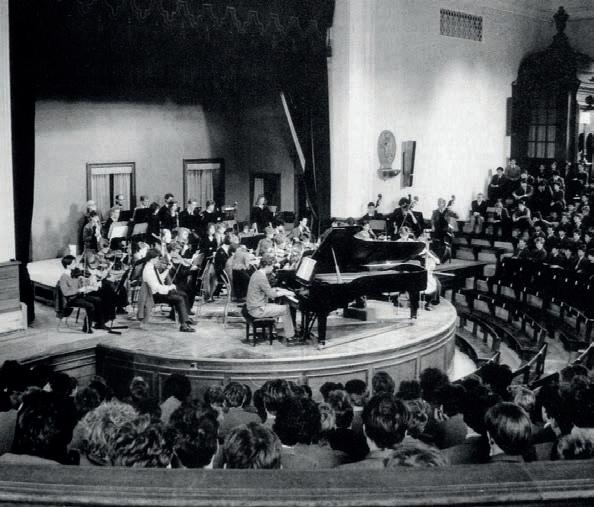
Toby Grafftey-Smith (B3 1984-89)
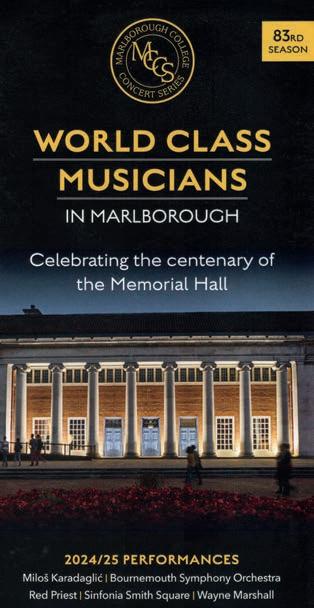
roving spotlights – they were up for all the gimmicks.
I still return to the Hall to attend the excellent Concert Series, as the Subscription Concerts are now called, and reflect on the march of time and the many changes and improvements that have occurred since my era. With the creation of the Henry Hony Centre, the Music Department has at last gained a proper home. The Old and New Music Schools have given way to an Art School and an Innovation Centre. The Hall has been completely refurbished and now has the feel of a professional concert hall. I have occasional flashbacks as I sit in those now very comfortable seats: extraordinary concerts with the different school orchestras and ensembles; wonderful concertos and other solo performances by pupils who have gone on to fine musical careers; memorable rehearsals with the Choral Society before bringing the spring concerts together in the Chapel; or more particularly, the time that Chris Rathbone (CR 1973-96) struggled to prevent the Steinway grand piano from toppling off the stage, or the moment when a group of College bagpipers descended from the ambulatory in full regalia to join Brasser in a Tartan Medley. Then I come to my senses and feel how good it is that this Hall full of memories still reflects the importance and excellence of Marlborough’s music. Happy 100th birthday!
Philip Dukes has been Artistic Director and Director of Music at Marlborough since 2007. In 2017-18 he was involved in the £6.5m refurbishment of the Memorial Hall. In conversation with Andrew Brown, he discusses the continuing central importance of the Hall in the musical life of the College.
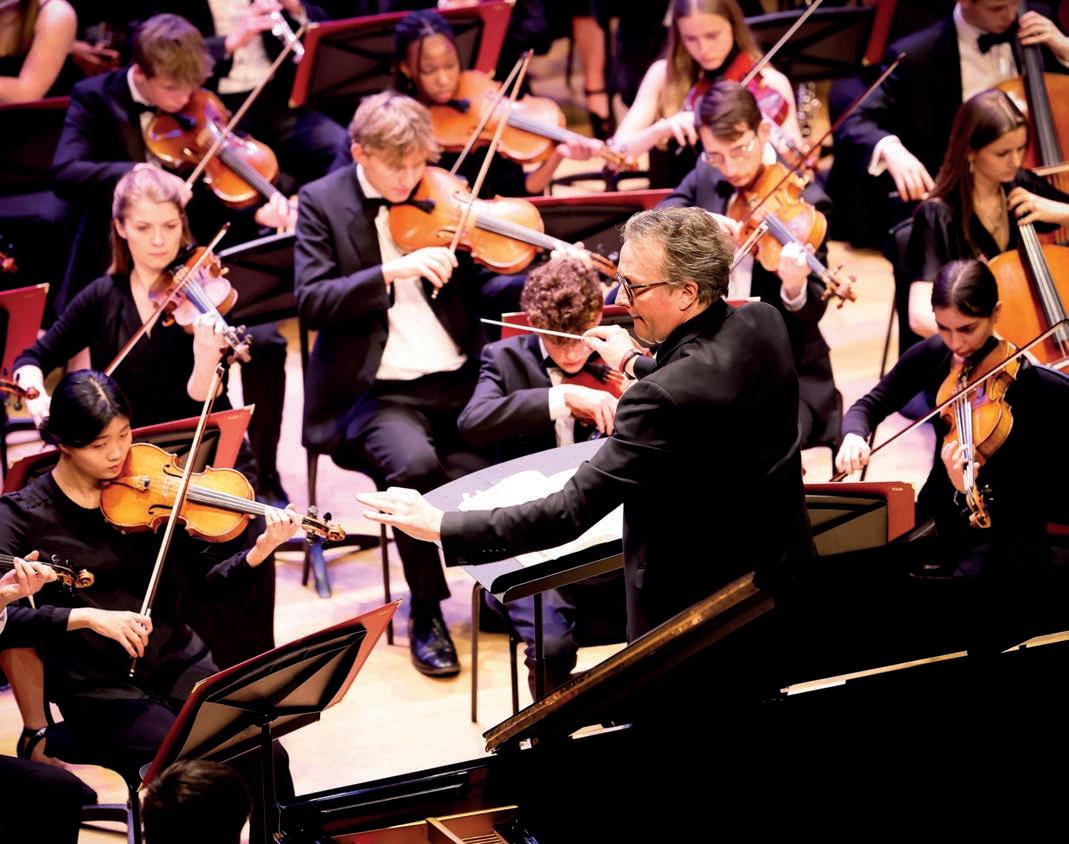
AB: How is the Hall used today as a venue for Marlborough music?
PD: We have other performance venues, such as the Goodison Hall, the Chapel, the Adderley and, at times, the Ellis Theatre, but the Memorial Hall remains our ‘golden egg’ auditorium. In a way, we deliberately put it on a pedestal, and the pupils’ sense that. They recognise the professional environment of the stage, the lighting, the adjustable acoustic, the decor, the dressing rooms –it creates a real sense of occasion.
AB: What musical events of the school year take place there?
PD: All the main ensemble concerts, with Brasser, Chamber Orchestra and Symphony Orchestra, including, of course, the annual weekend visit and side-by-side concert with the young professionals of Sinfonia Smith Square in the Lent Term. Other senior groups (Big Band, Percussion Ensemble and the Saxophone Ensemble) and junior groups (Jazz Ensemble and Sinfonia Strings) perform there too. The end-of-year showcase concert in June


takes place in the Hall, and we have moved the evening recitals there, certainly at senior level, with Music Scholars and advanced pupils. Even if the audience may look a little thin, compared with, say, the Goodison Hall, the trade-off is that pupils can perform in this amazing space –and of course the pianists have the chance to perform on the wonderful Steinway concert grand.
AB: Are there any interesting collaborations or special events over the year?
PD: We have started a collaboration with History of Art. The Hall is ideal – the screen comes down and we show the amazing pictures, with the music accompanying. Of course, there is the House Shout and House Harmony, as well as one-off concerts, such as recently on the Prep Schools’ Directors of Music Day, or the lunchtime recital when we hosted the Eton Group meeting for Directors of Music. There are also outside performers such as Tom Odell, and some amazing evenings in the Summer School over the years. There have been new initiatives recently, for example a junior orchestral workshop for Shell and Remove on some Sundays through the year. Once a term there is a Rock and Pop Concert on a Saturday evening –that’s always popular, as are the two Songs from the Shows concerts each year.
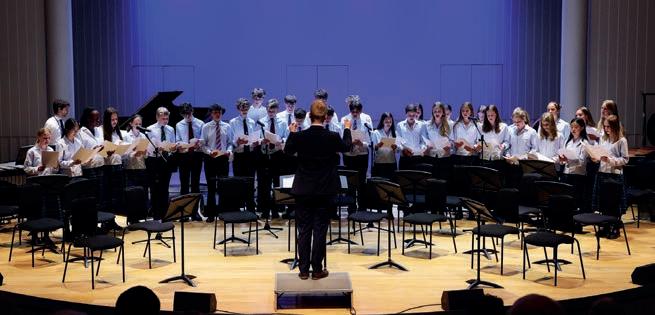
AB: Have there been any particularly memorable pupil performances recently?
PD: When I arrived, I wanted to ensure that at the heart of the department the Music Scholars were strong. In that way, everyone else would be inspired and would flourish. I started to develop that side through recruitment, building our reputation, and defining what a Music Scholar was and did. When these pupils really engage, they lift the place. Some of the concerto performances have been particularly memorable, such as Lizzie Daniels (IH 2014-16) playing the first movement of the Beethoven Violin Concerto (with cadenza!). It was a magnificent evening, and memorable in more ways than one – someone pledged £10,000 to the Music Department on the spot! Now there is an expectation of repertoire – definitely nothing ‘arranged for school orchestra’. Of course, there are ups and downs, but we have some great younger players coming through, which is very exciting. Other special memories? Jess Faber (CO 2017-19) playing the first movement of the Rachmaninov Second Piano Concerto, and Poppy McGhee (NC 2018-23) playing the last movement of the Mendelssohn Violin Concerto. And the story continues, for example with Poppy, who, without having been at a specialist music school, won the top award (as a violinist, no less!) at the Royal Academy of Music in 2023. The Memorial Hall played a vital role in that: lessons there on the stage –how special is that, to have your own private concert hall!
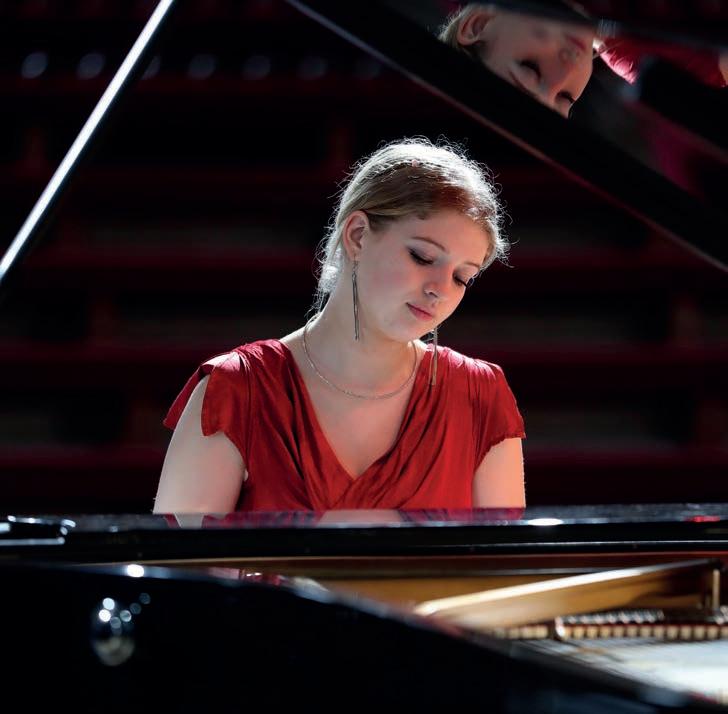
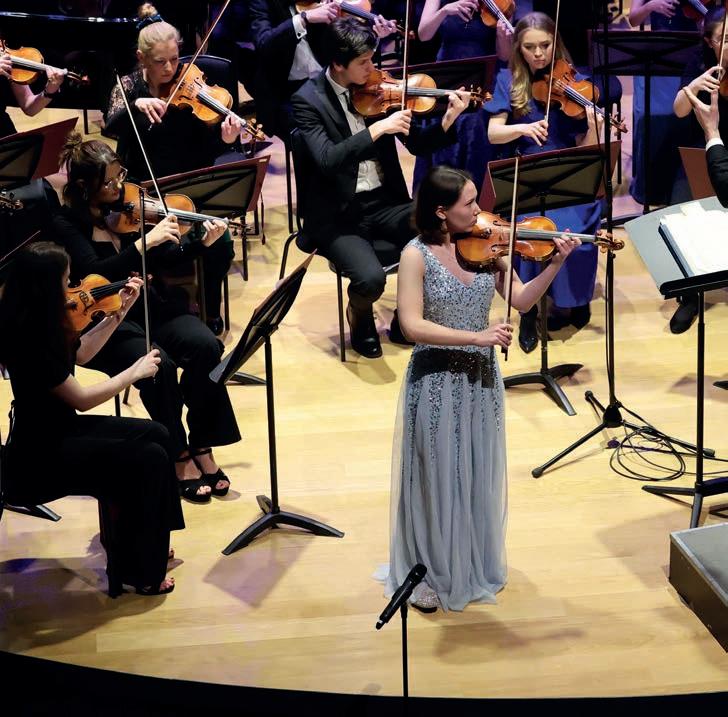
AB: Have there been any world premieres or special commissions?
PD: I gave the world premiere of Geoffrey Burgon’s Viola Concerto with Southbank Sinfonia (as they were then) in February 2009, and he also wrote On the Street, for alto saxophone and wind orchestra, for James Soper (SU 2005-10), who went on to be Director of Music at Warwick School. James gave the world premiere with Brasser in May 2010, and it was published by Chester Music.
AB: What did the 2017-2018 refurbishment entail?
PD: It was such a thrill to be a part of the team that oversaw the refurbishment. Our aim was to allow all the finest features of the original building to be retained, while combining modern technical sophistication. Perhaps the most intriguing aspect of that process for me was collaborating with the excellent acoustician to ensure the Hall would be ideal for concerts (both acoustic and amplified), recordings and the spoken word. This was no easy task as the Hall is very ‘shallow’, but with the wizardry of the new adjustable panelling at the back of the ambulatory and the flexible acoustic ‘meringue’ above the stage, it now serves every performance quite beautifully and is widely acknowledged by audiences, performers and producers as being mighty fine. A special moment was when it came to trying out the new acoustic for the first time. Everyone was gathered – designers, acoustician, and so on – and I stood on the stage ready with my viola. It was a bit like the old ‘Man from Del Monte’ advert – they were all there waiting for what I had to say. I played ... and it was fantastic! The verdict was a resounding ‘He say Yes!’
AB: You mentioned the annual visit by Sinfonia Smith Square (formerly Southbank Sinfonia). How did this come about?
PD: I was with Southbank Sinfonia at its inception, and I feel I have been part of its journey. I’ve wanted to share the orchestra with as many people as I can. I had piloted the idea at Wells Cathedral School, and when I came here, I thought that it would be a great group to bring to Marlborough. It completely changed the landscape of the Lent Term. In the Michaelmas Term, with a brand new Symphony Orchestra, I choose the repertoire carefully and mould the orchestra through to the end-ofterm concert. Then, in the Lent Term, the injection of Sinfonia Smith Square visiting over a weekend allows us to play repertoire that is slightly beyond the reach of the pupils. However, I can say ‘Don’t worry –we will be able to make this work!’ Also, educationally it is great for the Sinfonia players to be working with our players. All in all, it’s a win-win … and the Memorial Hall envelops that and is a perfect setting. It’s a real pinnacle; the parents love it, the community loves it, our guests love coming here and being kindly hosted by local friends of the College, and our pupils love it and cherish it. A few years ago, I met one of the Symphony Orchestra first violinists from my first year. It was ten years since she had left, and she was still playing in an orchestra, but she said that out of all the concerts she had done at Marlborough, the side-byside one was the absolute highlight, and that she had never had that sort of musical experience since.
AB: Does the Hall have a reputation in the wider musical world?
PD: Yes, it is known as a fine hall, but it can be quite intimidating too. There is a lovely story from a few years ago, when the Wigmore Hall
Soloists came to perform. The packed Hall had created a marvellous atmosphere for the chamber music, and at the end of the Dohnányi Sextet, the violinist, Sasha Sitkovetsky, came off stage, turned to me and said ‘Wow! Zis is a serious concert!’ It’s the Hall that does it – it’s our beautiful Memorial Hall, but in terms of its profile and its reputation among artists out there, it’s a serious place.
AB: So, what do you think are the special qualities of the Memorial Hall?
PD: Firstly, it is a very remarkable and eye-catching hall. There are very few musicians who, when they see the interior for the first time, don’t feel a sense of awe and surprise. It really does have the Sitkovetsky ‘Wow’ factor! I remember myself being struck by the way in which the audience almost seems to wrap itself around the stage and the performers. Also, the facilities are superb – the elegant lighting box, the vomitories now opened up, the fact that the piano can now be stored off-stage, the dressing rooms accessible from downstairs. But despite the refurbishment and the modern sophistication, it is still unmistakeably the Memorial Hall. There is the adjustable acoustic, which I have mentioned, that has been a great success. It’s not a conventional concert space, however, and especially if you are a concerto soloist, when you are at the front of the ‘D’, with audience to left and right and you are playing to a relatively shallow space, it can present real challenges. But just imagine what its walls could tell us of musical performances from the past 100 years! Even in the past eighteen years, the kaleidoscope of music and opportunity and pupil excellence the Hall has witnessed has been phenomenal. We can all find that inspiring and uplifting.
The House Shout’s revival in 1982 re-established one of the most memorable occasions of the school year. A unique event that sees the whole school in competition simultaneously, it places singing front and centre and turns the Memorial Hall stage into the ultimate ‘playing field’. Here, Tim Ridley (C3 1980-85); (CR 1996-09) recalls evenings from the past, from the viewpoint of both pupil and beak.
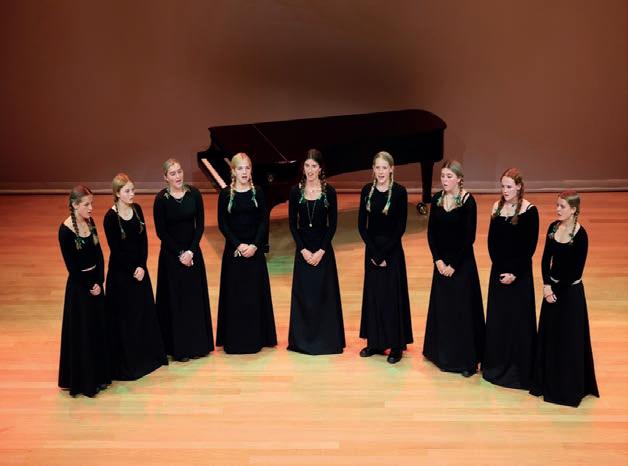
House Shout (1982)
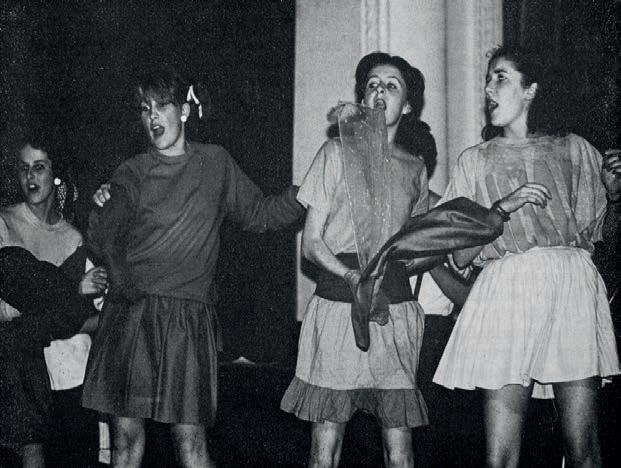

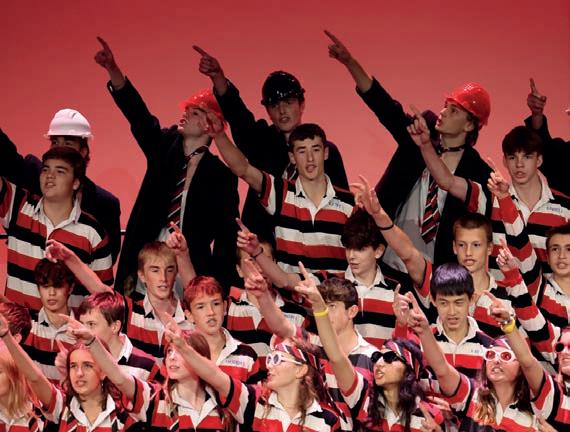
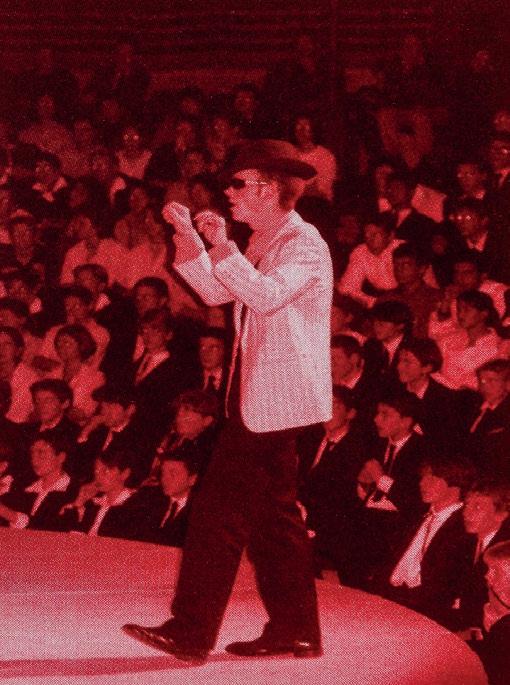
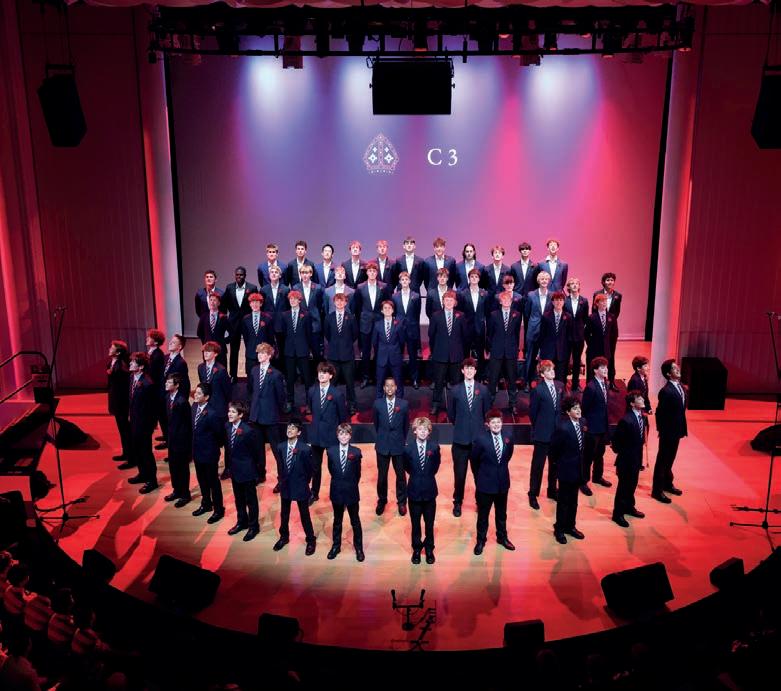
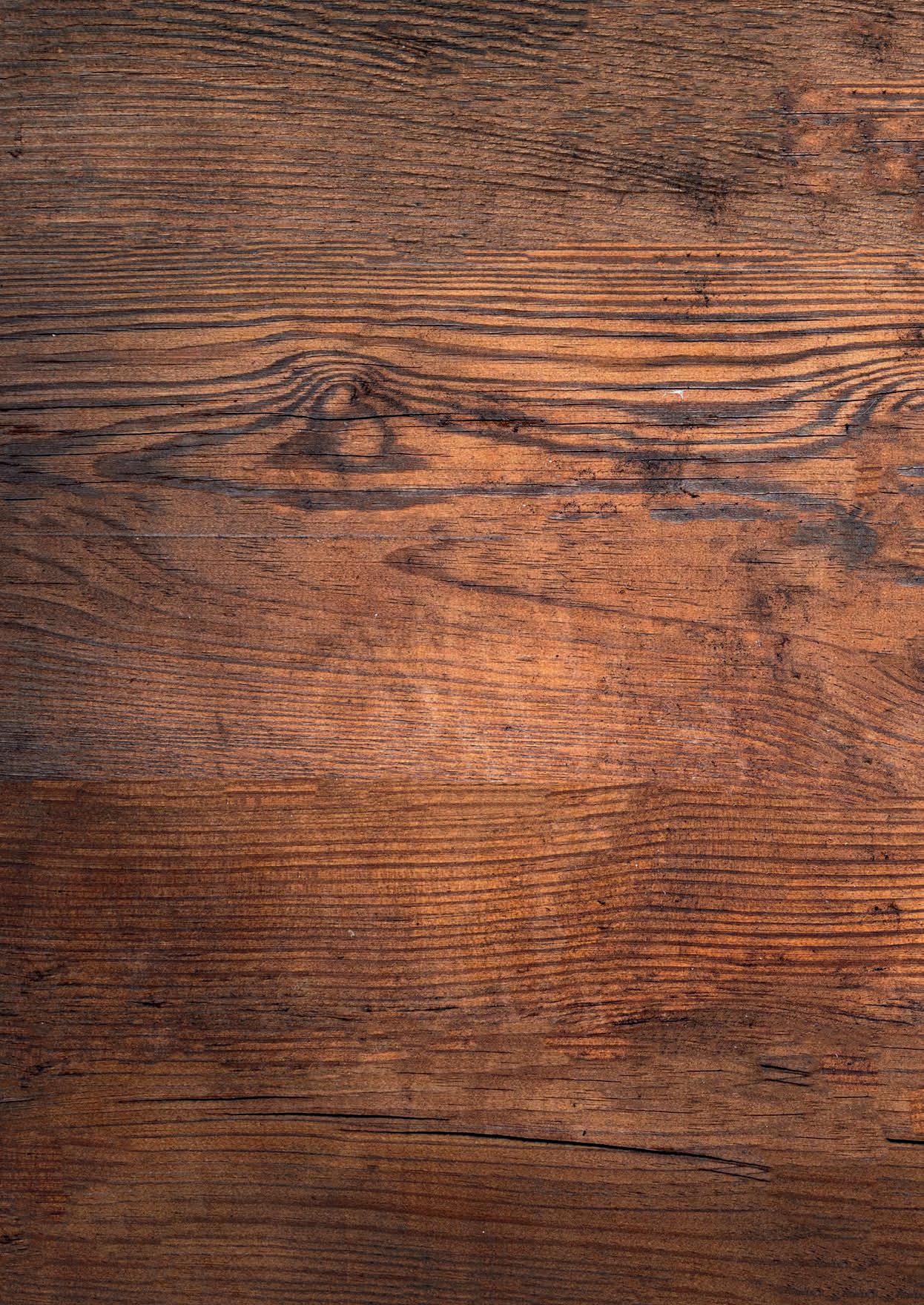
Before the Ellis Theatre became the main stage for plays and musicals, the Memorial Hall was the venue for stage performances, with music which amazed and delighted audiences in equal measure. Some of those who were at the heart of these performances share their memories of the start of a golden age of Marlborough musicals.
Christopher Rathbone College Organist, Assistant Director of Music (1973-96)
I was musical director for many shows in the Memorial Hall, including two directed by David Whiting, The Threepenny Opera (1986) and Happy End (1995), both by Brecht and Weill. I even acquired a second-hand squeezebox and taught myself to play it for one of the songs! There were also two musicals that I wrote with Robert Avery (CR 1970-90), called The Master goes to Town (1977) and Marlborough Blues (1981). These were preceded by four shows, called Avant Garde Music Hall I-IV, which were great fun. We also directed a
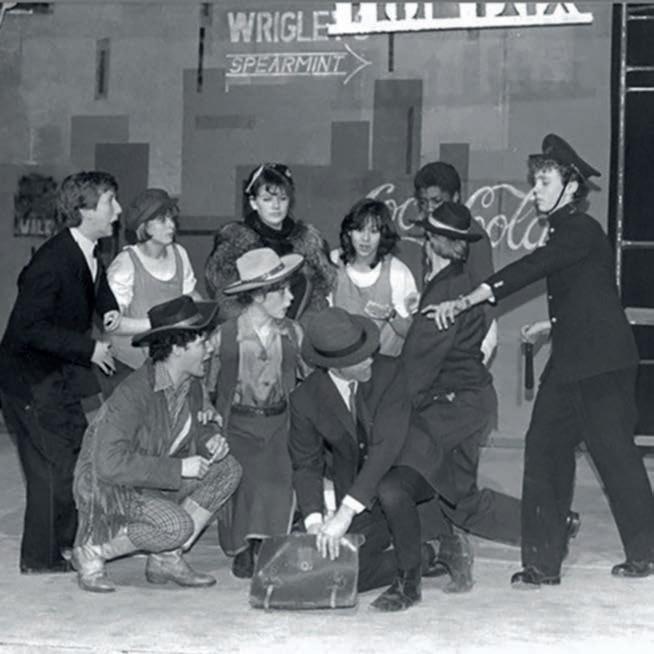
memorable Love’s Labour’s Lost, which transferred to the Everyman Theatre in Cheltenham for one performance, which included a flute, string quartet and harpsichord on stage throughout.
Another occasion I remember vividly was writing a setting of The Jabberwocky for the Penny Reading of one Senior Prefect, who was a talented tenor and flautist. We pre-recorded the flute and piano parts so that on stage he sang, accompanied by a recording of himself on flute and me on piano. With The Fairy Queen (1995), Nigel Bryant (CR 1995-08) and I presented it as Shakespeare’s play ( A Midsummer Night’s Dream) in an abbreviated form, to give space for many of Purcell’s glorious, and often hilarious, musical ‘masques’. The musicians were behind a gauze, placed half-way up a tree against the back wall of the stage, which came to life as the fairy musicians’ lights came up and the masques started. I was sitting at the harpsichord, effectively half-way up a tree!
Richard Harman
English Department (1984-88); Director: Guys and Dolls (1985), Cabaret (1987), The Hired Man (1988)
The Memorial Hall posed technical challenges, but also great opportunities in terms of its Greektheatre-style semicircular auditorium. The biggest opportunity, though, was the thirst within the College community for musicals.
After the very warm reception for Guys and Dolls, Adrian Leang (CR 1981-93) and I collaborated next on Cabaret, whose dark, raunchy edginess appealed to the temper of the times and provoked standing ovations. Following that, we went for a hat-trick and staged the first ever school production of The Hired Man – a gritty, Northern, operatic piece adapted from a novel by Melvyn
alley for the Nathan/Miss Adelaide encounters (stage left). These additions – the sterling work of Mal Ceato, carpenter at the Estates Department – facilitated scene changes in the central stage space. With stage managerial finesse, this could swiftly become the streets of New York, the underground sewers of the city, the Hot Box nightclub or, indeed, Havana!
For the 200th Penny Reading in March 1994, the Music Hall format had the Memorial Hall transformed into a ‘Marlborough Theatre of Varieties’, with its own Master of Ceremonies. Short virtuoso performances by individual artists were supported by an accomplished, professional band under the expert musical direction of Ian Crabbe (CR 1990- ).
The previous term, we had presented Pirandello’s Six Characters in Search of an Author as the school play. A false proscenium had been built to the front of the existing, lofty proscenium arch. It was much lower in height and narrower in width in order to deepen the wing space and to create a ‘fly tower’ resource for concealing tracking and other equipment for changing tabs and painted backdrops. This ‘picture frame’ arch was embellished with ornamental mouldings, painted to appear convincingly like gilded plasterwork on a blue background. With minor alterations, this entire set was adapted to become the fully functioning stage of a busy Victorian music hall. All credit to Paul Cox for this wizardry!
These three Penny Readings featured a number of talented young performers with professional potential. They were supported by a superb Wardrobe Department, led by Clare Russell (CR 1980-18) and Margaret Rose (PR 1985-12), who worked wonders creating an array of excellent costumes for each production. The three shows proved highly popular, reaffirming the power of teamwork and the intrinsic value of the performing arts in the co-educational curriculum.
Ian Crabbe (CR 1990- ), Head of Keyboard (1990-06); Musical Director: Old Time Music Hall (1994)
In 1994 the idea formed of putting on a musical evening recreating the glory days of Old Time Music Hall. Armed with a history book and a cassette tape of songs from the period, we found songs made famous by Marie Lloyd and Florrie Forde, such as ‘Hold Your Hand Out, Naughty Boy’ and ‘Don’t Dilly Dally on the Way’. Many of these songs were laden with innuendo, and it is probably unlikely that they could be revived in 2025. For this show, the songs were arranged for a small band of musicians by John Iveson (CR 1992-95), Head of Wind. The show also featured Mr Gareth, an external circus artist who performed a fire-eating act. I cannot tell you how hot it was down in the pit when he was performing, and it was only March! How the place didn’t go up in flames is beyond me.
Jane Darby Drama Department (2001- ); Director: Jesus Christ Superstar (2002), Grease (2005), West Side Story (2008)
The Memorial Hall is a performance space that was simultaneously challenging and exhilarating. Its multiple levels and access points presented obstacles, yet also enabled the creation of stunning images and unforgettable company numbers, such as the life-sized crucifixion in Jesus Christ Superstar, or the battle of the opposing gangs in West Side Story. The amphitheatre design also generated inconsistent acoustics, which inevitably impacted stage choices (yes, there is a reason why solo numbers happened stage centre in relative stillness!).
The three musicals brought an unmatched feeling of ambiance and community enterprise. This was partly due to the building itself: the depth and dimensions of the welled auditorium wrapped the audience
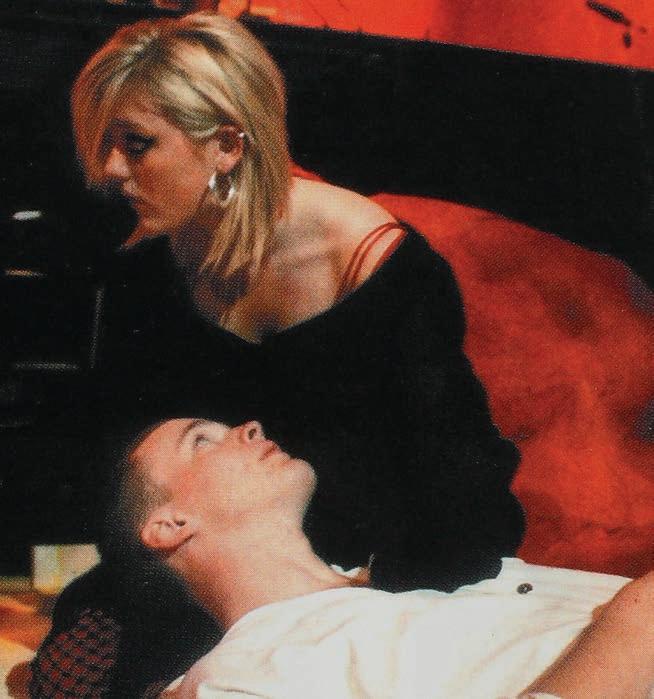
around a central focus point, while the ambulatory and the vomitoria allowed for more than central intimacy. Outward bursts of action into these connecting areas transformed room locations into streets, broke any sense of a fourth wall and enabled memorable scenes of audience members dancing in the aisles, as in Grease
The fact that people still talk about these shows after twenty years is, I think, testament to the sense of collective atmosphere and occasion that the Memorial Hall creates across its range of diverse functions. The experience of those musicals changed the life choices of some of the pupils involved: Catherine Brudenell-Bruce (MM 1998-02) (now Bo Bruce, singer-songwriter) sang her very first notes in Jesus Christ Superstar, and Tom Durant-Pritchard (TU 2001-06) is now a successful actor/director in theatre and film, having acted for the first time in Grease.
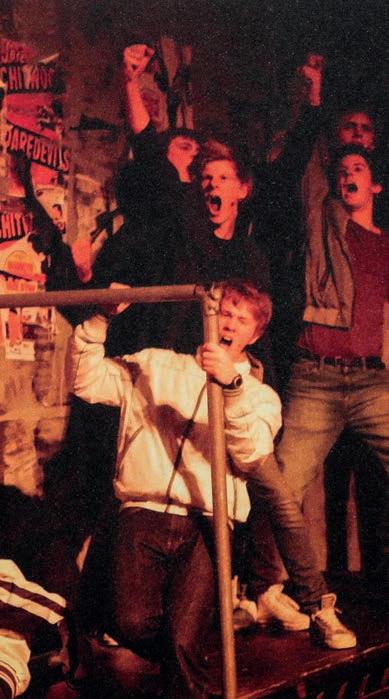
Tim Ridley (CR 1996-09)
Director and Musical Director: Jesus Christ Superstar (2002); Musical Director: Grease (2005), West Side Story (2008)
I worked on two plays with music for Head of Drama, Nigel Bryant (CR 1995-08). The first was an unusual adaptation of Aristophanes’ The Frogs (1996). The second was a production of The Beggar’s Opera (1998), taking the original John Gay ballad opera material and rearranging the entire show into a more contemporary folk style. It was something to get my teeth into, but I still hungered for a proper musical. In the end, I was granted permission to mount a production of Jesus Christ Superstar (2002). Concerned that I would not get the chance to stage anything again, I thought big, with a huge set incorporating scaffolding and bespoke papier mâché rocks. I learned very quickly how expensive scaffolding is to hire, but David Williamson (CR 1994-09), the Bursar, was surprisingly lenient with my ever-escalating budgetary requirements. I used the full orchestral version of the score, with a miked up pupil orchestra on stage, under the scaffolding, and putting the rock band on stage, perched on the balconies across the back. Although the sound engineering side of things was a constant nightmare, the audiences seemed to appreciate the result! I was particularly proud of a crucifixion scene involving an enormous black light fluorescent cross, with pupil Paddy Wells (PR 1997-02) fixed to it in a fashion that would nowadays fail every health and safety requirement in the book (probably it should have then, too) – but as a coup de théâtre, it was fantastic.
Three years later, I was back with Grease (2005), this time thankfully passing all the direction over to the wonderful Jane Darby (CR 2001- ). The Master, Edward Gould (CR 1993-04), had taken some persuasion that Grease was suitable material for Marlborough to be staging, but the energy and professionalism of the cast won through, and the sound issues of the notoriously tricky Memorial Hall acoustics were largely conquered. My final production, West Side Story (2008), ticked a bucket-list box. Once again, Jane Darby directed superbly, and the complexities of the music were matched by the skill of an outstanding cast and full band. I had been spoilt by the financial support of the College in mounting these gargantuan productions, all playing to sell-out crowds in a largely impractical building, with dubious electrics and negligible backstage facilities. But what memories!
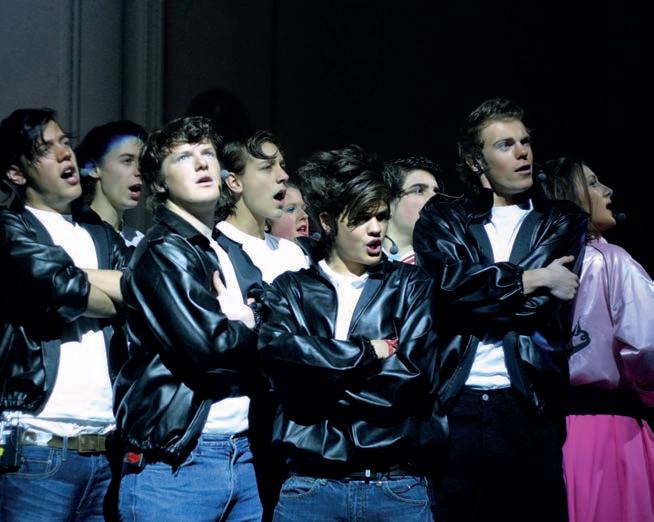
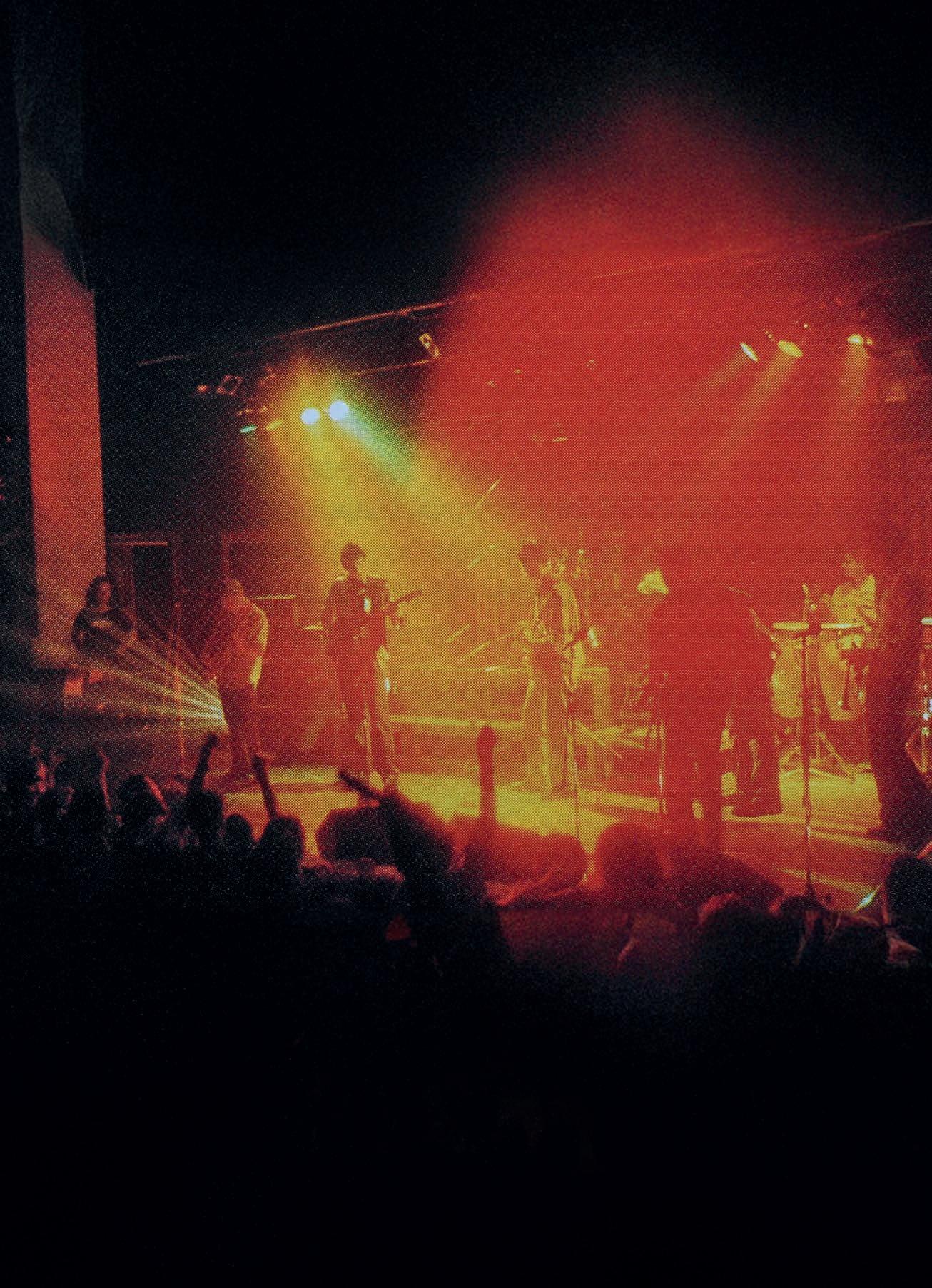
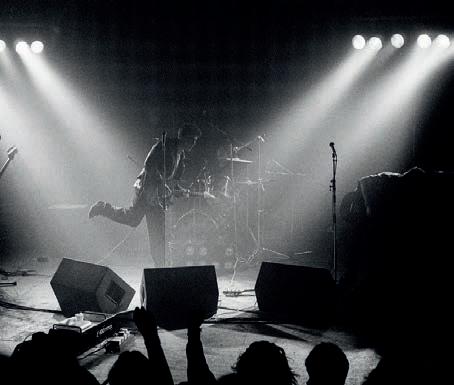

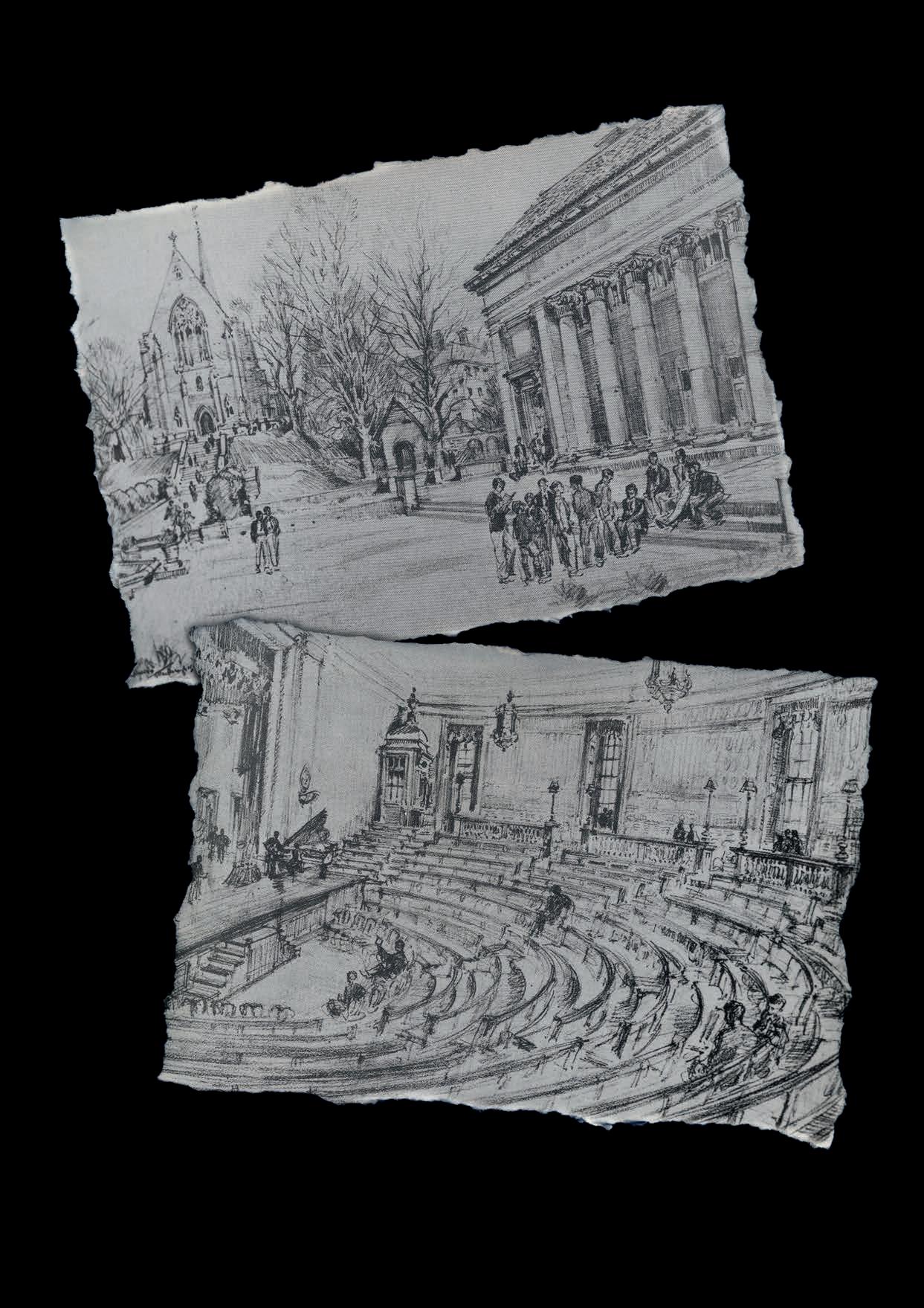
In addition to the role of Director of Music, the Artistic Director of Marlborough College is automatically Artistic Director of the illustrious and long-standing series of Sunday evening concerts given by visiting world-class musicians and ensembles. Here Philip Dukes, Artistic Director/Director of Music since 2007, describes this exciting and challenging role.
The series began in 1941 and 2025 sees its 83rd season, so for me there is a sense of privilege and responsibility as the latest custodian in ensuring that it remains successful and secure for the future. At the very heart of the series of five annual concerts is the venue, and in that respect, we are so lucky to have at our disposal the magnificent Memorial Hall.
The variety of world-class artists has always been a core attraction. The London Symphony Orchestra performed in the opening season, and over the years we have welcomed the BBC National Orchestra of Wales (which included two live recordings for BBC Radio 3), The London Mozart Players, The Nash Ensemble, John Lill, Alfred Brendel, Dame Janet Baker, Dame Emma Kirkby, Sir Thomas Allen, Dame Evelyn Glennie, Sheku KannehMason and many more. Additionally, since 2009 the Concert Series and the College have also enjoyed a professional orchestra-in-partnership with London’s Sinfonia Smith Square (formerly Southbank Sinfonia), which has performed two concerts each year in the Memorial Hall and has almost become synonymous with the series and the venue.
On a personal note, as a performer myself, the Memorial Hall has given me untold pleasure over the past eighteen years, whether it be as a concerto soloist or recitalist as part of the Concert Series, or as a recording artist (I recorded the Brahms Viola Sonatas with the legendary Peter Donohoe for Chandos Records there in 2022). Perhaps most of all, however, the greatest joy has been the many hours of personal practise I have clocked up in there in total solace. There aren’t many who can boast having a facility like that on their doorstep and for exclusive private use!
How lucky I am – indeed, how lucky we are as a community and as a College – that the Memorial Hall continues to serve as our jewel in the crown. Happy birthday to a dear friend!
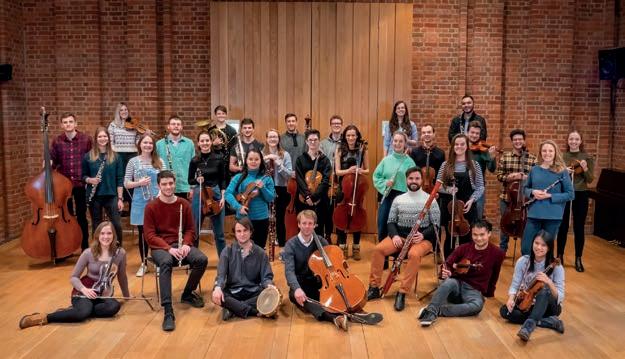
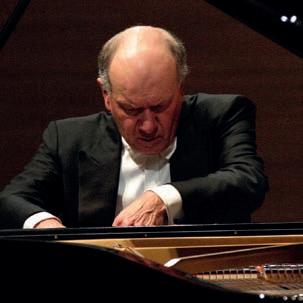
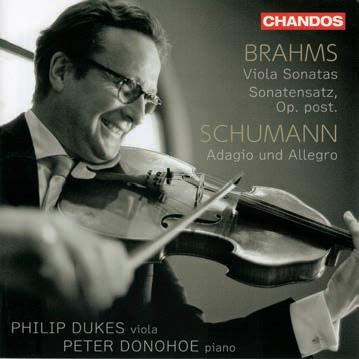
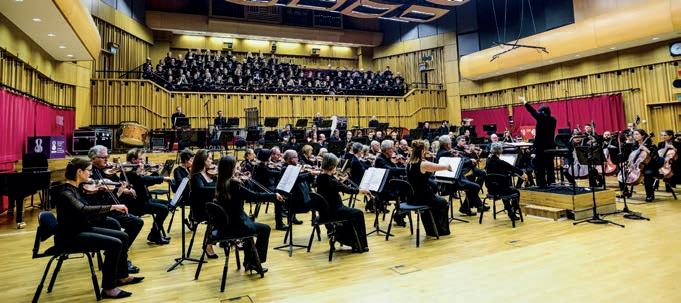
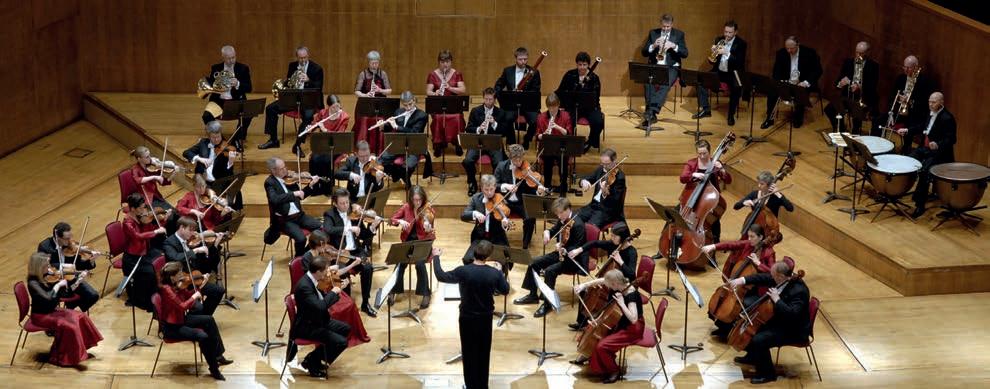
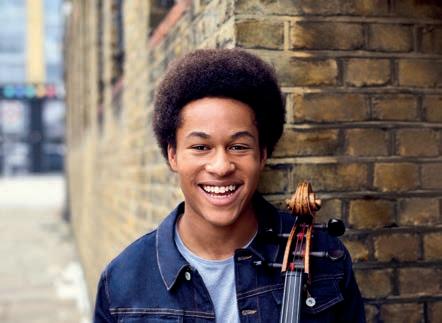

Of the many outstanding concerts that have been performed in the Marlborough College Concert Series since its inception as the Subscription Concerts in 1941, perhaps none is more widely recalled than that given by the great cellist Paul Tortelier (1914-1990) and his daughter, Maria de la Pau (b. 1950), on Sunday 22nd November 1981 (remarkably, the feast of St Cecilia, the patron saint of music and musicians). We are delighted to include Tortelier’s own deeply personal account of the evening in the following extract from his autobiography.
Pau and I gave a recital at Marlborough College in Wiltshire on a particularly pleasant autumn evening. Already during the Brahms E minor Sonata, which opened the programme, I noticed a slight shadow that flickered from time to time across the brightly lit floor. And when I began playing my own Cello Sonata I was aware of something coming towards me from above, and then floating away again. It was there, and yet not there, like an apparition. While playing, I had little time to give my attention to it, but by the time I reached the middle movement of my sonata I was able to identify my mysterious stage companion. It was a butterfly – a beautifully coloured, rather big butterfly. It began to circle around me, and as it did so, it seemed almost to be tracing arabesques to the music I was playing, its wings moving in harmony with my bow.
The audience’s attention had now been drawn to this wholly unrehearsed ballet. Closer and closer the butterfly would come, almost touch me, and then fly away. It was having a flirtation with me, or perhaps I with it. The slow movement of my sonata concludes quietly on a sustained harmonic. At that moment I closed my eyes, my bow barely moving on the string. I did not want to disturb the atmosphere of peace and calm. As I slowly drew the note to an end I opened my eyes again and there, perched on my left hand, was the butterfly. It had alighted so gently that I hadn’t felt its presence. For a moment or two we looked at each other. It didn’t move; I didn’t move. It was so lovely, so ethereal, that I couldn’t bring myself to shake it off. It had chosen the ideal moment for repose, I thought, settling there at the end of the slow movement; it seemed not to want to fly away. What could I do? Almost without thinking, I slowly brought my hand, with the butterfly still perched on it, up to my lips. I was sure it would fly away, but it didn’t. I kissed it very tenderly, but it still didn’t move. Not everyone has been able to kiss a butterfly. I never thought I would do so, least of all on the concert stage. Finally, I shook my hand very gently, and it floated off into the air. That was just before the interval. After the interval we played Beethoven’s A Major Sonata, and there was the butterfly again, dancing all the way through, only coming down to rest from time to time on Pau’s music, as if wanting to have a look at what she was doing. The piece came to an end and the butterfly was nowhere to be seen. ‘Aha,’ I thought, ‘it has left us to join the other butterflies in the fields.’ Not at all. It was perched on my foot, and as the audience applauded it flapped its wings.
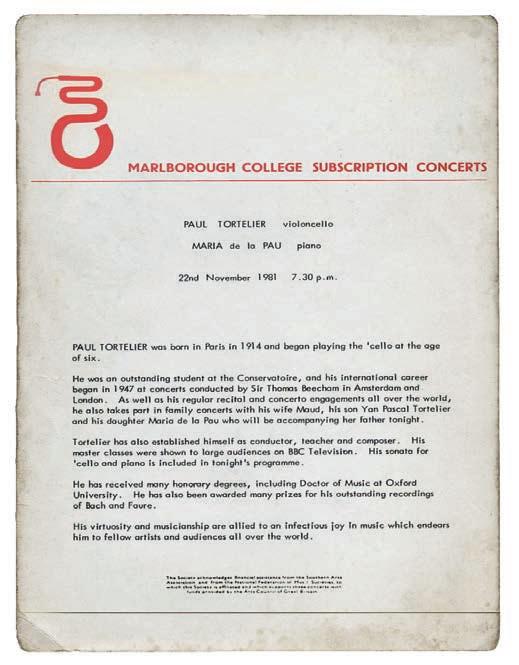
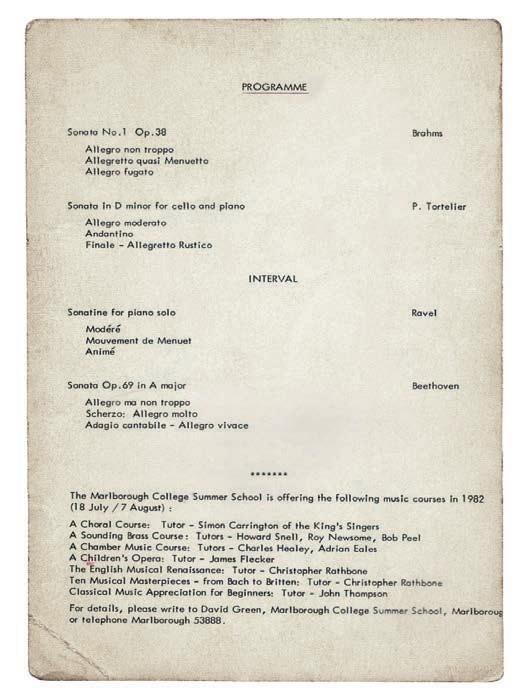
Who can judge what forces of spirit or nature guide our actions and bring harmony to seemingly disparate things? Such forces are there, that’s all I need know. The audience that day knew it also. We had all lived a fairy tale.
From the outset, the Memorial Hall was the major showcase for Marlborough’s music, a role which it fulfils magnificently to this day. Here, members of the Music Department recall memorable performances from the past eight decades.
Robin Kellow French horn teacher (1969-19) Emeritus (2019- )
I have many memories of performing in the Memorial Hall, going back to 1956 when, aged seventeen, I was asked to play second horn with Joe Goffe, the school’s horn teacher, for the first performances of the opera Circe, written by Anthony Smith-Masters (CR 1953-69). Several years later I returned to the College, working under Bob Peel (Head of Wind 1960-91), for whom I had the greatest respect. During Bob’s years there were many excellent performances in the Memorial Hall – he had very high standards. Perhaps the pinnacle was his own transcription for wind band of Khachaturian’s Battle of Stalingrad in 1980, which we subsequently performed at the Queen Elizabeth Hall in London as part of a full programme which included Walton’s Spitfire Prelude and Fugue. Bob always liked to start a concert with a march (he was particularly fond of Sousa), and as a result we explored many lesser-known pieces.
One regular event which I enjoyed was the Brasser concert at the end of the Michaelmas Term. It began as a serious affair but always ended uproariously with Hootenanny, a silly but fun piece of music, with the place in some sort of uproar and Brasser players on the receiving end of various missiles, including toilet rolls and boiled sweets! This was subsequently frowned on, but it was great fun at the time. Bob also attempted to resurrect the College song, ‘The Old Bath Road’, but it never caught on and was eventually consigned to history. Brasser would also traditionally play in the first half of the Lent Term Penny Reading, before the Senior Prefect took to the stage with a dramatised monologue, sometimes followed by a fully performed play.
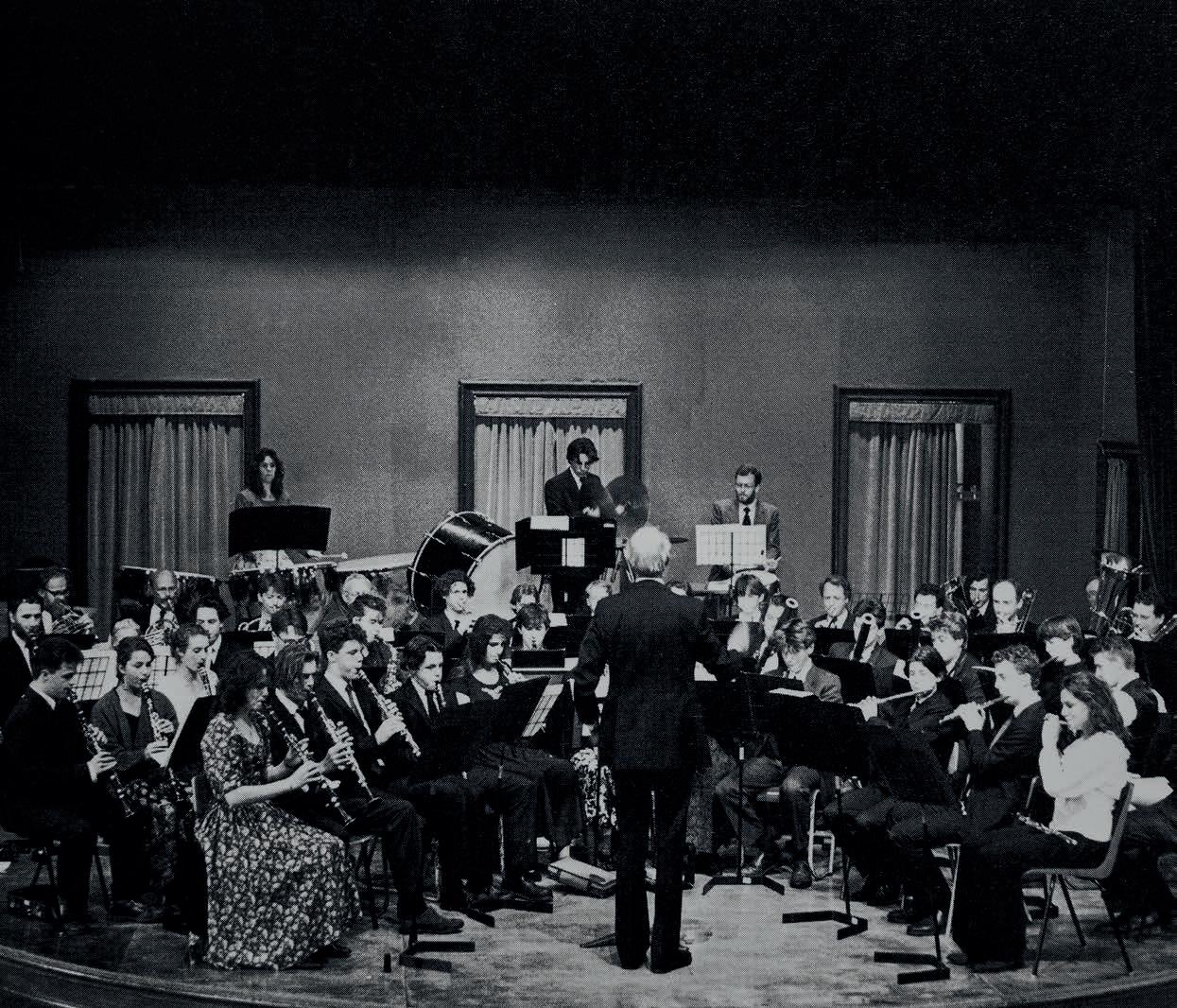
Tim Ridley (C3 1980-85); (CR 1996-09)
A particular Memorial Hall concert highlight was a First Orchestra 1812 Overture when, as a pupil percussionist, I had been tasked with providing the requisite explosions. Under supervision from the Projects Lab, I had been allocated some very loud bangs, maroons I think they were called. I built a box for these, with all the charges separated and individually wired into an old electronic organ pedalboard. The plan was to go up a chromatic scale, gradually providing simulated gunfire as required. Concerned that the bangs might be quite loud, the box was placed outside the Hall, on the paving. We only had enough bangs for the concert itself, so no testing took place. When it got to the first cannon, I hit bottom C, whereupon the most terrifying, earth-shattering explosion shook the whole building and almost caused conductor Robin Nelson to fall off the stage (something he did actually have previous for). No further cannons seemed possible, sadly. After the event, I looked outside, but there was no sign of the box, just the frayed ends of some wiring. Apparently, bottom C had ignited all the maroons at once, the combined force of which had disintegrated the box. The explosion was audible across the entire town, and I was suitably reprimanded for not warning the police of my intentions. I was more bothered by the fact that I had only managed to provide one of the required sixteen cannon shots, and that the performance subsequently suffered musically.
Adrian Eales Head of Strings (1981-16)
Over a seven-year period, from 1995 to 2002, the Hall hosted a number of huge fund-raising events in aid of the Cotswold Community Trust, which were the brainchild of the then High Sheriff of Wiltshire, sometimes raising in excess of £20,000. Three particularly celebrated evenings featured Johnny Morris narrating Saint-Saëns’s Carnival of the Animals, Robert Hardy narrating The Snowman, and John Thaw narrating Prokofiev’s Peter and the Wolf, all played by the College’s Chamber Orchestra. Of these, the last was perhaps the most memorable. The score is complex, with the narration integrated in the music rather than standing separate, so John Thaw agreed to visit Marlborough for a preliminary rehearsal. Walking rather nervously with him from the Porters’ Lodge, I was shocked when he informed me that he could not read a note of music. ‘How are we going to manage?’ I asked. ‘It’s fine,’ he said. ‘Relax. Just point, and I’ll start speaking.’ I had to keep my left-hand stock still throughout the performance (no pressure).
Thankfully, it didn’t quiver – disaster averted!
Sacha Johnson Head of Percussion (1998- )
The Memorial Hall has been an integral part of percussion activities. From informal junior concerts and recitals to the more advanced performances, the Hall has been ‘the’ music venue for the school. There have been wonderful percussion concerto performances, particularly on the marimba, and outstanding evenings with the Senior Percussion Ensemble, among others. Particular memories include Fred Gibson (B1 2006-11) playing percussion with Brasser and the Symphony Orchestra, as well as staging his own Electronic Symphony with over 30 College musicians. He followed this by taking his second composition, Protest Symphony, to the Royal College of Music in London, again performed by Marlborough musicians. Fred has since gone on to a very successful music career as Fred again.
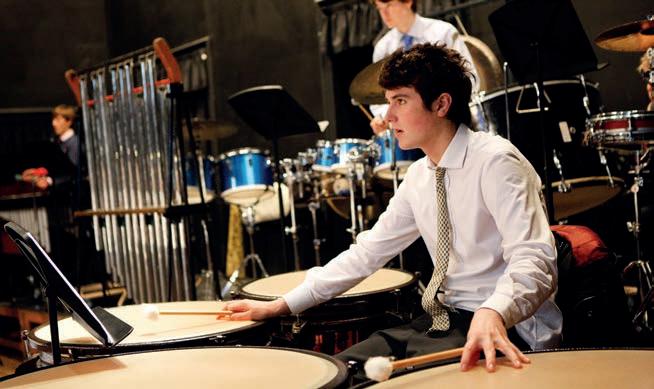
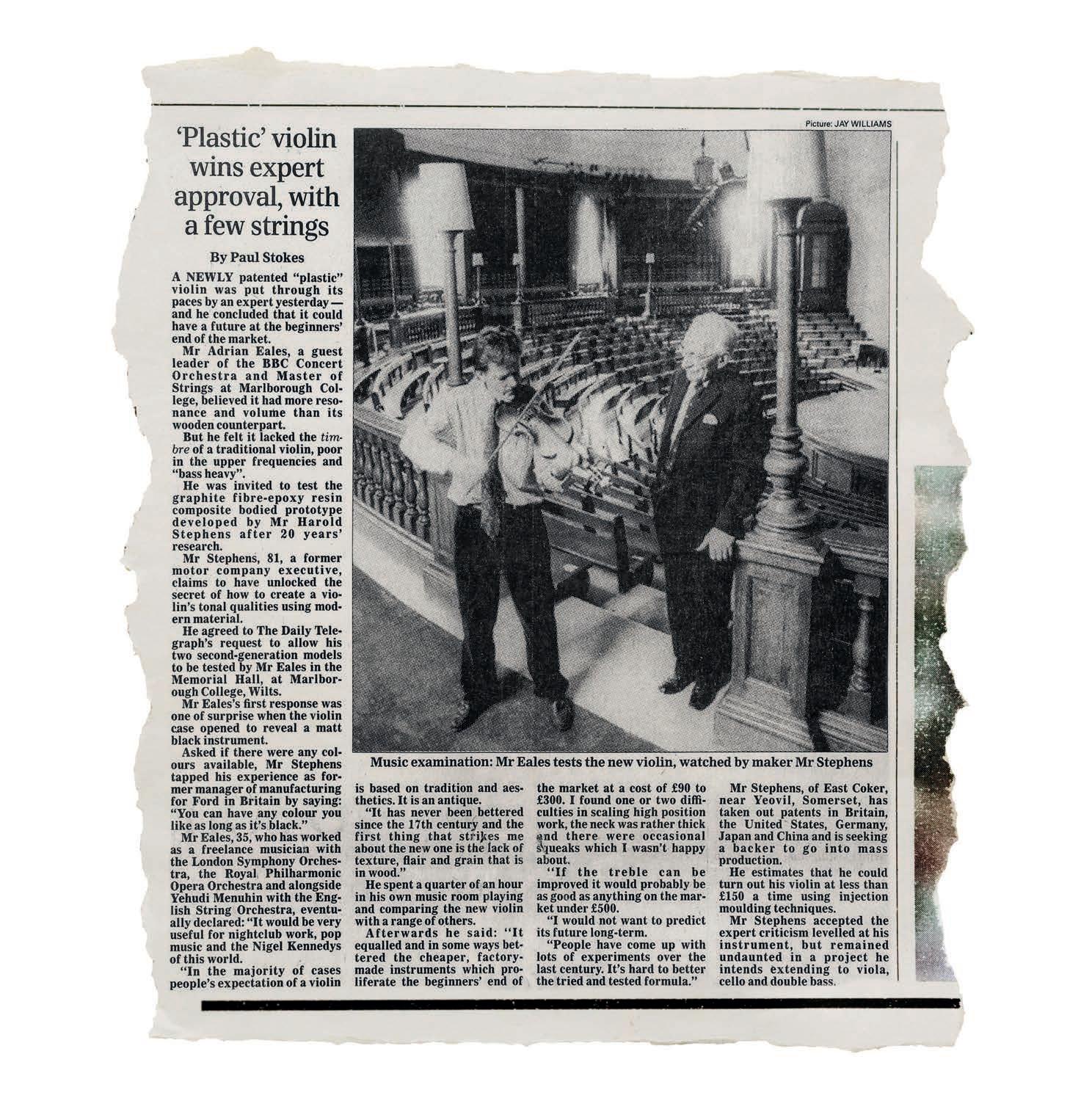
The Memorial Hall as featured in a Daily Telegraph article (30th March 1991), with Head of Strings Adrian Eales testing out a newly patented ‘plastic’ violin. Note the bare wooden benches, the original seating descending to the stage (removed in the 2017-2018 refurbishment to create the vomitories) and the Steinway concert grand piano stored on the stage.

Staging this spectacular morality play, the earliest example of English theatre-in-the-round, came to mind during my first viewing of the stunning amphitheatre that is the Memorial Hall. Its mystical setting close to the College Chapel and the ancient Mound also made it a fitting location for this allegorical drama of the lifelong conflict between Vices and Virtues for the soul of Mankind. Learning of the proposed production, Philip Cook, Lecturer in Medieval and Renaissance Drama at the University of Manchester, instantly agreed to our use of his excellent translation from the Middle English.
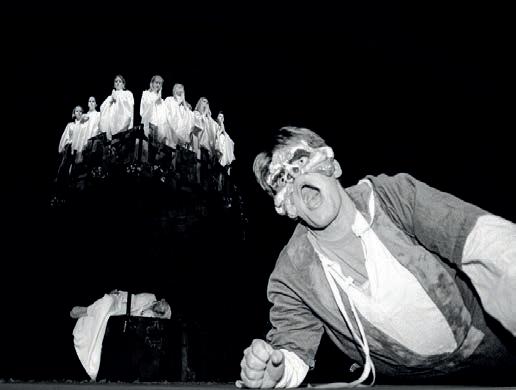
The Castle of Perseverance, performed in the Memorial Hall in November 1991, was the culmination of a huge collaborative effort by around sixty Sixth Form pupils. They composed and performed the music, designed and constructed the masks and settings, and devised a sophisticated lighting and effects plot, under the supervision of Paul Cox, our Technical Director. Much skilled carpentry was also required by the ‘in-the-round’ staging and for this we were all indebted to Mal Ceato. The gallery of magnificent period costumes, created by Margaret Rose (PR 1985-12) and the pupils in the wardrobe team, superbly complemented the masks as essential aids to the actors’ physical and vocal characterisations of their roles.
Over a period of nine weeks’ intensive rehearsal, the young Marlburians playing the thirty-two masked characters proved to be one of the most talented and disciplined acting ensembles I have been privileged to direct. Together, they produced a formidable example of the very best of youth theatre and, with it, a piece of theatre history. This was only the fourth performance of the play in full translation. Philip Cook was among the first to express admiration for its ‘visual excellence’ and congratulated the cast on ‘the language so effectively delivered’ and performances that were ‘riveting’ and ‘quite outstanding’. Dick McCaw, Artistic Director of The Medieval Players, wrote of ‘being amazed at the imagination, commitment and accuracy of the production’. Bill Alexander, then Artistic Director of the Royal Shakespeare Company, went further and wrote the following review for the Times Education Supplement (27th December 1991).
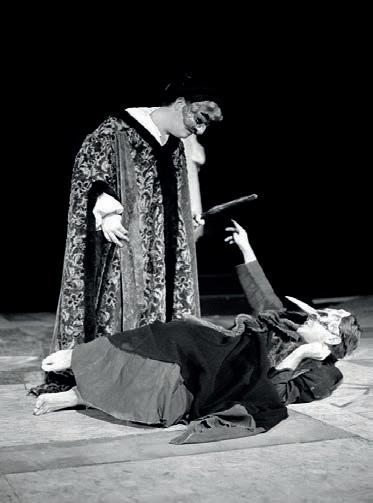
The production of this almost unknown medieval play by the students of Marlborough College, under the direction of John McNamara, is quite a theatrical event. Not only has he unearthed a fascinating example of early English theatre, and had the courage to put it on stage, but in attempting to stick as closely as possible to its original staging he has created a moving, humorous and original piece of modern theatre.
The semi-circular auditorium is imaginatively used to bring the action down ramps from four elevated platforms behind the audience and on to the main stage, in a smoothly flowing and sometimes strangely beautiful illumination of the medieval mind. Masked personifications of earthly Vices and Virtues appear and disappear above and among an audience which, on the night I saw the play, remained spellbound and sometimes in awe for something over three hours. There are some wonderful individual performances extracted by the Director from his young actors who, despite playing emblematic figures, manage to avoid caricature. Period music is used sparingly but well and the evening ends in delightful plainsong, wholly appropriate to this highly spiritual but profoundly dramatic message from a lost age of faith and innocence.
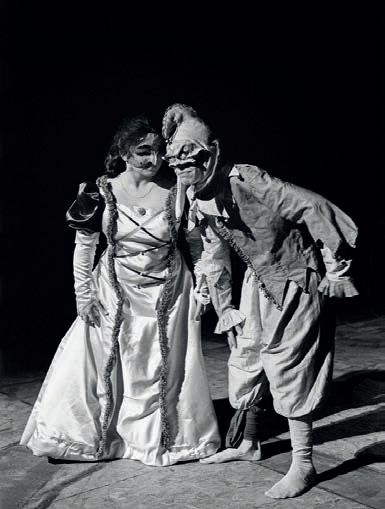
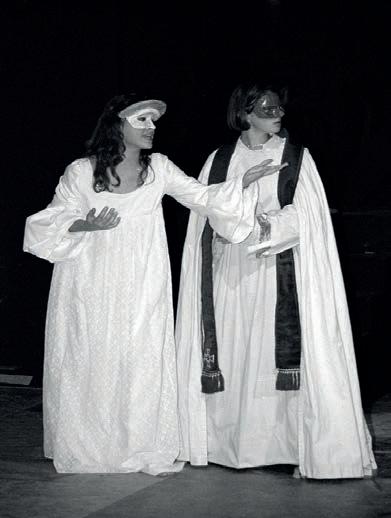
Not surprisingly, all of us who had been so deeply immersed in making the production were quite unprepared for its profound impact on our audiences and critics alike. It was evident from the reactions of those who saw it that the prospect of further performances just had to be explored. There was also unanimity that this seminally important and much neglected play deserved to be better known, not only in the UK but also in the United States, where there had been neither translation nor production. The manuscript of the play, including the medieval ground plan for its performance outdoors (probably in East Anglia), is held by the famous Folger Shakespeare Library in Washington DC. At the end of the Michaelmas Term, I visited the Folger to meet with its Director, Dr Werner Gundersheimer, who kindly gave me a personal tour of the Library’s dramatic and theatrical treasures as a prelude to introducing me to The Castle of Perseverance manuscript. My recollection is of its perfect, pristine condition, as if written yesterday, not six centuries ago.
On returning to Marlborough, I received a letter from Dr Gundersheimer in which he expressed his interest and pleasure to learn of our plans to take the Marlborough College production of The Castle of Perseverance to Washington in July. He wrote:
I gather this production has won much approval in England, and I hope it will be received with equal enthusiasm here. It is certainly good news for us that a modern version of this remarkable morality play, of which the Folger possesses the sole surviving manuscript, will be available to Washington audiences.
I can assure you that we will be very pleased to display the manuscript in our exhibition hall during the week of performances. We hope, furthermore, to join in the festivities in some appropriate way.
Having secured this most positive cooperation from the Folger, everything seemed to be falling into place for a series of US performances. The British Embassy would happily release its circular Rotunda Building for a fully in-the-round production, as well as provide in-house publicity services and technical support. Accommodation and meals for cast, crew and staff could be arranged with the Episcopal High School, Alexandria, Virginia. When there, I talked to senior students about the play, sharing with them an edited video of one of the Memorial Hall performances.
In a matter of weeks, David Smith, Business Manager to the project, had fully costed all aspects of the venture, produced excellent promotional materials, established the College’s first ‘Off-Campus Touring Fund’ and submitted applications for sponsorship funding to numerous charitable foundations. Generous donations were received from various sources, including parents, alumni and celebrities –such as Cameron Mackintosh and Sir Michael Caine of Booker plc – but, as we feared, there was a hefty shortfall that was impossible to fill in the narrow time frame remaining to us. Regrettably but inevitably, the decision had to be taken to discontinue the Washington project. However, this was not the end but the beginning of Marlborough’s off-campus theatre ambitions.
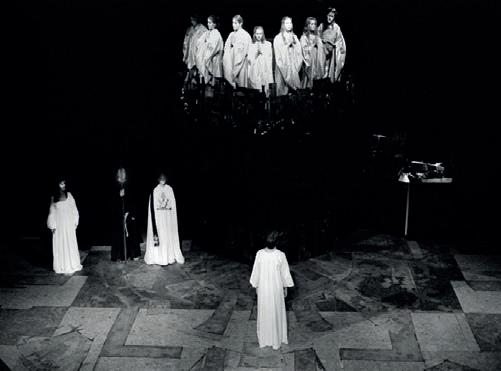
The first beneficiaries of support from the Touring Fund were to be the cast and production team of the highly successful Six Characters in Search of an Author by Luigi Pirandello. Performed in the Memorial Hall in November 1993, this school play ran for a week at Rome’s Teatro Centrale in April 1994. As a postscript, it is especially gratifying to record that three of the actors from The Castle of Perseverance, Joe Hill (C1 1987-92) (Covetous), Ted Hill (SU 1988-93) (Gluttony) and John Oliver (B1 1988-93) (Penance), travelled with us to Rome and performed in all five public performances of Six Characters Things had come full circle for them, but their perseverance won the day!
John McNamara (CR 1990-94) former Head of Drama
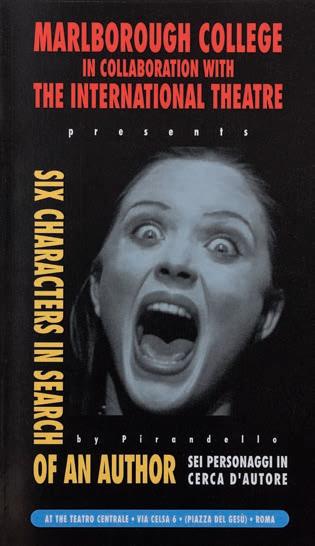


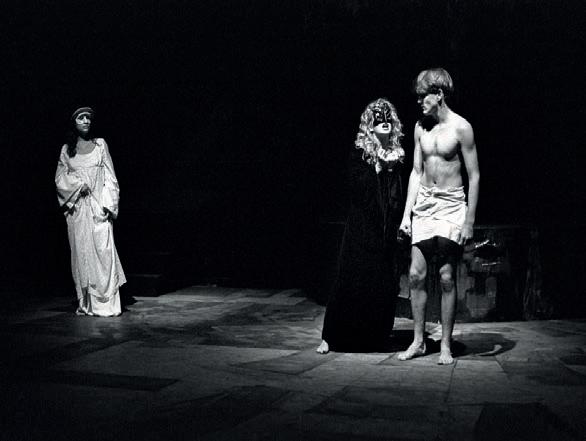
Memorial Hall
Marlborough College 15th, 16th and 17th
The
Mankind
Evil
Pleasure
Backbiter
Covetous
Pride
Wrath
Gluttony
Lechery
Sloth
Penance
Humility
Charity
Abstinence
Chastity
Diligence
Generosity
Death
Mercy
Peace
Truth
Justice
Lighting Design
Stage
Stage
Costume
Scenic
Musical
Production
Looking back, it was a real phoenixfrom-the ashes moment.
The school had gathered the night before (28th April 2006) in the Memorial Hall to celebrate the life of Old Marlburian Tom ap Rhys Pryce (B1 1988-93), who had been fatally stabbed in London on his way home from work.
With guidance and encouragement from the Senior Master, James Rothwell (CR 1984-09) (Tom’s former beak in the Classics Department), the English Department set about creating a programme of dramatic performances, song and dance, stand-up comedy, reminiscences and readings which drew on Tom’s enthusiasms. With his
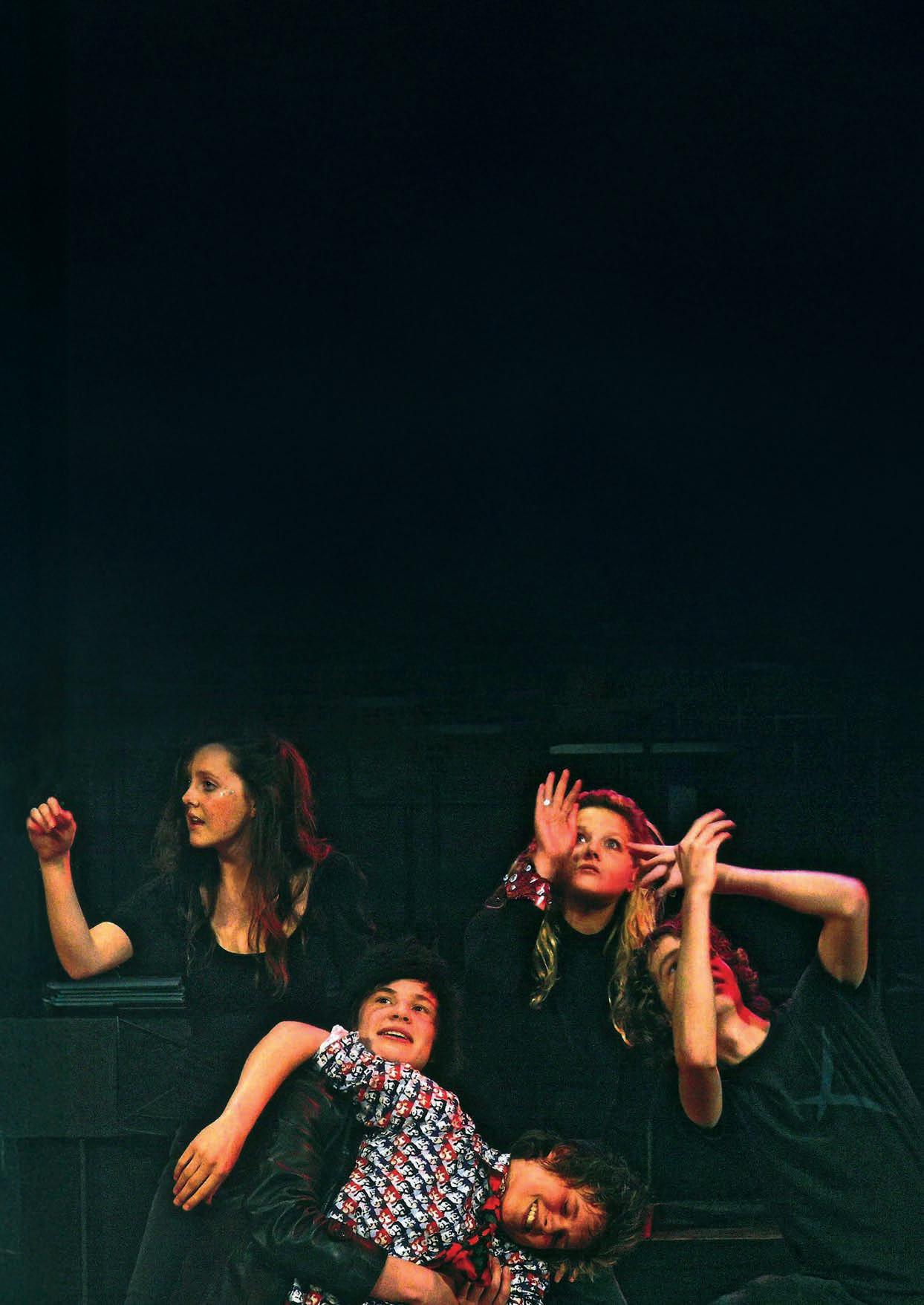
family and fiancée in attendance, the pupils delivered a tour de force in the Memorial Hall. As the ap Rhys Pryce family left, the Marlborough audience rose in a spontaneous standing ovation of a young life honoured.
The next morning, Lower Sixth pupil Tallulah Brown (MO 2002-07) (pictured below, far left standing with elbow raised) walked into Dr Mike Ponsford’s (CR 1987-21) classroom in North Block and posed the unsettling question along the lines of: ‘Why does it take the tragic death of an Old Marlburian for us to come together as a community and celebrate the unique talents of pupils?’ And so, Illumination was born. Tallulah, with encouragement from Doc P and others, set about
establishing a supportive forum for pupils to create, collaborate and perform, independent of the parameters of school programming and staff direction.
It was exciting.
There was undoubtedly a little resistance across Common Room at the outset of the initiative, rooted in the uncertainty of something new at Marlborough.
Tallulah and her team invited the English Department to support Illumination, with logistics and counsel, and to help establish trust across the College community.
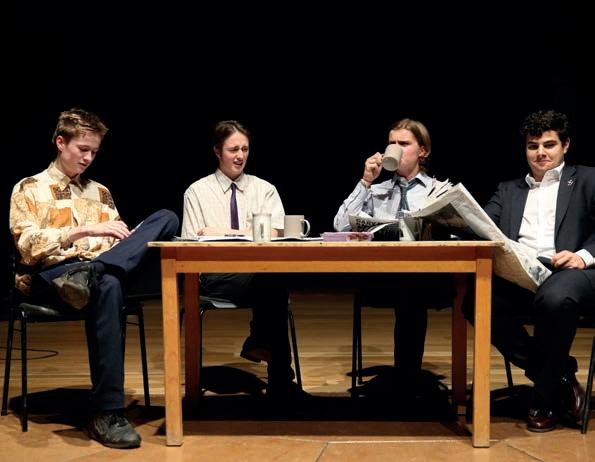
I remember that the very first performance was held in the Brad Theatre and Tallulah’s introduction of the initiative to promote and showcase the artistic endeavours of Marlburians:
We all go about our lives here in such a fast manner, rushing from place to place without appreciating exactly what is around us. We tend to live in our own little worlds but what we want is the school to look up, not be so restricted but understand that taking chances, not being passive, being proud and being brave are what keeps us, and therefore the school, going.
An unexpected groundswell of support from pupils of all ages made the founding team realise that they needed a bigger space – that and the fact that a radiator fell off the wall in the Brad due to someone sitting on it! So, Illumination moved to the Memorial Hall. Overwhelmingly popular, attendance became, by necessity, limited to Hundred and above (something for the Shell and Remove to look forward to as part of their Marlborough journeys) with staff welcome to support tutees –but it was not advertised to parents.
The Master, Nicholas Sampson (CR 2004-12), gave Illumination his full backing and regularly attended. It gave space to promote and showcase talent – created by pupils for pupils. Illumination took place around once a term, with a special Christmas edition.
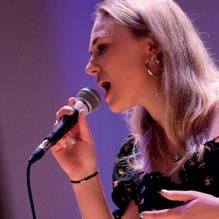
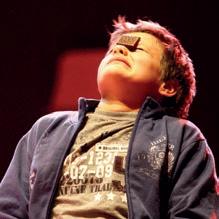
I remember some extraordinary performances – from a scene from The History Boys to a rendition of Eartha Kitt’s ‘Santa Baby’, to a speed cup-stacking performance and to a comic double act delivered by The Happy Clappers in self-slaps as a mode of communication!
Jack Whitehall (B1 2001-06), actor and comedian, played a leading role in The History Boys sketch and came back to the Memorial Hall to be master of ceremonies of a special Illumination in late 2009 in honour of Theo Dreyfus (LI 2000-05).
Tallulah came back to Marlborough in April 2012 to open the final Illumination of the school year, as part of Nicholas Sampson’s send off. In her opening address, she encouraged the next generation to ‘experiment, take risks and make yourselves vulnerable’. She also thanked the outgoing Master for being ‘unbelievably supportive, tolerant and encouraging’ of pupil creativity and innovation at the school and how she felt ‘so lucky to have coincided with his time at Marlborough’.
Tallulah’s band the Vagabond Trills played at the inaugural Illumination back in 2006 and she continues to perform with fellow Old Marlburian Seraphina D’Arby (SU 2005-07). The Trills’ songs have featured on various TV shows and trailers, including Outlander, Dune, The Morning Show and Mare of Easttown
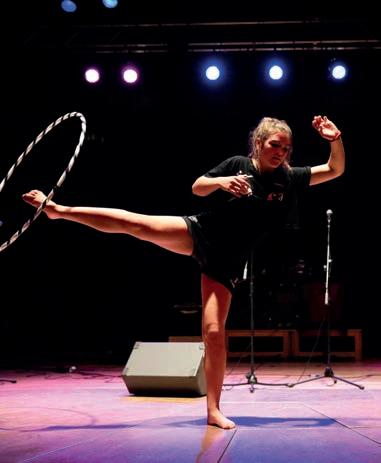
Looking back, there was undoubtedly a dynamic and creative energy at Marlborough at this time and, looking through the early programmes, I wonder what has happened to all these pupils brave enough to stride out on the Memorial Hall’s stage under the banner of Illumination.
What I do know is there is a generation of Old Marlburians doing extraordinary things in the creative arts across the world –from scriptwriters to actors, from directors to documentary-makers, from comedians to illustrators to record producers. All ‘Illumineers’ in their time.
Nearly twenty years later, I hear through my godchildren and niece currently at Marlborough that Illumination remains a supportive, popular and inspiring platform for pupil talent.
Richard ‘Larry’ Lamont (CR 1998-12) Head of English (2005-09)
Head of Upper School (2009-12)
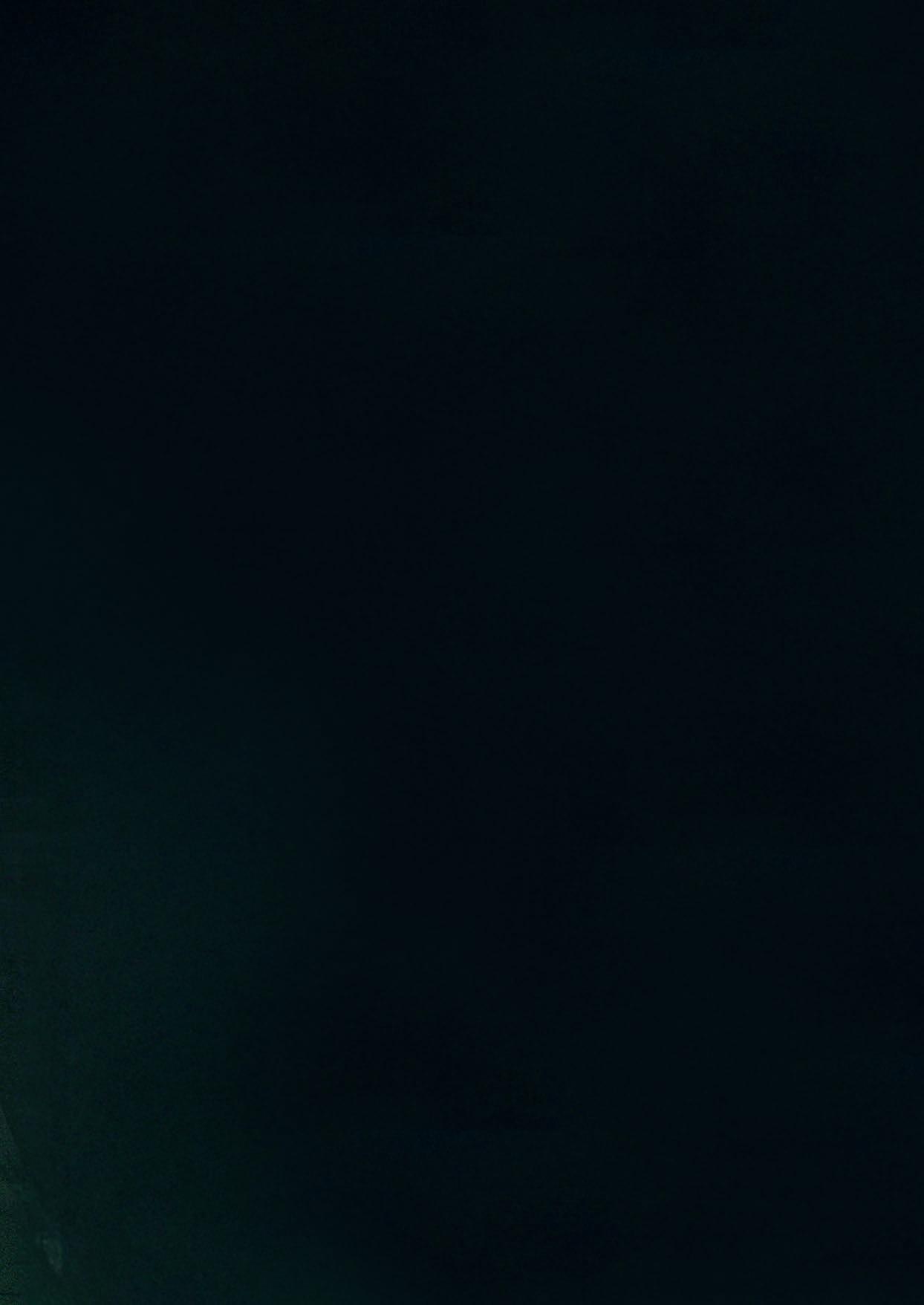
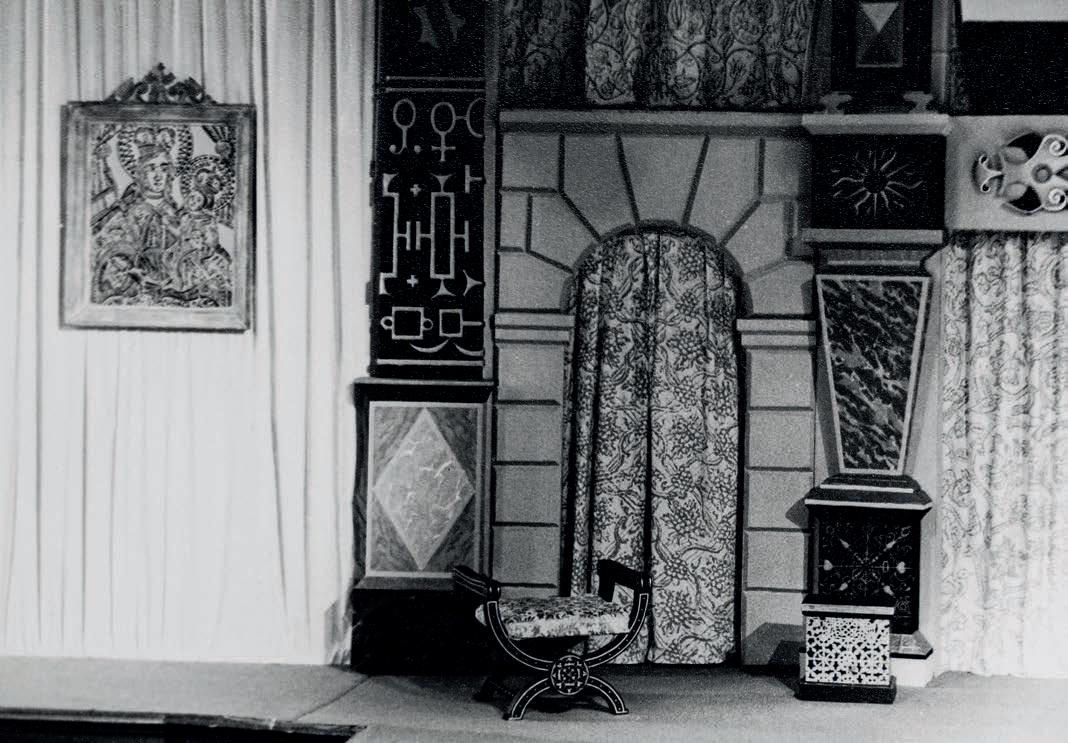
Peter Davison, Fellow of the Shakespeare Institute, wrote the following in The Marlburian, Michaelmas Term, 1969:
This was my first visit to a play at Marlborough and I was, of course, struck by the hall itself and the way, on this occasion,that its possibilities had been realised. By a strange coincidence I had seen a production of Hamlet only some three months earlier on a stage very similar in layout to that at Marlborough and it is pleasant to be able to say that I was more favourably impressed by the production at Marlborough.
Richard Shirley Smith, Head of Art (1966-70), reflects on the Theatre Workshop group of 1970.
In 1969, when Head of English, Michael Davis (CR 1949-85) decided to put on a production of Shakespeare’s Hamlet, the Art Department was asked to undertake the stage design. I was delighted to be given this project and got rather carried away with it because I had been surrounded, as a pupil at Harrow School, by the Globe Theatre tradition. My memories of the staging, costume, music and verse in the Elizabethan style were still very strong. This was the inspiration of Ronald Watkins OBE, his fine inspiring successor Jeremy Lemmon and art master Maurice Percival, who looked after visuals with no scenery of course. Happily, he was doing some part-time teaching at Marlborough at this time and was a great source of help.
When Head of Art, Guy Barton (CR 1946-66) left the College in 1966, John Dancy (Master 1961-72) suggested that Mark Wickham (CR 1965-69) and I should work in double harness, which worked very well. As well as being a very fine painter, Mark had an enormous practical intelligence with tools, materials, paints, etc. I remember the Master John Dancy (CR 1961-72) saying to visitors who admired the sets, ‘Oh they are great beauticians.’ Mark and his elder brother John made a portable apron stage out of large wooden boxes to replace the squeaky planks on the original stage.
To start the project, I made a model to scale to get all the dimensions correct. The Memorial Hall stage was perfect for creating a Globe-style
stage because it was already arranged in a semicircle. We planned to create the apron stage with an inner stage on two levels and a chamber and balcony above, with no proscenium arch or scenery. On either side of the stage, two pillars supported the ceiling of the upper level with entrances either side. Above was a gallery with balcony. Curtains could be drawn as required. To my surprise the scaffolding for the two levels of the set was already in place for the start of term.
After that it was up to us in the theatre workshop, a group of about ten pupils whose job it was to dress the scaffolding. Wednesday afternoons in the Art School beside the Mound were more than busy as we only had a short time to complete the work. To create the curtains, Elizabethan patterns were projected onto linen, which were painted onto the fabric over the projected image. Obelisks and cartouches were sculpted from expanded polystyrene, then painted and fixed in place to frame the stage. The boys constructed the thrones in the Woodwork Department.
To my amazement, we got it all finished in time and the production was a great success. And although my role was the design, all credit goes to the boys who worked tirelessly to create such a tremendous effect.
Amy W Hunter (wife of
Thomas Hunter, Medical Office at the College 1947-71):
The set and lighting reached a new ‘high’ for Marlborough which indeed might well give points to Stratford whence came the admirable costumes. The use of two levels and mini-curtains contributed greatly to the continuity and fluency of the production. They overcame completely the shortcomings of the original proscenium.
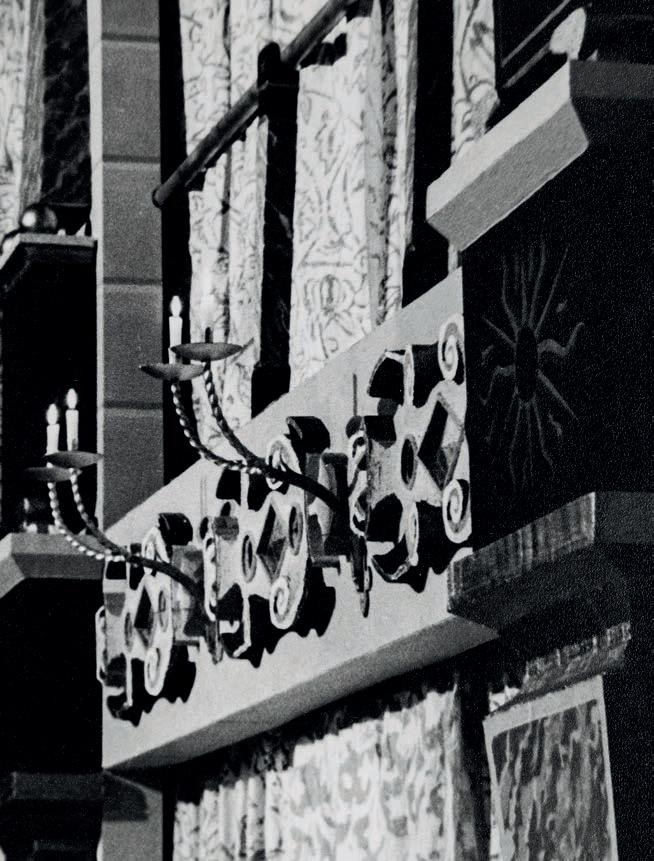
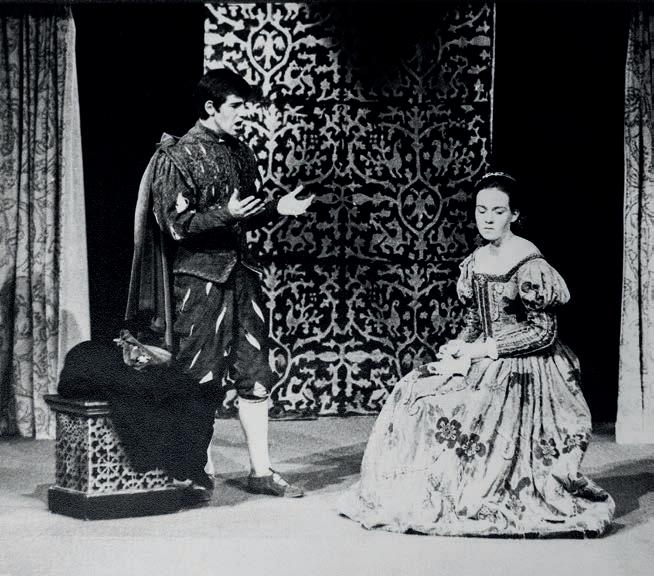
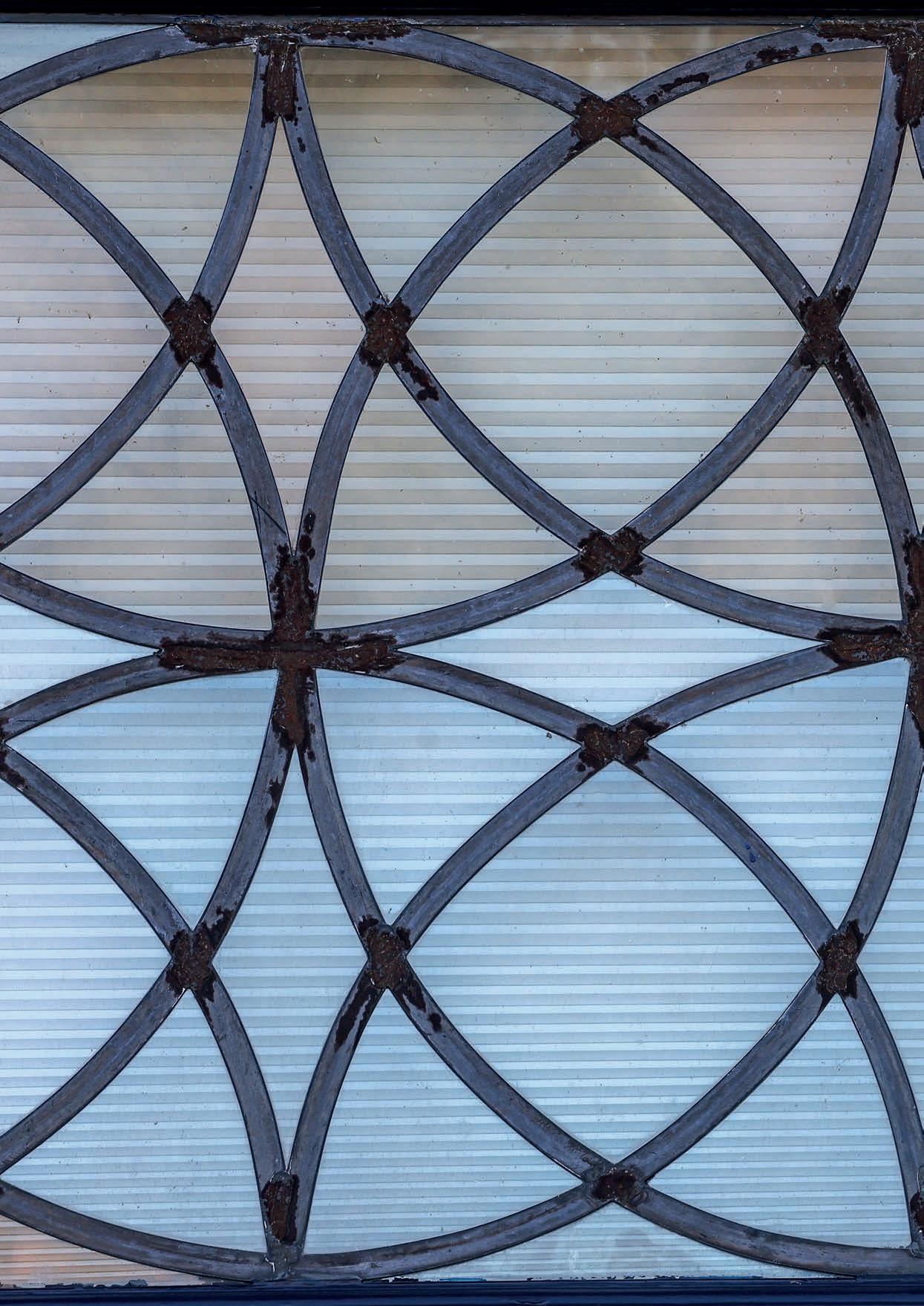
Over the decades, the Memorial Hall has been graced by a wonderful crosssection of performers and speakers.
Many eminent Old Marlburians have gone on to careers in the performing arts and it would be fascinating to think that perhaps a performance on the Mem Hall stage during their school days encouraged this.
Alongside them, acclaimed musicians and speakers from many backgrounds and professions have shared their talents and their stories with Marlborough audiences on the Hall’s stage, inspiring pupils and guests alike. Whilst it is impossible to name them all, a cross-section of these renowned individuals is shared below, with grateful thanks for their contributions to the history of the Memorial Hall.
Wilfred Hyde-White (B3 1917-21), actor, with over 160 film and television roles between 1934 and 1987
James Roberson Justice (CO 192124), actor, known for the series of seven comedy films that started with Doctor in the House, he also starred in the Guns of Navarone
James Mason (B1 1923-28), actor, his best-known films include The Desert Fox, Julius Caesar, 20,000 Leagues Under the Sea, Odd Man Out and The Boys from Brazil. Nominated for three Academy Awards, three Golden Globes (winning once) and two BAFTA Awards throughout his career
Michael Elwyn (B3 1956-61), Welsh actor, notable for the film Shadow Man, stage The Audience, television Stella
Michael Pennington (PR 1957-61), actor, director and writer; founder & Artistic Director of the English Shakespeare Company
Paul Brooke (C1 1958-62), actor of stage, film and television best known for Bridget Jones’s Diary, Phantom of the Opera and Alfie Nicholas Woodeson (B2 1963-67), actor of film, television and theatre known for Midsomer Murders, BBC/HBO TV Rome in 2007, UK tour of Arthur Miller’s Death of a Salesman in 2017
Simon Fanshawe OBE (C1 1970-74), writer, activist and broadcaster, one of the founders of the LGBT charity, Stonewall, winner of the Perrier Comedy Award in 1989
Simon McBurney (LI 1971-75), actor, playwright, theatre and opera director, founder & Artistic Director, Théâtre de Complicité
Robert Addie (LI 1973-74), English film and theatre actor, known for role of Guy of Gisburne in 1980s TV drama series Robin of Sherwood Angus Wright (B2 1978-82), American-born, British actor who has worked extensively in theatre, film and television
Clive Robertson (TU 1979-84), actor, best known for his role on Sunset Beach, the Canadian science fiction series Starhunter and for the voice over for Darkstar: The Interactive Movie
Emerald Fennell (NC 1998-03), actress, filmmaker and writer. Winner of an Academy Award and two BAFTA Awards
Freddy Syborn (B1 2000-05), comedy writer with Jack Whitehall
Jack Whitehall (B1 2001-06), comedian, actor, writer and television personality
Tom Durant-Pritchard (TU 200106), actor and director best known for The Crown, The Windsors, Feel Good and Judy Alexandra Dowling (TU 2005-07), actress best known for her lead role as Queen Anne in the BBC1 drama series The Musketeer
Tom Morley (C2 2005-10), actor of television, stage and film. Recent television roles in BBC dramas include Gentleman Jack (Series 2) and Call the Midwife
Musicians
Crispian Steele-Perkins (B2 195862), internationally acclaimed English classical trumpeter
Chris de Burgh (CO 1962-66), singer-songwriter and musician who has sold over 45 million albums worldwide
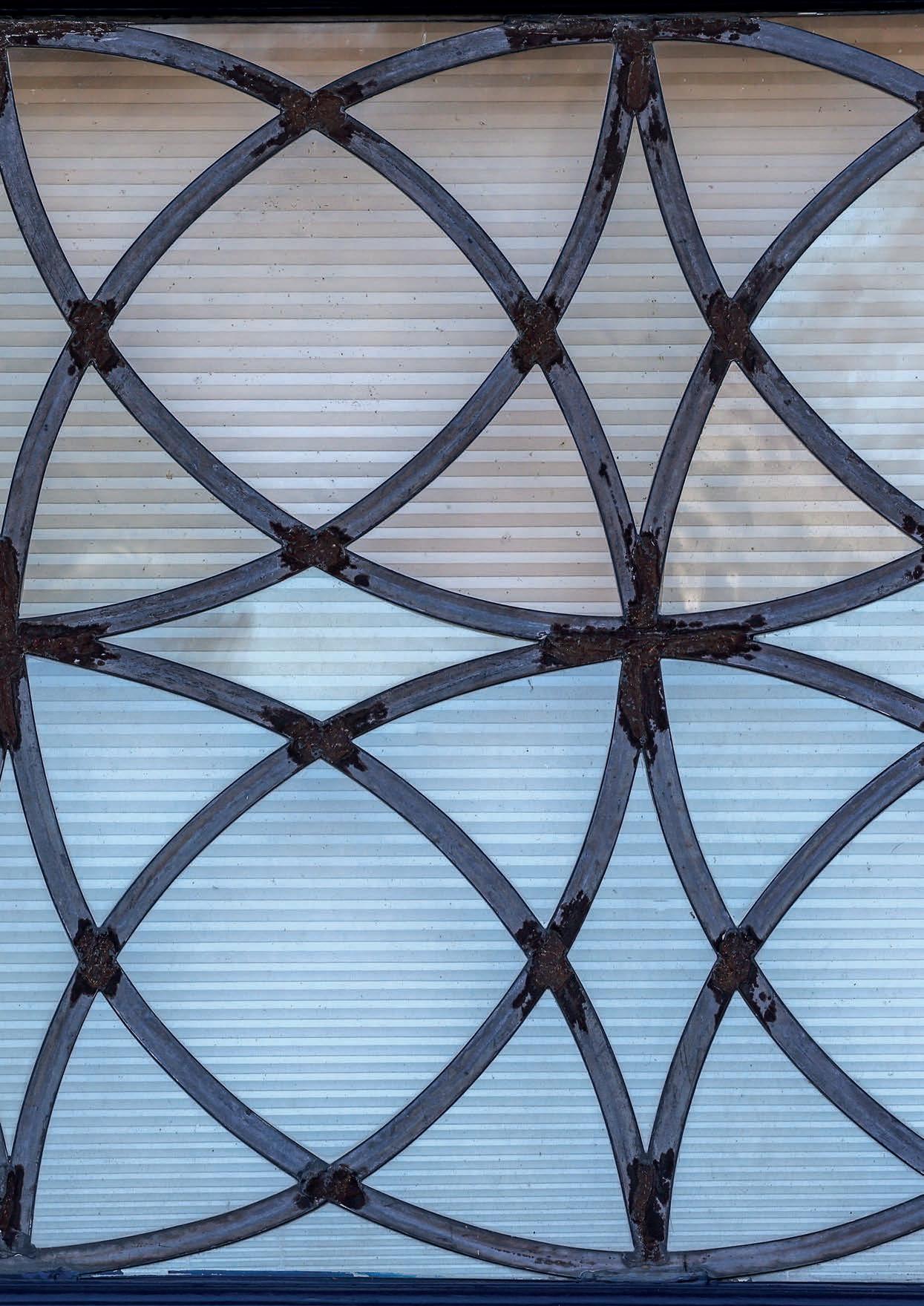
Nick Drake (C1 1962-66), widely admired singer-songwriter and musician, accomplished acoustic guitarist
Anthony Inglis (C3 1966-69), classical conductor, described as one of Britain’s most popular conductors
Susanna Spicer (SU 1979-81), English mezzo-soprano
Laurence Davies (C3 1980-85), orchestral Principal Horn, concerto soloist and chamber musician
Tim Ridley (C3 1980-85), keyboardist of the Brotherhood of Man and The Supremes
Damien Katkhuda (B1 1983-87), singer, songwriter, founder of the band The Mostar Diving Club
Toby Grafftey-Smith (B3 1984-89), musician, songwriter, music producer, keyboardist for Jamiroquai
Warren Lee (C3 1992-94), Hong Kong-born pianist, Steinway Artist, a regular featured artist of the Hong Kong Philharmonic Orchestra, composer and a music educator
Oliver Baines (C1 1996-01), part of the British band Blake, a classical crossover known for their vocal harmonies and Brit Award wins.
Catherine Brudenell-Bruce (Bo Bruce) (MM 1998-02), singer-songwriter, founding member of Equador
Tom Hooker (LI 2001-06), horn and piano player, member of the Pico Players
David Mahoney (C3 2001-06), conductor, producer and creative director; founder and musical director of The Novello Orchestra
Seraphina D’Arby (SU 2005-07), composer-producer and vocalist
Hamish Brown (C1 2006-11), British pianist, arranger and composer
Hattie Briggs (MM 2006-11), singer, songwriter and multi-instrumentalist
Fred Gibson (Fred Again) (B1 2006-11), Grammy and Brit Award winning record producer, singer, songwriter, multi-instrumentalist and DJ
Frances Leith (EL 2007-12), French horn player, singer, teacher; co-founder of music education group, Hold the Drama, and project manager for Thinking Music
A J S White CMG OBE , (C3 1910-15), 2nd Lieutenant with 4th Reserve Bn Wiltshire Regiment, spoke memorably about his military service in the First World War.
Robert Watts (C2 1952-56), film producer best known for his involvement in the Star Wars and Indiana Jones film series
Air Marshal Sir Ian MacFadyen
KCVO CB OBE FRAeS (C2 195560), retired senior Royal Air Force officer; former Lieutenant Governor of the Isle of Man (2000-05) and Constable and Governor of Windsor Castle (2009-14)
Richard Villar (PR 1966-71), leading orthopaedic surgeon, previously the Regimental Medical Officer to the SAS and a Team Leader for the UK’s Disaster Response, author and lecturer
The Right Honourable the Lord Malloch-Brown KCMG PC (C1 1967-71), British diplomat, communications consultant, journalist and former politician; President of Open Society Foundations (2021-24); Deputy Secretary-General of the United Nations (2006)
Hugh Pym (C1 1973-77), journalist, author, BBC health editor
Frank Gardner OBE TD VR FRGS (LI 1974-79), journalist, author, BBC security correspondent
Lt General Sir John Lorimer KCB
DSO MBE (C1 1976-81), retired senior British Army officer, Chief of Joint Operations and the Defence Senior Adviser to the Middle East and North Africa; Lieutenant Governor of the Isle of Man
Tom Newton-Dunn (C2 1986-91), English broadcast and newspaper journalist, known for hosting BBC4’s Week in Westminster
Jake Meyer (C3 1997-02), British explorer and adventurer, youngest Briton to climb Mount Everest and youngest person in the world to climb the Seven Summits, motivational speaker
HRH Princess Eugenie (MM 2003-08), art gallery director, arts patron and charity ambassador, co-founder of the Anti-Slavery Collective
Julia de Boinville (TU 2006-08), co-founder of the Anti-Slavery Collective
Musicians
John Lill CBE , British classical pianist
Alfred Brendel, Czech-born Austrian classical pianist, poet, author, composer and lecturer
Shura Cherkassky, Russian-American concert pianist
Jorge Bolet, Cuban-born American concert pianist, conductor and teacher
Dame Margaret Price DBE , Welsh operatic soprano
Dame Janet Baker CH DBE FRSA, English mezzo-soprano
Dame Evelyn Glennie CH DBE , Scottish percussionist, laureate of the Polar Music Prize 2015
Dame Emma Kirkby DBE , English soprano and early music specialist
Natalie Clein OBE , classical cellist
Sir Richard Rodney Bennett CBE , BAFTA and Grammy award-winning composer and pianist
Sir Thomas Allen CBE FRSM, regarded as one of the best lyric baritones of the late 20th century
Paul Tortelier, French cellist and composer
Julian Lloyd Webber OBE , British solo cellist, conductor and broadcaster, a former principal of Royal Birmingham Conservatoire, founder of the In Harmony music education programme
James Blades OBE , one of the most distinguished percussionists in Western music
Dame Felicity Lott DBE FRAM FRCM, English soprano
Ian Bostridge CBE , English classical tenor
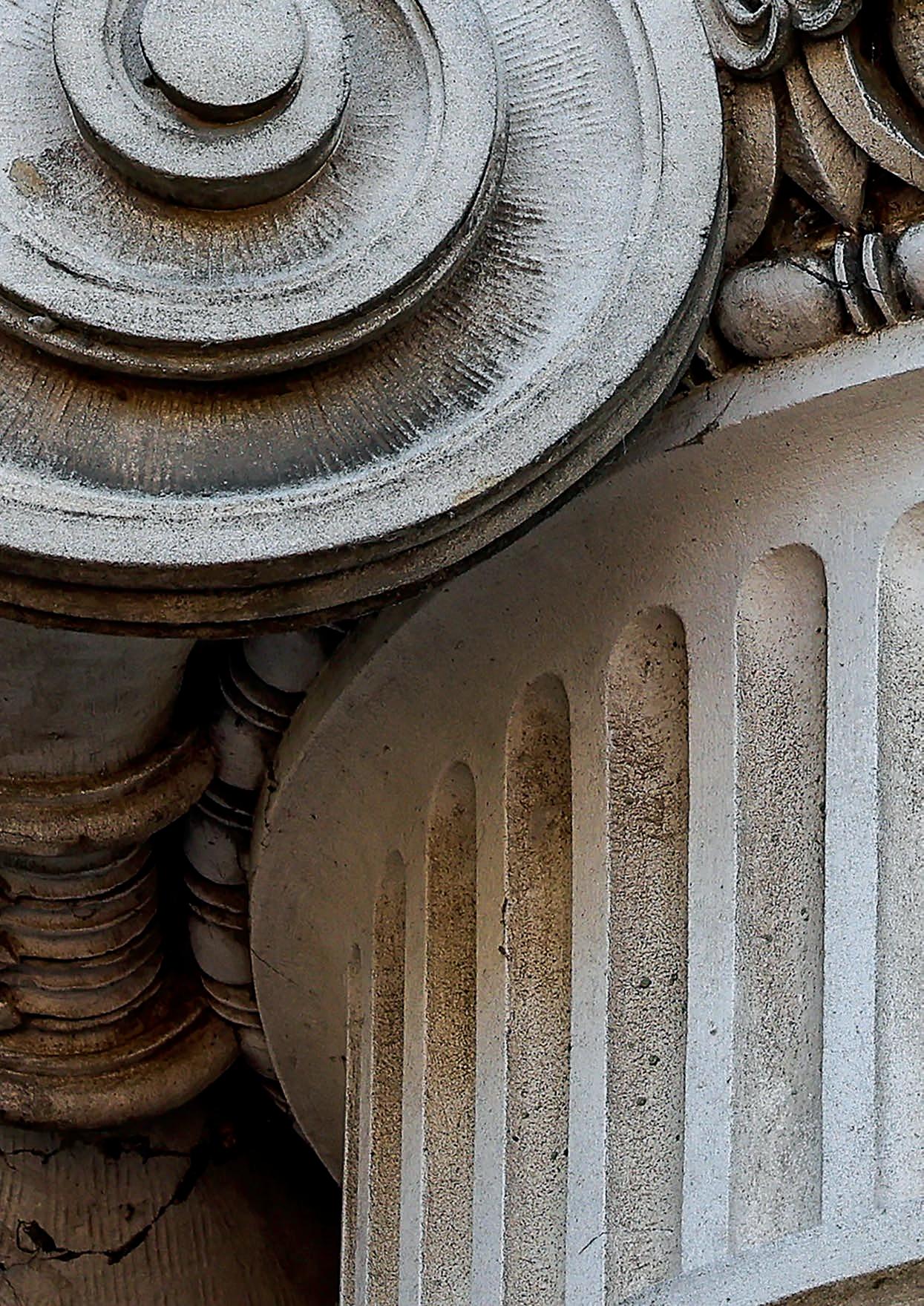
Howard Goodall CBE , English composer of musicals, choral music and music for television, award-winning television and radio presenter
The London Symphony Orchestra, the oldest of London’s symphony orchestras
Tom Odell, English singer-songwriter
Rag ‘n’ Bone Man, BRIT awardwinning singer
Scouting for Girls, English pop rock band
Ward Thomas, English modern country-pop duo
Dong-Suk Kang, South Korean violinist
Peter Donohue CBE , English classical pianist
Labeque sisters, internationally recognised French piano duo
Chilingirian string quartet, British string quartet
Nigel Kennedy, violinist and violist of classical music, jazz, klezmer and other music genres
Tom Hooker, American singersongwriter and fine art photographer
Vienna Boys Choir, world famous choir of boy sopranos and altos based in Vienna, Austria
Kyung Wha Chung, South Korean violinist
Jacques Loussier Trio, French Third Stream jazz piano trio, led by pianist and composer Jacques Loussier
Simon Carrington, English conductor, singer and double bass player, founder member of the Grammy award-winning vocal ensemble the King’s Singers
Herbert Howells CH CBE , English composer, organist, and music teacher
Ken Burton, choral and orchestral conductor, composer, performer, producer, presenter, arranger and judge, widely known for his work on BBC1 Songs Of Praise
Sheku Kanneh-Mason MBE , British cellist and winner of the 2016 BBC Young Musician award
Julian Bream CBE , English classical guitarist and lutenist
Kenneth Leighton, British composer and pianist
Emil Gilels, Russian pianist, widely regarded as one of the greatest pianists of all time
Barry Douglas CBE , international concert pianist and Visiting Prince Consort Professor of Piano at the Royal College of Music
Rick Wakeman CBE , composer and multi-million album selling keyboardist with the rock band Yes
HRH Duke of Connaught, third son of Queen Victoria
Sir Don McCullin CBE , British photojournalist
Lord Robert Winston FMedSci FRSA FRCP FRCOG FRSB HonFReng, British professor, medical doctor, scientist, television presenter and Labour peer
Professor Sir John Bell GBE CH FRS FMedSci HonFREng, CanadianBritish immunologist and geneticist; President of the UK Academy of Medical Sciences (2006-11); Regius Chair of Medicine at the University of Oxford
Henry Marsh CBE FRCS, pioneering British neurosurgeon and author
Sir Michael Palin KCMG CBE FRGS FRSGS FRSL , English actor, comedian, writer, and television presenter, BAFTA Fellowship recipient 2013
Stuart Pearce MBE , English professional football player and manager
Michael Portillo FRSGS, British journalist, broadcaster and politician
Revd Richard Coles FRSA FKC , writer, broadcaster and Church of England priest
Clare Balding CBE , broadcast journalist, presenter and author
Sir Steve Redgrave CBE DL , rower who won gold medals at five consecutive Olympic Games 1984-2000
Sir Michael Morpurgo OBE FRSL FKC DL , English book author, poet, playwright and Librettist, past Children’s Laureate
John le Carre, author best known for his espionage novels, former British intelligence officer
Sir Simon Russell Beale CBE , multi-award-winning actor of stage, film and television
Robert Peston, English journalist, presenter and author, Political Editor for ITV News
William Dalrymple CBE FRAS
FRSL FRGS FRSE FRHistS, historian, art historian, awardwinning author, curator, broadcaster and critic; co-founder of the annual Jaipur Literature Festival
John Thaw CBE , English actor of television, stage and cinema
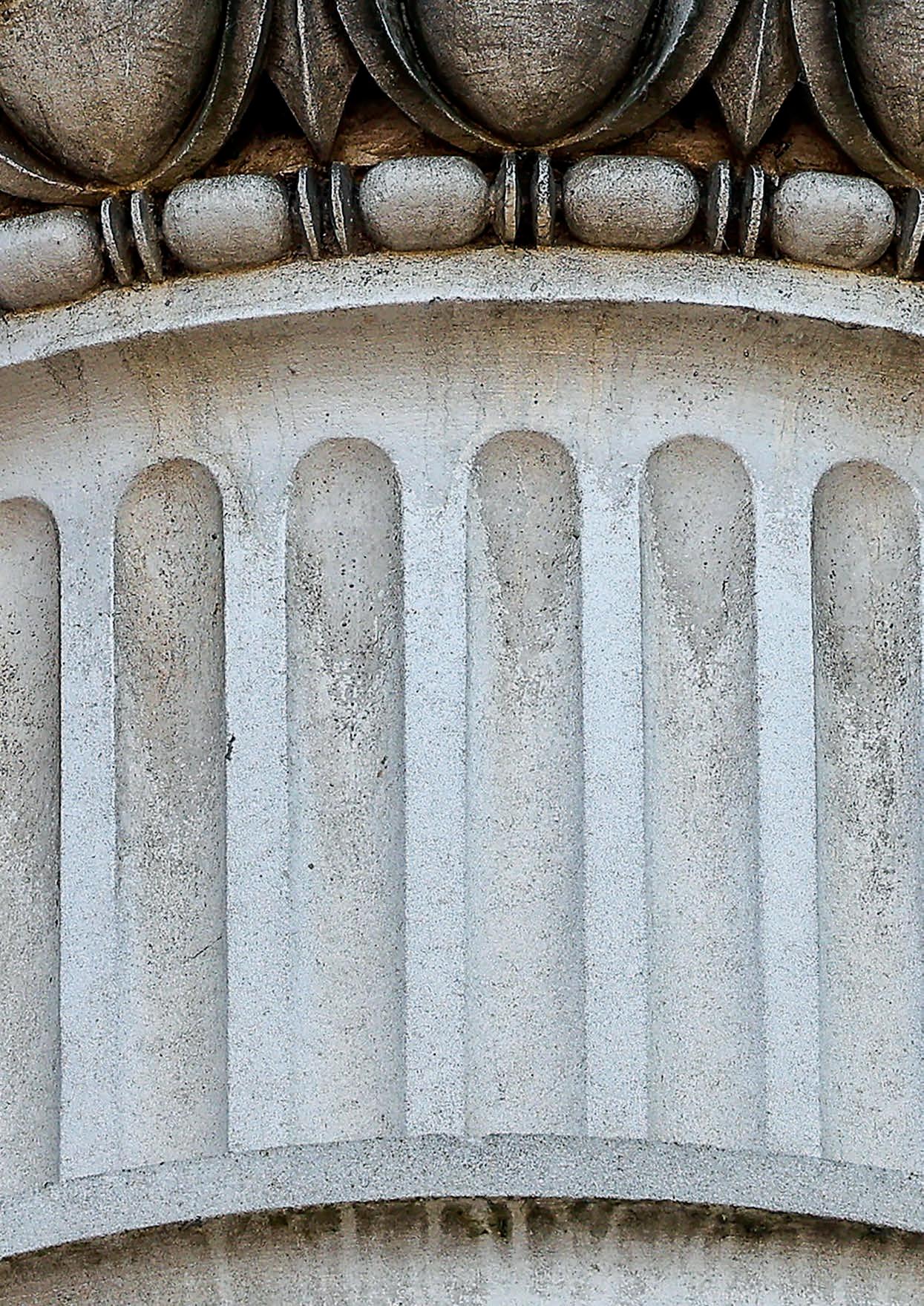
Johnny Morris OBE , television presenter and actor, best known for his childrens’ programmes on zoology
Robert Hardy CBE FSA, English actor in theatre, film and television
Frankie Howerd OBE , English actor and comedian
David Walliams OBE , English actor, comedian, writer and television personality
William Boyd CBE FRSL , British novelist, short story writer and screenwriter
Dame Carol Ann Duffy DBE FRSL HonFBA HonFRSE , Scottish poet and playwright, Poet Laureate 2009-19
Vice Admiral Sir Tim Lawrence KCVO CB CSM ADC FSA, retired Royal Navy officer and husband of Anne, Princess Royal
The Rt Hon The Lord Home of the Hirsel KT PC JP DL, Alexander Douglas-Home, British statesman and Conservative politician and Prime Minister 1963-64
RSM John Lord MVO OBE , British Army Grenadier Guardsman and paratrooper who saw service during the Second World War. Captured by the Nazi’s he was imprisoned in Stalag XI-B
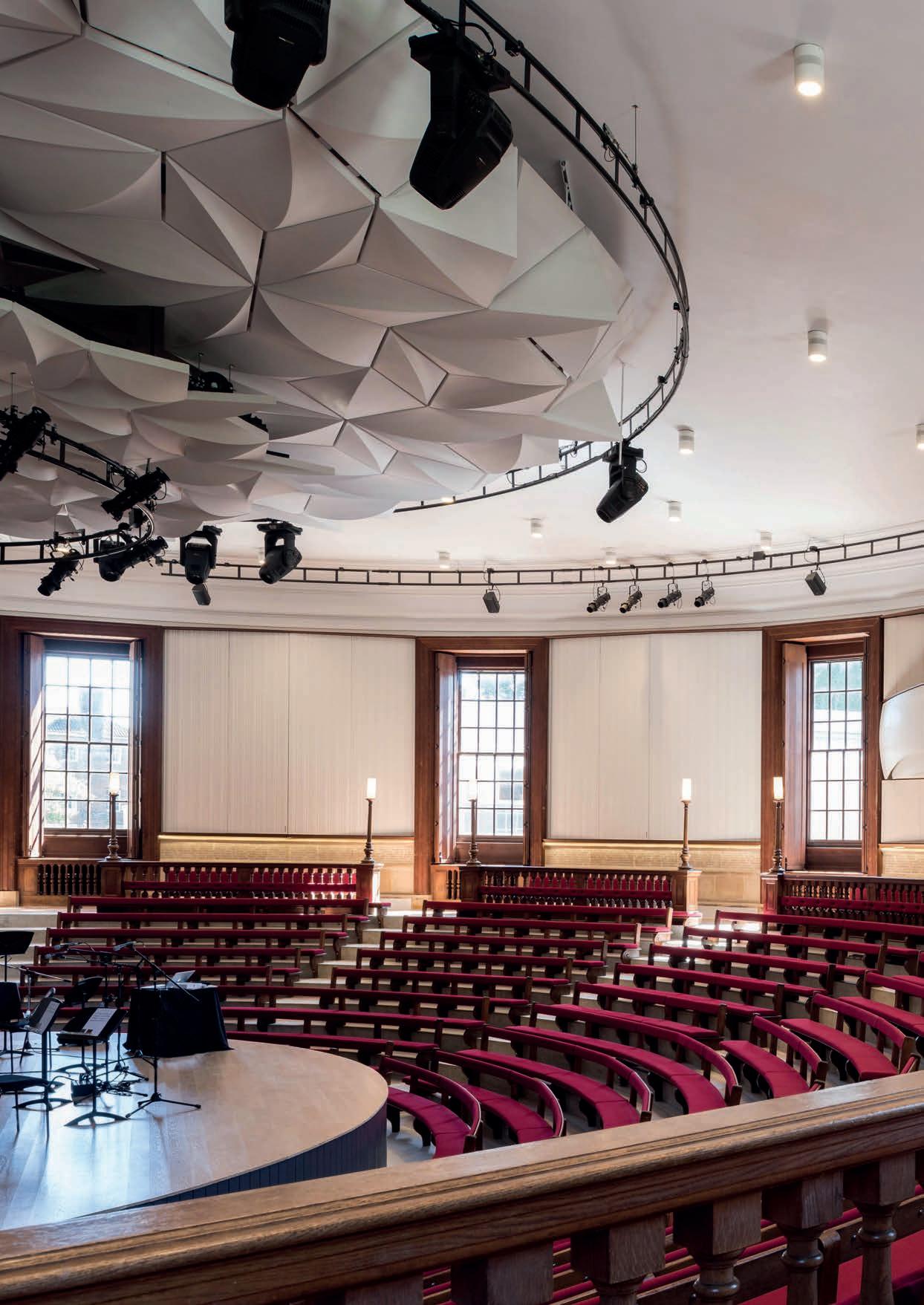
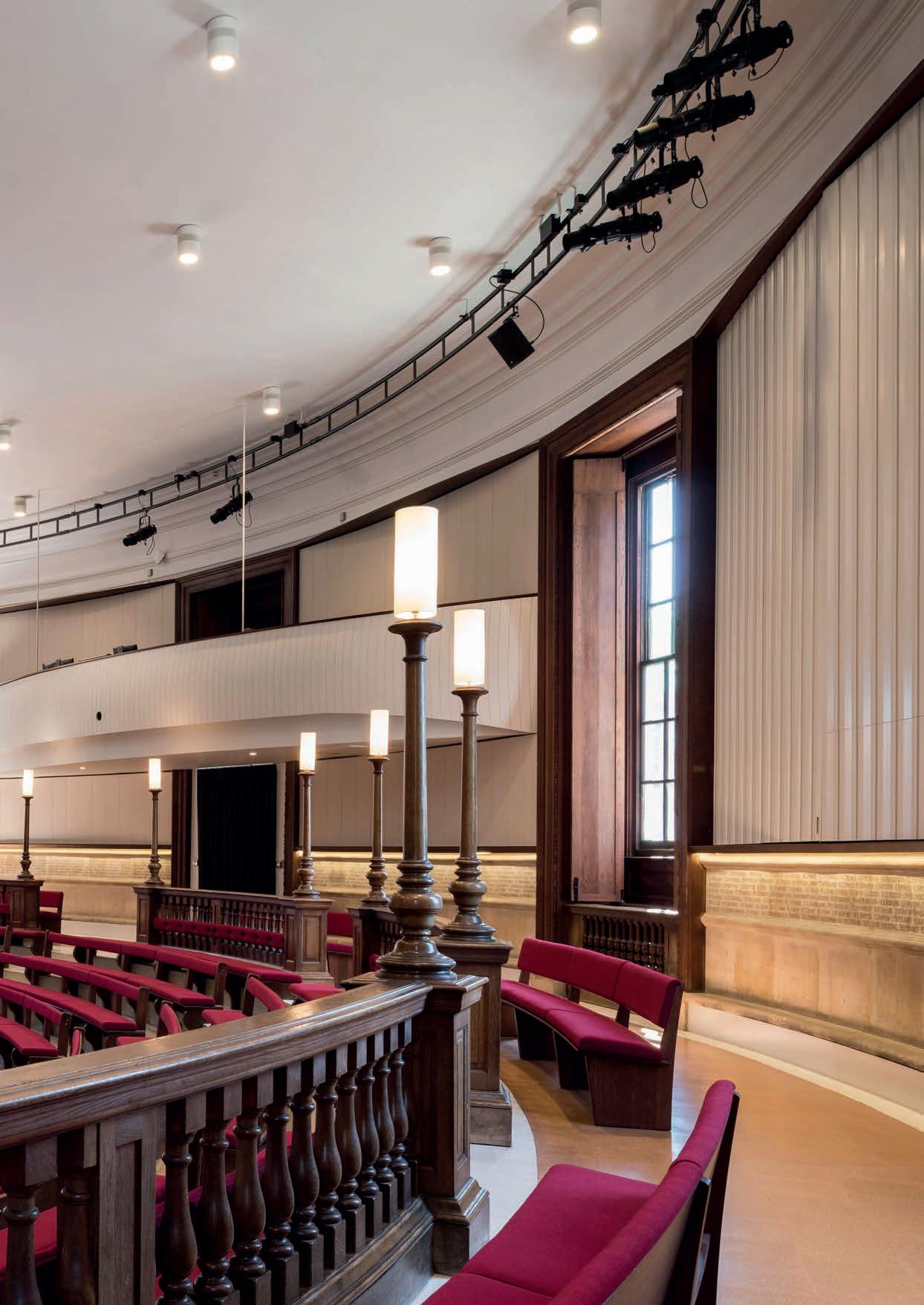
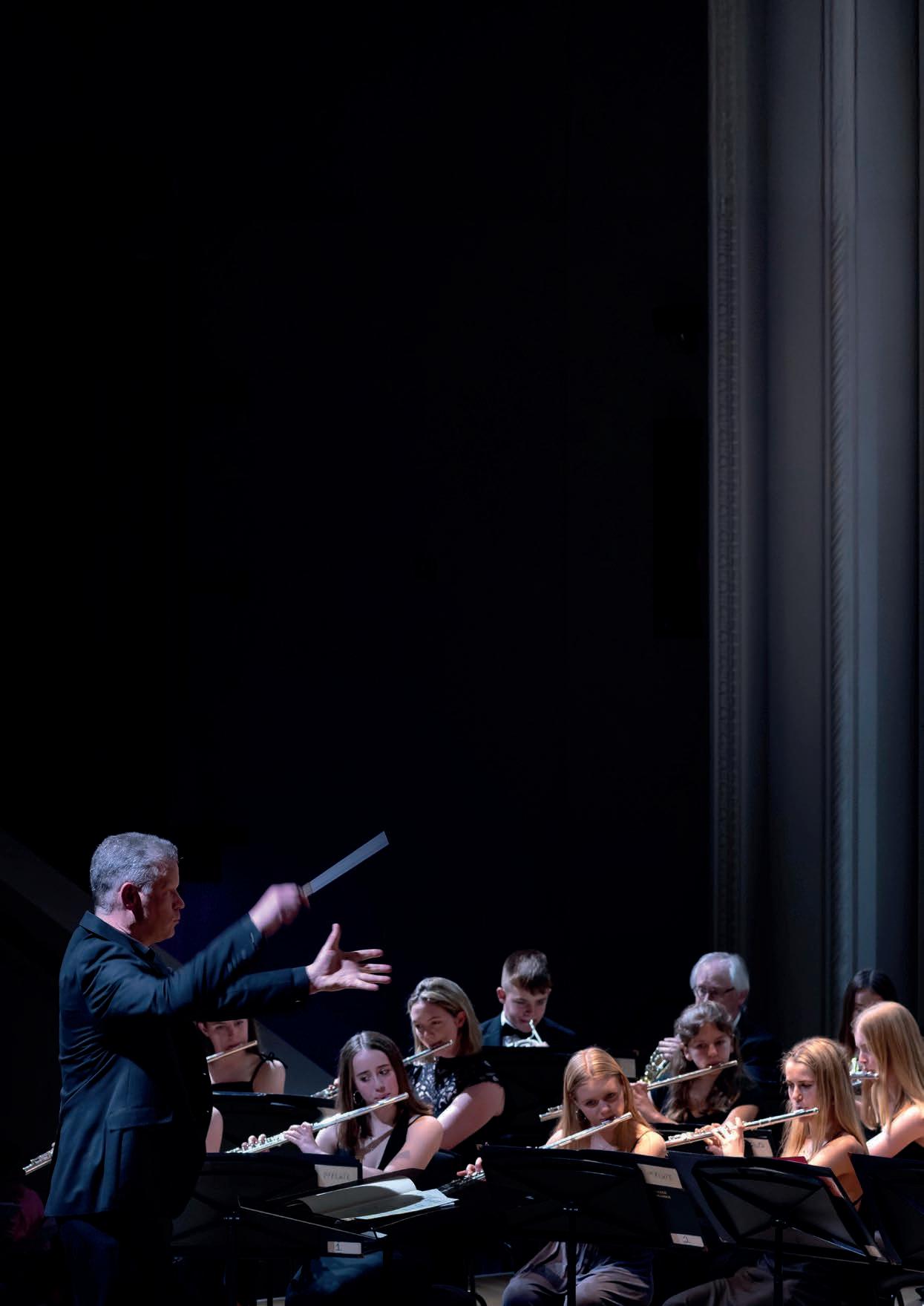
By the time it came about, the restoration of the Memorial Hall was long overdue. The years had taken their toll and the fabric of the building was in need of major repair: the structure no longer kept out the elements, the roof needed attention and the mechanical and electrical systems were antiquated.
The story of the success of its transformation belongs to many people. It was a complex building with a host of issues to resolve, yet when I remember its renovation, four names come to mind. I hope they will provide you with fresh insights into how we arrived at the Hall as it is today.
In 1895, the lecture hall in Harvard University’s newly built Fogg Art Museum, opened its doors to students. It was a large semicircular room with a wide, shallow stage and raked, wooden seating – strikingly similar architecture to that of the Memorial Hall, which would open its doors some thirty years later. Inspired by the design of Greek amphitheatres, the Fogg’s plan, on paper, had all the hallmarks of an acoustically satisfactory space. To Harvard’s surprise, and its great disappointment, the Fogg however had abysmal acoustics, rendering speech unintelligible. As a lecture hall, it was an abject failure.
Worse still, the architects could not provide a solution to the problem. So, in the words of Sabine’s cousin: ‘The College authorities did what
I suspect college authorities are prone to do in all such cases, referred the problem to the Physics Department – and the Physics Department in turn placed the wailing infant on the doorstep of the youngest professor in the Department.’ That professor was Wallace Sabine.
Bear with me while I describe what Sabine did – the relevance to the Memorial Hall will become apparent. With his customary diligence, Sabine set to work and soon concluded that excessive reverberation was responsible for the terrible acoustics in the Fogg. First, he devised a way to measure reverberation time. Having first established a working metric, he then turned his attention to solving the acoustic problem, assessing the impact of different
quantities of sound absorbers to reduce the reverberation time (and in the process reportedly moving hundreds of cushions from other rooms on the Harvard campus into the Fogg, at around 2 a.m. every night, only to return them all to their rightful place by 6 a.m.).
Sabine successfully resolved the excessive reverberation in the Fogg and dedicated the rest of his career to the then novel science of acoustics. Today, the unit of sound absorption is still the ‘sabin’ (defined as the sound absorption of one square foot of open window) and Sabine is considered the father of architectural acoustics. His findings were key to solving the complex acoustic problems faced in the renovation of the Memorial Hall over a century later.
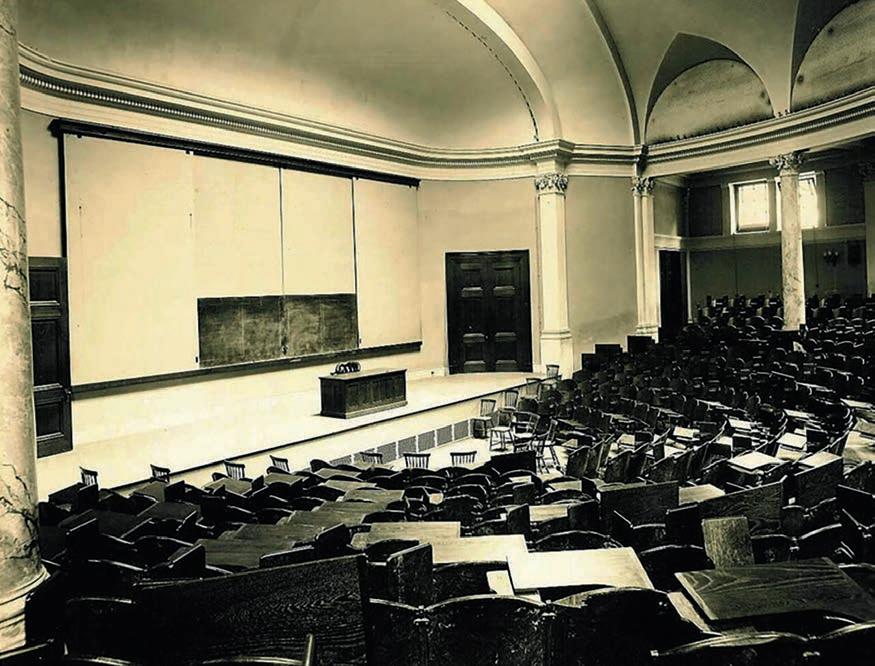
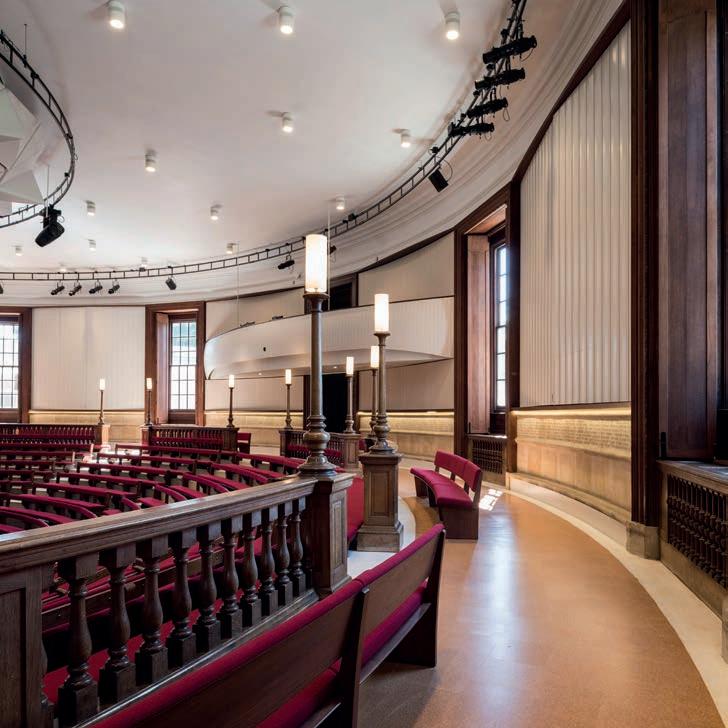
Fast forward to 2017, when the Bursar at Marlborough College asked me to help identify an architect who might successfully not only restore the fabric of the Memorial Hall, but also bring it into the twenty-first century. By then, there had been several false starts, with architects engaged but the project failing to come to fruition.
With no direct relevant experience, I had however been fortunate enough, just a few months prior to this, to find myself sitting next to Jack Diamond at a dinner. Jack, then in his early eighties, was the founding partner of a large firm of Canadian architects with a global practice. He loved music and, decades earlier, had completed his undergraduate thesis on acoustics and concert halls. By the time I met him, he had notched up the design of a long list of awardwinning, world-class concert halls, including the recently completed Mariinsky II in St Petersburg, the Four Seasons Opera House in Toronto and the Maison symphonique in Montreal. A highly respected architect in the field, I called Jack to ask him who I might consider for this small but very special project. As luck would have it, he was passing through the UK and offered to come and see the Memorial Hall.
As soon as Jack stepped into the Hall, he saw the Fogg and he saw Sabine. He stood in an aisle, clapped his hands and listened intently. He knew immediately
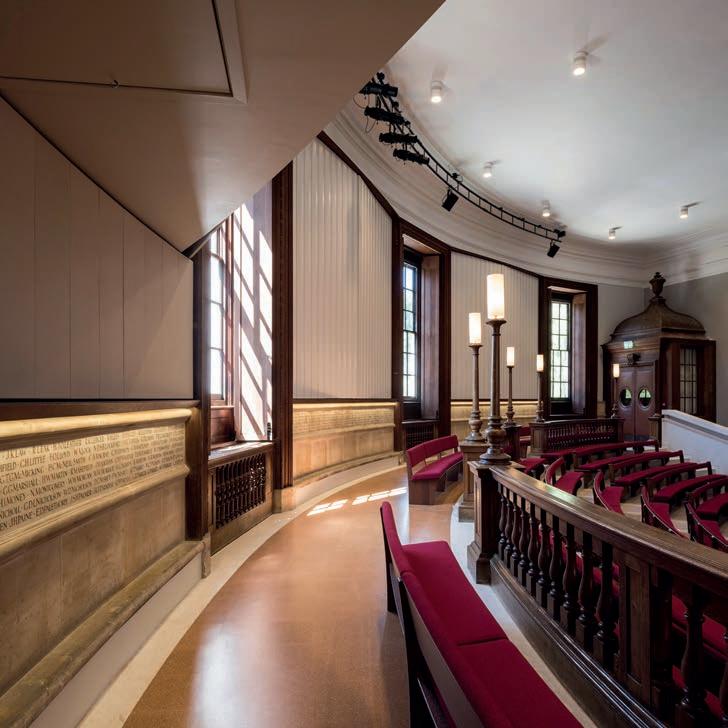
that the Hall had the same acoustic problem of excessive reverberation as the Harvard lecture hall that Sabine had been asked to correct.
Just like in the Fogg, in the Memorial Hall sound bounced back to the stage from the semicircular back wall. The excessive reverberation time caused an echo that could render speech unintelligible and the centre of the stage unusable. Aesthetics aside, if the refurbishment of the Memorial Hall was to be a success, fixing the acoustics was of paramount importance. This piqued Jack’s interest.
Wandering through the Hall, Jack was touched by the charm and atmosphere of the building and, peering behind the extra row of
chairs which had been placed in front of the curved back wall, he was profoundly moved by the engraved names of the 749 Marlburians who had died in the First World War. It is a rare – if not unique – find to discover a memorial which honours the fallen and which does so in such a way as to include them in the daily joyous activity of a school auditorium. Much to the credit of William Godfrey Newton (C1 1899-04) (the original architect of the Memorial Hall), the Hall was never intended to be a place of quiet contemplation. On the contrary, the names of the 749 fallen Marlburians were placed at the back of the auditorium as if they were to continue to form a part of the audience. The Hall was to be a living, vibrant memorial to them.
As we walked out of the Hall, Jack told me that he might well be interested in taking on the project himself. I introduced him to the Bursar, whose view was that the search for an architect could end here. Jack’s vast experience meant that he could not be bettered. We had a world-renowned architect to take the Memorial Hall forward.
In 1895, Sabine’s scientific enquiry into acoustics was a novel science, yet the idea of sound absorption was not. Over a hundred years earlier, Handel seemed to have understood the issue, albeit in a less scientific way. When Handel played, he could hear and feel the acoustic quality of a space. He could pick up subtle nuances in sound that an untrained ear would miss. As a result, so Jack told me, back in the eighteenth century, Handel refused to let the cleaners wipe away the dust from the columns in the Covent Garden opera house because it affected the quality of the music he produced. It is a short and amusing anecdote which intrigued me at the time, for how much dust would it have taken to fix the Memorial Hall’s acoustics?
An accumulation of dust might also have helped the Fogg, but ultimately, through painstaking scientific enquiry, Sabine was able to greatly improve the sound quality in its lecture hall by installing felt wall panels. In the Memorial Hall, many more tricks would be required to bring about the final magic and Jack enlisted acousticians to help.

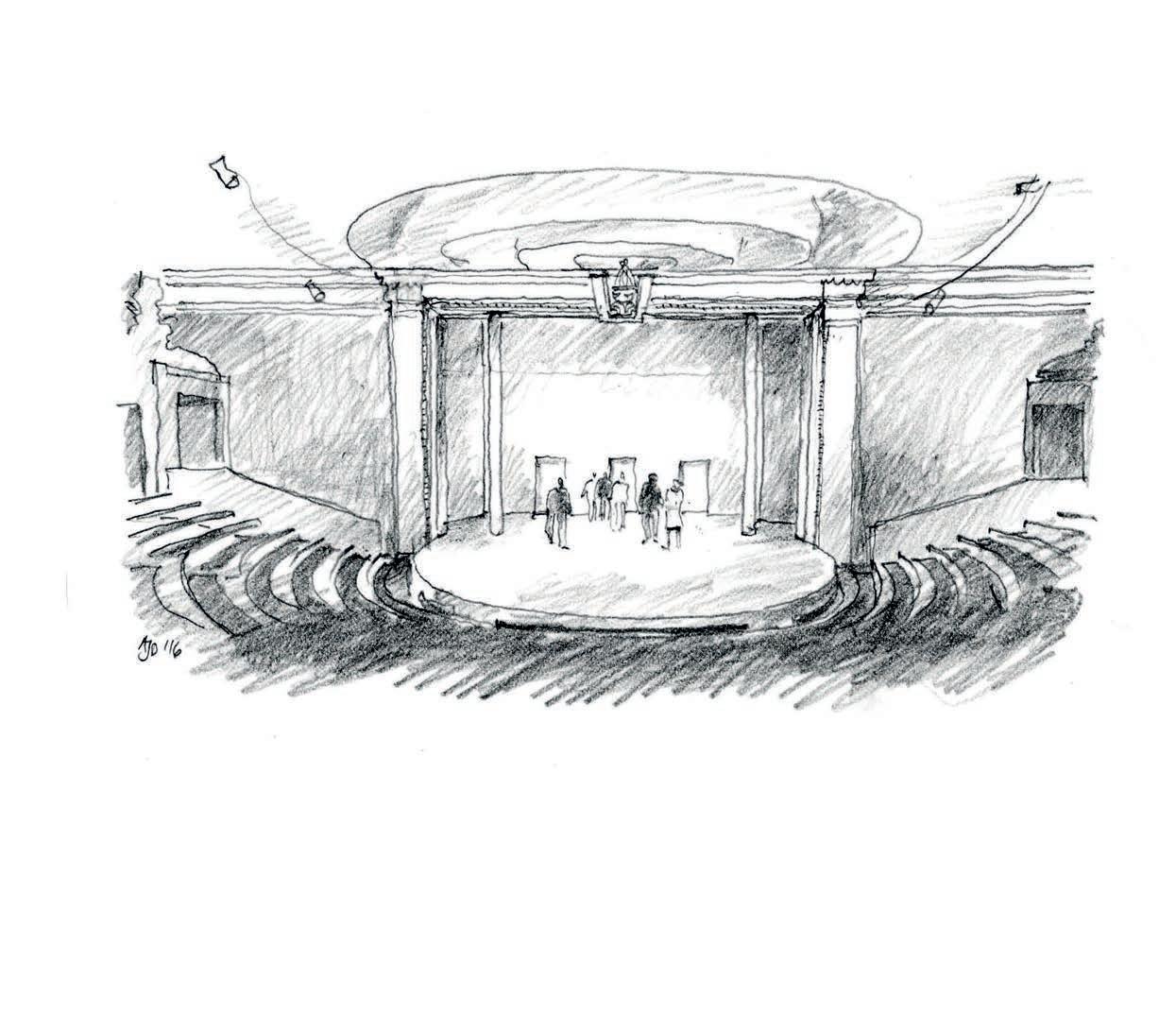
Multifaceted convex panels were added to the back wall to diffuse sound, and acoustic banners put in place to soften loud sound. To compensate for the semicircular room, more volume was required at the point where sound was emitted, but increasing the size of the proscenium arch would be a prohibitively costly structural exercise. The compromise we settled on – which Jack first showed me as a hand drawn sketch on a scrap of paper which is reproduced above – was to retain the two supporting columns on either side of the stage.
The raked seating in the Memorial Hall was bitterly uncomfortable. Some felt this was reason enough to rip out the old benches and start afresh. While there was merit to that idea, both in terms of comfort and acoustics, the steep raking of the amphitheatre seating meant there simply was not the space to instal modern theatre seats. In any event, we concluded that the benches were integral to the feel and the charm of the Hall, so we kept them, adding as much padding as we could and reupholstering them in fabric to
further help with sound absorption. I can only apologise that they are not as comfortable as the plush seats in the Royal Opera House!
Visually, perhaps the greatest change to the Memorial Hall was the addition of a large sound reflector on the ceiling. Its purpose is fundamental to the acoustics: it diffuses sound across the stage, reducing the echo for performers and improving the quality of sound for the audience. To be most effective, the reflector needed to be multifaceted, which we therefore took into account in the design of its tiling pattern, which is inspired by Penrose tiling. I don’t pretend to understand it, but I can tell you that the pattern of the Memorial Hall reflector does not truly repeat itself and that no two tiles in it are identical.
Through these various devices, under the watchful eye of Jack Diamond, the problematic acoustics in the Memorial Hall were resolved.
The last name that comes to mind when thinking back to the renovation project is that of Siegfried Sassoon. Siegfried, an Old Marlburian, was a young man when the First World War broke out and, in May 1915, was commissioned into the Royal Welch Fusiliers as a second lieutenant. His younger brother Hamo (CO 1902-04), who had also attended Marlborough, was commissioned shortly thereafter. Within five months, Siegfried learned that his brother had been killed in the Gallipoli Campaign, after having his leg amputated. Hamo, who had joined the Royal Engineers in June 1915, died that November. He was twenty-eight years old.
Siegfried Sassoon soon found himself in the thick of the war, in the trenches on the Western Front and in the Battle of the Somme at Mametz Wood. A decorated soldier, his bravery was legendary, but as the ravages of war unfolded before him, his support for the war faded and was replaced by a fierce and vocal opposition to it.
After the war, he wrote this particularly poignant poem:
Have you forgotten yet? …
For the world’s events have rumbled on since those gagged days, Like traffic checked whilst at the crossing of city-ways: And the haunted gap in your mind has filled with thoughts that flow Like clouds in the lit heaven of life; and you’re a man reprieved to go, Taking your peaceful share of time, with joy to spare, But the past is just the same – and War’s a bloody game …
Have you forgotten yet? …
Look down and swear by the slain of the War that you’ll never forget.
Do you remember the dark months you held the sector at Mametz –The nights you watched and wired and dug and piled sandbags on parapets?
Do you remember the rats; and the stench Of corpses rotting in front of the front-line trench –And dawn coming, dirty white, and chill with a hopeless rain?
Do you ever stop and ask, “Is it all going to happen again?”
Do you remember that hour of din before the attack –And the anger, the blind compassion, that seized and shook you then As you peered at the doomed and haggard faces of your men?
Do you remember the stretcher-cases lurching back
With dying eyes and lolling heads – those ashen-gray Masks of the lads who once were keen and kind and gay?
Have you forgotten yet? …
Look down and swear by the green of the Spring that you’ll never forget!
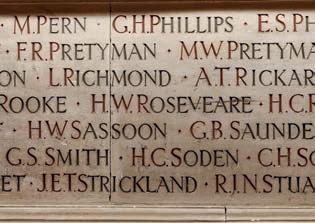
At the outset of this article, I wrote that four people’s names come to my mind when thinking back to the restoration of the Memorial Hall. There are in fact hundreds more, for during the transformation of the Hall, the 749 young men who died in the Great War remained, above all, our guiding stars. Nothing was to obscure their names from sight. Nothing was to detract from these names, which we sought to enhance by cleaning the stone in which they are engraved and adding lighting to bring them further into evidence.
These days, when I sit in the Memorial Hall, I recognise that we are fortunate to have such a beautiful, fully functional auditorium on the campus. That in itself might have amounted to a successful renovation project. But we have much more. We have in the Memorial Hall an auditorium which continues in its primary aim, to help us remember all Marlburians who have died in the wars. And we can continue to say that we have not forgotten.
Tania Freeman Chair of
the Design Committee for the Restoration of the Memorial Hall;
former
Parent and Council Member (2021- )

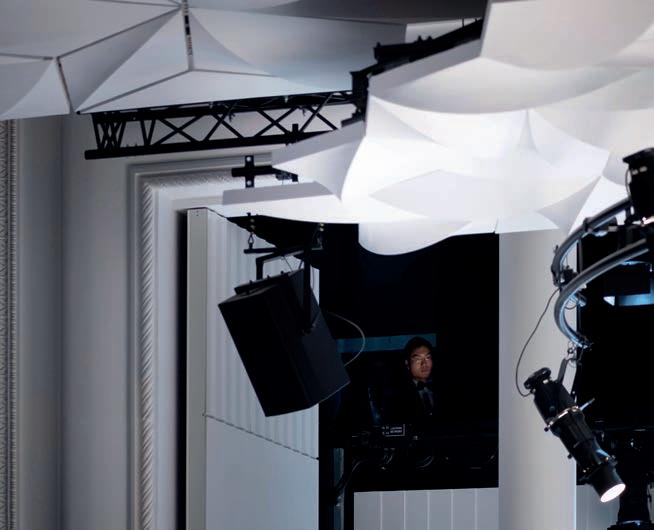
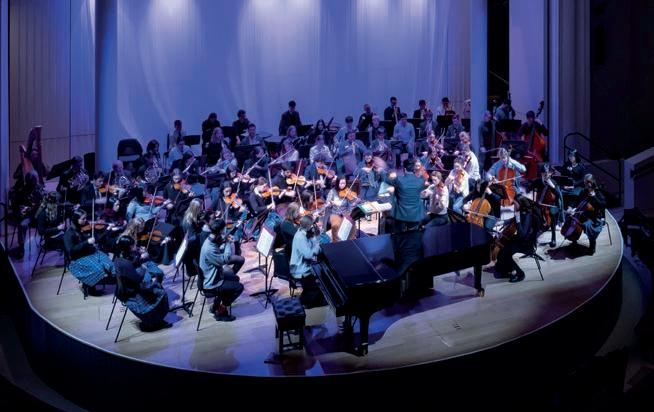
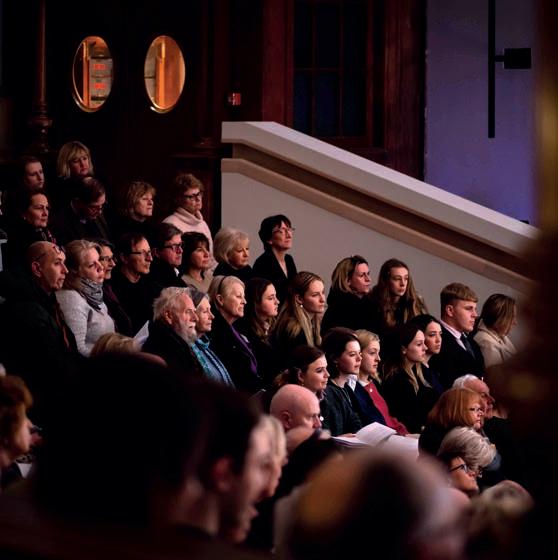
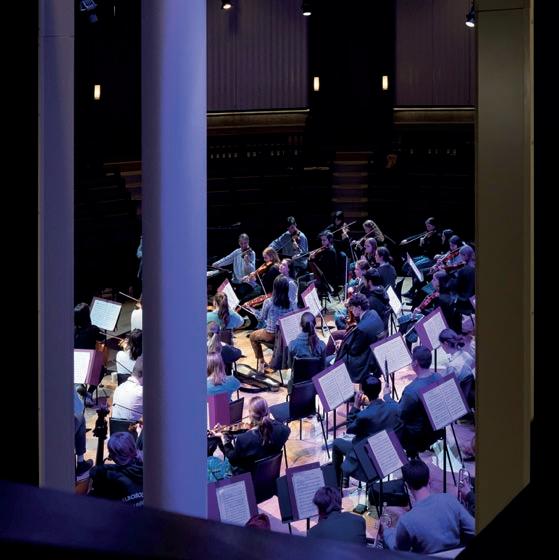
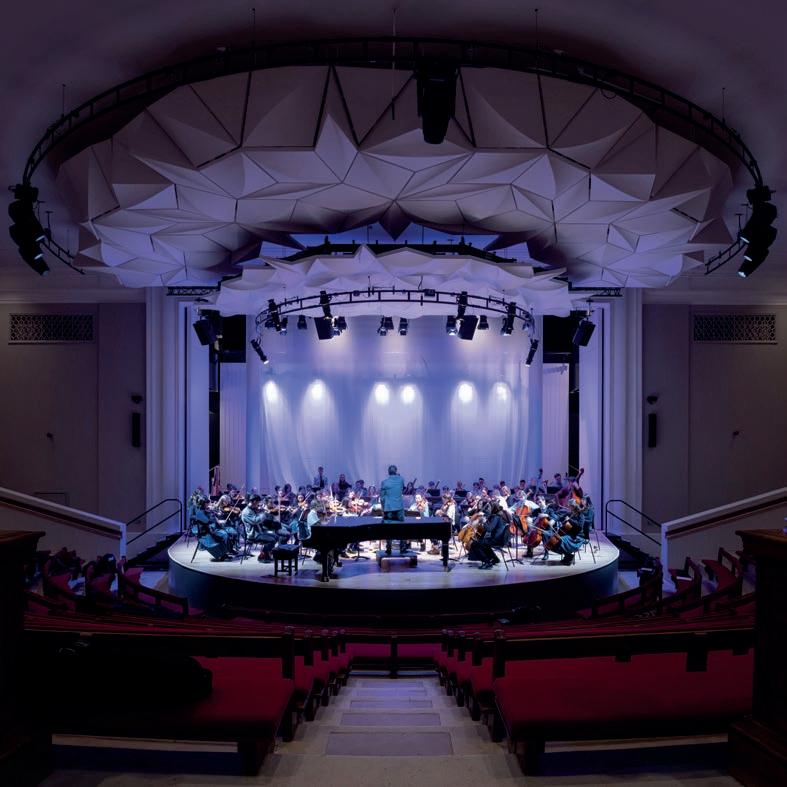




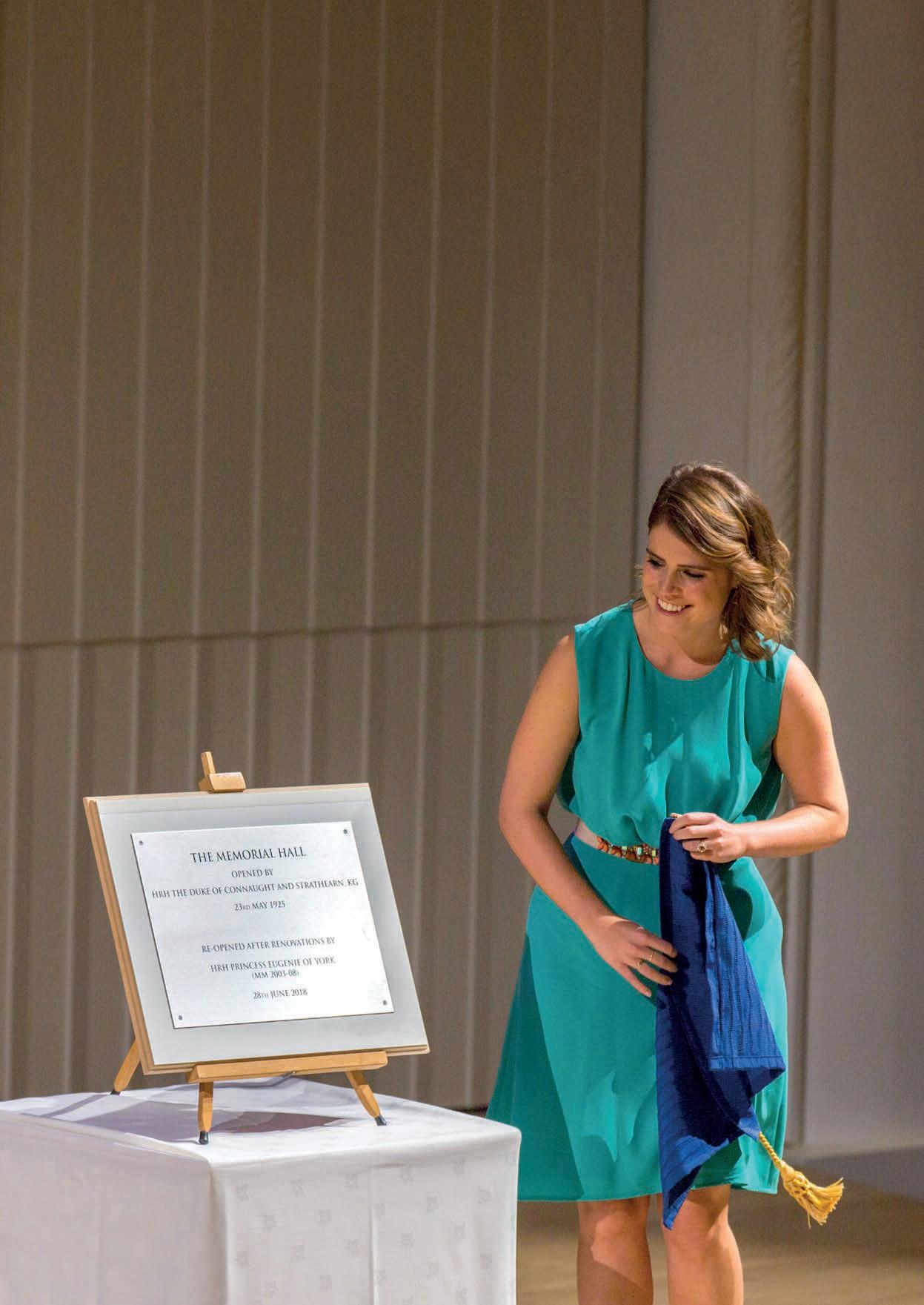
The Memorial Hall was slated to be reopened in place of the Everest lecture as the Summer Term of 2018 ended. Hence, four years of carefully planned remembrances of the First World War concluded. The presence of HRH Princess Eugenie (MM 2003-08) to reopen the building was a most auspicious choice and glorious weather gave the occasion a fitting backdrop.
Arriving at 11 a.m., Princess Eugenie was briefed in the Master’s Lodge before embarking on a well-rehearsed plan. Everyone was put at ease through her natural charm and evident love of the College. Setting out to the Art School on what was my last day of twenty-six years of Headship, it was my privilege to lead her along the circuitous route planned. This included time for refreshment with the girls of Mill Mead. Then we walked past the water meadows to the far entrance of the Memorial Hall and thence onto the newly refurbished stage. Common Room lined the back, with invited guests at the front. These included the Lord Lieutenant and our own Lisa Farrell, the then Mayor of Marlborough. The College packed the newly restored benches and awaited two brief speeches.
As Master, it fell to me to welcome the Princess, recalling that her great-greatgreat-great-uncle, the Duke of Connaught, had opened the original Memorial Hall. As such there was a happy synergy with her, an Old Marlburian, who was now the Royal representative at this important renewal. Following a short speech from Princess Eugenie, she declared that the building was now formally reopened. After this, we made our way back through Court to the Lodge Garden. Here, a few more presentations were made before the Princess took her leave.
HRH expressed much delight to have carried out what she regarded as a private duty and one which so clearly mattered to her. She made a great point of speaking to all with whom she came into contact. She was especially brilliant at breaking away to include figures whom she recognised on the periphery. Quite simply, she brought great energy and delight to the formal recognition of the achievement of all who worked so hard in refurbishing the Hall. She also acknowledged the great generosity of the many people involved in a project honouring the 749 Marlburians who had died in the First World War. They remain fittingly commemorated within the building, not to mention the many others who played their part; an Everest of commitment and service.
Jonathan Leigh Master (2012-18)
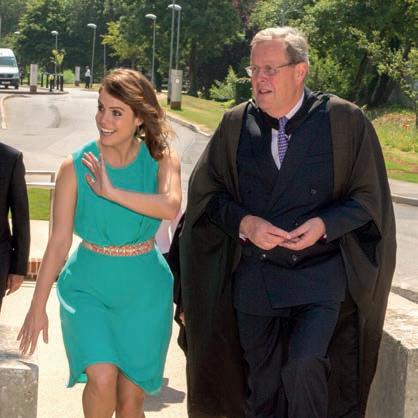
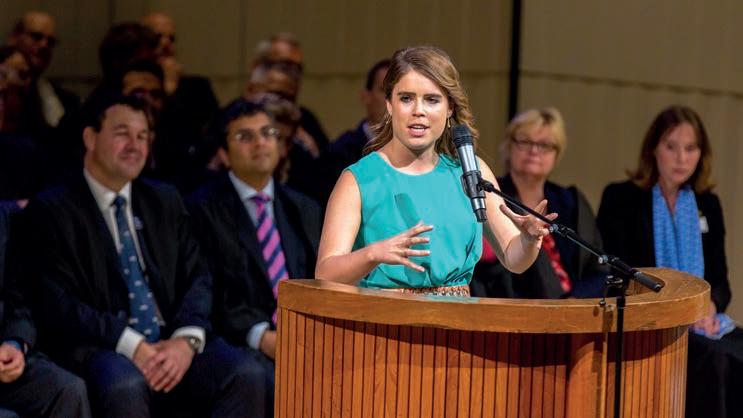
Much of my time now is spent fundraising for free places for children from disadvantaged backgrounds. Having enjoyed seeing how a Marlborough education transforms the lives of these young people, this is work I am passionate about doing.
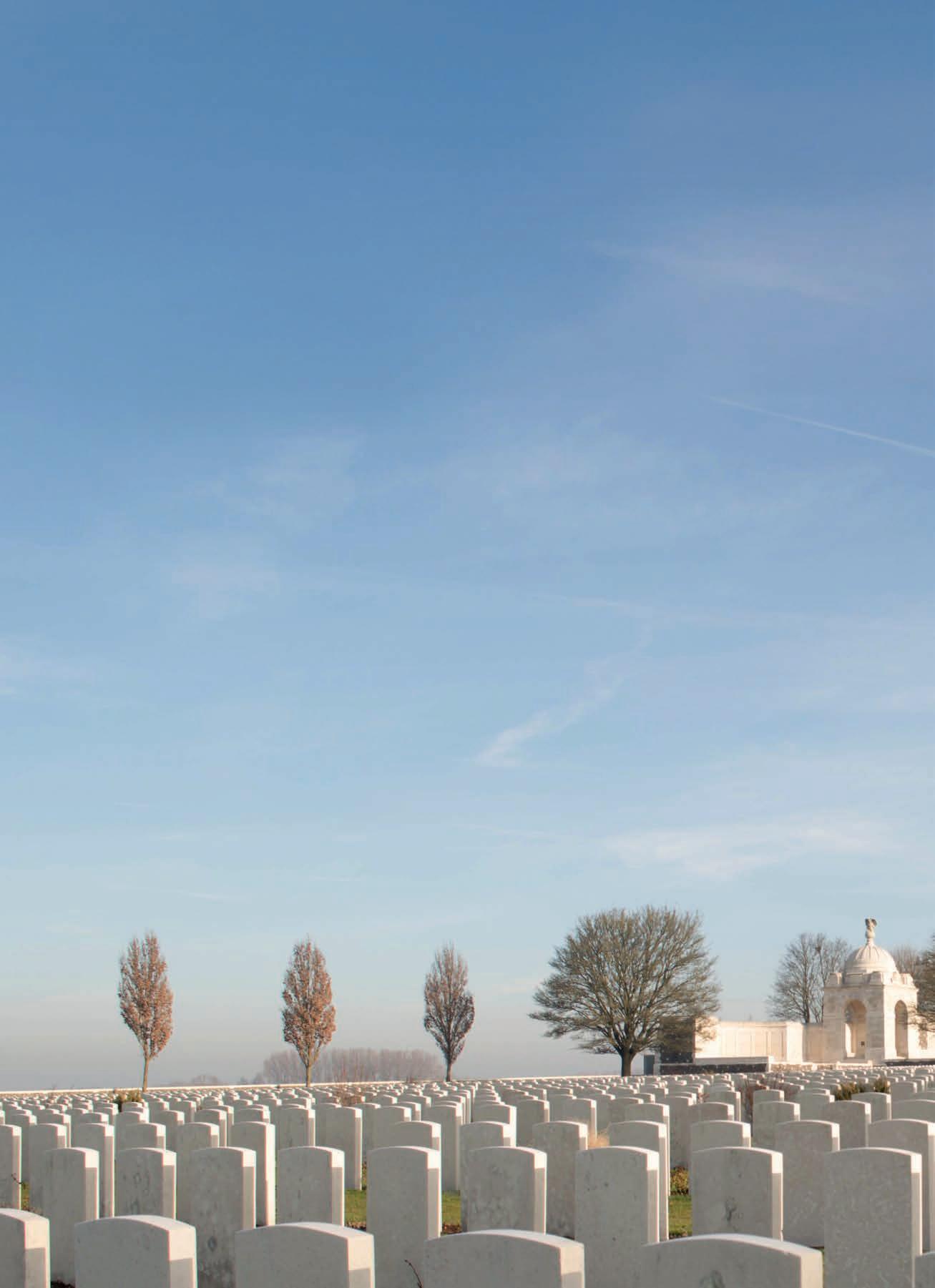
But when I was asked to take the lead in fundraising for the restoration of the Memorial Hall back in 2015, it was fair to say I was not so enthused, even though I always liked the building and understood that it was definitely in need of some care and attention! The thought of asking people to give to a building did not resonate. However, it quickly became clear that this was no ordinary building. As I delved into its history, and spoke to Old Marlburians, it became apparent that the building is one of special shared memories, for those who discovered their love of music and drama in here, enjoyed watching movies,
House shouts ... the list goes on. And, of course, above all, it commemorates the sacrifice made all that time ago by those whose names are on the curved wall, and the casualties of the Second Word War, as well as Marlburian holders of the Victoria and George crosses. But because the wall was hidden by chairs, many younger Marlburians did not fully appreciate this.
It was rightly decided that any restoration needed to be completed by the 100th anniversary of the First World War, in November 2018, so a working group was established to look at what was essential, what we

would like in an ideal world and how much it would cost, and to build a case for support for the fundraising. It soon became apparent that we were going to be up against the clock, which was another challenge for me and the Director of Development at the time, Jon Copp (CR 1981-19). I had to start fundraising before I had all my ducks in a row! On the positive, I had been shown the Roll of Honour and read many of the citations of the 749 names on the wall; listened to retired beaks Dr Clare Russell (CR 1980-18) and David Du Croz (CR 1996-07) share its history; and I was committed to the task of fundraising
for a building that really mattered to the past, present and future generations of Marlburians.
A publication highlighting the need (a case for support) was created and we embarked on a series of fundraising initiatives, trying to involve the whole Marlburian community.
Pupils who joined the Shell from 2014 were allocated one of the 749. They researched the Old Marlburian, made a story of his life and, on the anniversary date of his passing, gave a short presentation about the soldier and placed a cross in Chapel.
Parent Helen Stamp believed in the cause and organised a B1 house trip to Ypres. John Carroll (CR 2005-), B1 Housemaster at the time, and David Du Croz put relevant materials together and we visited cemeteries, battlefields and museums, with pupils reading poetry and the citations of some of those who had died. By taking these individual stories, we brought the experiences of those who had died back to life for the pupils. The visit was incredibly moving for all involved, but it also helped highlight why the restoration needed to happen –the Memorial Hall could not be allowed to fall into disrepair.
Chairing the appeal was Old Marlburian Paul Orchard Lisle CBE TD DL (SU 1952-56), a past Chair of Council and a former Commonwealth War Graves Commissioner and distinguished Territorial Army officer, who was also hugely passionate about the restoration. I wouldn’t like to think how many letters Paul wrote, or small dinners he organised, but he gave up a huge amount of time, sharing his expertise and guidance in leading fundraising appeals. Over the eighteen months of active fundraising we: ran a telephone appeal; would invite potential donors to one of the many Great War events that were to be held at Marlborough, such as a performance of Faure’s Requiem in Chapel and an evening of First World War related poetry; produced a newsletter; mentioned it in any communications we could; and were lent support by so many from Marlborough’s community of Council Members, volunteer parents and beaks, and a member of a House cleaning team, to promote the cause. We wrote to musicians, military people, those who cut their dramatic teeth on the stage, including notable actors of stage and screen – such as Michael Elwyn (Emrys-Jones, B3 1956-61) and Jack Whitehall (2001-06) – who lent their support.
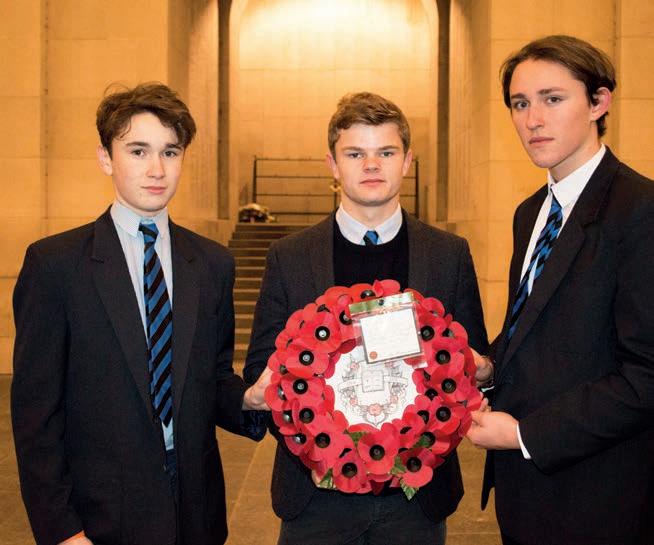
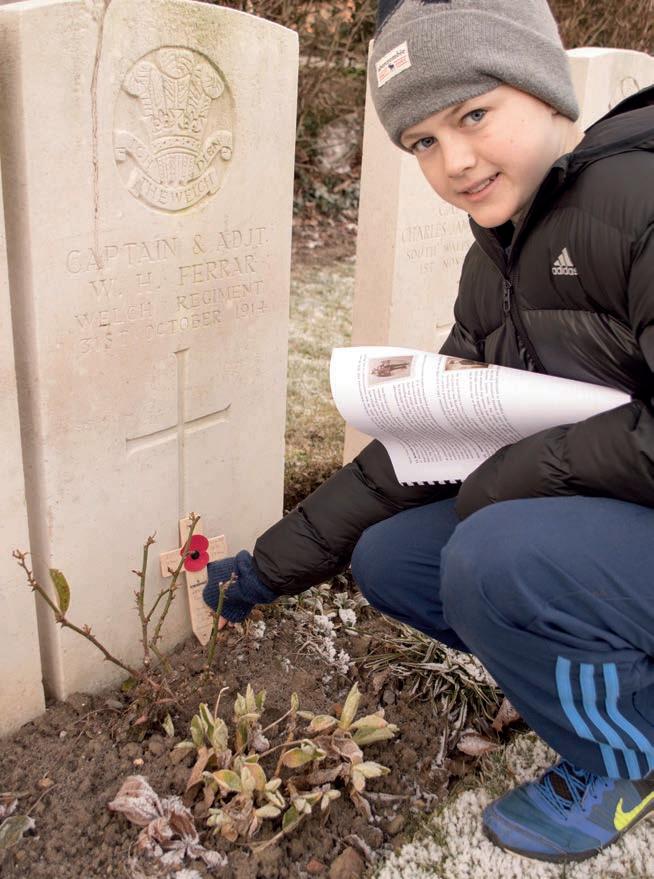
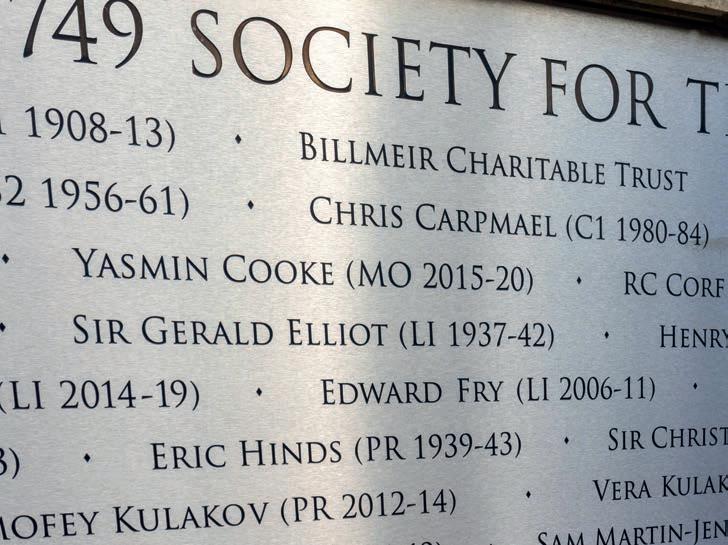
In order for the work to be complete for November 2018, we had to raise £3.5m by April 2017, so that the go ahead could be given for the work to start in the summer. In March we were still half a million short...
A philanthropic parent, who had a matched giving platform for the family charity, suggested we use this to raise the remaining funds. We had never tried anything like this before, but thanks to the generosity of four donors, a matched fund of £250,000 was formed. The idea was to send an email at midday on a Monday, alerting recipients to the fact that every gift they made between then and the following Monday at midday would be matched, until the £250,000 was used. It was organised and I had no idea how it would be received. We hit the ‘send’ button at midday and I, and others in the team, went to Norwood for lunch. After about 30 minutes I noticed from the buzzing of my phone in my pocket that I was receiving quite a few emails so I thought I would take a look. I was overwhelmed by the number of gifts that were already flooding in, from parents and Old Marlburians throughout the world.
By Friday, we were running out of the matched fund, but luckily, we were able to source more and, by the deadline, we had raised over £700,000. It was quite remarkable and we had hit, and ended up exceeding, our target. As it turned out, this was much needed as the initial cost of £5.4m for the project did not cover the actual bill ... no surprise there with an old building!
Anyone who gave £6,000 or more became a member of the 749 Society and their name, or the name of someone else they chose, was engraved on a wall outside the hall. Others have had their names beautifully handwritten in a special commemorative book. It was a remarkable example of the Marlburian community coming together for a building which is truly iconic. Service is one of the core values of the College and this building encapsulates service in its most extreme form. It was an honour to have played a part in helping its restoration.
Jan Perrins, Associate Director Development (2011- )
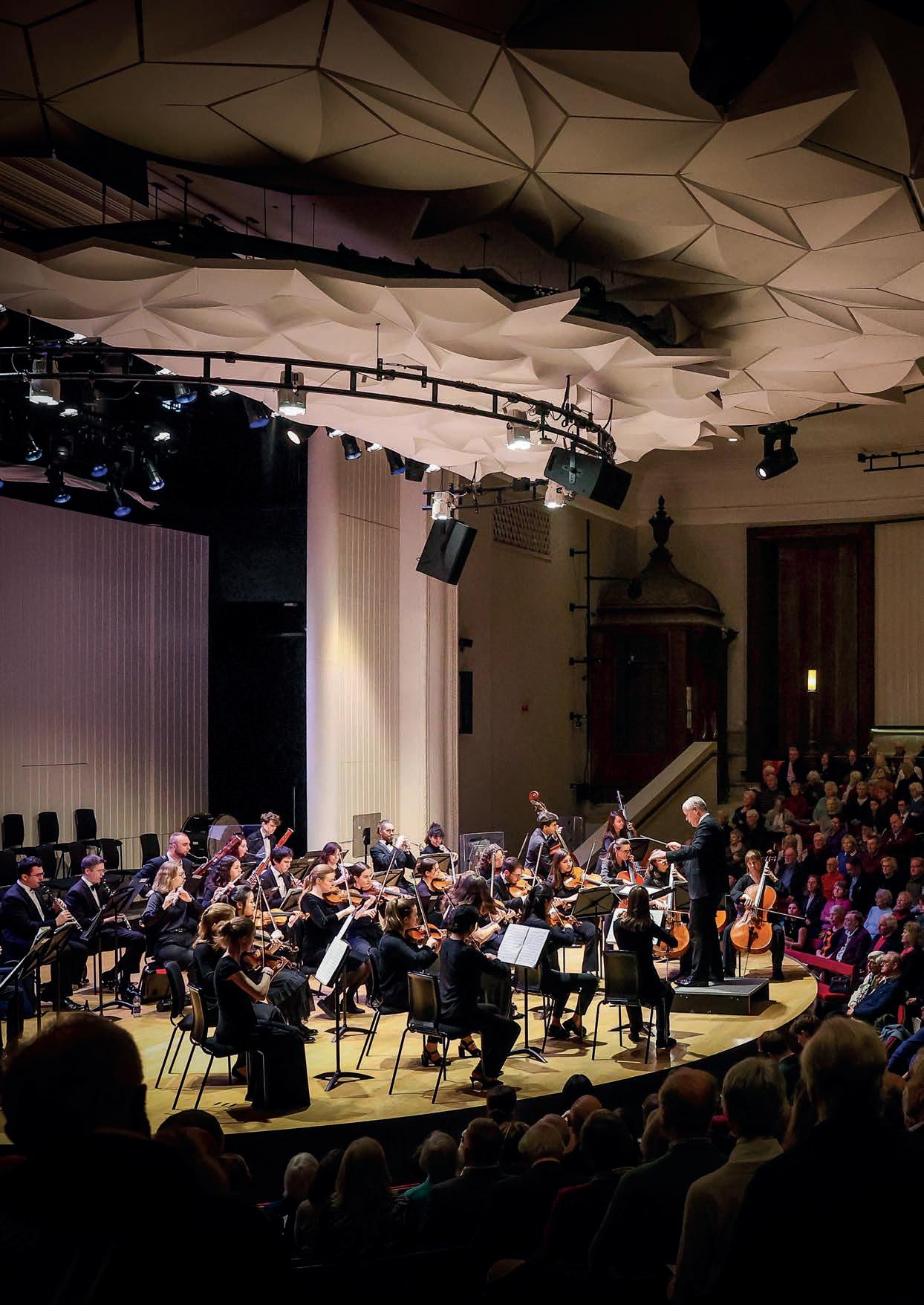
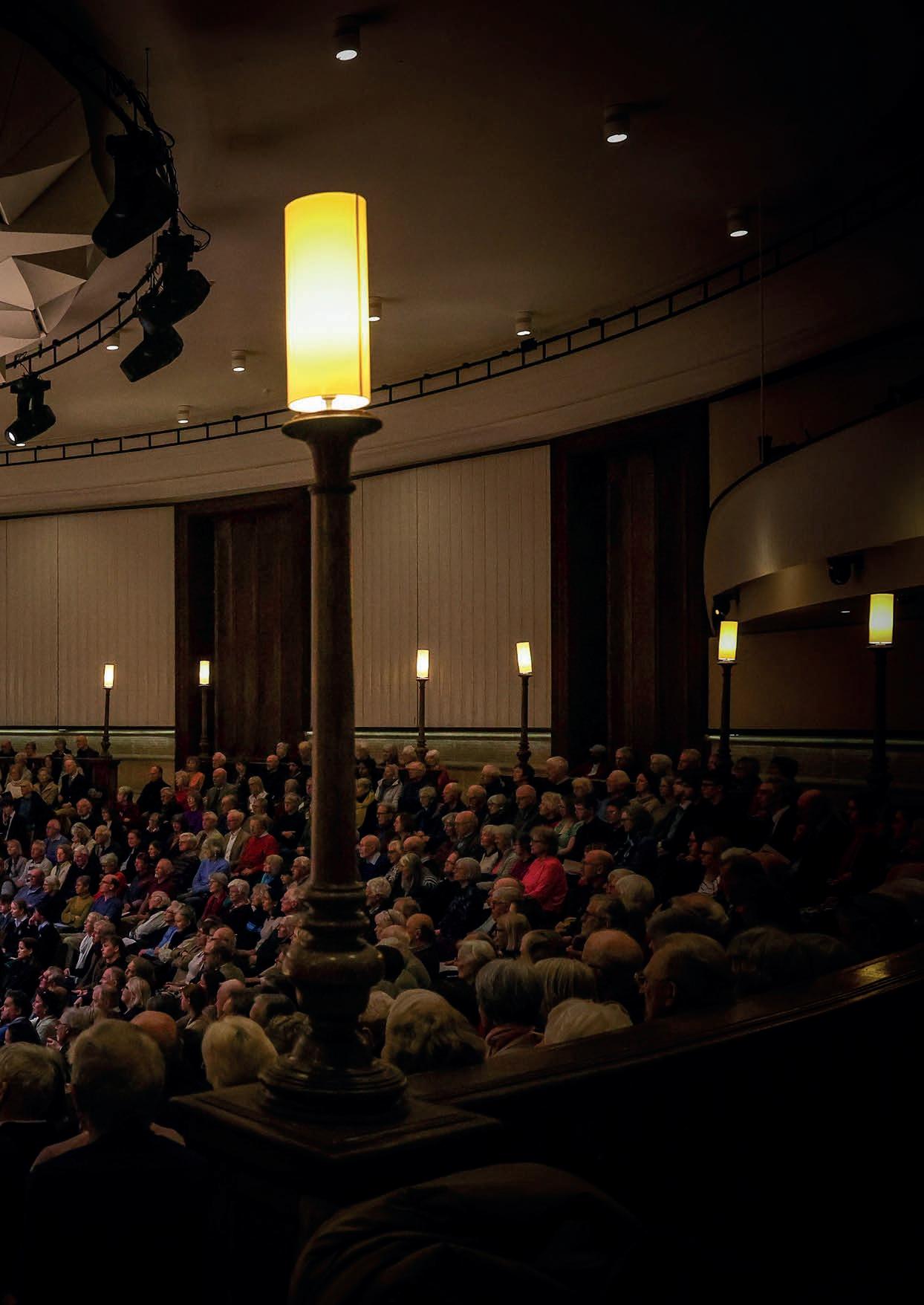
“Our spectacular and precious Memorial Hall” Centenary Celebration Weekend, March 2025
The Opening on 23rd May 1925 began with the service in Chapel at 2pm, after which the congregation proceeded to the Opening Ceremony at the Memorial Hall. Later that day, an evening concert was held in the Hall. From the outset, the association between the Chapel and the Memorial Hall, physically traced by the steps and the brickpaved courtyard, was integral to the concept of the sacred site of memorial.
In recognition of these components, the Centenary Celebration over the weekend of 1st and 2nd March 2025 aimed to draw the Chapel and the Hall together once again, though this time in the reverse order. With the College community of pupils and Common Room, Members of Council, parents and families, Old Marlburians and their families, and friends of the College from near and far invited to come together, significantly the weekend started with the focus on pupils in the Hall, followed by the Hall as a gathering point for the community as a whole, and concluding with pupils and Old Marlburians coming together in Chapel.
The celebration began with a ‘side-by-side’ concert on the evening of Saturday 1st March. Here, the primary spotlight was on the pupils, joined, as for the past 17 years, by young professionals from the College’s Professional Orchestra-inPartnership, Sinfonia Smith Square, and on this occasion by pupils from St John’s and St Mary’s Calne. The culmination of two days of workshops and specialist work under
the guidance of the Sinfonia players, the event was as much about education as performance. The Hall was packed, and the audience was treated to an outstanding level of musicality from all the ensembles and the three soloists. In the programme’s welcome and introduction, Philip Dukes, Artistic Director, wrote of ‘our spectacular and precious Memorial Hall’, and the pupils rose to the occasion magnificently. Once again, as so often over the past hundred years, the Hall showed its special ability to draw out the finest of performances.
Brasser, conducted by Alex Arkwright with leader Freddie Vine, moved from a blaze of colour in John Cacavas’s Days of Glory to the haunting sounds of Mazama , inspired by legends from the Mazama tribe of the American North-West. Chamber Orchestra, under the baton of Sara Stagg, with leaders Idris Scrase and Theo Morgan, introduced the first of the soloists, Theo stepping forward as the violin soloist in ‘Spring’, from Vivaldi’s Four Seasons. The third movement of Gerald Finzi’s Clarinet Concerto, with soloist Freddie Vine (B1 U6), followed. Both soloists played beautifully and with fine technique, finding an excellent balance with the orchestra in the Hall’s sympathetic acoustics.
The final ensemble was Symphony Orchestra, conducted by Philip Dukes and led by Theo Morgan (CO U6). The orchestra filled the stage, its numbers swelled by the visiting professionals. The opener
was a rip-roaring arrangement of Lionel Bart’s Oliver! This was a tour de force, full of rhythmic precision and with each section of the orchestra offering (in the spirit of the story) more nourishment than the audience had a right to expect – sparkling percussion work, fine brass playing, beautiful woodwind solos and a splendidly warm string tone. Quite the feast! To conclude the concert, Elliot Ransome (C1 U6) was the outstanding soloist, playing the first movement of Rachmaninoff’s Second Piano Concerto from memory, and earning a thoroughly well-deserved standing ovation.
After the previous evening’s focus on the pupils, attention turned the next day, Sunday 2nd March, to the two further celebratory events, each of which held resonances of the opening of the hall a century earlier. The afternoon concert given by the full Sinfonia Smith Square orchestra at 3pm drew a packed Hall as the very best of professional musicianship performed one of the year’s Marlborough College Concert Series concerts. With their resident conductor, Simon Over, indisposed, two members of the College’s Music Department, Alex Arkwright (CR 1995- ) and Adam Meehan-Staines (CR 2014- ), stepped in as guest conductors. After Mendelssohn’s Overture to A Midsummer Night’s Dream, the programme moved to Vaughan Williams’s suite Flos Campi, with the orchestra joined by viola soloist Philip Dukes and the College’s own Schola Cantorum. The warm, rich sounds of the viola solo standing out against the orchestra and the
wordless chorus captured the bold and unusual sonorities of the work. Composed a century ago while Vaughan Williams was holidaying a few miles away in Oare, Flos Campi was an ideal choice for this concert, a perfect recollection of a century of artistic achievement in this venue. The concert closed with the extraordinary rhythmic dynamism of Beethoven’s Seventh Symphony, an outpouring of boundless energy appropriately marking 100 years of performance, of educational speech and presentation, of community assembly, celebration and, on occasions, memorial.
Introducing the concert, the Master, Louise Moelwyn-Hughes (Master 2018- ), welcomed all to the College and extended a particular welcome to the Chair of Council, Heidi Venamore PSM, and from Sinfonia Smith Square the Chair of Trustees, Dr Tracy Long, and the Head of Audiences and Communication, Jo Duggan. She thanked the Concert Series sponsors, and particularly the Lead Sponsors, the Partners of the Merriman Partnership. Reflecting on the programme, she recalled her own experience of learning the viola and of being given a recording of Flos Campi at the age of 14. Having enjoyed the work ever since, she was particularly pleased that it should feature at the heart of the Centenary Celebration concert. In a final connection, the Master was delighted to note that Nick Gordon (CR 2007- ), Marlborough’s Head of English, and his family now live in the very house where Vaughan Williams composed Flos Campi a century ago.
Little more than an hour after the concert audience had departed, the centenary celebration moved to the Chapel, where the Opening had begun 100 years before. For the service of Choral Evensong at 6.30pm, led by the Senior Chaplain, Revd Tim Novis, the Chapel Choir was joined by the Old Marlburian Choir. Directed by music beak Jonathan Cox (CR 2021- ), and accompanied by College Organist Michael Butterfield (CR 2020- ), the combined resources of some 70 singers fittingly encompassed the same number of years of choral music in the Chapel, with Old Marlburian representation back to the mid-1950s.
The 500-strong congregation of Old Marlburians and guests alongside many members of the school and Common Room was welcomed by Assistant to the Chaplain, Josh Lynbeck (CR 2021- ). Covering different periods of Anglican choral singing, the choice of music included Byrd’s Preces and Responses, verses from Psalm 107 (sung to a chant composed by the Director of Chapel Music, Adam Meehan-Staines) and Stanford’s Evening Service in C. The lessons were read by the Chapel Prefects, Aiden Konneh (C3 U6) and Emily Betts (MO U6). Then, following the second set of responses, the anthem, Balfour Gardiner’s Evening Hymn, filled the Chapel before melting away into evening silence.
The visiting preacher, Revd Canon Anna Macham, Precentor of Salisbury Cathedral, spoke in her homily not only of the power of place and music in such a Chapel and on
such an occasion to inspire prayer, but also of the power of silence and isolation to enable all to seek and find God. Looking ahead to Ash Wednesday and the beginning of Lent falling in the week after the service, she reminded the congregation of Christ’s forty days and nights in the wilderness and pointed to the power of personal time “in the wilderness”, away from distractions, to allow for a period of reflection – reflection that for many at the service will have turned to the 749 Marlburians who died in the First World War and those who died in more recent conflicts, making a touching moment of private memorial.
The service concluded with the hymn The day Thou gavest, Lord, is ended, after which Michael Butterfield’s final voluntary was Marcel Dupré’s Placare Christe servulis from Le Tombeau de Titelouze. As the Old Marlburians moved to the Garnett Room for a warmly enjoyed drinks reception and the school moved, possibly slightly less eagerly, back to House and to prep, the applause for Mr Butterfield’s playing fittingly rounded off a memorable weekend of celebration, in which young and a little less young had come together with the highest levels of music making to honour both the original conception all those years ago and the first hundred years of “our spectacular and precious Memorial Hall”.
Andrew Brown (CR 1981-20)

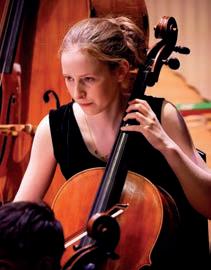
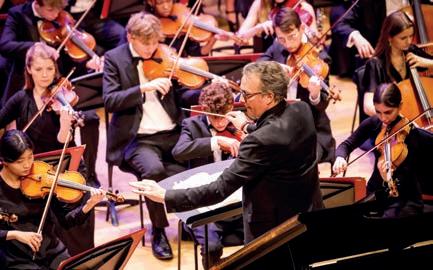
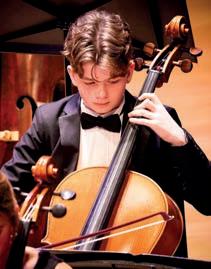
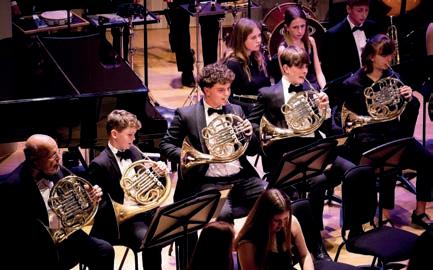
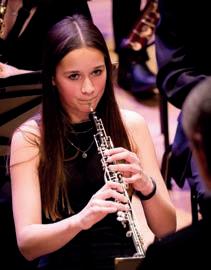
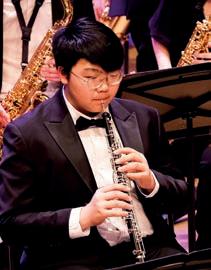
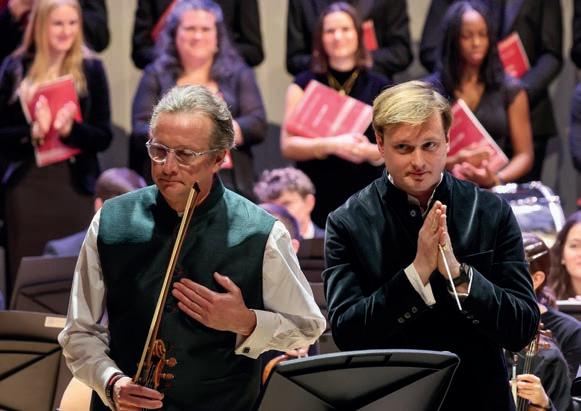
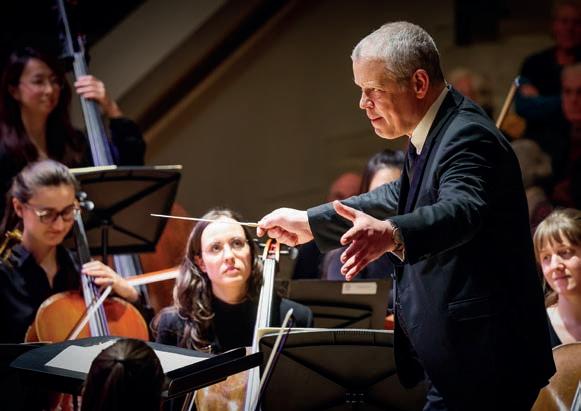

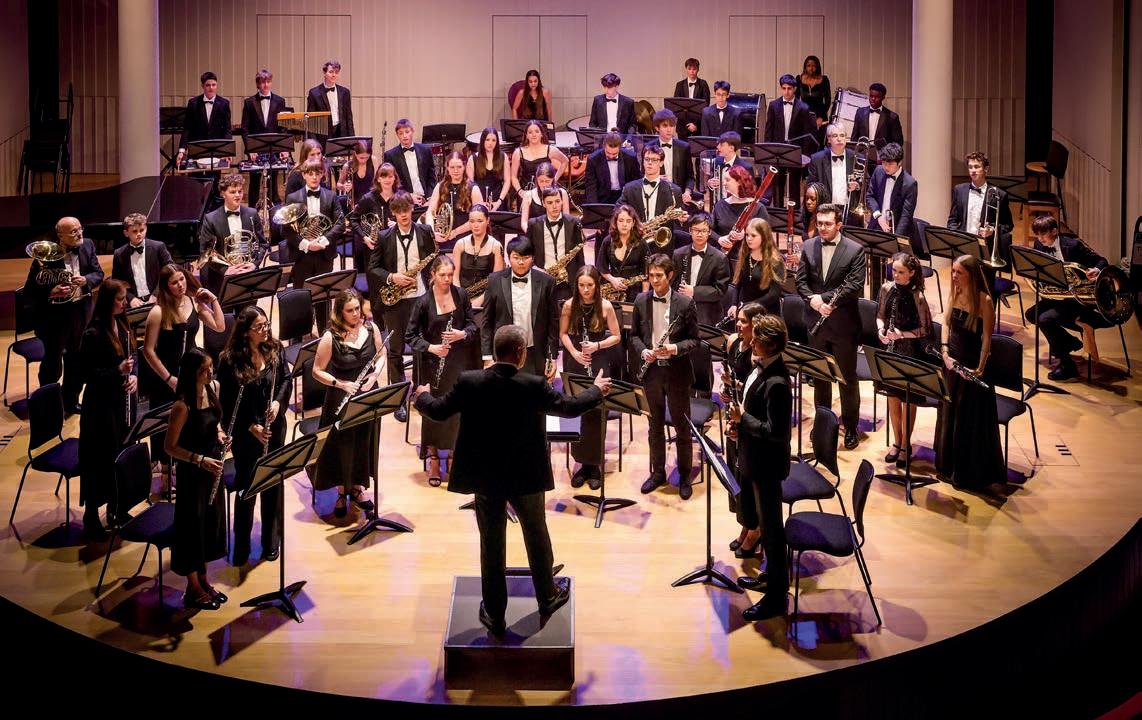
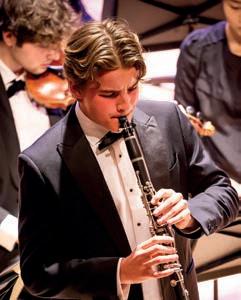
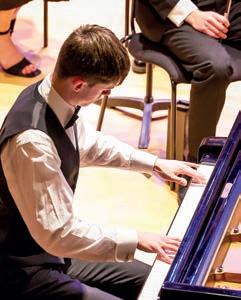

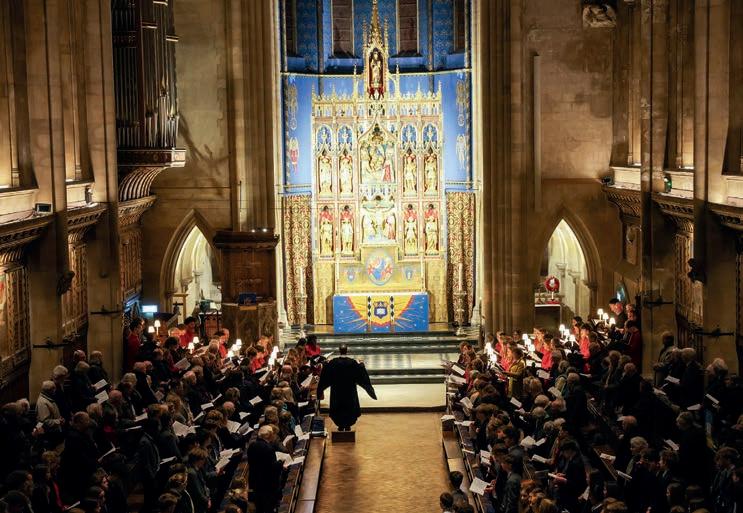
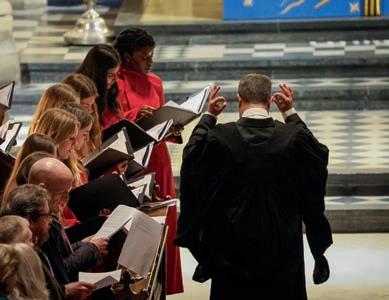
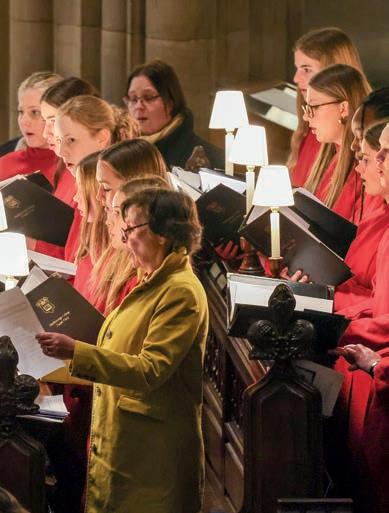
With grateful thanks to the memorial contributors: David Du Croz, Dr Niall Hamilton, Dr Simon McKeown, Nick Gordon and Andrew Brown
With grateful thanks to the music contributors: Ian Crabbe, Jane Darby, Philip Dukes, Adrian Eales, Richard Harman, Sacha Johnson, Robin Kellow, Adrian Leang, John McNamara, Robin Nelson, Christopher Rathbone and Tim Ridley
With grateful thanks to the drama contributors: Richard Lamont, Richard Shirley Smith and John McNamara
With grateful thanks to the restoration contributors: Jonathan Leigh, Jan Perrins and Tania Freeman
With grateful thanks to the Master, Louise Moelwyn-Hughes; the College Archivist, Grainne Lenehan; and the Bursar, Arnold Flanagan.
Photography: Pete Davies –Marlborough Photo
Additional Photography: Getty images, Andy Matthews, Ian Leonard, Ayre Chamberlain Gaunt (Jim Stephenson 2019) Mem Hall restoration photos
Design: Matt Barrett (pixelcollab.co.uk)
Project Managers: Jackie Jordan and Jane Green
Photo research: Jane Green
Simon McKeown wishes to thank Hannah Gallagher of Belfast City Hall Art Collections and Nicola McConnell of the Dorset History Centre, Dorchester.
P. Tortelier, ‘A Self-Portrait – In Conversation with David Blum. (William Heinemann, 1984)
D. Braddell, ‘Marlborough College War Memorial. Designed by W. G. Newton’, The Architectural Review (June 1925)
A. de Candole. The Faith of a Subaltern. Essays on Religion and Life (Cambridge University Press, 1919)
B. Cherry and J. Newman, Nikolaus Pevsner. The Best Buildings of England (Viking, 1986)
‘Illustrations: Marlborough College War Memorial’. The Builder (April 1921)
S. Sassoon. Counter-Attack and Other Poems (Heinemann, 1918)
Marlborough in old photographs : a second selection –collected by Pamela Colman (1990).
Copyright Siegfried Sassoon by kind permission of the Estate of George Sassoon. We have taken all possible care to trace the copyright of all the pieces reprinted in this publication, and to make acknowledgement of their use.
If any errors have accidentally occurred we will be happy to acknowledge copyright if this is brought to our attention.
Photo of Arthur, Duke of Connaught reproduced with kind permission from the National Portrait Gallery
Photos from The Celebration of the Individual (1989) kindly provided by Sam Frost
Photos from the Castle of Perseverance (1991) kindly provided by Sam Frost
Photos from Guys and Dolls (1985) kindly provided by Adrian Leang
Photos from Hamlet (1969) kindly provided by Richard Shirley Smith
Photos from past editions of The Marlburian Magazine
Michaelmas 1982 B3 House Shout
Summer 1983 Oh what a lovely war
Lent 1989 Toby Grafftey-Smith playing to a Lower School assembly
Lent 1990 Brasser playing in Mem Hall (conducted by Bob Peel)
1991 Anything Goes
1997 E lmhurst House Shout (Catherine Middleton)
1997 House Shout
1997 C elebration of the Individual
2002 Jesus Christ Superstar
2005 Grease
2007 I lumination: Lily Hastings Bass
2008 West Side Story
Marlborough College Bath Road, Marlborough, Wiltshire SN8 1PA www.marlboroughcollege.org
